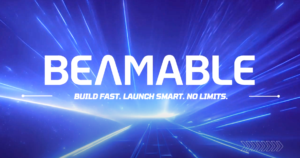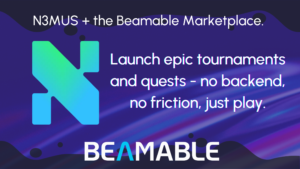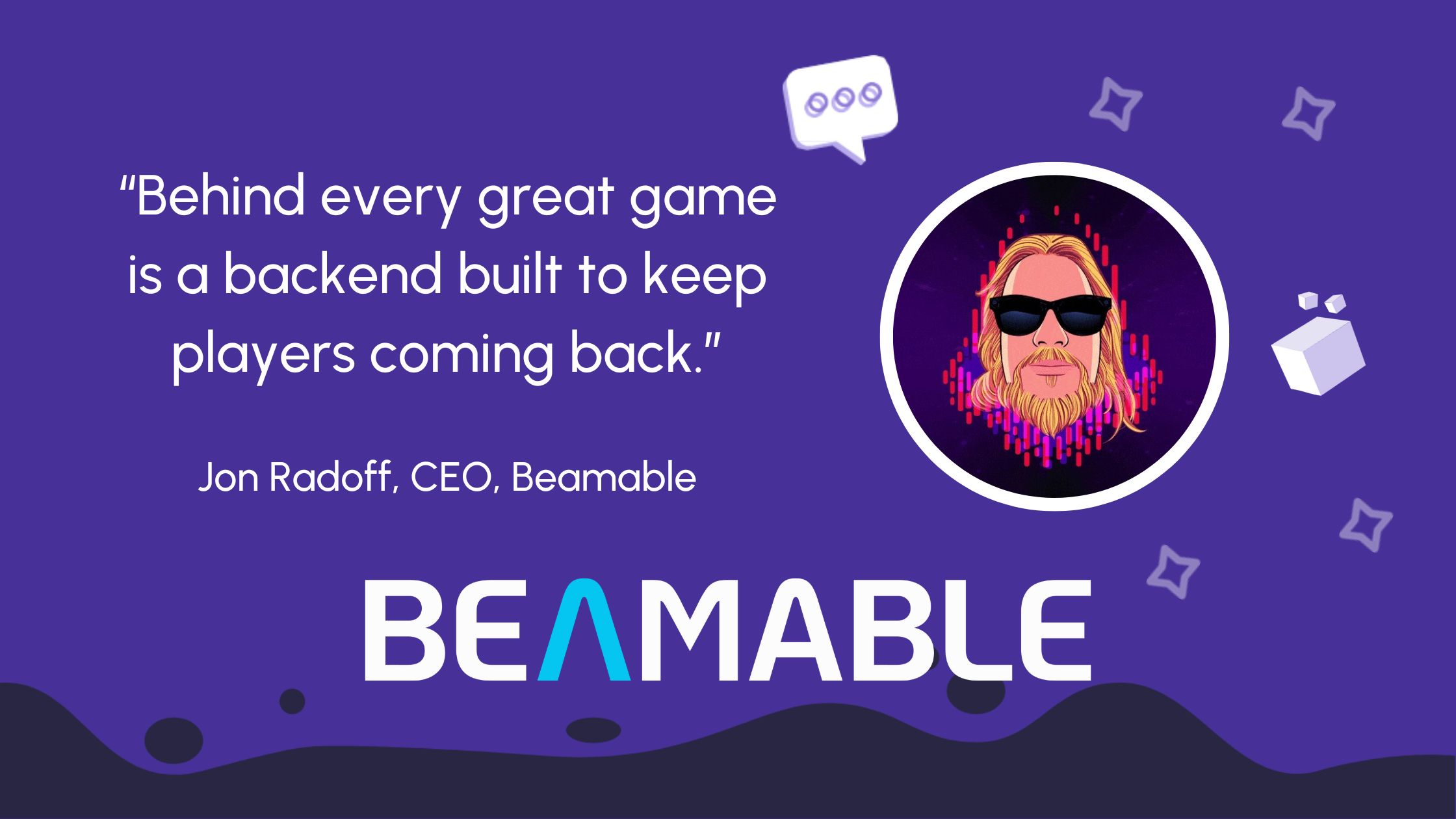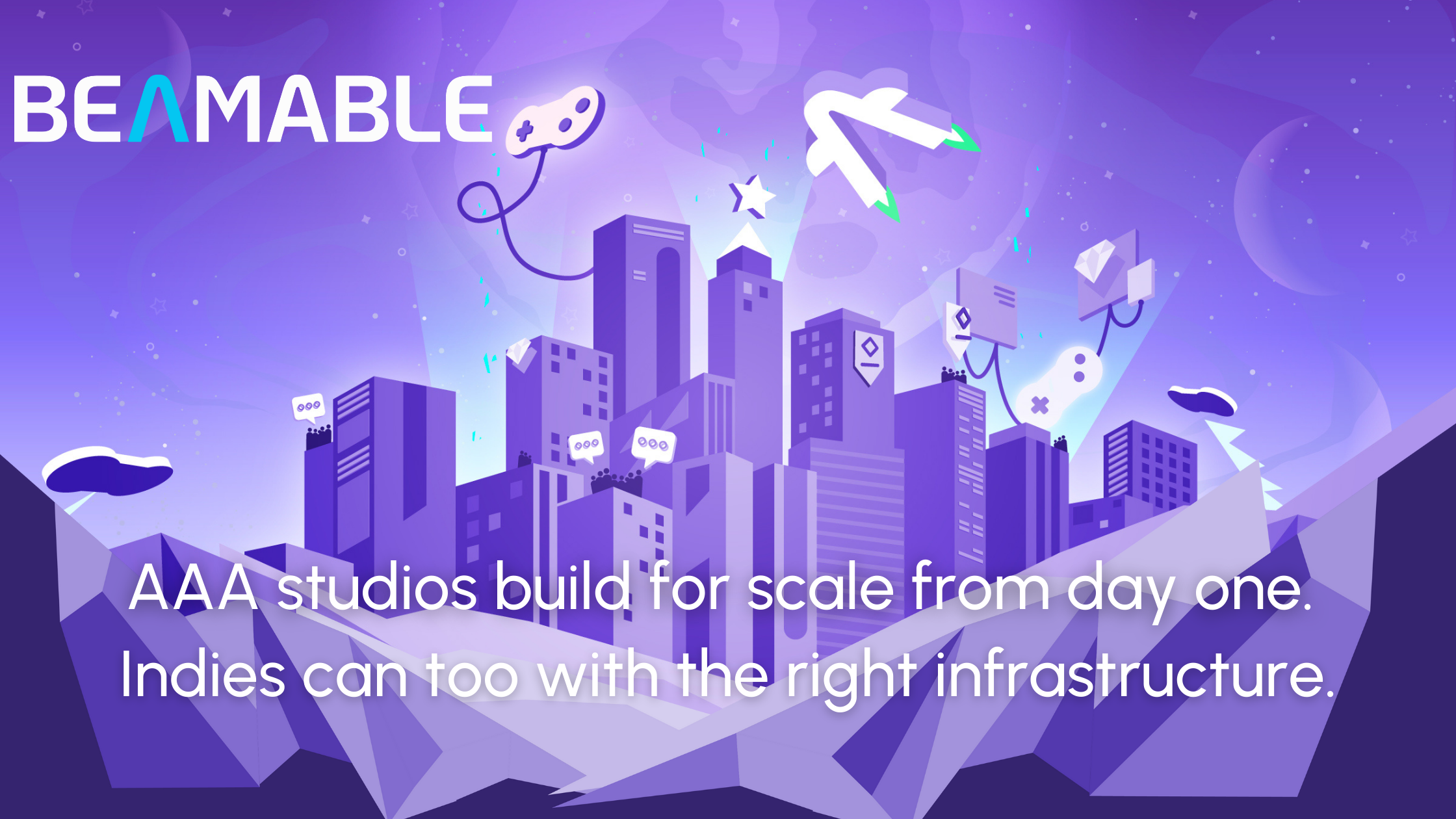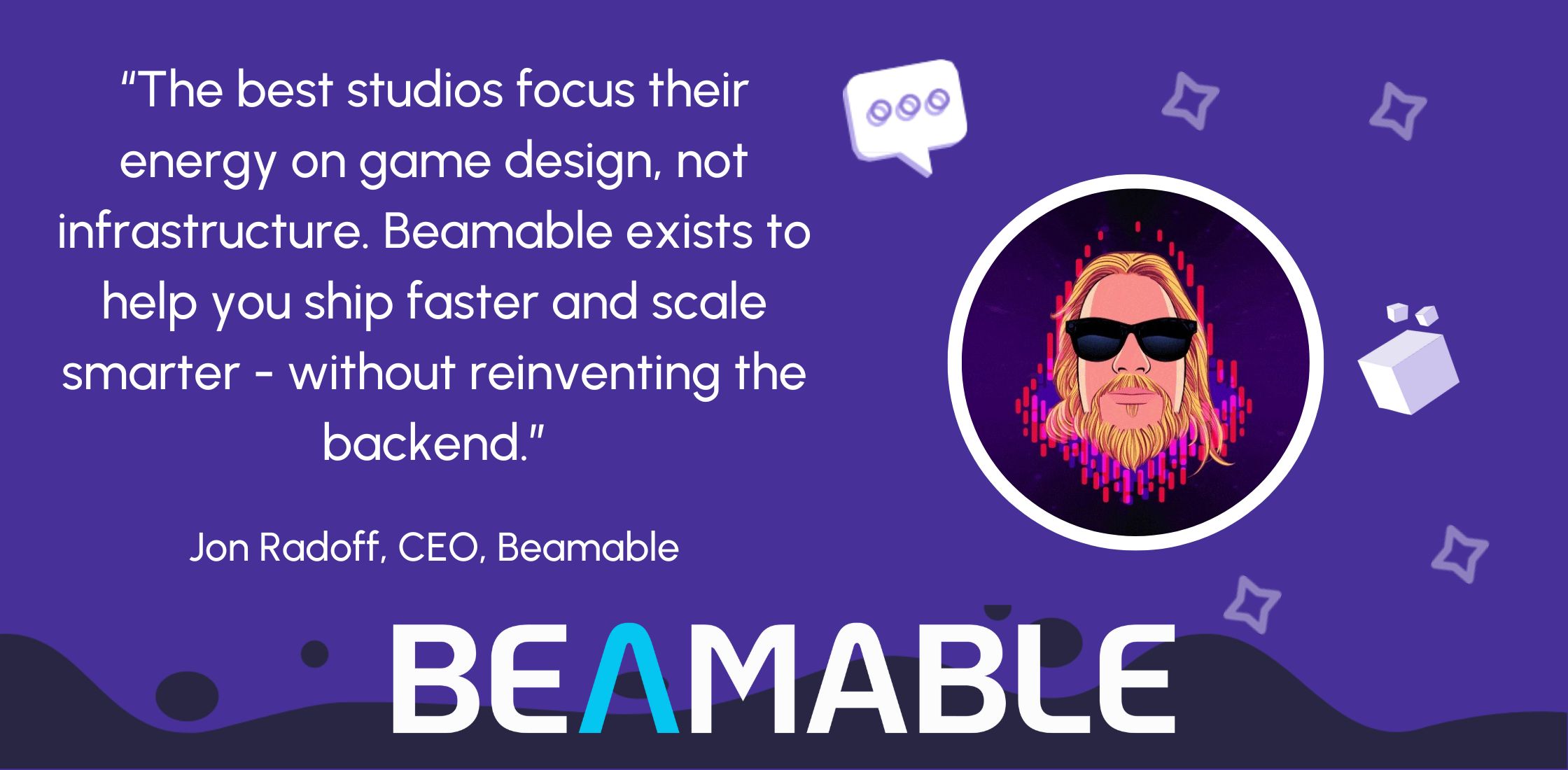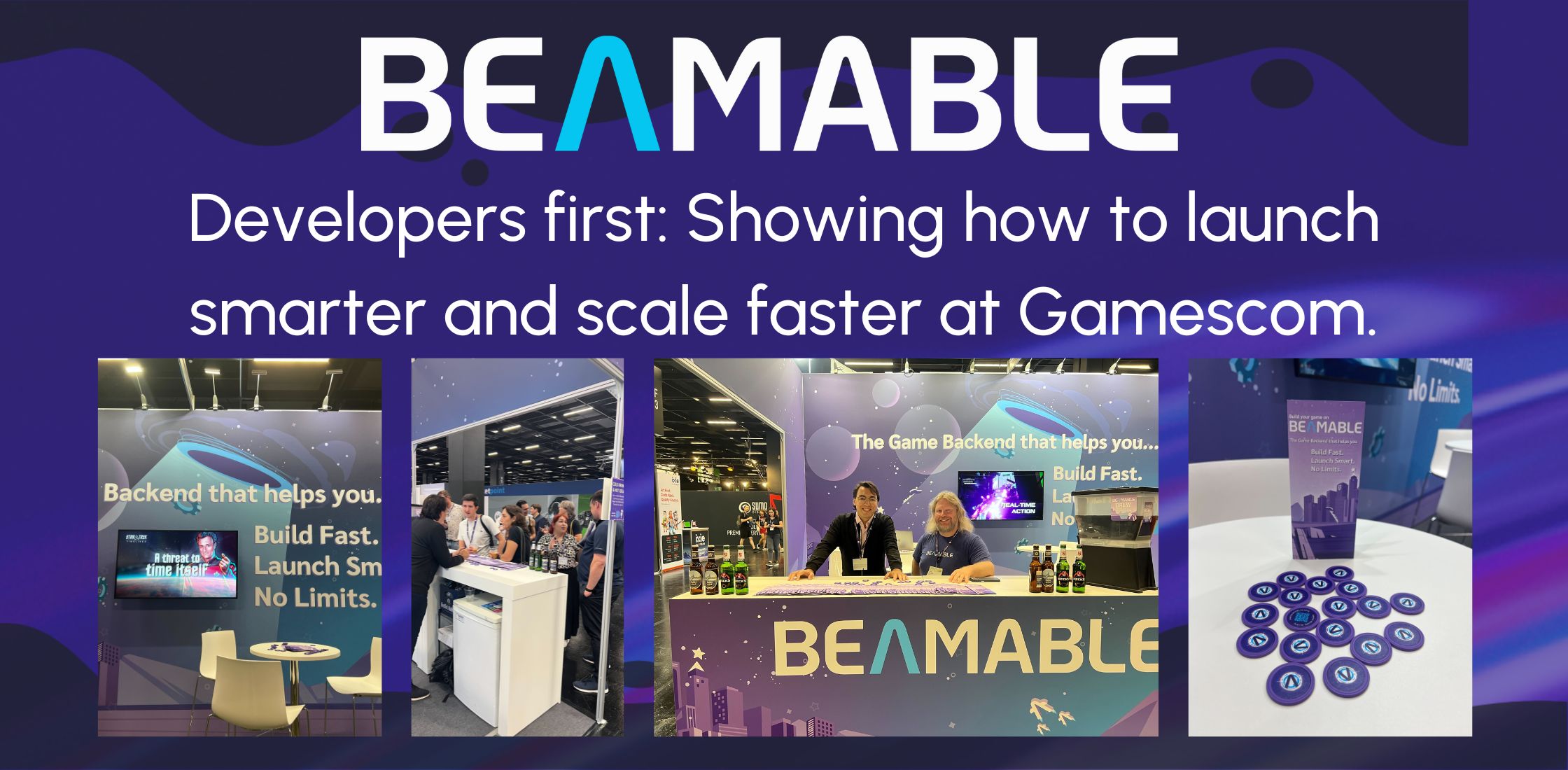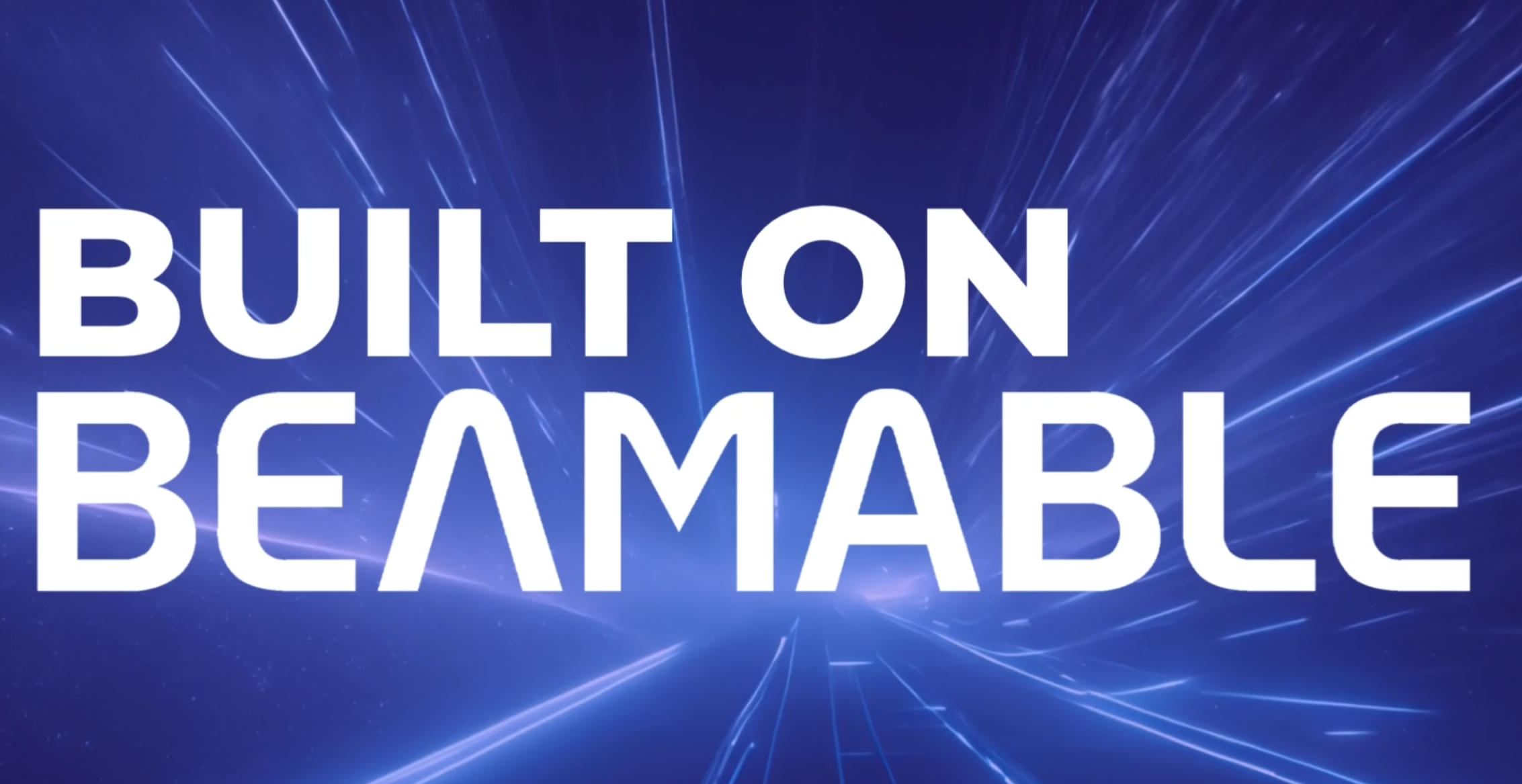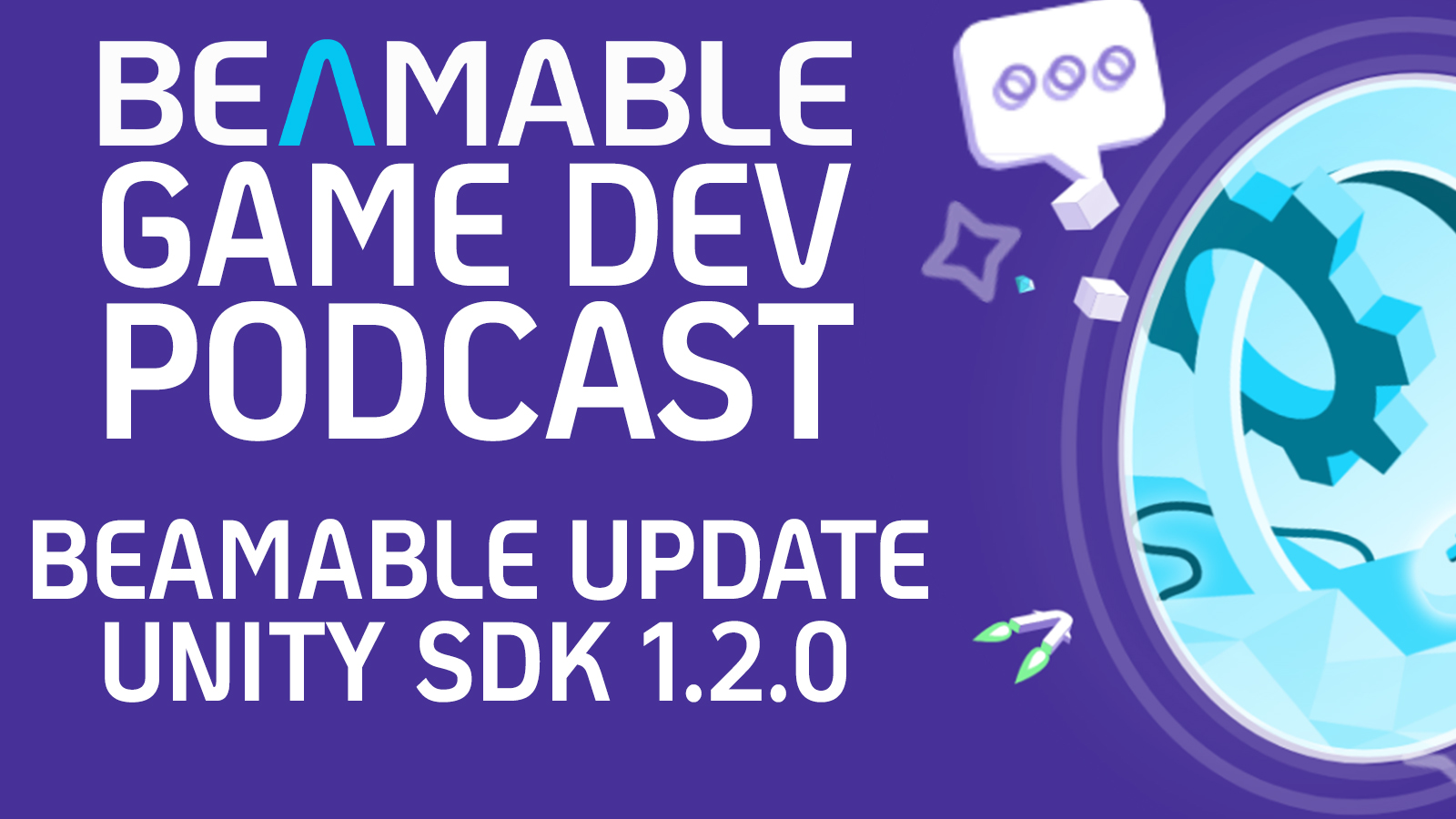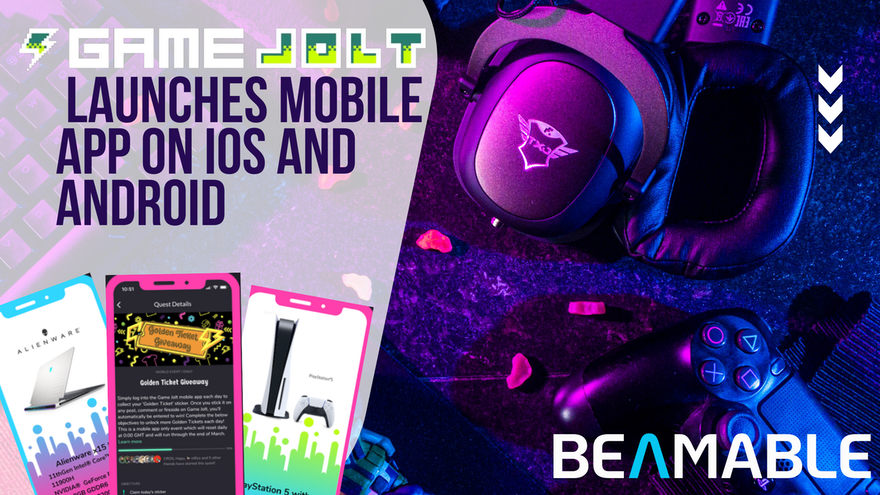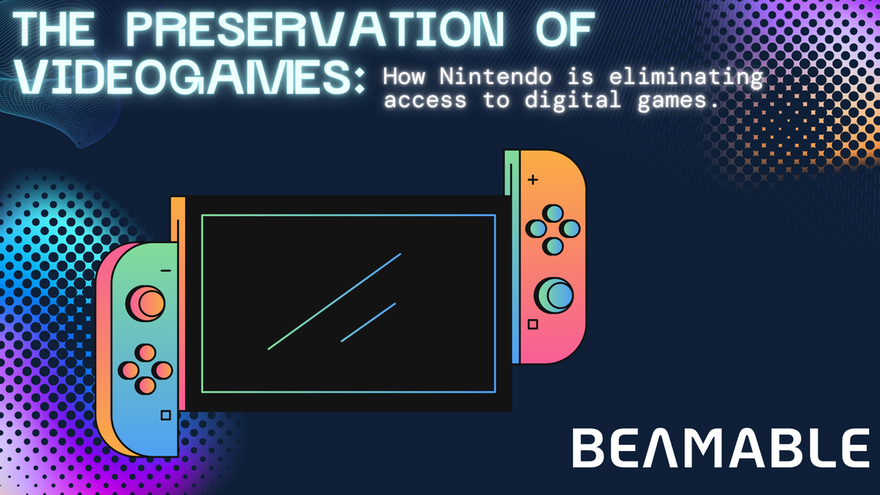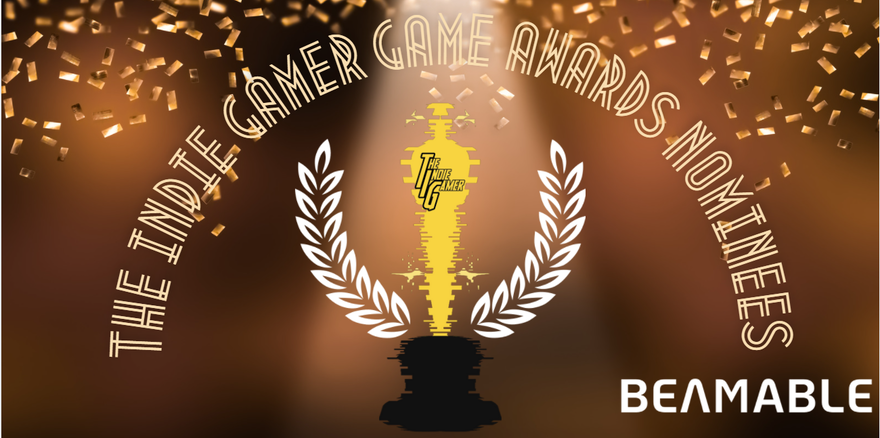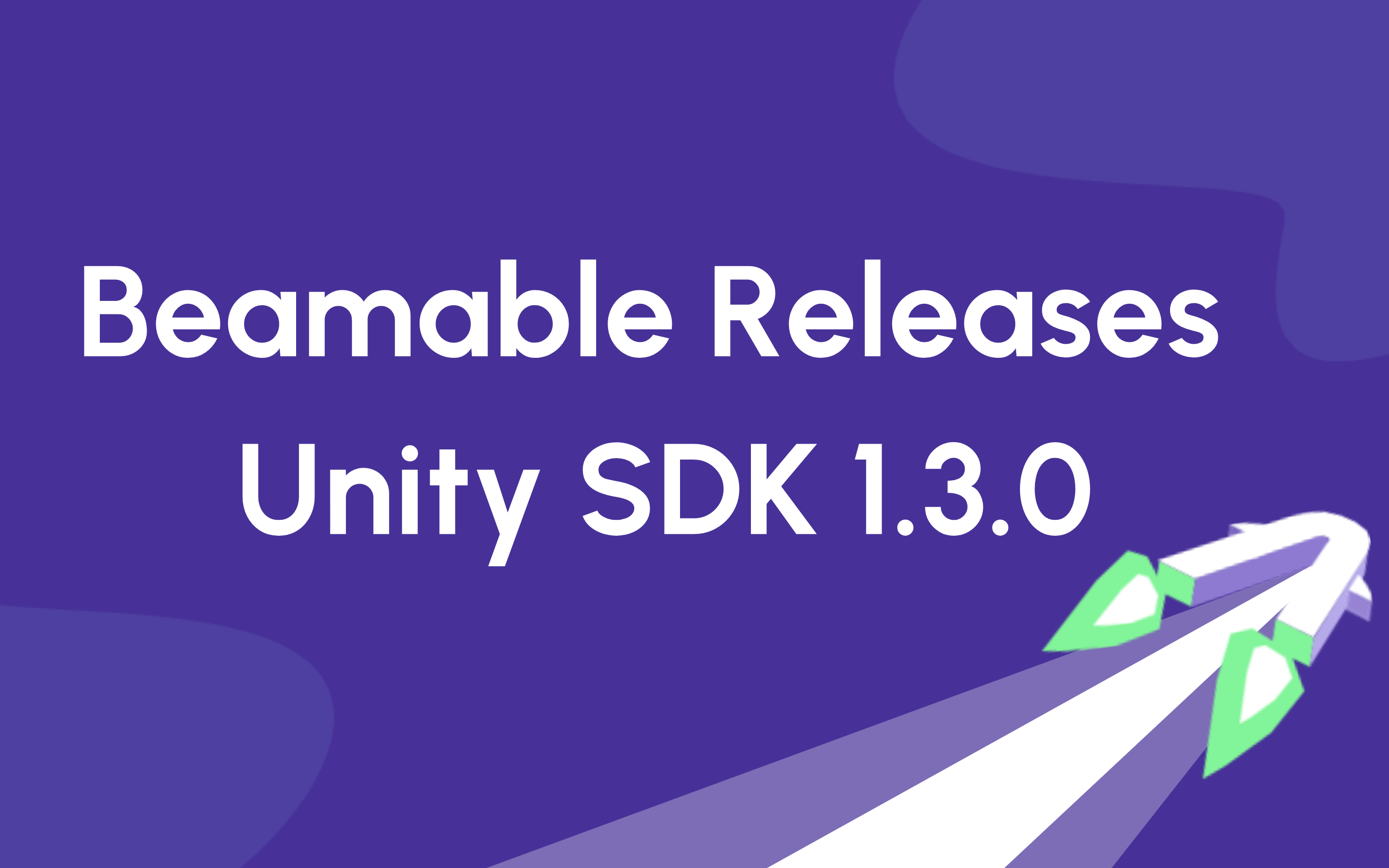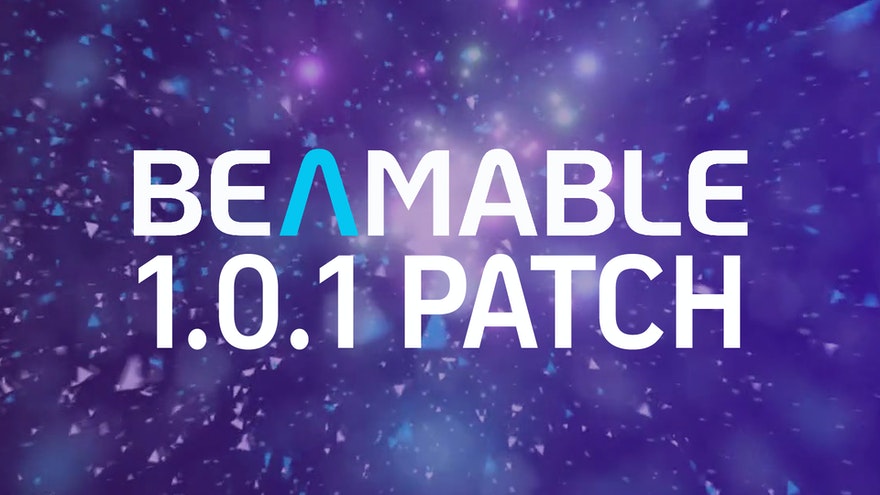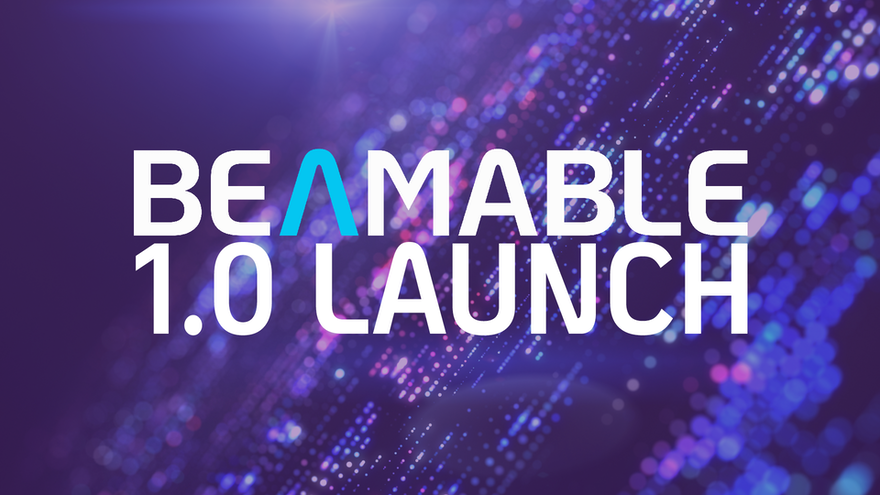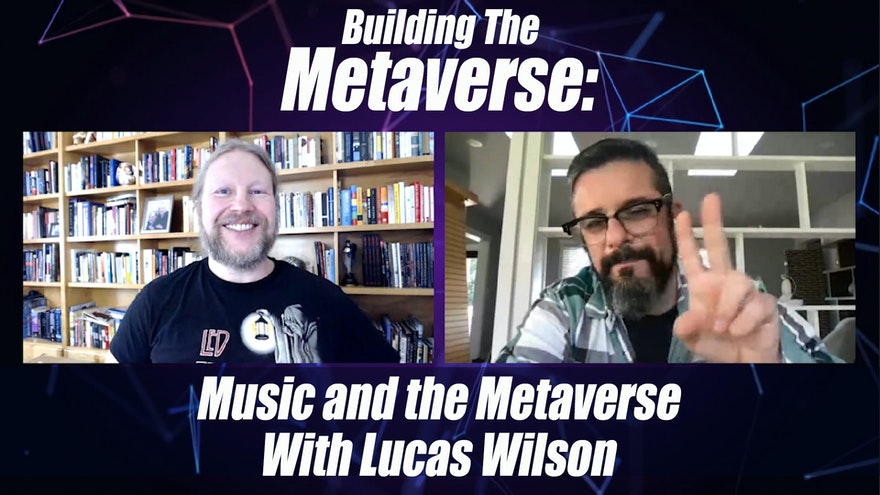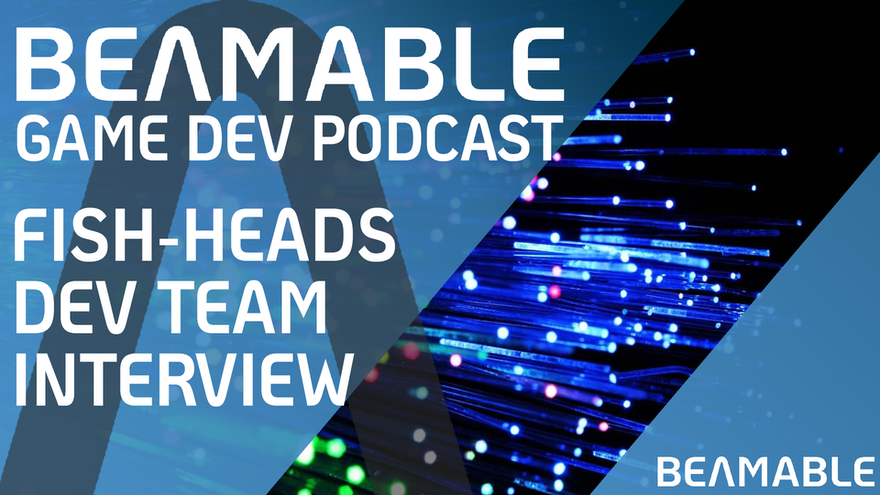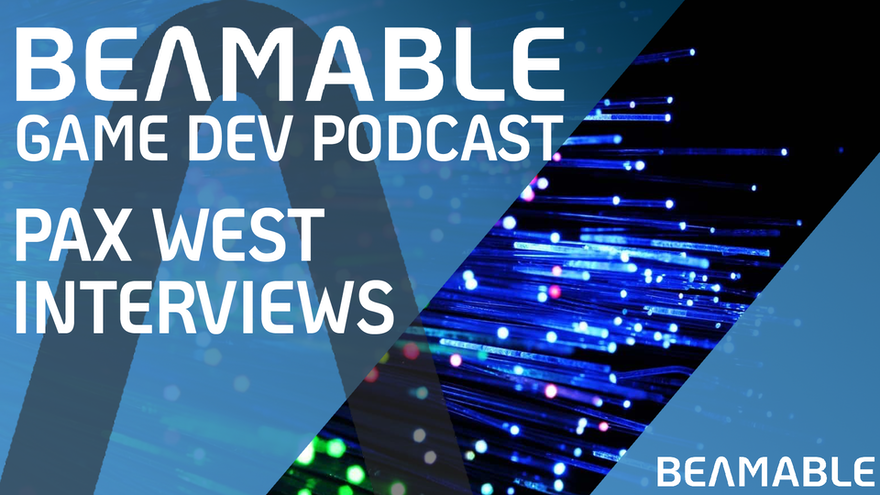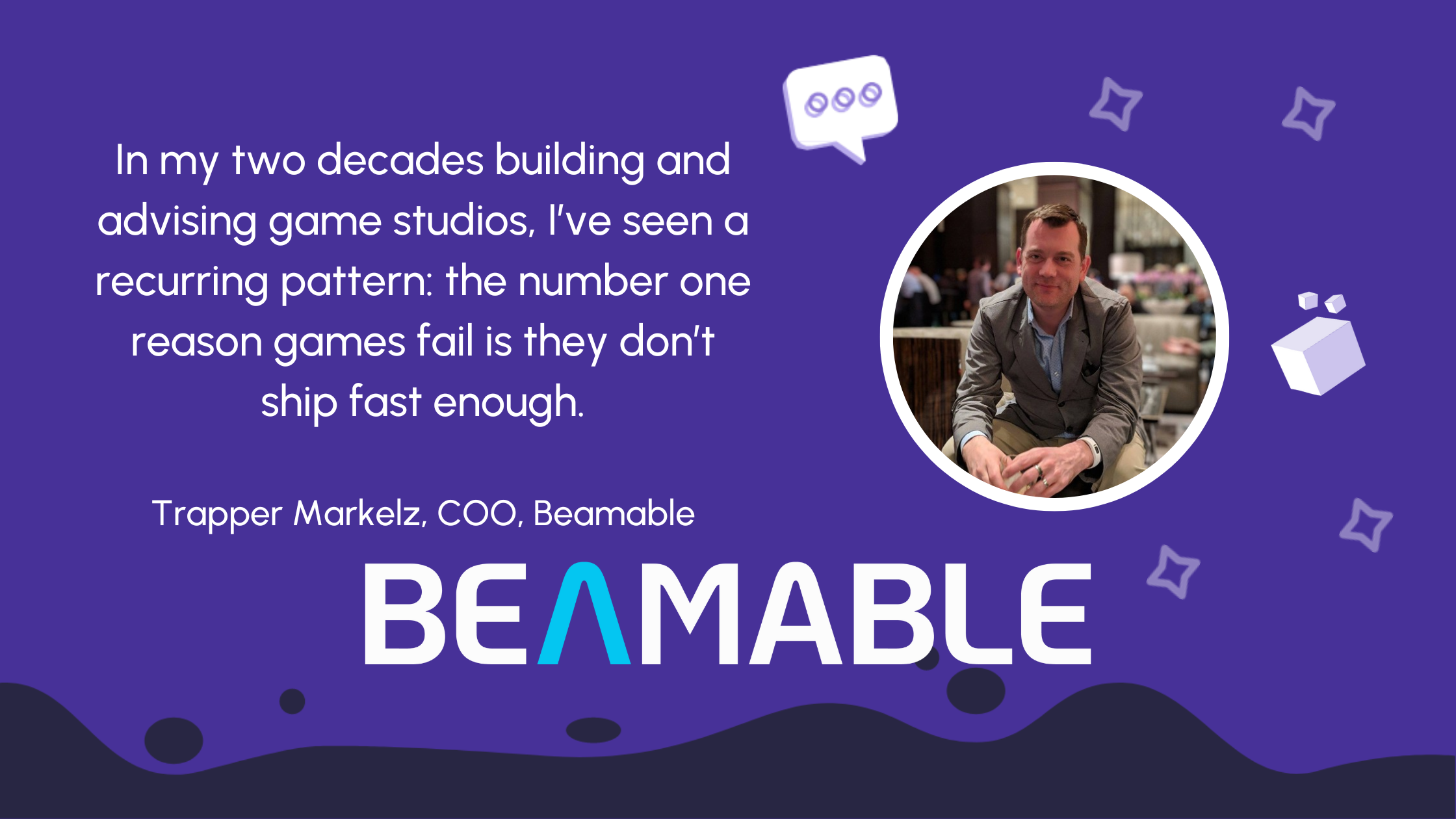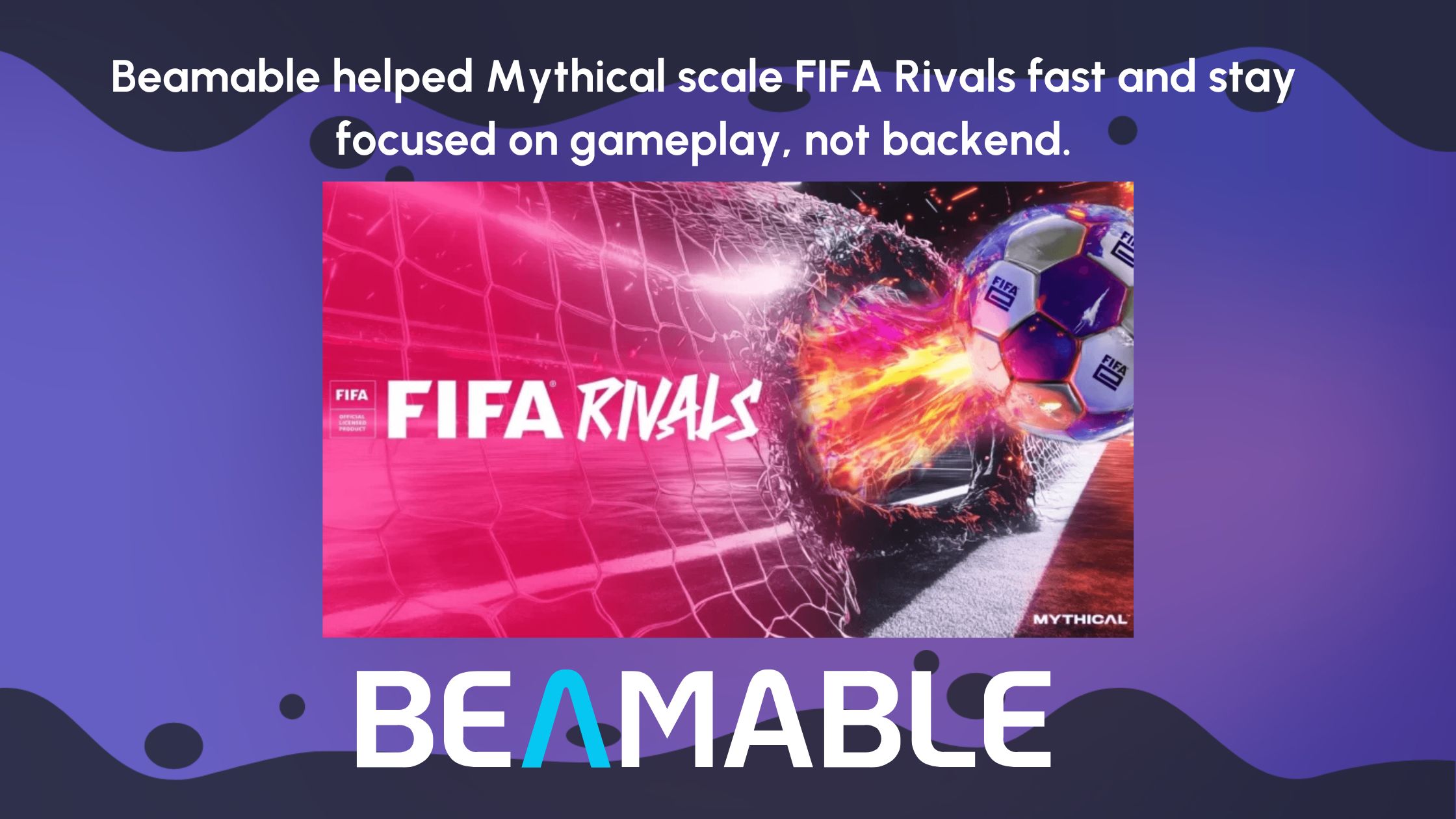Category: Blog

Game Engines to Help You Make Games Faster
At Beamable, we are committed to helping game makers achieve their creative ambitions and rapidly add the features and content to their games that will help them be commercially successful. We aren’t the only ones with that mission. There is an entire universe of committed game engine and tool developers waking up every day to make it easier to create games. Here is an alphabetical list of game engines to help you find the right one to build your dream.
This is not an exhaustive list. If you have a game engine that you know is missing, please put it in the comments or contact us about it and we will have it added to this list!
Updated: May 2021
Index
- AppGameKit – https://www.appgamekit.com/
- BablyonJS – https://www.babylonjs.com/
- Buildbox – https://www.buildbox.com/
- Coco Creator – https://www.cocos.com/en/creator
- Construct – https://www.construct.net/en
- Corona SDK – https://coronalabs.com/
- CraftyJS – http://craftyjs.com/
- CryEngine – https://www.cryengine.com/
- Clickteam Fusion – https://www.clickteam.com/clickteam-fusion-2-5
- Fancade – https://www.fancade.com/
- Felgo – https://felgo.com/
- FlatRedBall – http://flatredball.com/
- Flowlab – https://flowlab.io/
- Gamefroot – https://make.gamefroot.com/
- GameMaker – https://www.yoyogames.com/gamemaker
- Gamesalad – https://gamesalad.com/
- GDevelop – https://gdevelop-app.com/
- Godot – https://godotengine.org/
- IdleGameMaker – http://orteil.dashnet.org/igm/
- jMonkeyEngine – https://jmonkeyengine.org/
- LibGDX – https://libgdx.badlogicgames.com/
- Lumberyard – https://aws.amazon.com/lumberyard/
- MelonJS – http://melonjs.org/
- microStudio – https://microstudio.dev
- MonoGame – https://www.monogame.net/
- OGRE3D – https://www.ogre3d.org/
- Panda 3D – https://www.panda3d.org/
- Phaser – https://phaser.io/
- PixiJS – https://www.pixijs.com/
- PlayCanvas – https://playcanvas.com/
- RPG Maker – https://www.rpgmakerweb.com/
- Smile Game Builder – https://store.steampowered.com/app/483950/SMILE_GAME_BUILDER/
- Spring Engine – https://springrts.com/
- SpriteKit – https://developer.apple.com/spritekit/
- StageJS – http://piqnt.com/stage.js/
- Twine – https://twinery.org/
- Unity – https://unity.com/
- Unreal Engine – https://www.unrealengine.com/en-US/
- Urho3D – https://urho3d.github.io/
Details
App Game Kit – https://www.appgamekit.com/

AppGameKit is an easy to learn game development engine, ideal for Beginners, Hobbyists & Indie developers. Now anyone can quickly code and build apps for multiple platforms using AppGameKit – have your demos and games up and running on mobile devices
BabylonJS – https://www.babylonjs.com/
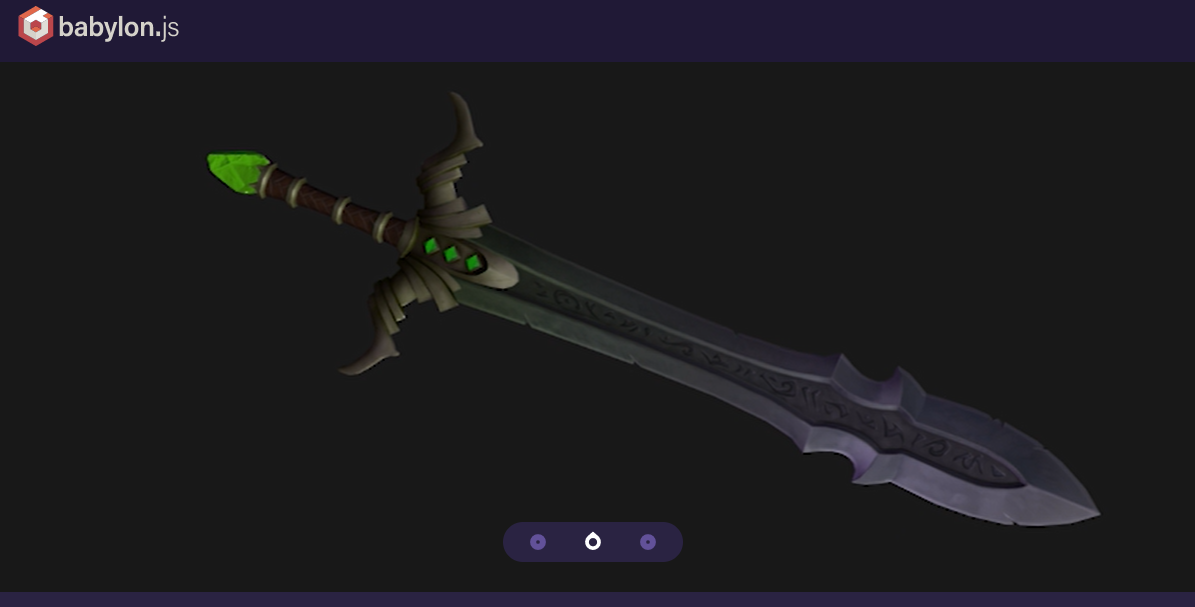
Babylon’s mission is to create one of the most powerful, beautiful, and simple Web rendering engines in the world. Their passion is to make it completely open and free for everyone.
BuildBox – https://www.buildbox.com/
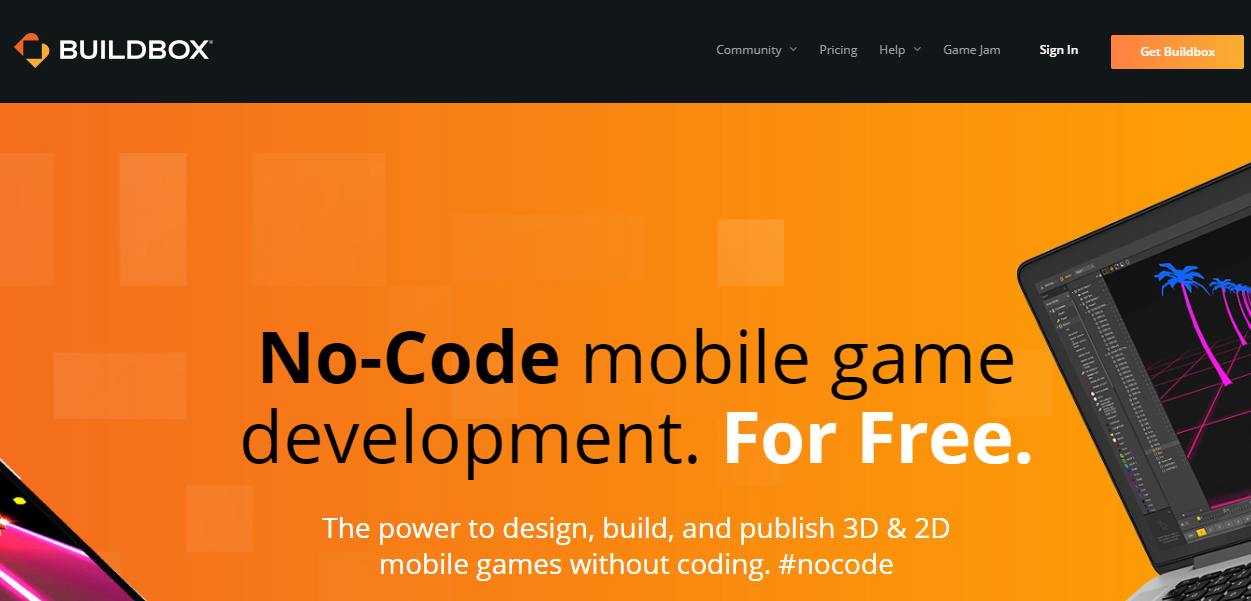
No-Code mobile game development. For Free. The power to design, build, and publish 3D & 2D
mobile games without coding.
Coco Creator – https://www.cocos.com/en/creator
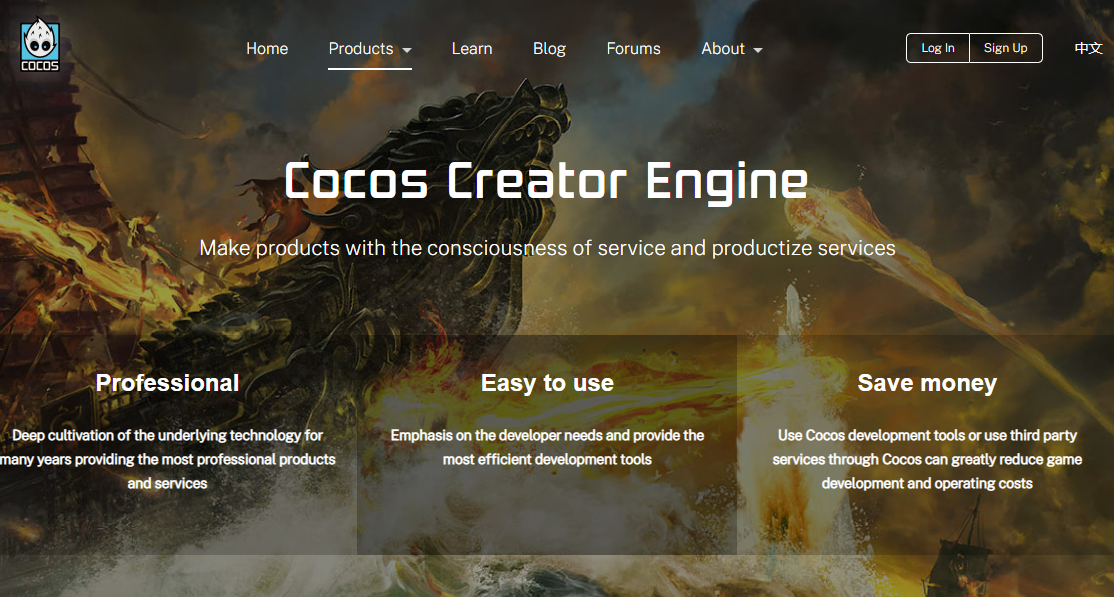
Cocos Creator is a script development, entity-component, and data-driven game development tool focused on content creation. It comes with an easy-to-follow content production workflow and a powerful suite of developer tools for game logic and high-performance game creation.
Construct – https://www.construct.net/en
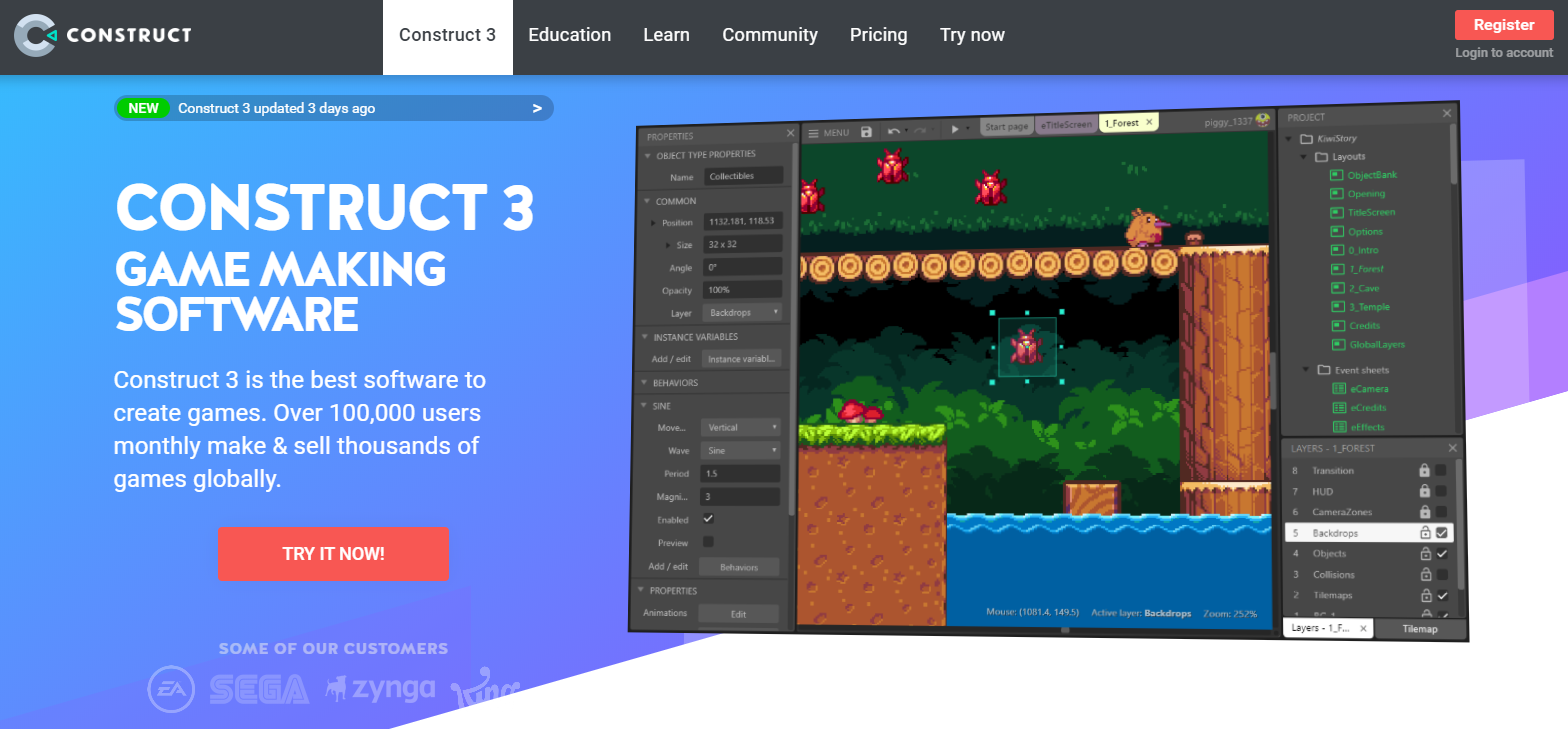
Construct is a world-class game development toolkit with some of the easiest and most powerful tools right at your fingertips.
Corona – https://coronalabs.com/

Corona is a cross-platform framework ideal for rapidly creating apps and games for mobile devices and desktop systems. That means you can create your project once and publish it to multiple types of devices, including Apple iPhone and iPad, Android phones and tablets, Amazon Fire, Mac Desktop, Windows Desktop, and even connected TVs such as Apple TV, Fire TV, and Android TV.
Crafty – http://craftyjs.com/
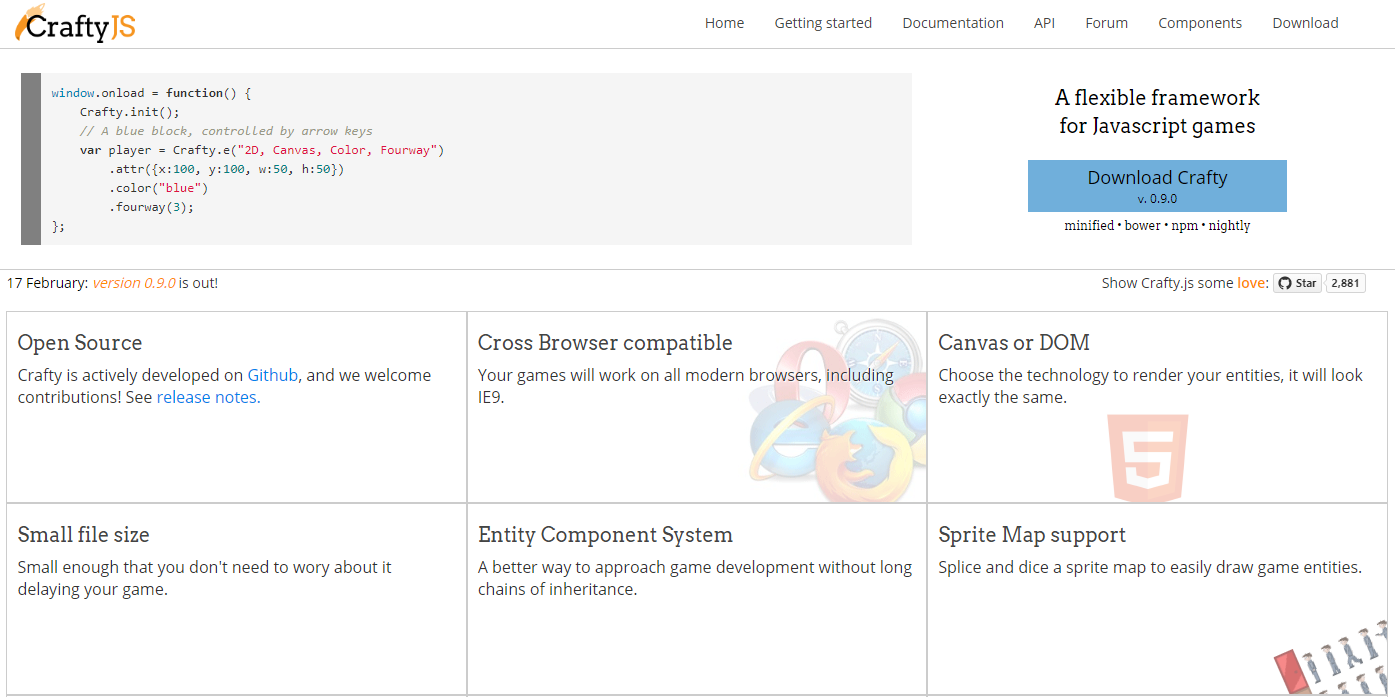
Crafty is a small, simple, and lightweight game engine that can greatly help you build prototypal or fully-featured 2D HTML5 games. Crafty is also open-source and completely free. Its code is hosted openly on GitHub.com and is distributed under the MIT or GPL license.
CryEngine – https://www.cryengine.com/

A powerful AAA game development platform for you and your team to create world-class entertainment experiences.
Clickteam Fusion – https://www.clickteam.com/

With Fusion 2.5’s amazing event editor system, you are able to quickly generate games or apps. Within your first hour, you will have learned the basics of the tool. Compile a windows app with a mouse click, Or target additional platforms like iOS, Android, Flash, and XNA (Windows Mobile phone and Xbox) with the purchase of our optional exporters.
Fancade – https://www.fancade.com/
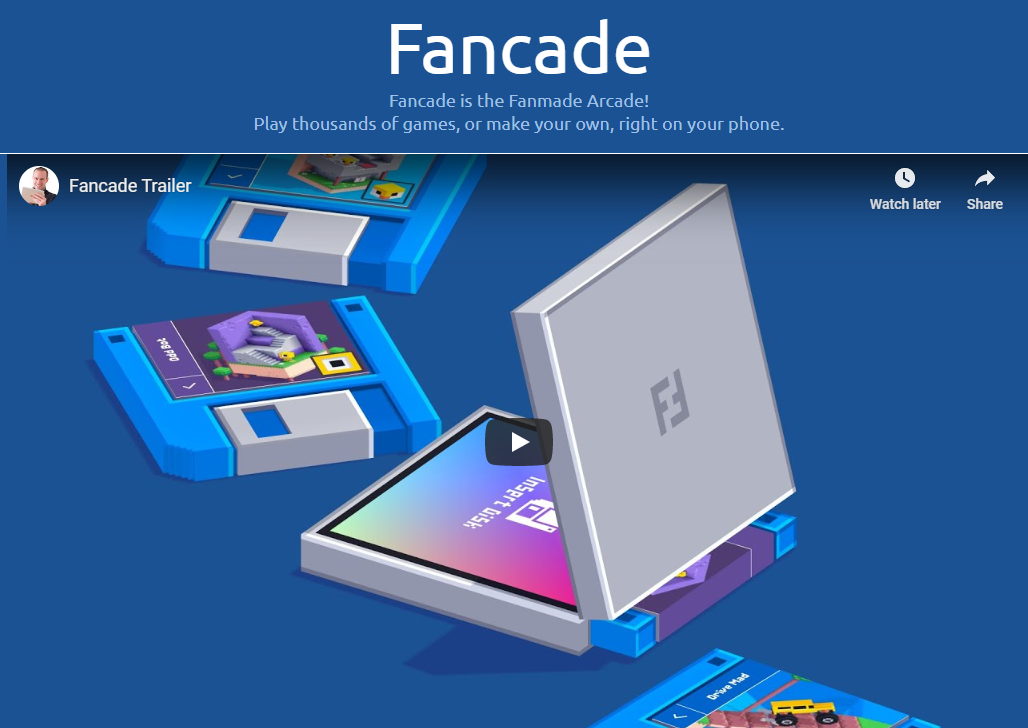
Fancade is the Fanmade Arcade! Play thousands of games, or make your own, right on your phone.
Felgo – https://felgo.com/
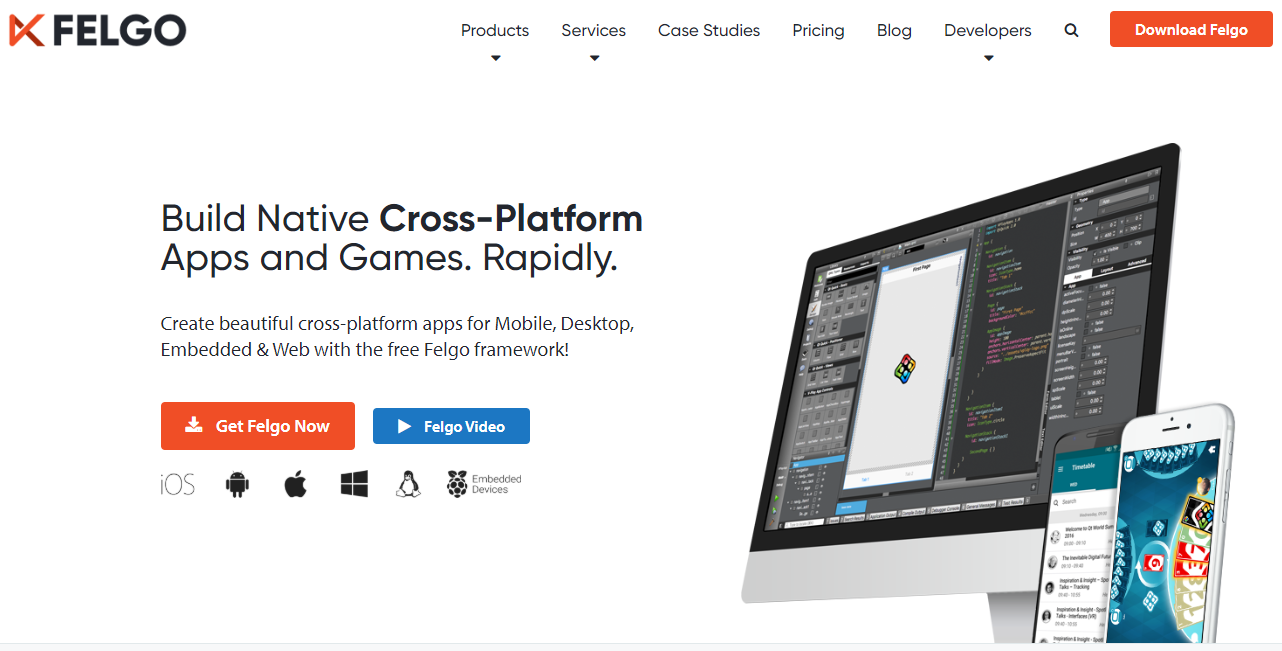
Felgo is a cross-platform application development SDK, based on the QT framework and greatly extending it. With Felgo, you can create modern, flexible & beautiful apps, compiled natively from a single code-base. Speed up your development with hot reload and more cutting-edge tooling for all supported platforms. Save up to 90% code with true cross-platform components, service integrations, and native UI/UX out-of-the-box.
FlatRedBall – http://flatredball.com/
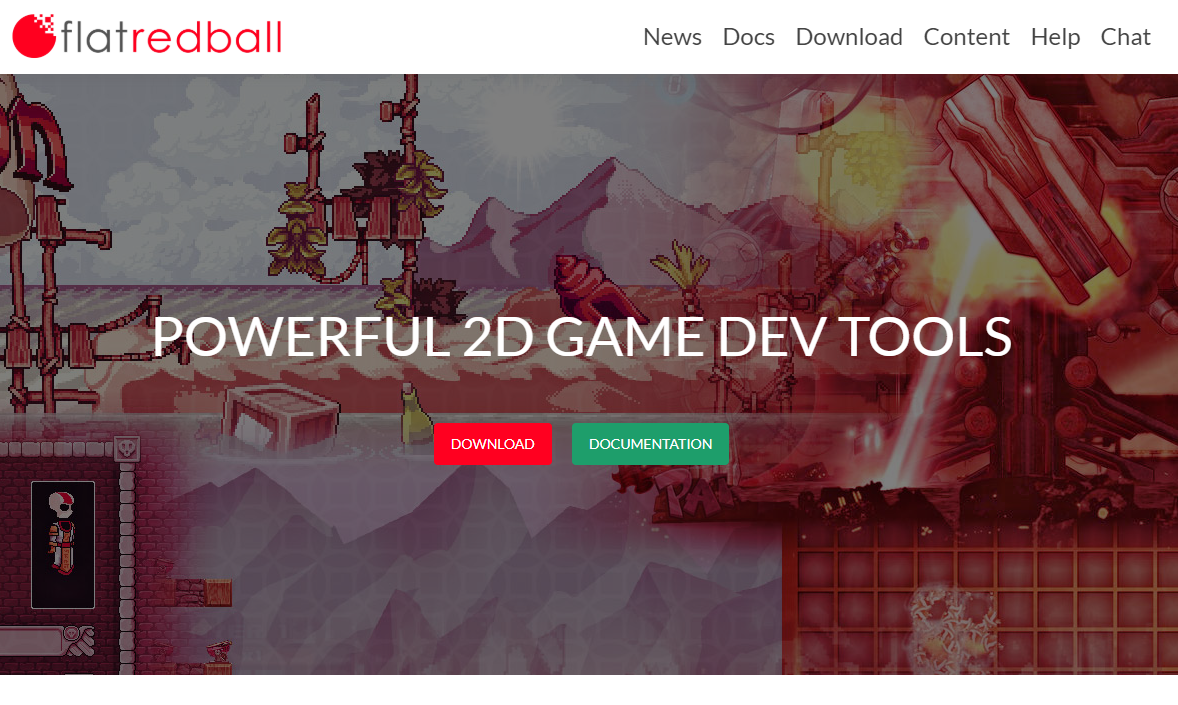
The FlatRedBall game engine is cross-platform, focused on 2D game development, and proven across multiple shipped game projects. It’s a perfect choice for small indies or large teams.
Flowlab – https://flowlab.io/
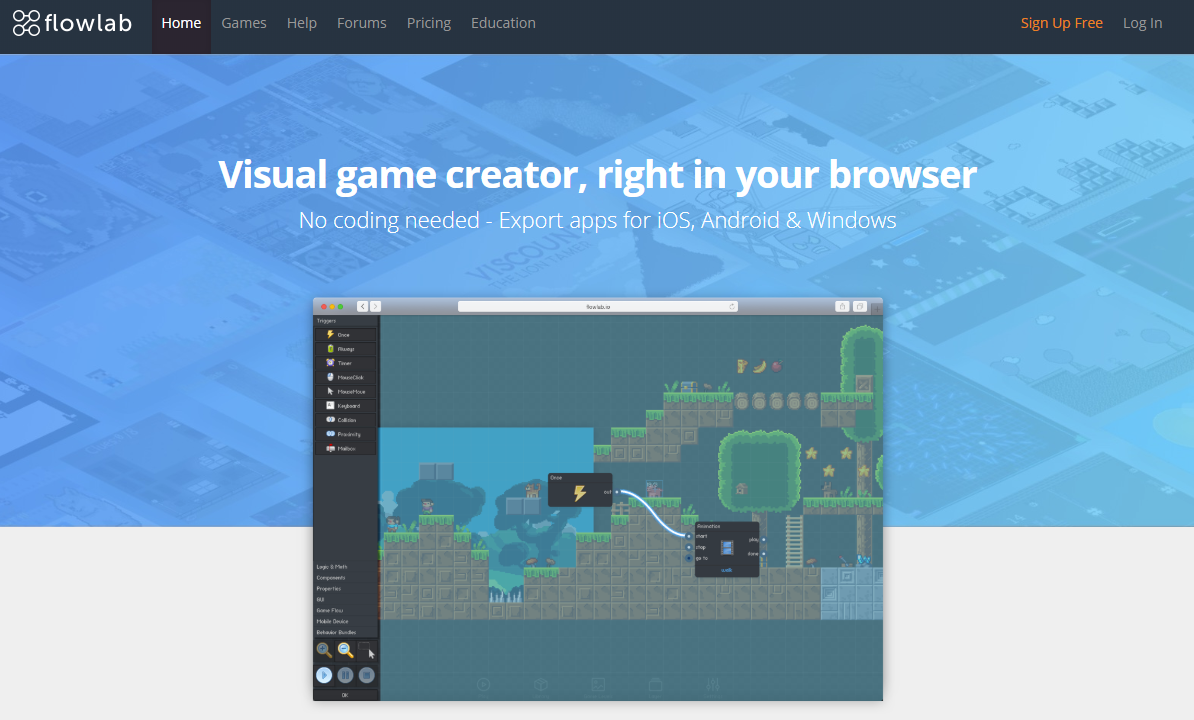
Visual game creator, right in your browser! No coding needed – Export apps for iOS, Android & Windows.
GameFroot – https://make.gamefroot.com/
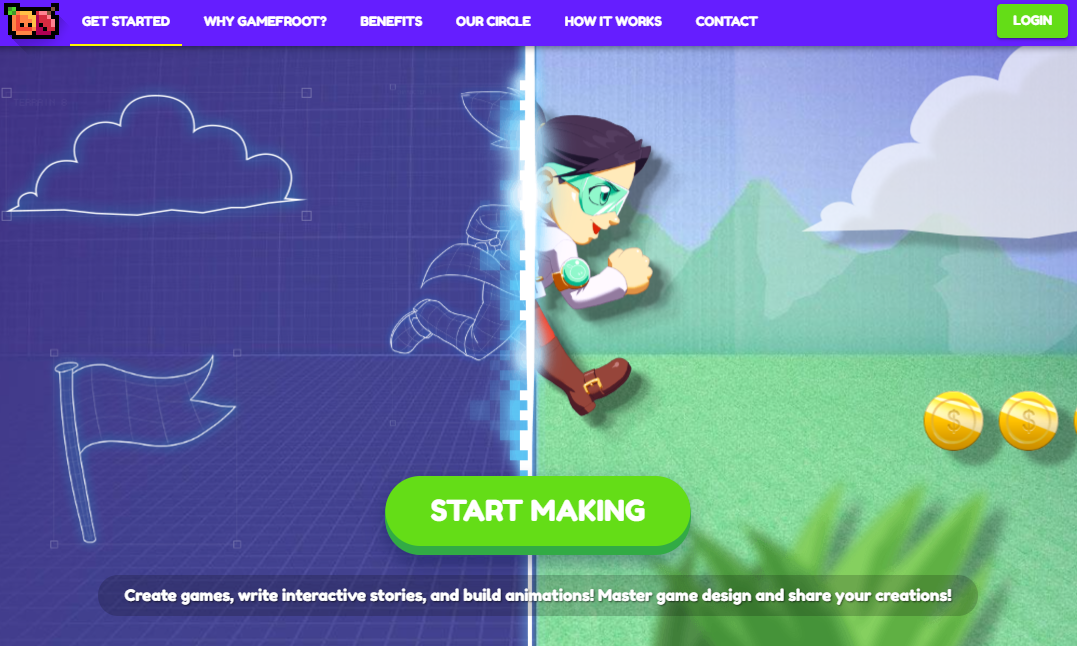
What if learning how to make a game was as enjoyable as playing one? It is! Creating in Gamefroot uses a no-code HTML5 interface based on real game industry practice.
GameMaker – https://www.yoyogames.com/gamemaker
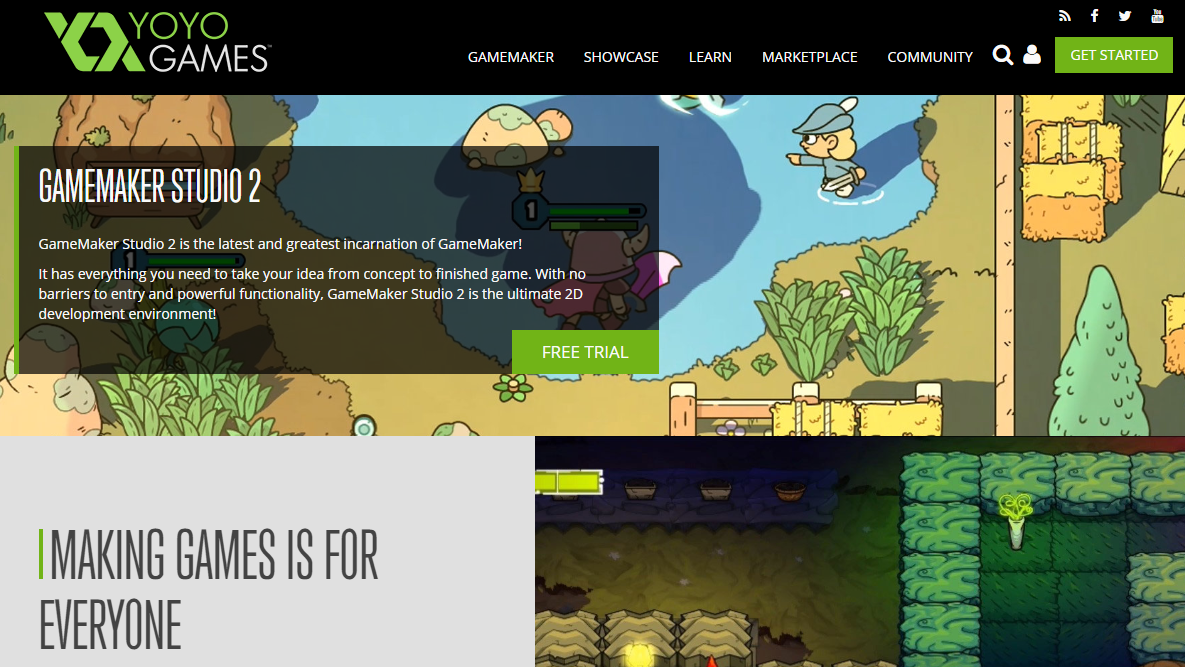
Making game development accessible to everyone means taking away the barriers to getting started. Using the intuitive ‘Drag and Drop’ development environment you can have your game up and running in a matter of minutes without ever having to write any code! GameMaker’s built-in language (GML) helps you learn to program as you go and not jump in at the deep end of coding.
Gamesalad – https://gamesalad.com/
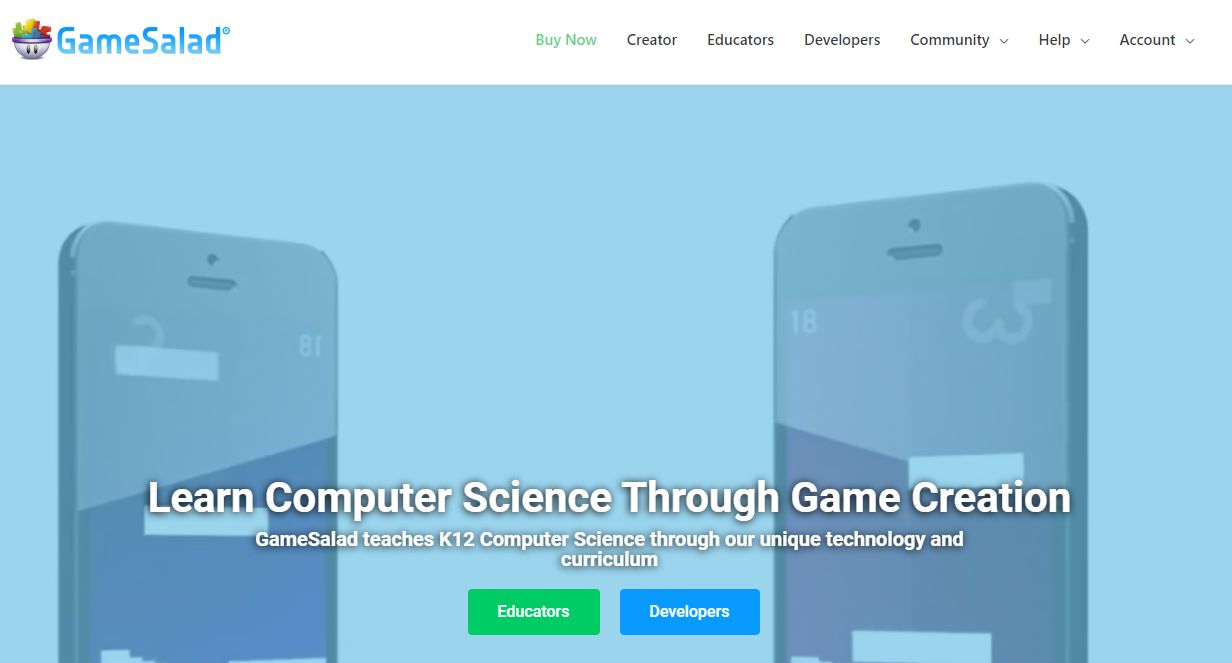
GameSalad is a game development platform that allows anyone to create the game of their dreams with a sophisticated visual programming interface. It’s also the best way to introduce programming concepts, game design, and digital media creation to your students.
GDevelop – https://gdevelop-app.com
GDevelop is an open-source, cross-platform game engine designed for everyone – it’s extensible, fast, and easy to learn. It also comes with an array of assets that makes 2D game development extremely quick.
Godot – https://godotengine.org/
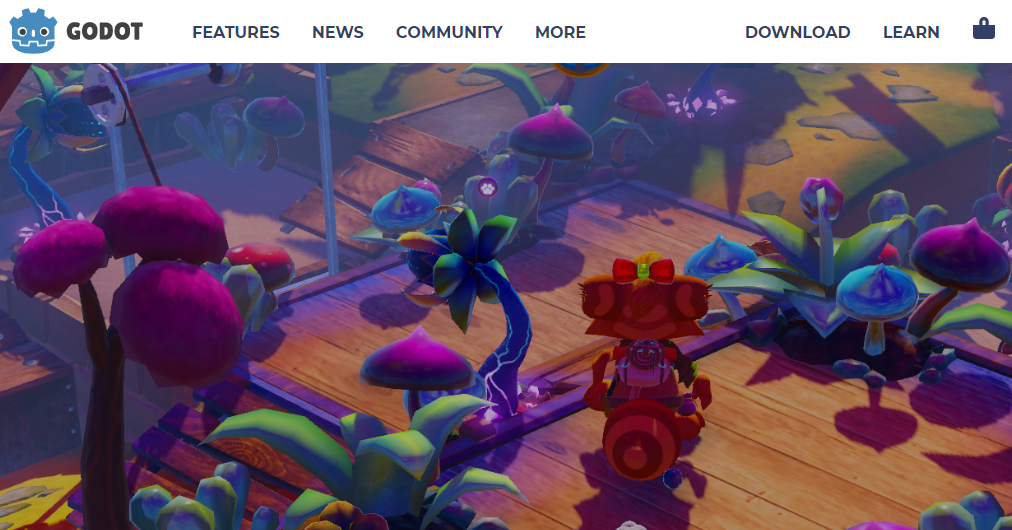
Godot provides a huge set of common tools, so you can just focus on making your game without reinventing the wheel. Godot is completely free and open-source under the very permissive MIT license. No strings attached, no royalties, nothing. Your game is yours, down to the last line of engine code.
IdleGameMaker – http://orteil.dashnet.org/igm/

A very accessible scripting language by the creator of CookieClicker that allows you to rapidly put together an engaging Idle Clicker game.
jMonkeyEngine – https://jmonkeyengine.org/
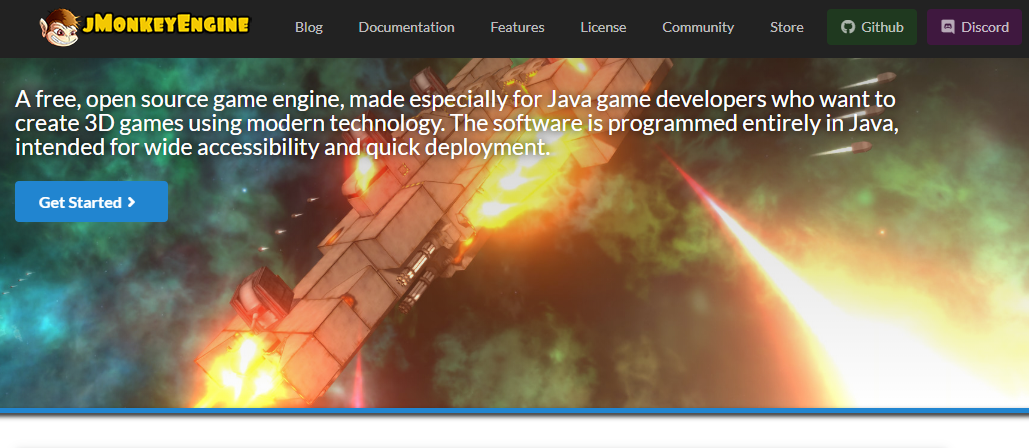
A free, open-source game engine, made especially for Java game developers who want to create 3D games using modern technology. The software is programmed entirely in Java, intended for wide accessibility and quick deployment.
LibGDX – https://libgdx.badlogicgames.com/
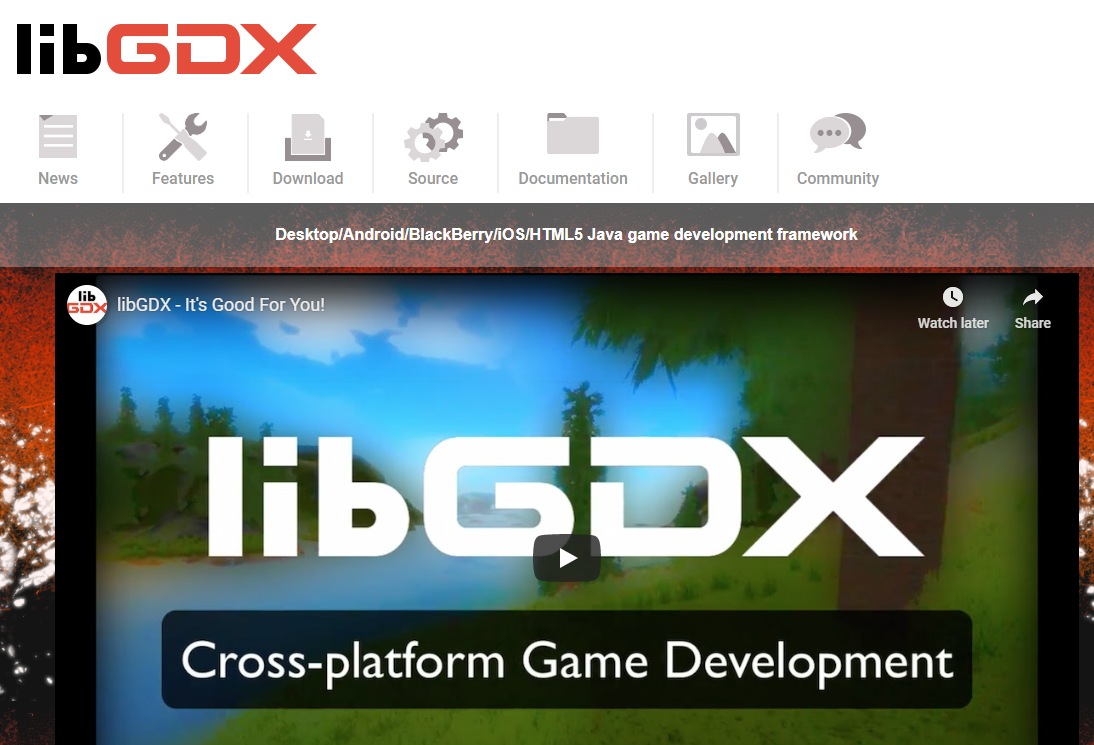
Libgdx is a Java game development framework that provides a unified API that works across all supported platforms. The framework provides an environment for rapid prototyping and fast iterations. Instead of deploying to Android/iOS/Javascript after each code change, you can run and debug your game on the desktop, natively. Desktop JVM features like code hot-swapping reduce your iteration times considerably.
Lumberyard – https://aws.amazon.com/lumberyard/
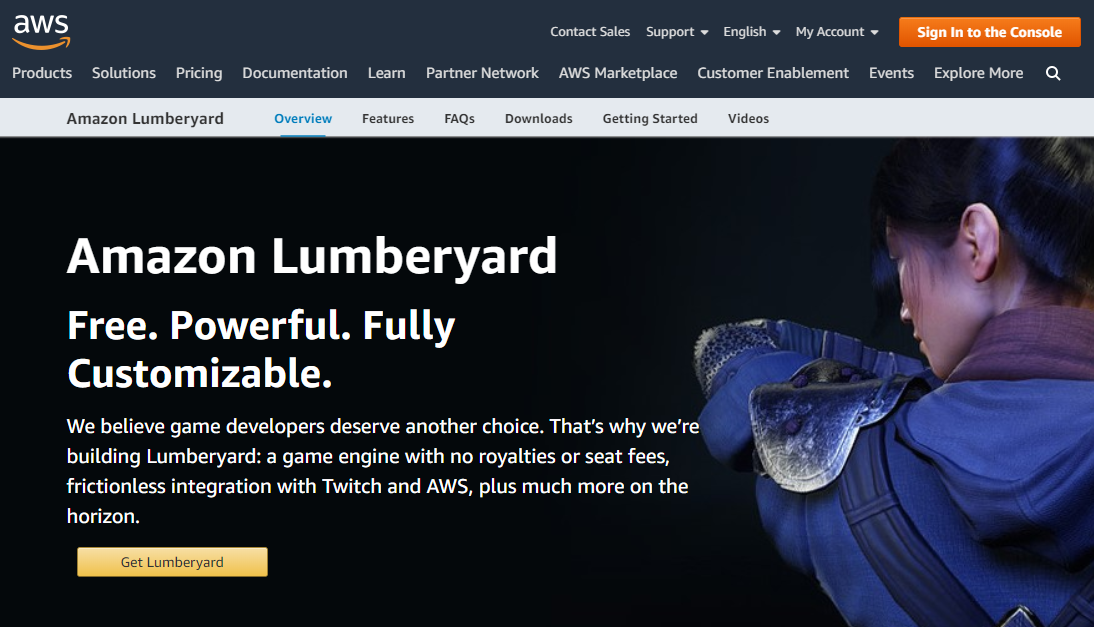
Lumberyard is architected for performance, modularity, and productivity. Reduce time to quality and maximize ambition, across PC, console, and mobile.
MelonJS – http://melonjs.org/
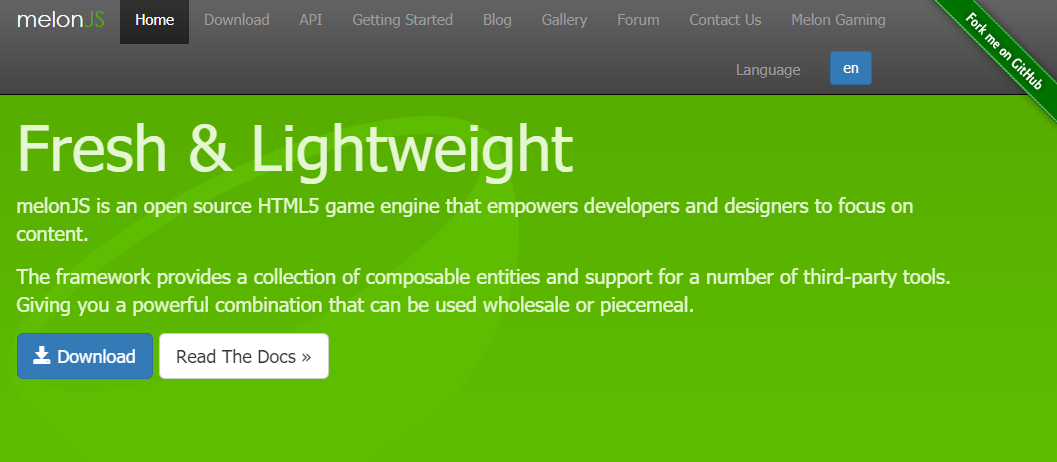
melonJS is a lightweight yet powerful HTML5 framework designed from the ground up to provide a true plugin-free ‘write-once, run-everywhere’ gaming platform. melonJS is an open-source project and supported by a community of enthusiasts. See our Gallery for a few examples of games powered by melonJS.
microStudio – https://microstudio.dev
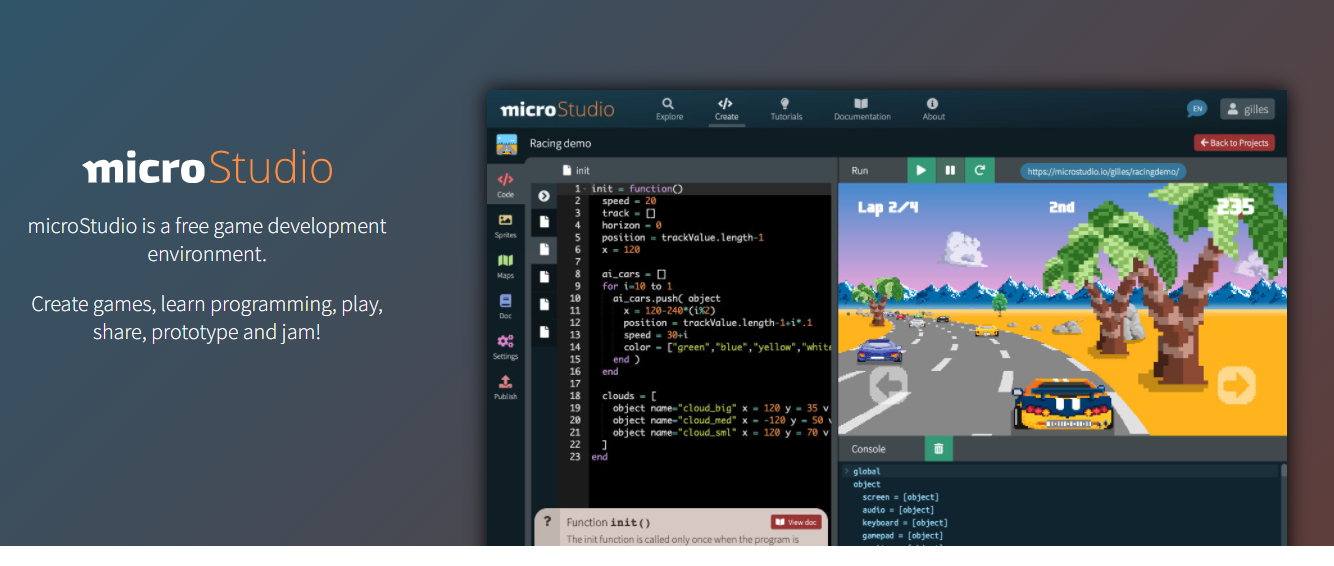
microStudio includes all you need to write code, create sprites and maps for a 2D game, all from within your web browser. Your project is stored in the cloud and available from anywhere. Build games everywhere.
MonoGame – https://www.monogame.net/

By leveraging C# and other .NET languages on Microsoft and Mono platforms you can write modern, fast, and reliable game code.
OGRE3D – https://www.ogre3d.org/
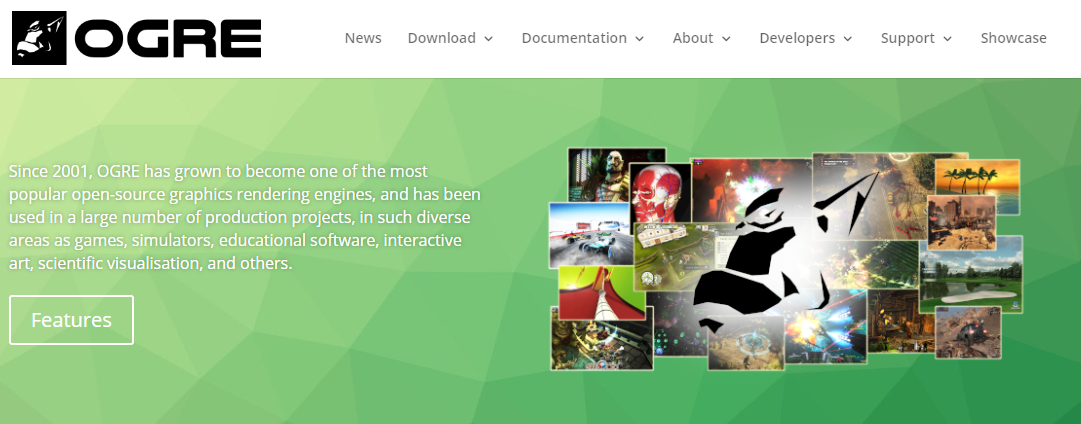
Since 2001, OGRE has grown to become one of the most popular open-source graphics rendering engines, and has been used in a large number of production projects, in such diverse areas as games, simulators, educational software, interactive art, scientific visualization, and others.
Panda 3D – https://www.panda3d.org/
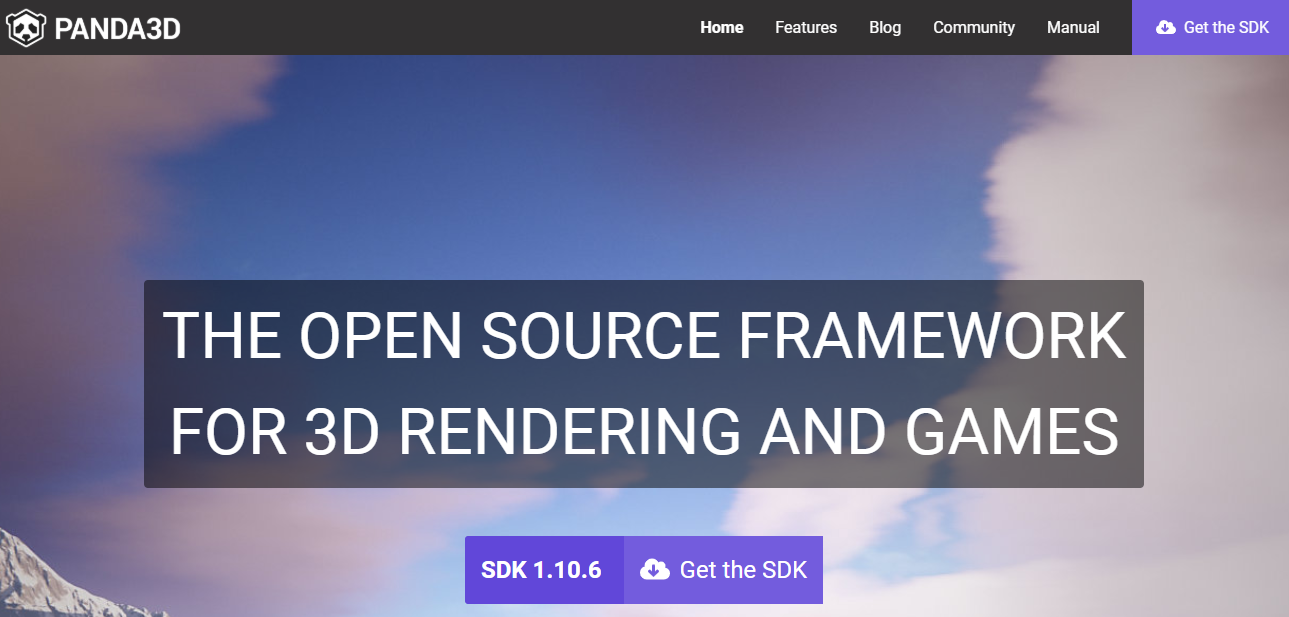
Panda3D is an open-source, completely free-to-use engine for real-time 3D games, visualizations, simulations, experiments — you name it! Its rich feature set readily tailors to your specific workflow and development needs.
Phaser – https://phaser.io/
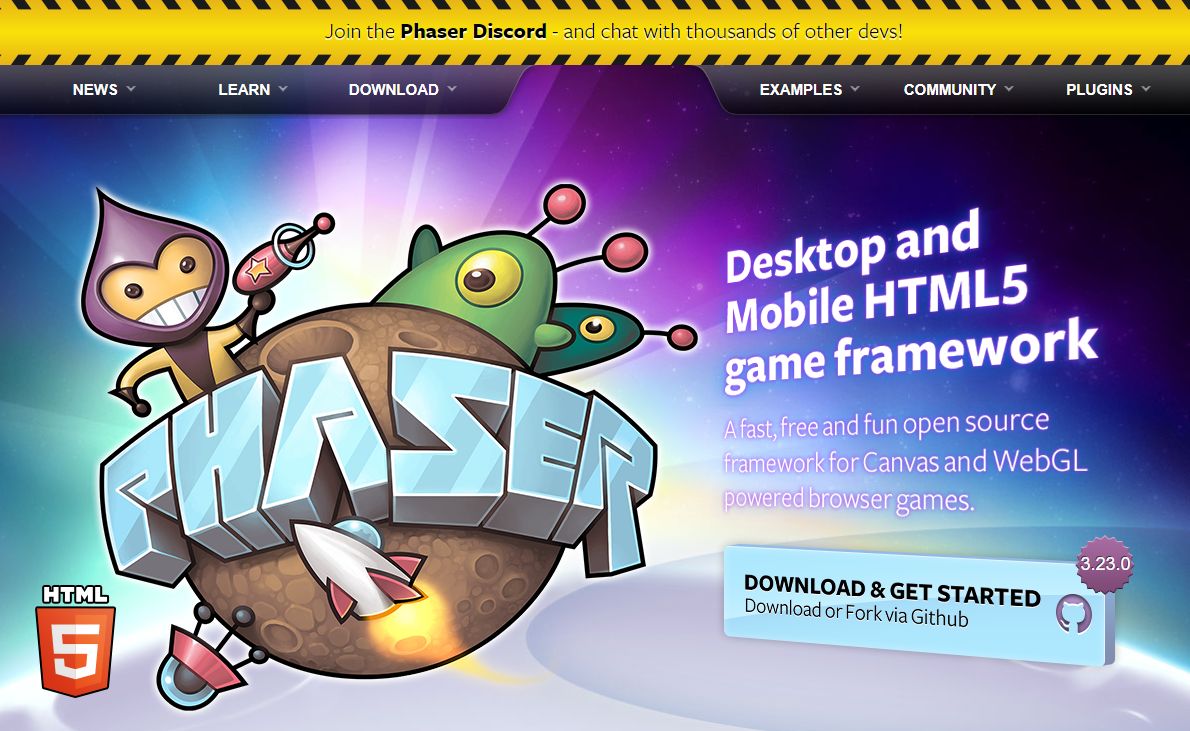
A fast, free, and fun open-source framework for Canvas and WebGL powered browser games.
PixiJS – https://www.pixijs.com/
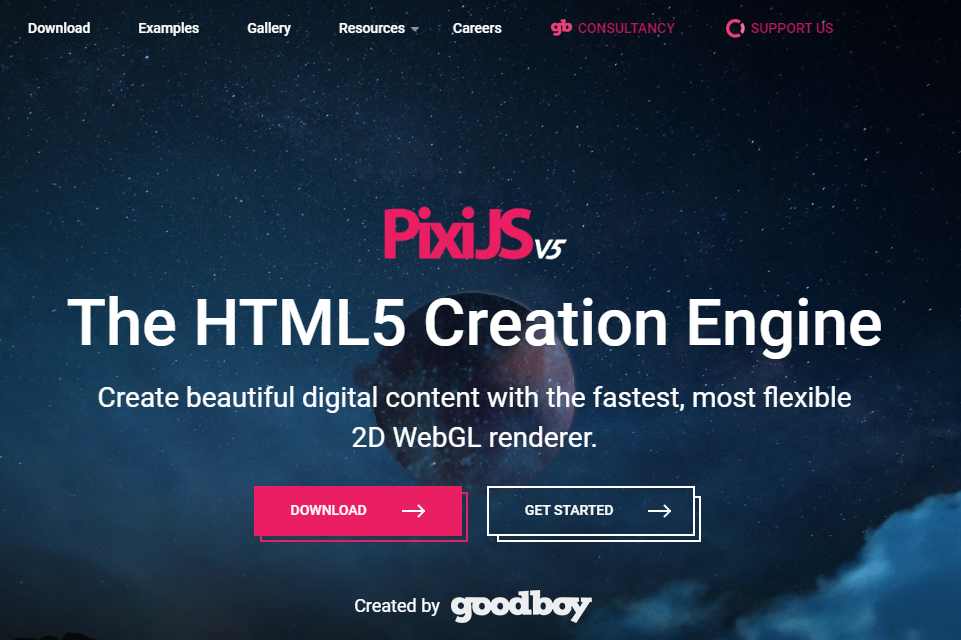
PixiJS’s strength is speed. When it comes to 2D rendering, PixiJS is the fastest there is. Friendly, feature-rich API lets PixiJS take care of the fundamentals whilst you focus on producing incredible multiplatform experiences. PixiJS is and always will be Open Source, with a large and supportive community pushing its growth and evolution.
PlayCanvas – https://playcanvas.com/
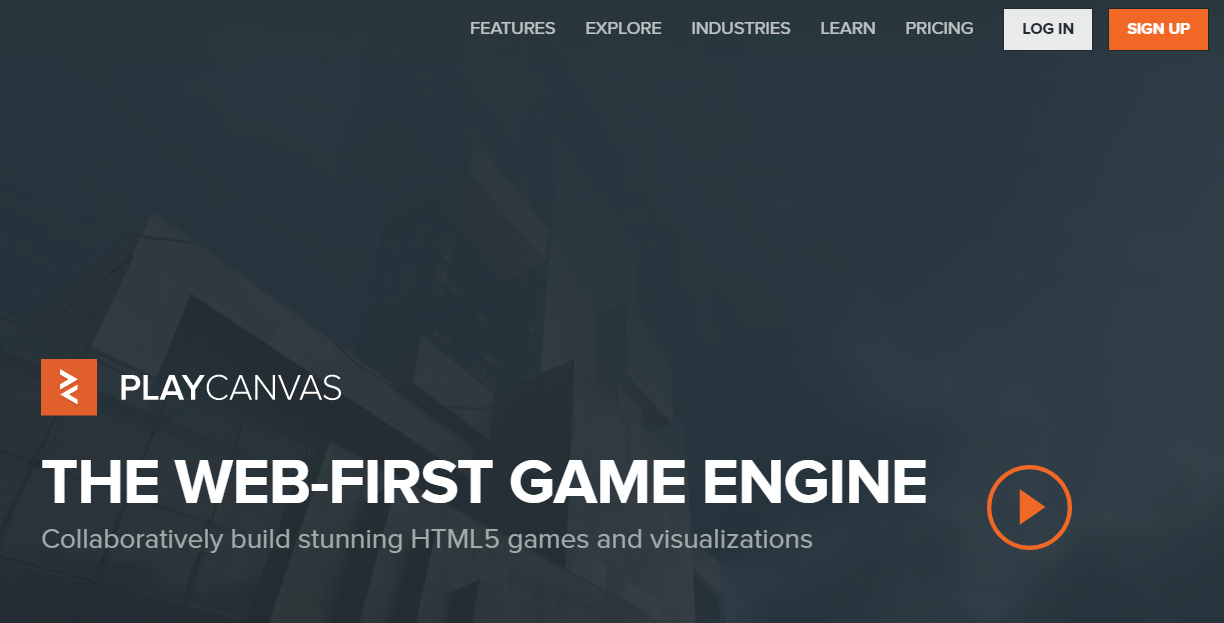
PlayCanvas is used by studios large and small to make lightweight messenger games, online multiplayer games, extraordinary product configurators, architectural visualizations, and more.
RPG Maker – https://www.rpgmakerweb.com/
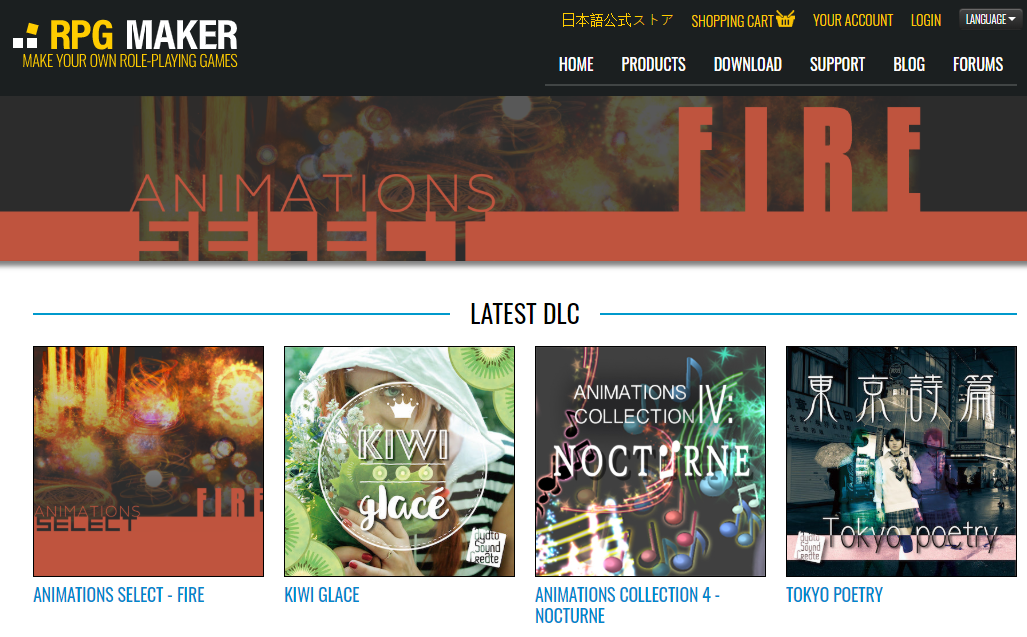
Simple enough for a child, powerful enough for a developer! RPGMAKER was born to fulfill the desire of creating an original RPG without programming knowledge. With the latest installment, RPGMAKER MV allows the dreams of many of its fans to come true!
Smile Game Builder – http://smilegamebuilder.com/en/
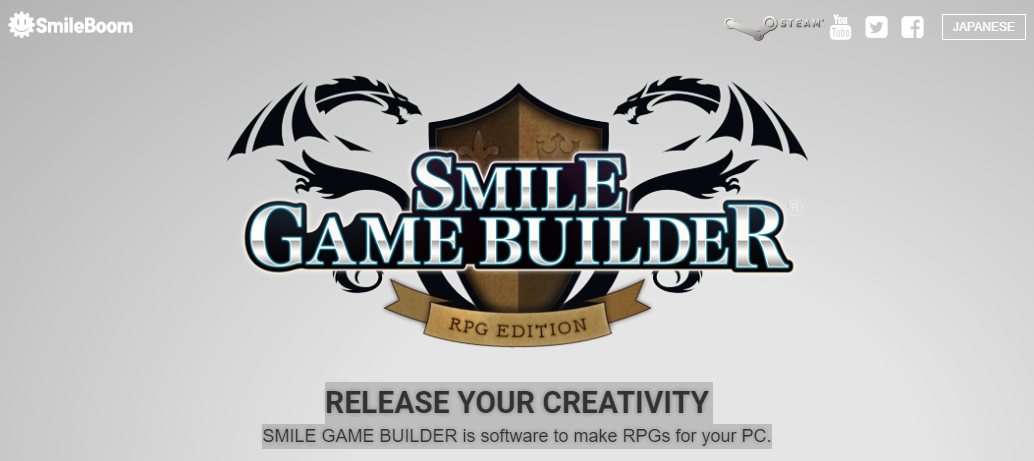
RELEASE YOUR CREATIVITY. SMILE GAME BUILDER is software to make RPGs for your PC.
Spring Engine – https://springrts.com/
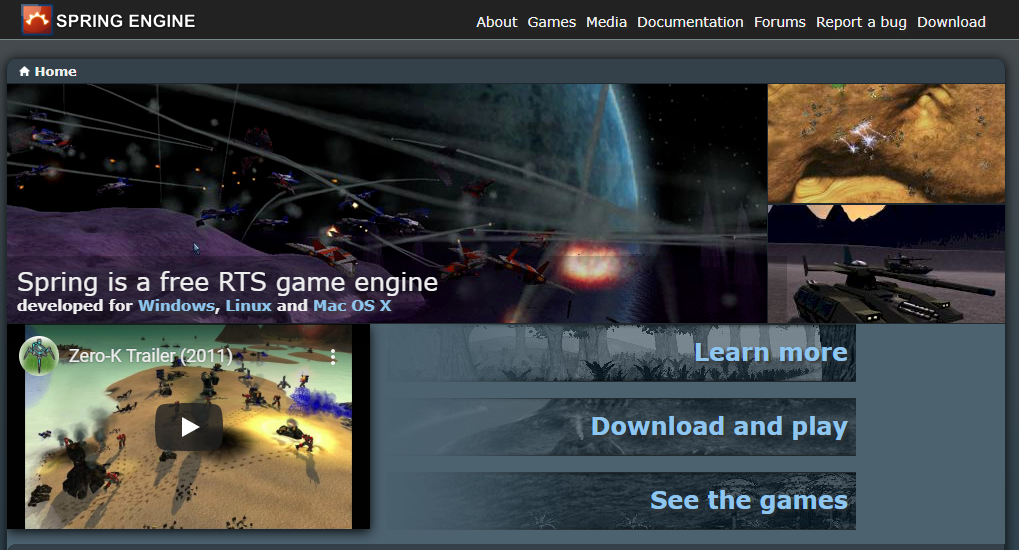
Spring is a versatile 3D RTS game engine. Using extensively Lua for scripting game-specific code to make nearly every aspect of the engine customizable, from GUI to unit AI, to pathfinding.
SpriteKit – https://developer.apple.com/spritekit/
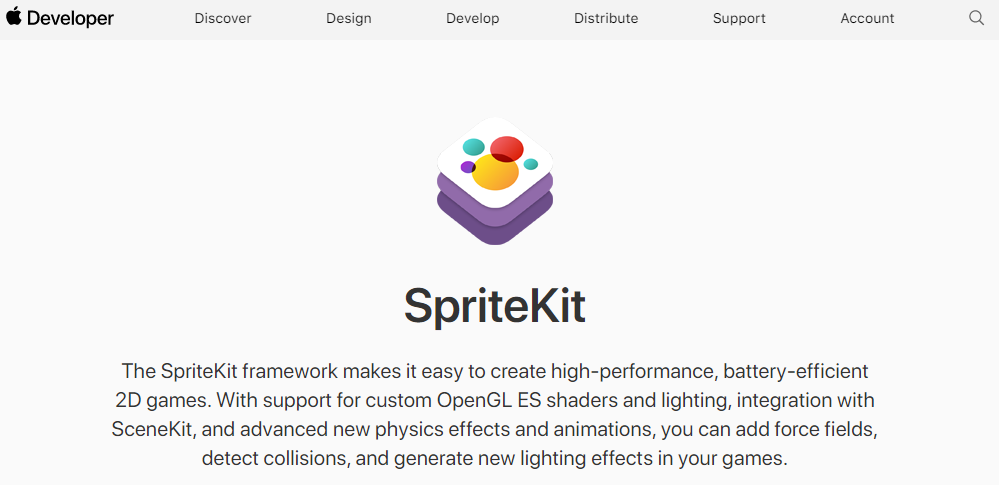
The SpriteKit framework makes it easy to create high-performance, battery-efficient 2D games. With support for custom OpenGL ES shaders and lighting, integration with SceneKit, and advanced new physics effects and animations, you can add force fields, detect collisions, and generate new lighting effects in your games.
StageJS – http://piqnt.com/stage.js/
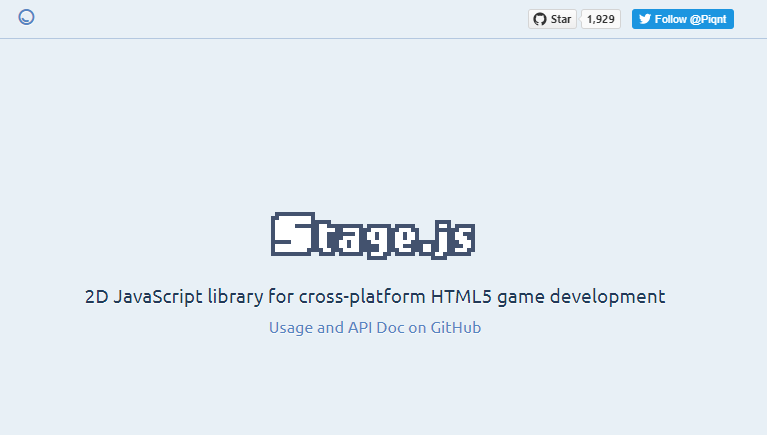
2D HTML5 rendering and layout engine for game development.
Twine – https://twinery.org/
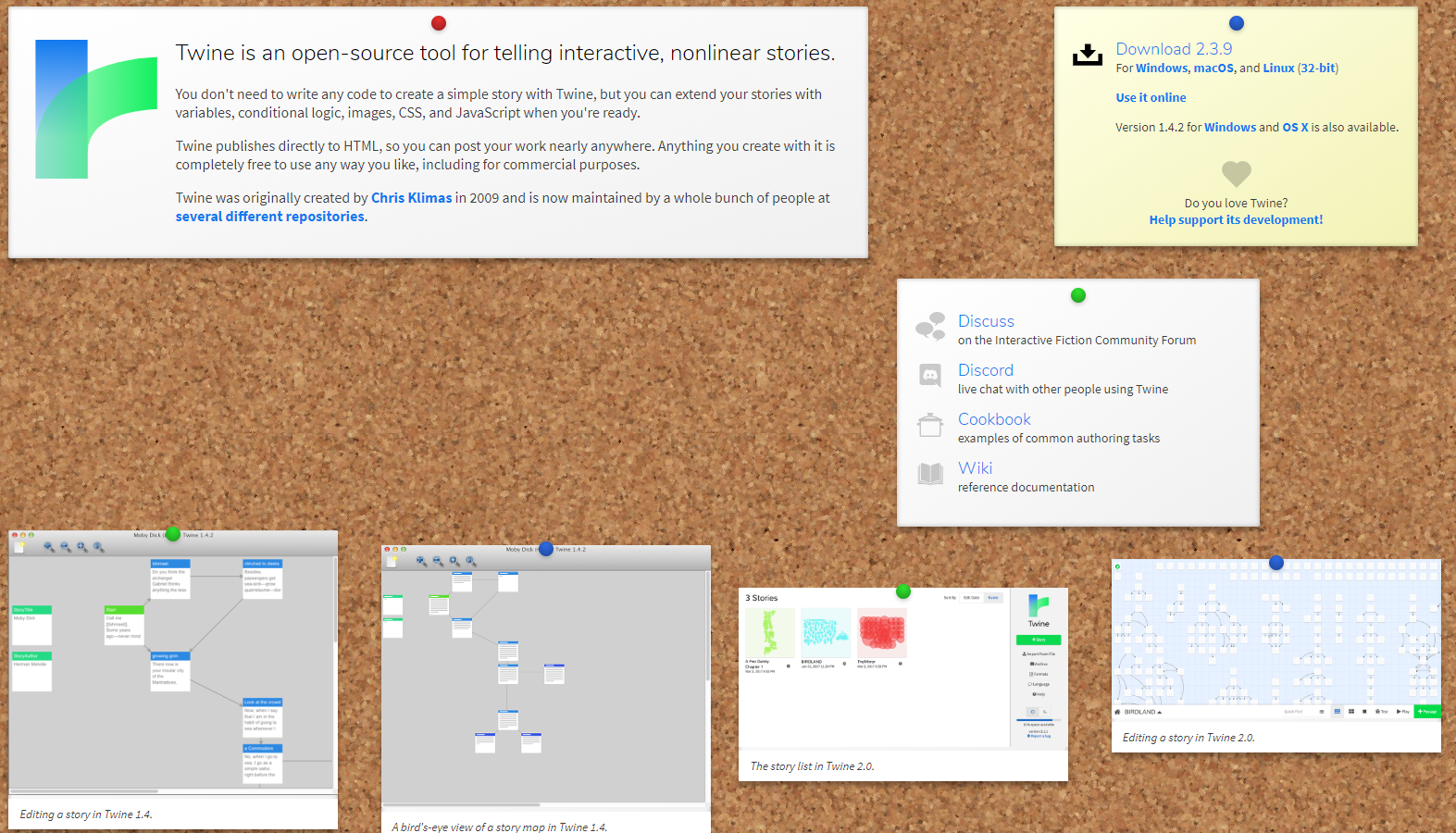
Twine is an amazing way to create narrative-driven stories. If you can tell a story, you can make an amazing game!
Unity – https://unity.com/
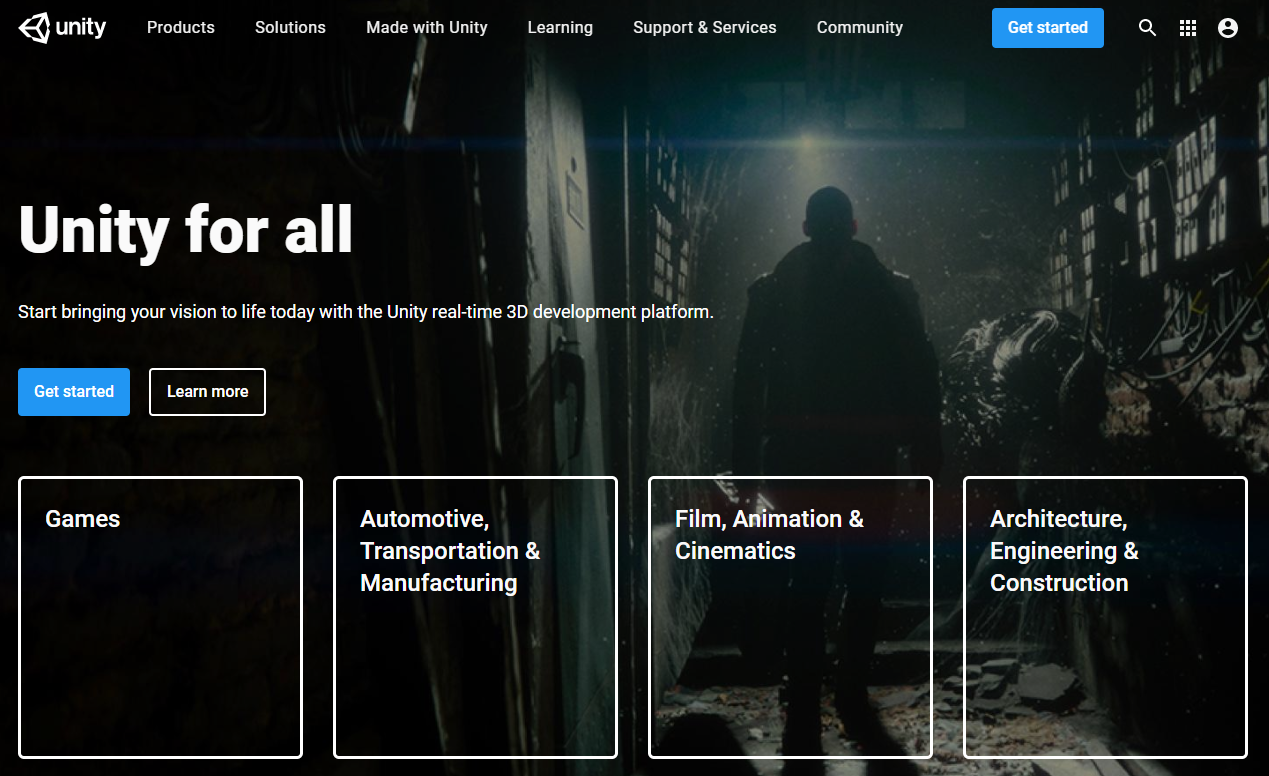
Unity’s real-time 3D development platform lets artists, designers, and developers work together to create amazing immersive and interactive experiences. (Available for Windows, Mac, and Linux.)
Unreal Engine – https://www.unrealengine.com/en-US/
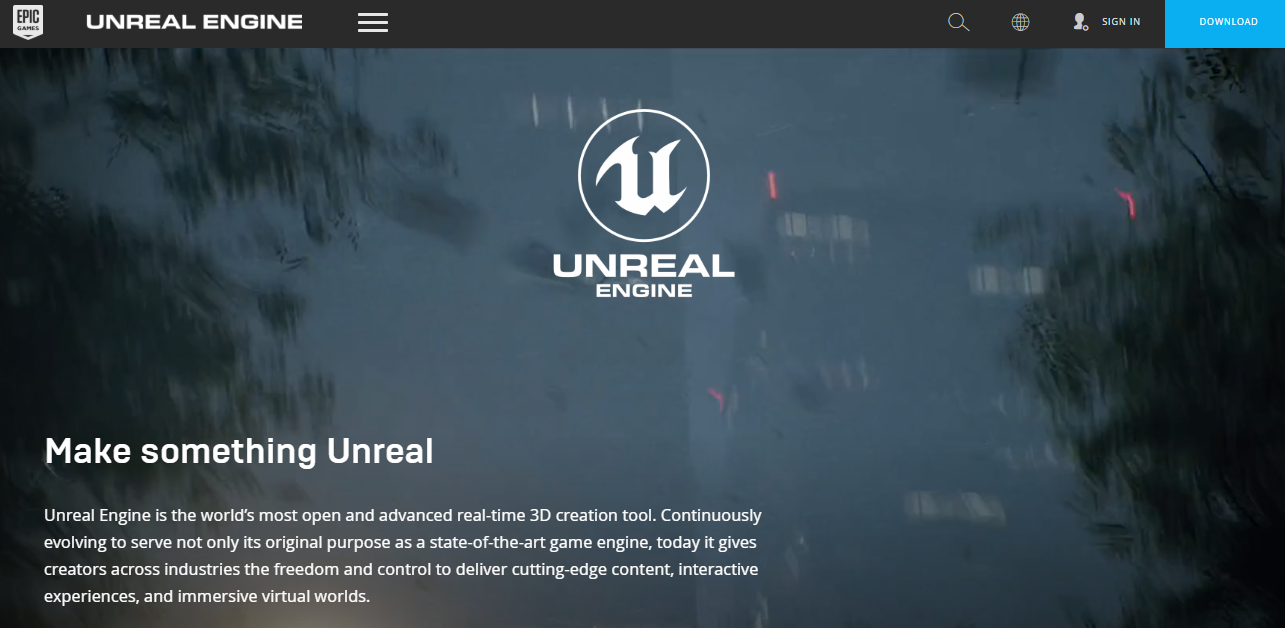
Unreal Engine is a state-of-the-art real-time engine and editor that features photorealistic rendering, dynamic physics and effects, lifelike animation, robust data translation, and much more—on an open, extensible platform that won’t tie you down.
Urho3D – https://urho3d.github.io/
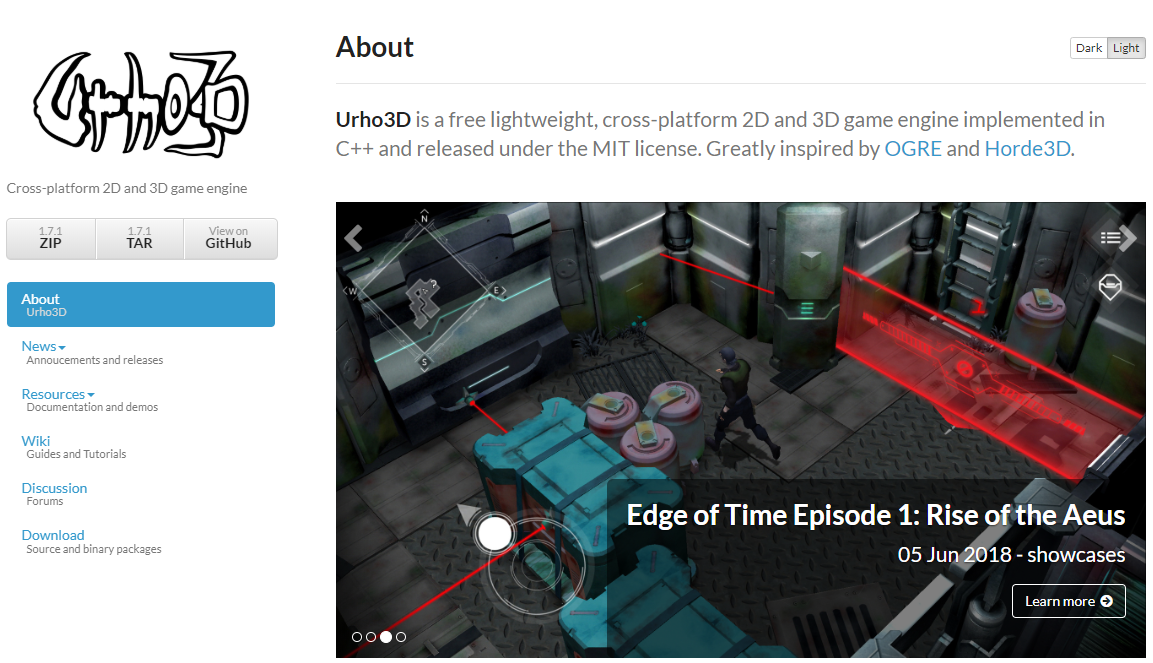
Urho3D is a free lightweight, cross-platform 2D and 3D game engine implemented in C++ and released under the MIT license. Greatly inspired by OGRE and Horde3D.
Did we miss an engine?
Do you have a game engine or low-code/no-code game tool that is missing from this list? Contact us or leave it in the comments!
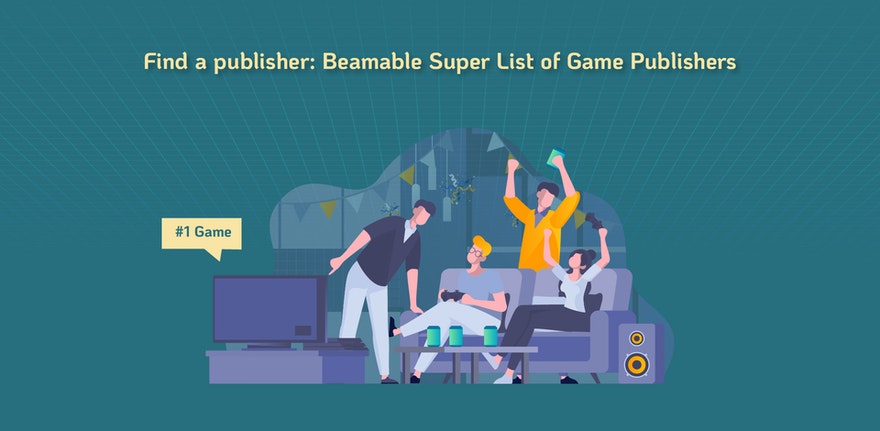
Find a publisher: Beamable Super List of Game Publishers
Acquiring funds is one of the most preliminary stages of game development. Some independent studios or developers might have funds from crowdfunds or previous games, but for many, it’s an altogether different struggle. A struggle that Beamable understands, having collaborated with developers on many successful games.
Game Publishers are the solution to the problem at hand.
However, finding the right publishers is another task. To simplify, we’ve curated a list of some of the best publishers out there to support, publish, and increase the reach of your game. Here it is:
Alawar – https://www.alawar.com/
Ayopa Games – http://www.ayopagames.com/
Bear Games – https://beargg.com/
Chillingo – https://www.ea.com/ea-studios/chillingo
Creative Mobile – https://cm.games/
Crescent Moon Games – https://www.crescentmoongames.com/
Devolver Digital – https://www.devolverdigital.com/
Finji – http://finji.co/
GAMEVIL – https://gamevil.com/
Game Garden – https://game-garden.com/
GameHouse – https://www.gamehouse.com/welcome
Glitch – https://heyglitch.com/
Headup Games – https://www.headupgames.com/
HeroCraft – https://www.herocraft.com/
Indie Fund – https://indie-fund.com/
Ketchup Games – http://www.ketchappgames.com/
Kongregate – https://www.kongregate.com/
Kowlooon Nights – https://www.kowloonnights.com/
N3twork – https://n3twork.com/
Nanovation Labs – http://www.nanovationlabs.com/
Nekki – https://nekki.com/
Nevosoft – https://android.nevosoft.com/
No More Robots – https://nomorerobots.io
PikPok – https://pikpok.com/
Renatus – http://renatus.com/
Reverb Communications – http://reverbinc.com/
Skystone Games – https://skystone.games
Square Enix Collective – http://collective.square-enix.com/
Storm8 – http://www.storm8.com/
TabTale (now CrazyLabs) – https://www.crazylabs.com/
Team17 – https://www.team17.com/
Tilting Point – https://www.tiltingpoint.com/
tinyBuild Games – http://tinybuild.com/
Versus Evil – https://versusevil.com/
Wadjet Eye Games – http://www.wadjeteyegames.com/
Wargaming Labs – https://wargaming.com/en/
Yodo1 – https://home.yodo1.com/
Zillion Whales – https://zillionwhales.com/
Alawar
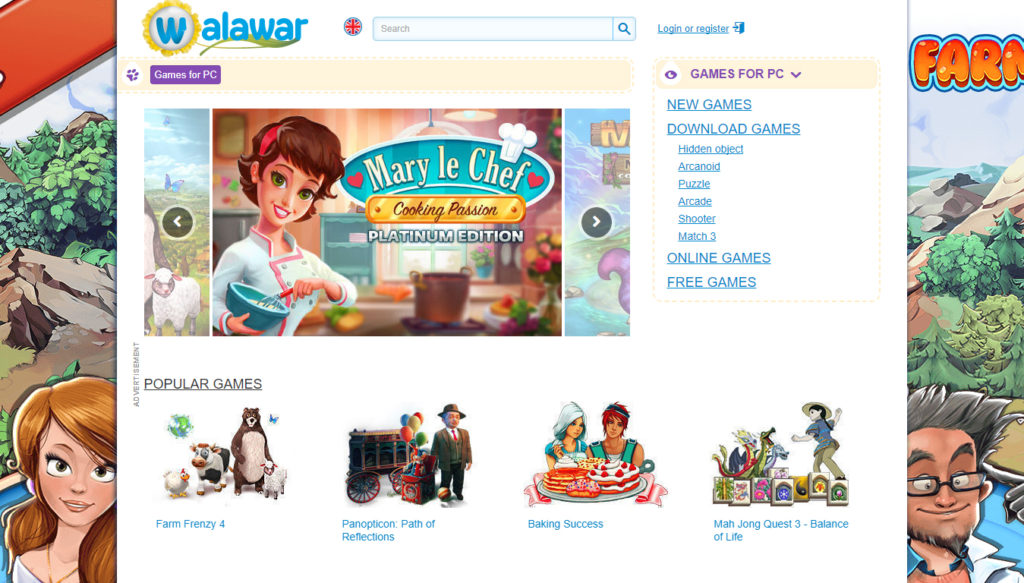
Alawar is a studio that develops, distributes, and publishes games for mobiles, PCs, consoles, and more. They majorly focus on mid-core games played by experienced players, as well as a few casual games for mobile phones. Their games have reached more than 100 countries, and have been downloaded more than 200 million times. Contact them at: dev@alawar.com / games@alawar.com.
Ayopa Games
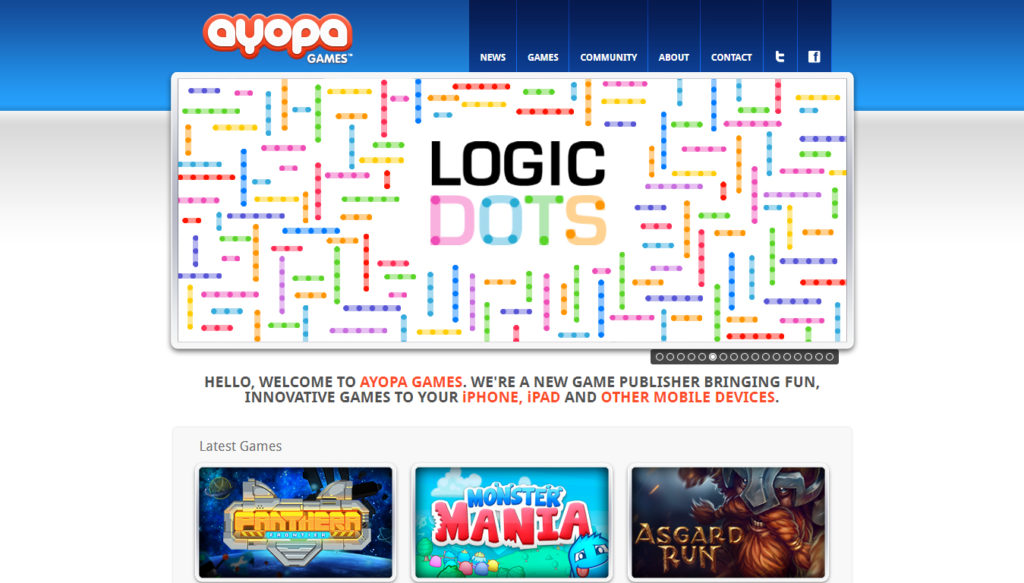
Ayopa Games is an independent game publisher focusing on mobile games that are fun and innovative. The company is a massive alliance of indie developers and others, which help them succeed in this competitive industry. Reach out to them here.
Bear Games
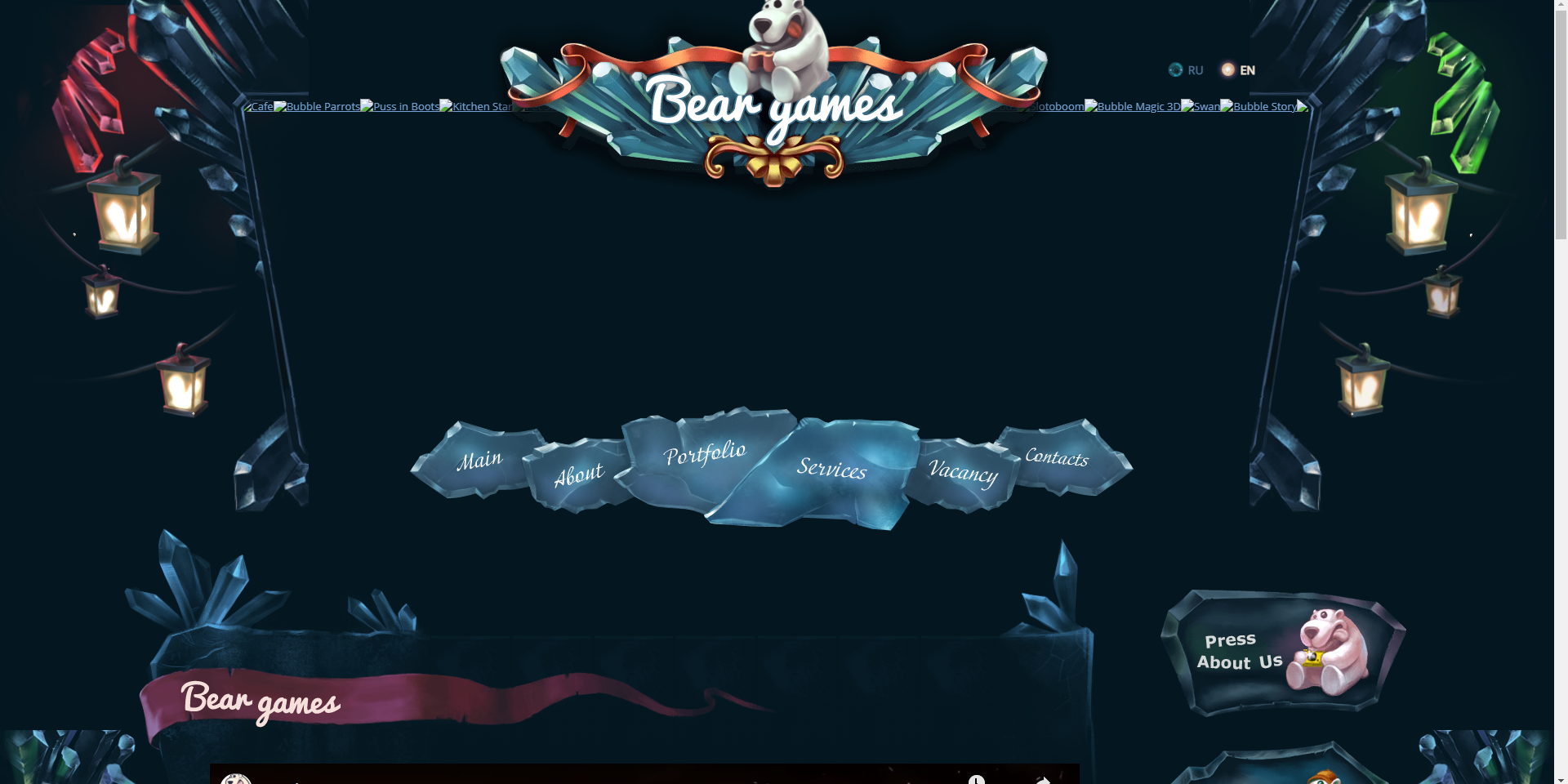
Bear Games, formerly known as Crystal Clear Soft, was founded by Counter-Strike professionals, and have since helped more than 50 games from start to end, including some of the industry’s big names. Contact them at nesvit@ccsoft.ru.
Chillingo
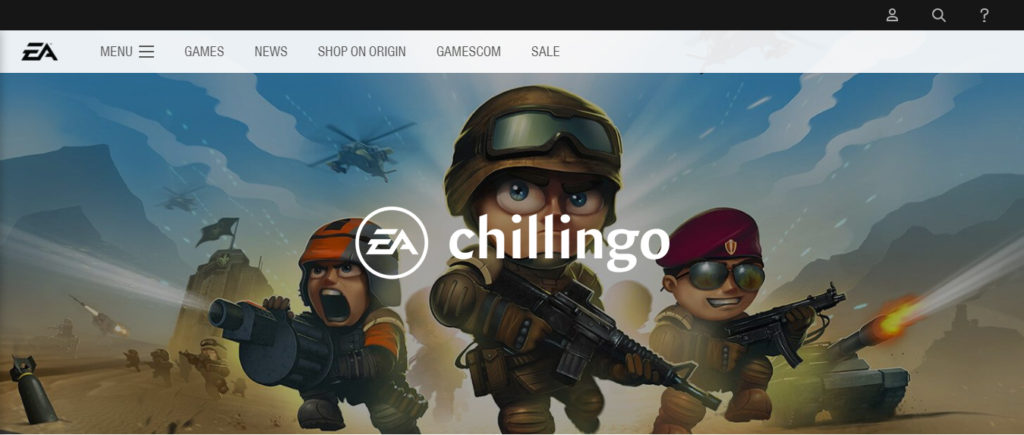
Chillingo is a subsidiary of Electronic Arts and works with independent studios and developers. So far, Chillingo has published numerous award-winning games, including Angry Birds, Perfect Kick, Cut the Rope, Pixel People, and so many others! Their games are published for Android and iOS platforms. Contact them at bizdev@chillingo.com.
Creative Mobile

Creative Mobile is an indie game publisher and developer that has evolved into an internationally recognized studio and publisher. Creative Mobile has reached over 300 million players with the games they’ve published, and they continue to reinvent themselves and collaborate with unique developers. Contact them at info@creative-mobile.com.
Crescent Moon Games
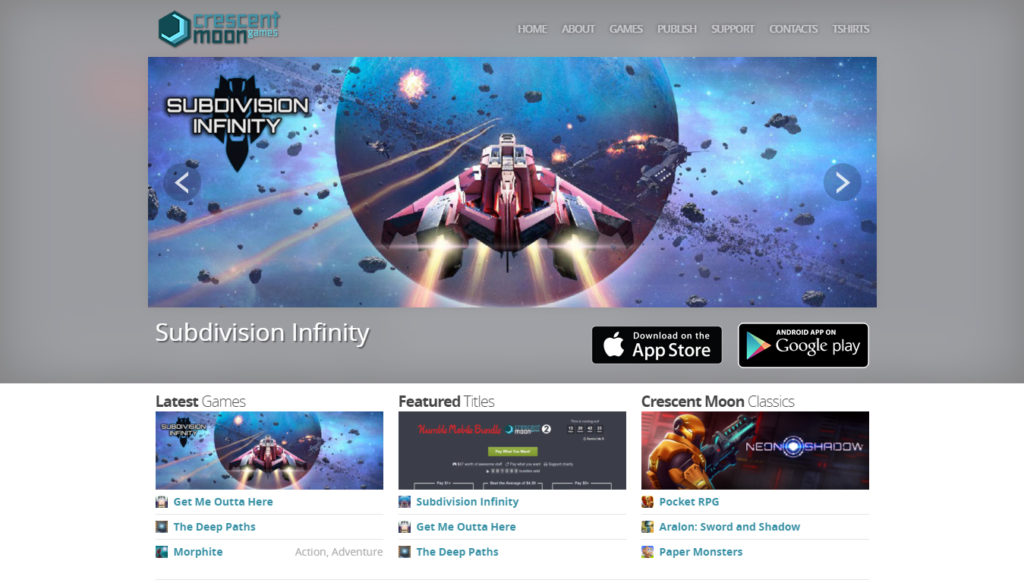
Crescent Moon Games is a game development and publishing company founded in 2009 which is built on collaboration, innovation, and fostering uniqueness. They’ve so far published over 70 games for different platforms including iOS, Android, Windows, Xbox, and Steam. Contact them at info@crescentmoongames.com.
Devolver Digital
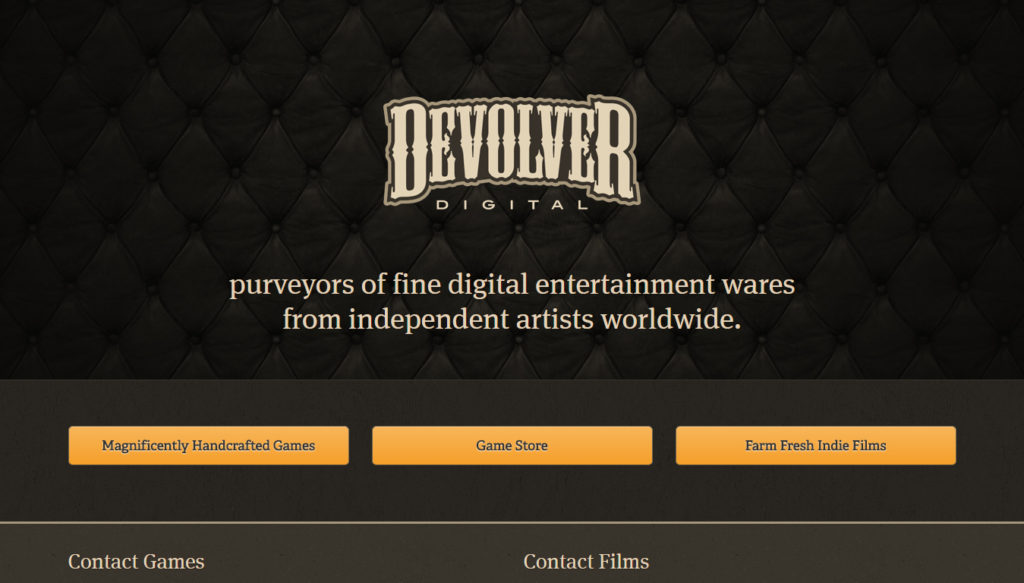
Devolver Digital helps indie game developers and studios turn ideas into successfully published games. The team helps developers across all the game development and publishing stages. They’re extremely pro-indie devs, and offer services tailored to independent studios and developers. Contact them at fork@devolverdigital.com.
Finji

Finji works with developers worldwide to make innovative games and create opportunities for budding indie developers. They have a passionate team that follows inclusive policies. Reach out to them at hello@finji.co
GAMEVIL
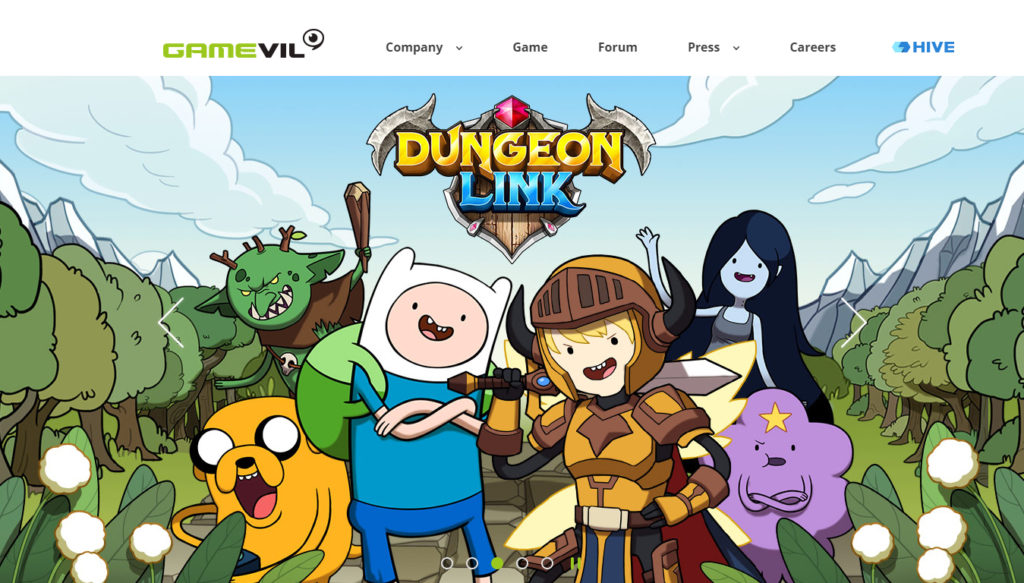
GAMEVIL is a well-renowned game publisher that has earned acclaim as one of the best publishing companies in mobile gaming. They have a diverse portfolio of innovative mobile games that offer an unparalleled experience. Contact them at biz@gamevilusa.com.
Game Garden
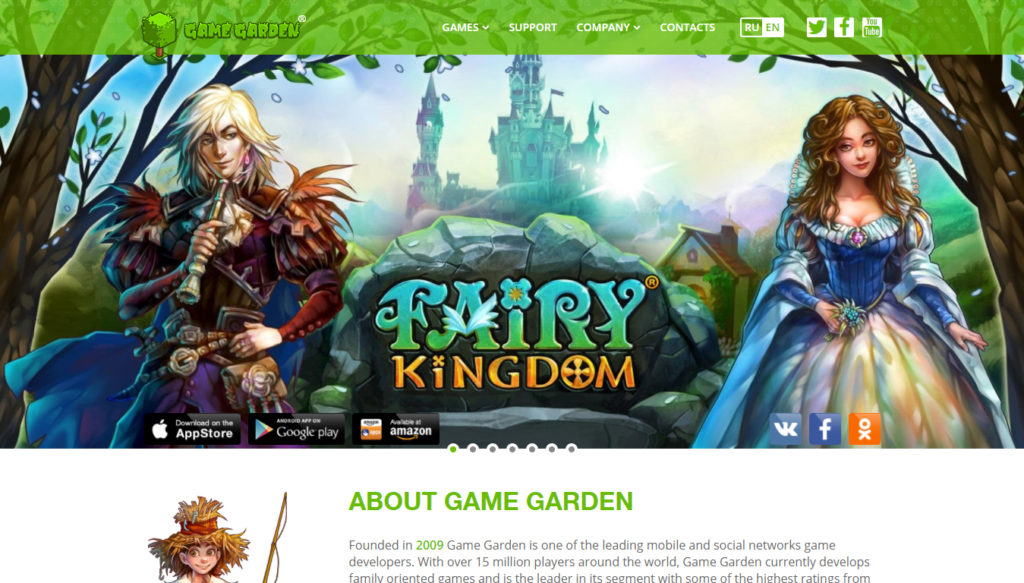
Game Garden celebrates the art of creating games and helps indie developers and studios publish their games on most of the platforms. They offer support throughout the publishing process and have helped with the games – Farmdale, Fairy Farm, Fairy Kingdom. Contact them at partnership@game-garden.com.
GameHouse
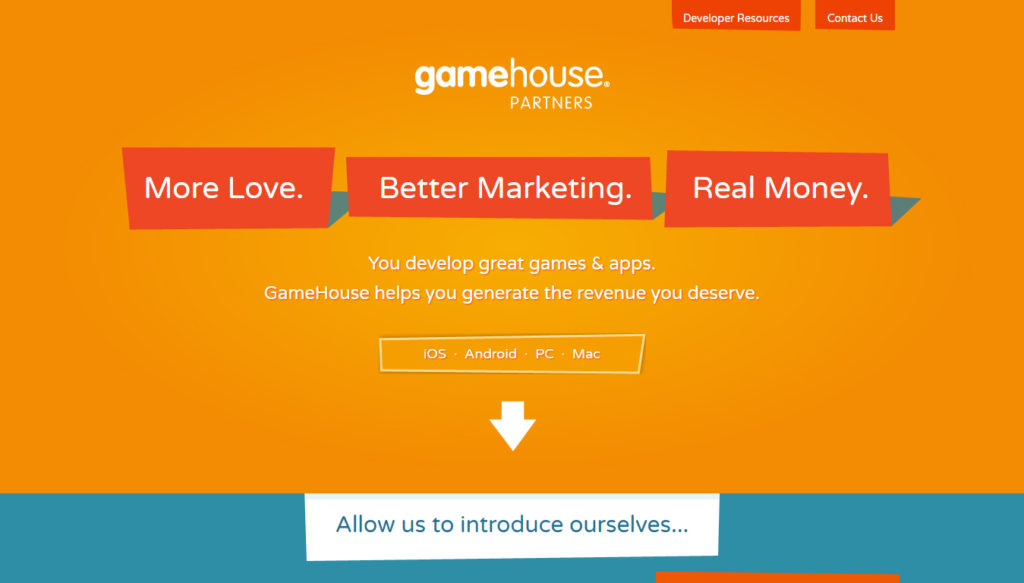
GameHouse is a studio dedicated to one mission – enriching the lives of gamers and developers by providing the best experiences and collaborations. They’re one of the largest publishers and distributors of casual games, and their games reach a global audience. GameHouse offers engaging games and more ways to play them – including social media, online websites, mobile applications, desktop applications, and more. Reach out to them here.
Glitch
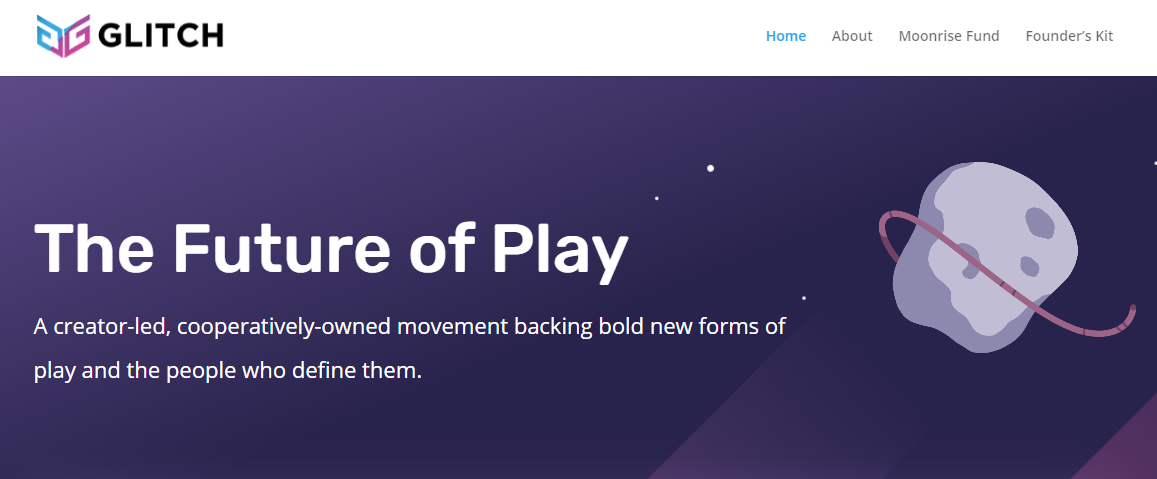
GLITCH describes themselves as an “ecosystem builder” tipping big ideas into action by backing creators who are thinking bigger and thinking differently about play. If you think that is you, reach out to them on their website!
Headup Games
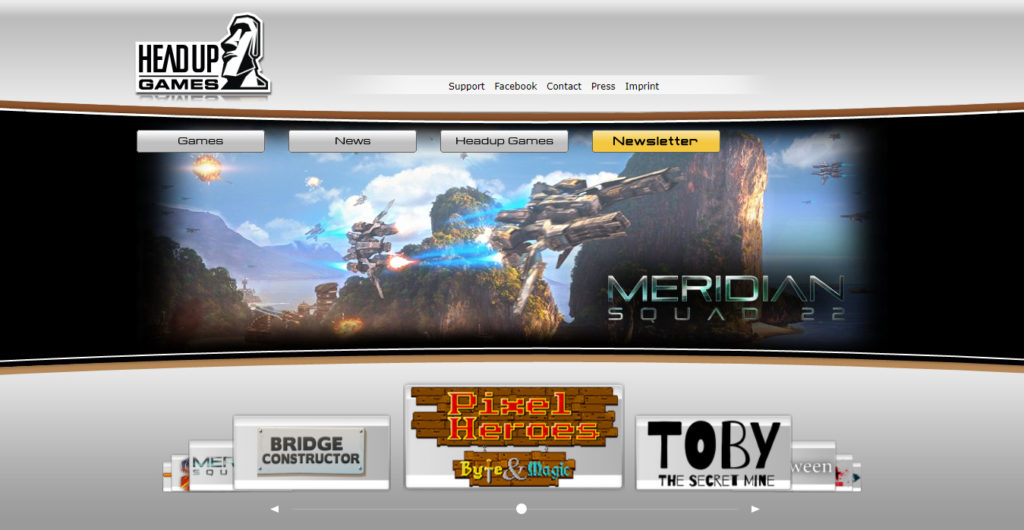
Headup Games is a games development and publishing company that supports game developers from all over the world. They’re available on all major consoles and for all available devices. Since its establishment in 2009, the company has released over 100 games. Contact them at info@headupgames.com
HeroCraft
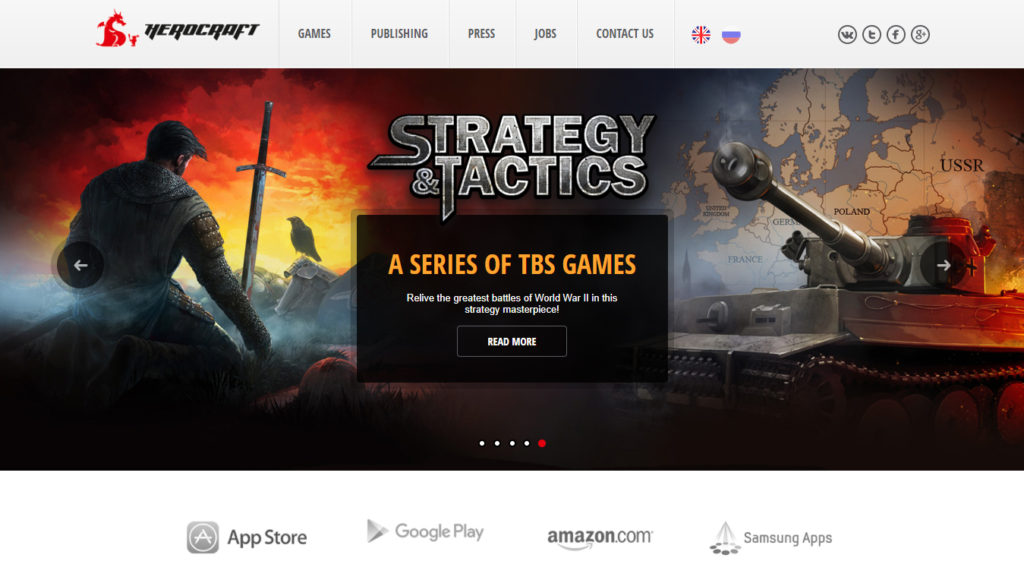
Herocraft is one of the leading game publishers for smartphones, tablets, and other handheld devices and social media networks. The company boasts a “top developer” status in Google Play, and a top-5 rank among game publishers in Google Play, with over 50M downloads. Contact them at publishing@herocraft.com.
Indie Fund
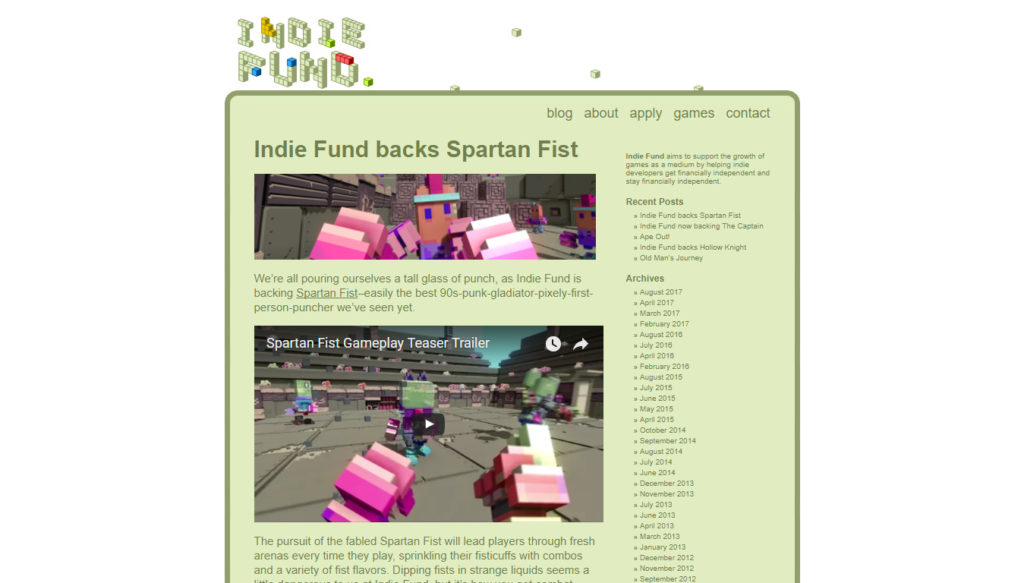
Indie Fund is a decade-old funding source and platform for indie studios and developers. It was started by indie game developers looking to encourage budding developers. They aim to help independent creators stay financially independent and focused on the project. Contact them at leads@indie-fund.com.
Ketchapp Games

KetchApp is a video game publisher that specializes in the mobile gaming market. The company promotes a healthy environment for developers, by offering a place for conversations and inspiration. They’ve worked on various games, including, Circle The Dot, Run Bird Run, Jelly Jump. Contact them at developer@ketchappgames.com.
Kongregate
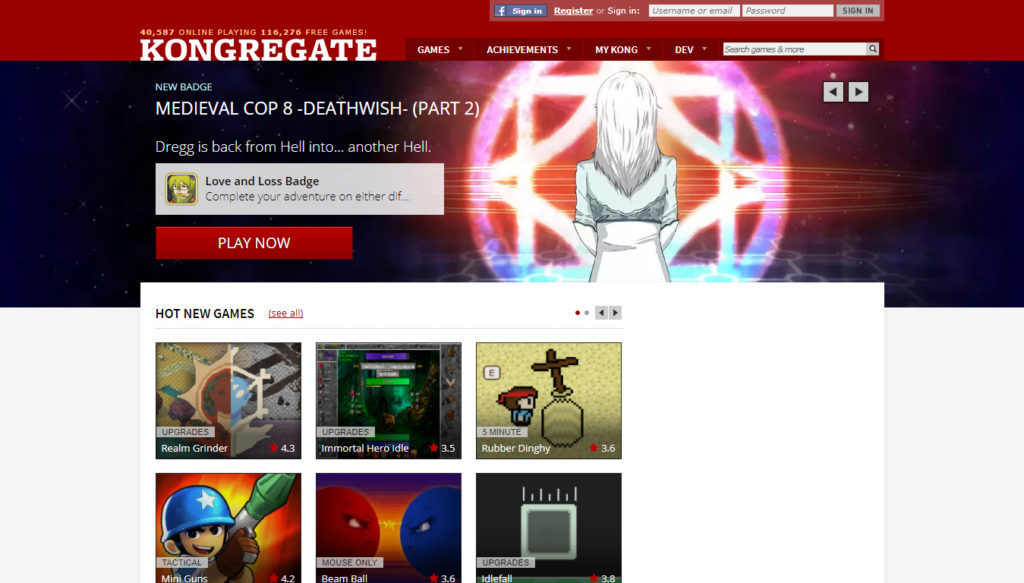
Kongregate started as an open platform for indie developers having a strong vision for games. It focuses intensely on community engagement. The studio prioritizes partnership, honesty, and collaboration. This means great games for players and an enriching atmosphere for developers. They’ve published more than 30 games, which have been downloaded over 100 million times. Reach out to them here.
Kowloon Nights
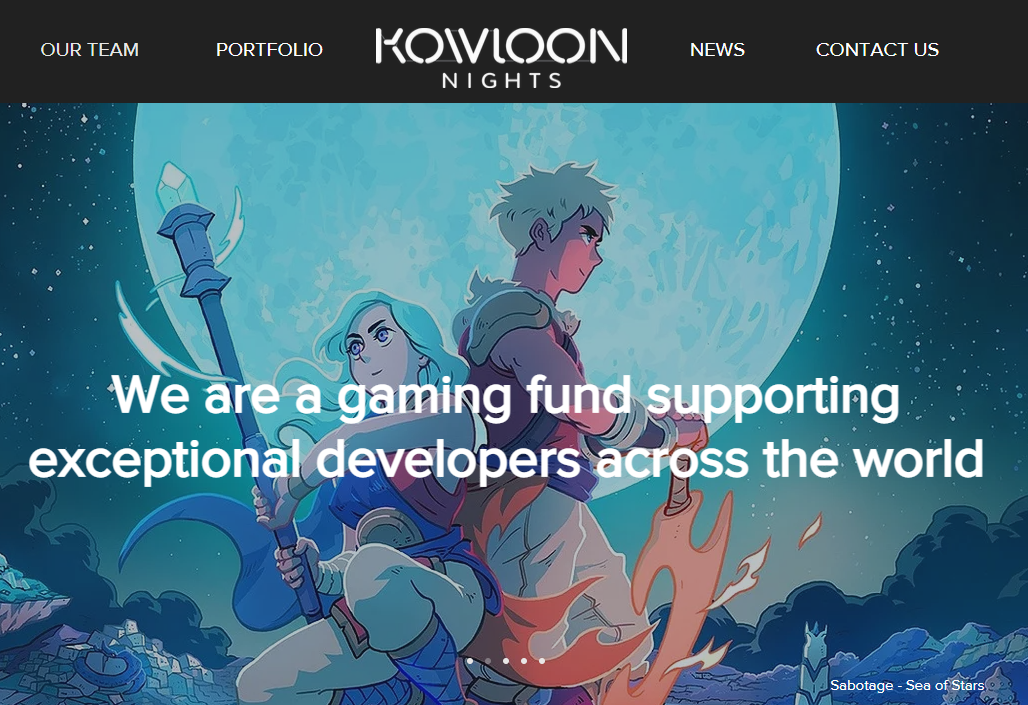
They fund premium PC and Console projects (no AR/VR, no blockchain, no mobile-first games). If that sounds like your game, reach out to them at their website contact form.
N3TWORK
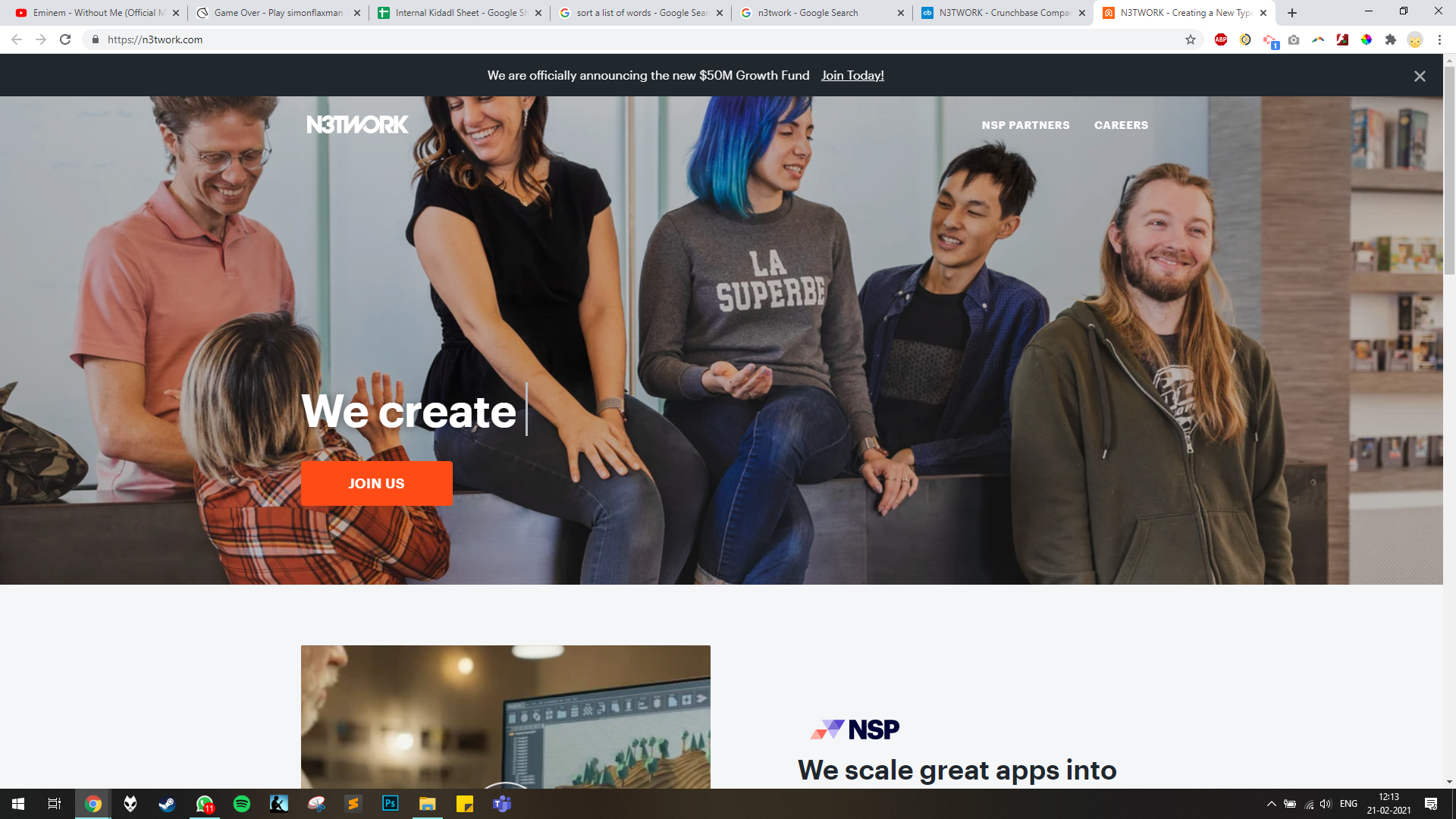
N3TWORK is a holistic company that helps game developers publish, scale, and popularize their games. They follow a community-oriented approach, so if you’re with them, you can be sure of being part of helpful communities that will last you for a long time. Visit their website to contact them!
Nanovation Labs
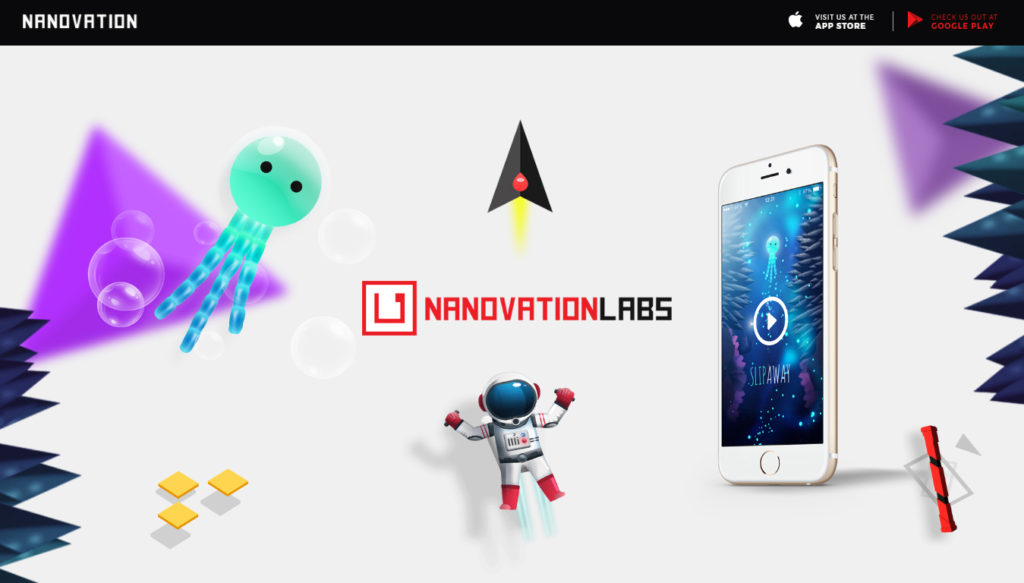
Nanovation labs is an indie game publisher focusing on mobile games. They’ve helped publish various games, including Slip Away, Hexavoid, Sky Wave, and more. Contact them at publishing@nanovationlabs.com.
Nekki
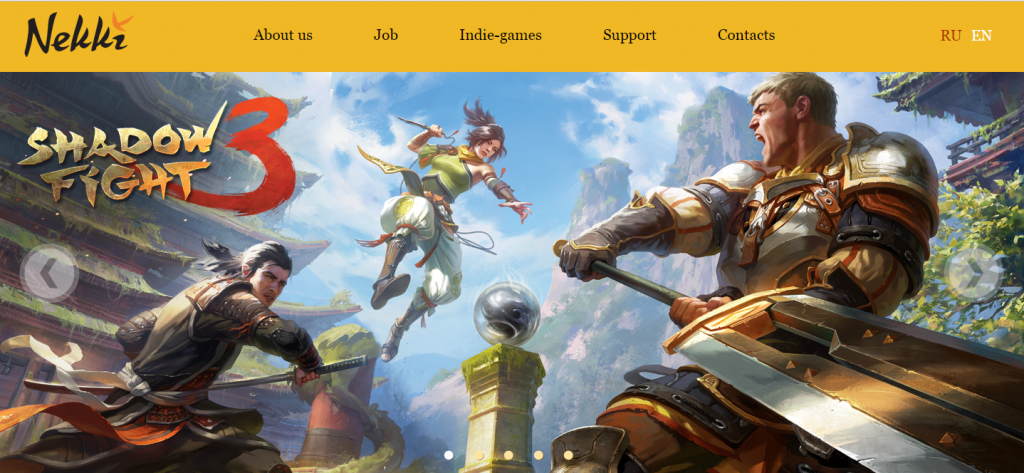
Nekki started as a browser-based gaming company in 2002. From then, it grew into a renowned mobile gaming and publishing company with currently over 150 employees. The company is globally known for games like Vector, 11×11, Shadow Fight, and more. Contact them at press@nekki.com.
Nevosoft
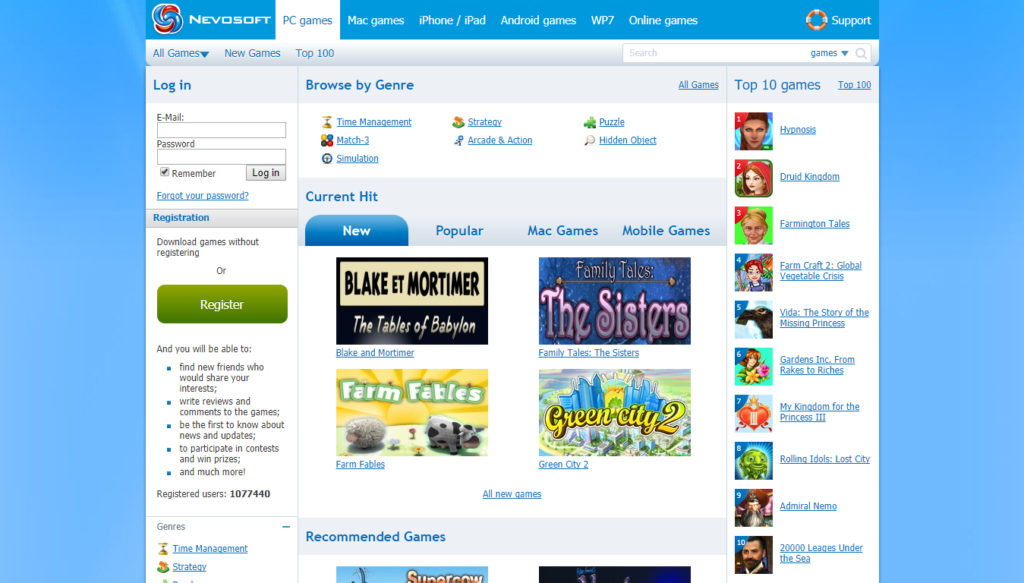
Nevosoft is one of the leading hyper-casual and casual game publishers and developers. They got known because of their hit games like My Kingdom for the Princess (1,2, and 3), Supercow, and LandGrabbers. They support games for various platforms including iOS, Android, Windows, macOS, as well as cross-platform social games. Contact them at julia.l@nevosoft.com.
No More Robots
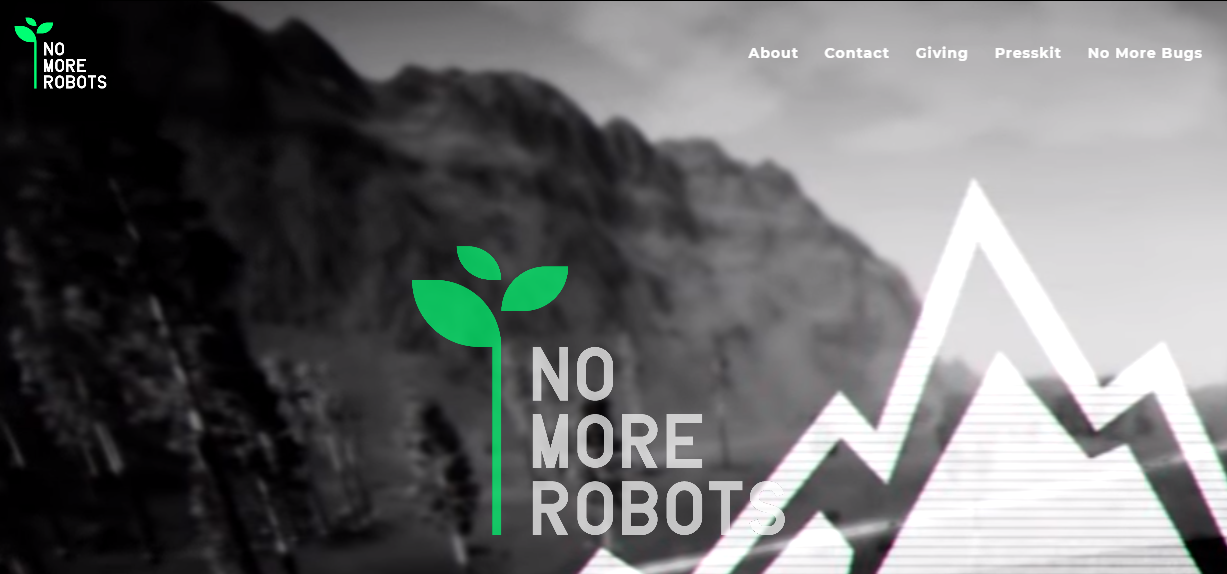
No More Robots was created by Mike Rose, an industry veteran and game critic. No More Robots is a publishing label run by real people, with real publishing experience. The goal is to work alongside some of the games industry’s greatest talent. You can contact them on their website.
PikPok
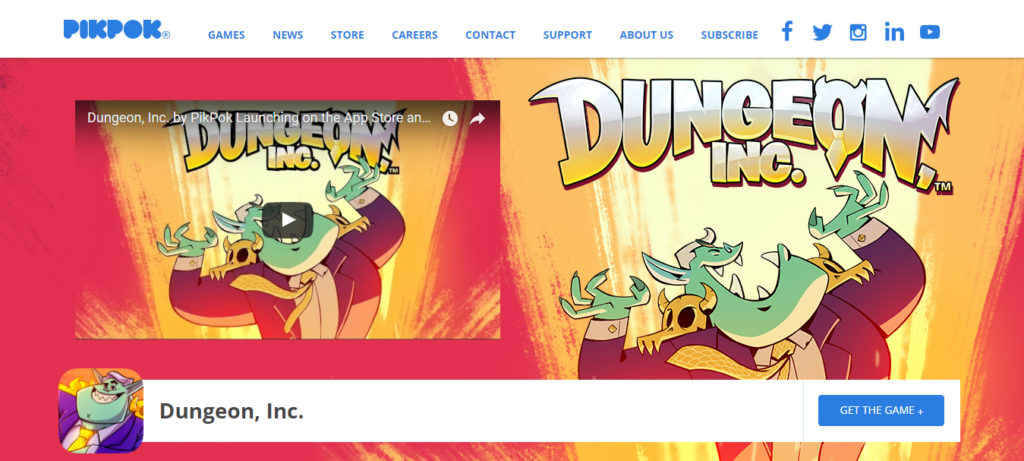
PikPok delivers fun games across smartphones, tablets, and desktops. Their games are meant to be played anywhere – from the bus stop to the dining room. The high-quality art offered in their pick-up-and-play games has earned praise from all over the world. Reach out to them here.
Renatus
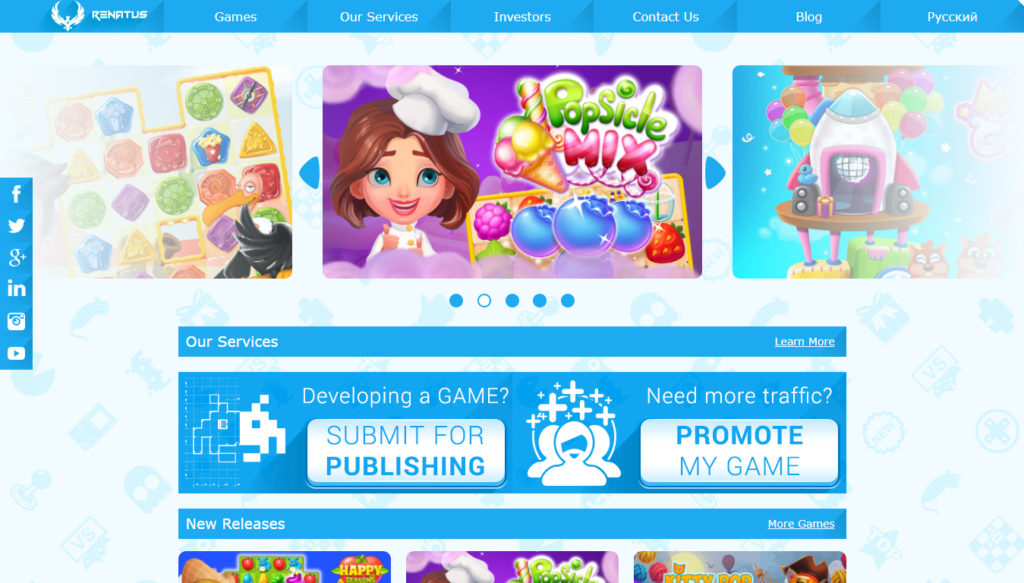
Renatus is a mobile and social media game publishing company with more than 40 successful case studies to boast for. Their games have been played by more than 50 million active users on most of the popular platforms. Renatus helps developers put the games straight on the road to success. Contact them at publishing@renatus.com.
Reverb Communications
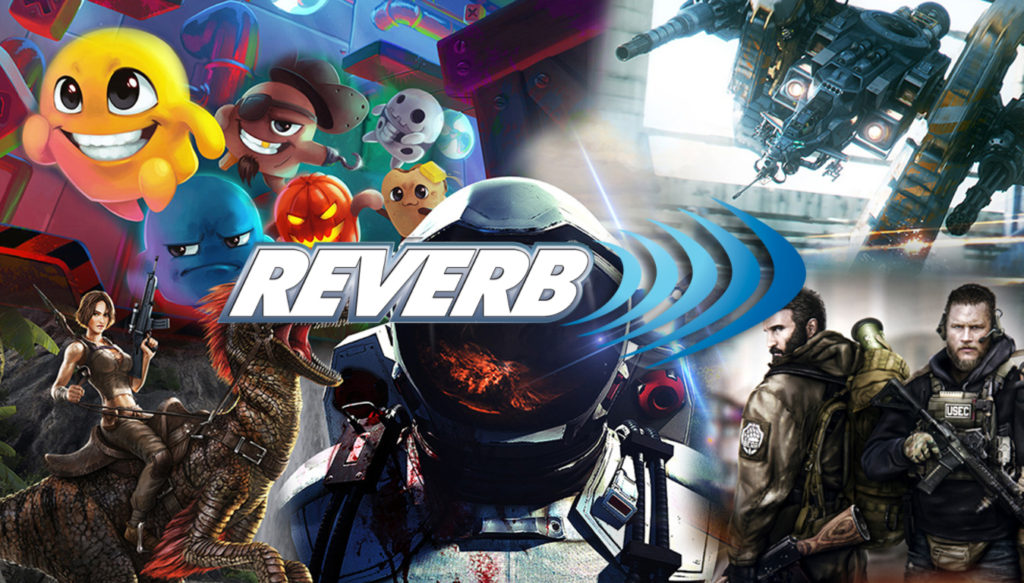
Reverb Communications is a holistic gaming agency that provides all the essential services, including marketing, public relations, sales management, and more. Their goal is to keep the messaging and targeting clear to drive more gamers, resulting in more sales of the games they publish. Reach out to them here.
Skystone Games
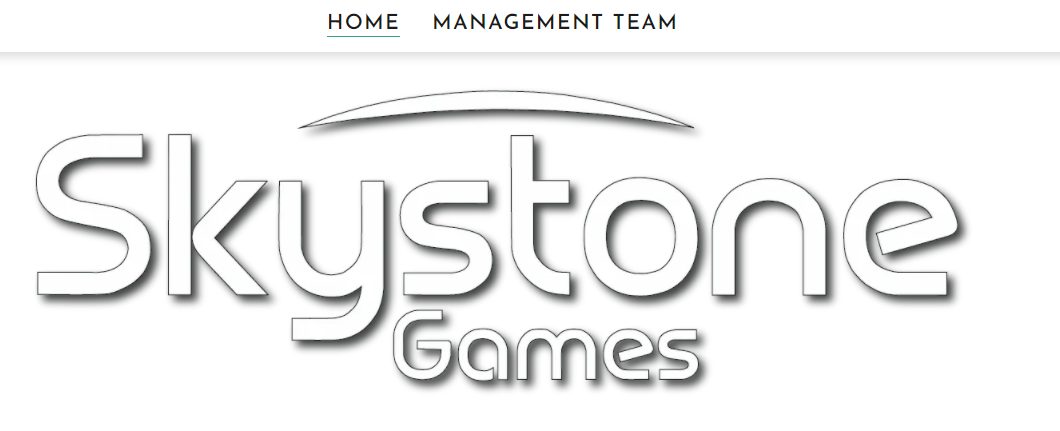
Skystone Games is a Next-Gen Multiplatform Gaming Company built for global audiences. They are not only a full service publisher, but help developers realize their dreams of creating a unique and fun gaming experience. Contact them at their website!
Square Enix Collective
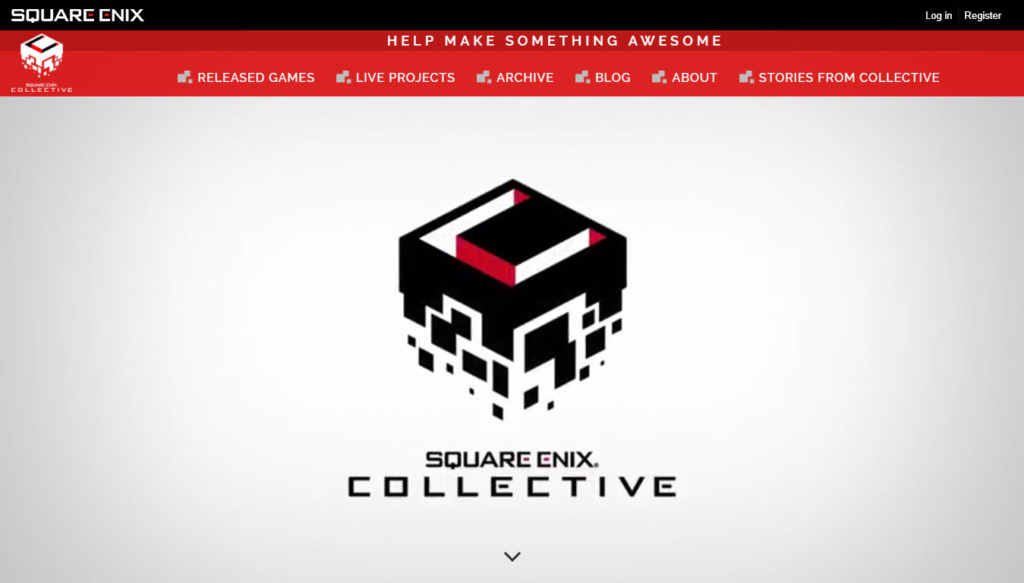
Square Enix Collector is a publishing service provider for indie studios and developers. They help them by building communities, raising funds, and supporting game releases. Regardless of the game, the developer retains the entire IP of the game. Contact them at collective@eu.square-enix.com.
Storm8
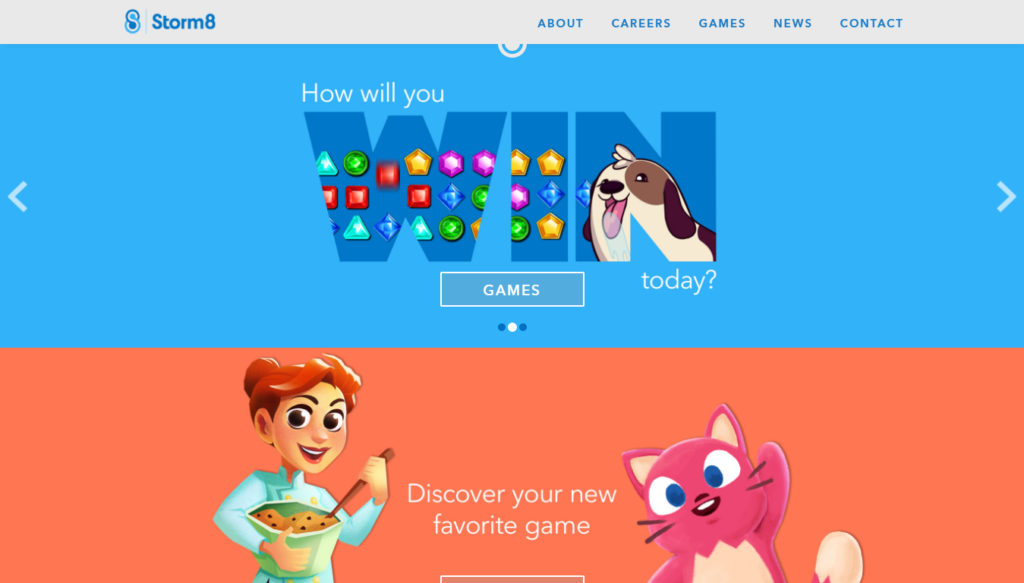
Storm8’s list of published games includes more than 60 games across multiple genres. Their games offer a world of discovery and play and offer intense storytelling and gaming experiences to keep the users engaged. Contact them at publishing@storm8.com
TabTale
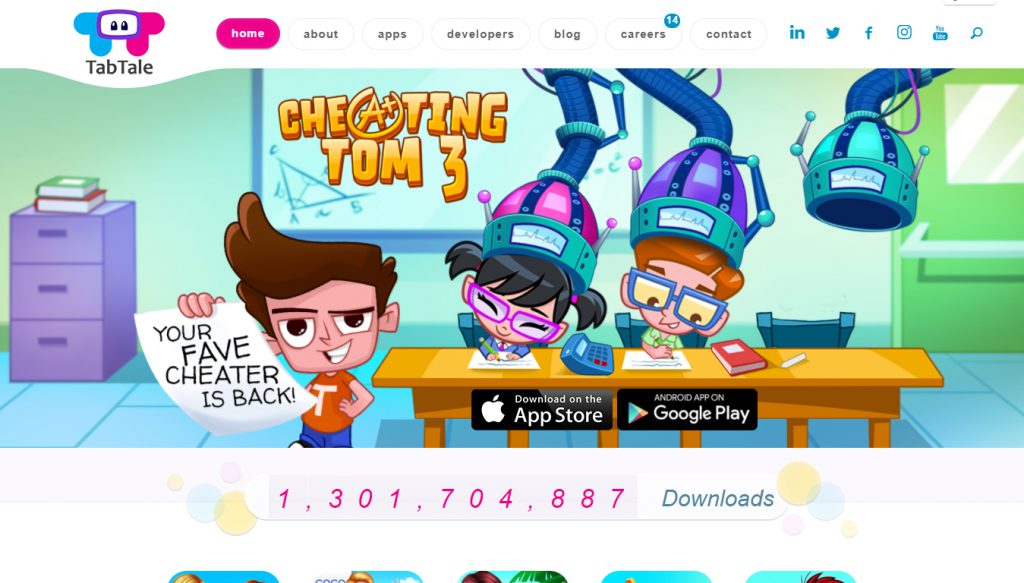
TabTale creates and supports new mobile games that can be played by the entire family, every day. Their portfolio includes a lot of original and licensed properties. TabTale games have been downloaded over 1.3 billion times, and the company has been recognized as a Top 10 Mobile Games Publisher. Reach out to them here.
Team17
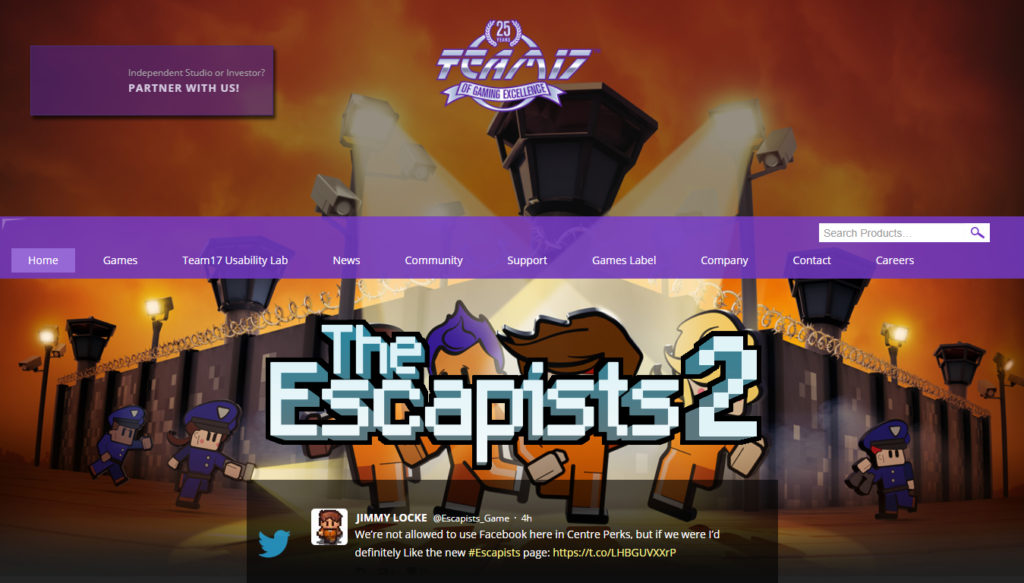
Team17 has helped publish more than 90 games across multiple platforms. These include The Escapists, Yooka-Laylee, Sheltered, Beyond Eyes, and the BAFTA winner – Overcooked. Team17 works with a wide range of talented developers and studios from around the globe. Contact them here.
Tilting Point
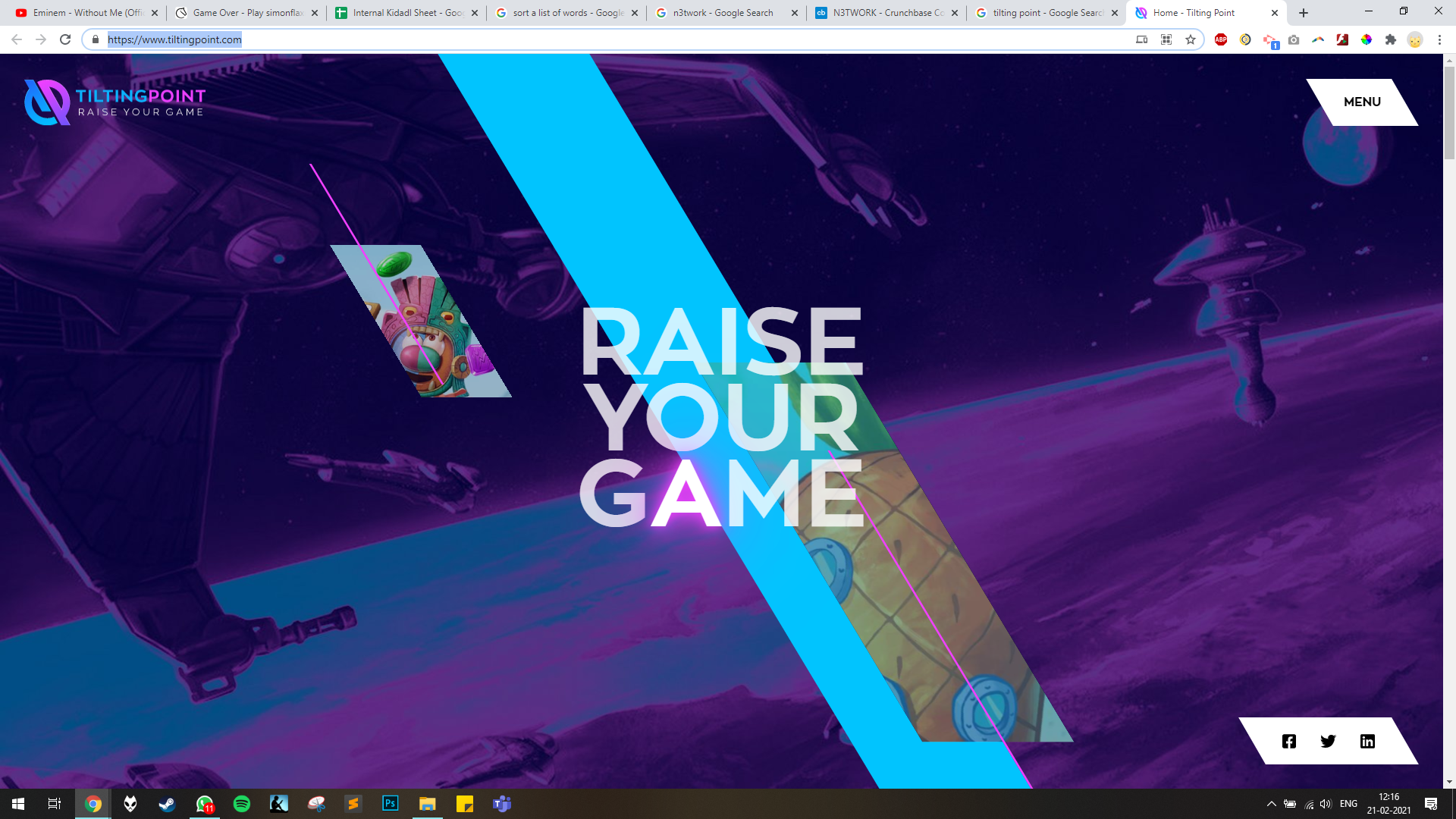
Tilting Games helps indie dev successfully publish and promote their game usign a model they like to call “Progressive Publishing”. Their aim is to build deeper relationships with partners that grow stronger with time. Go through their website to know their offerings! Or, reach out to them here. . T
tinyBuild Games
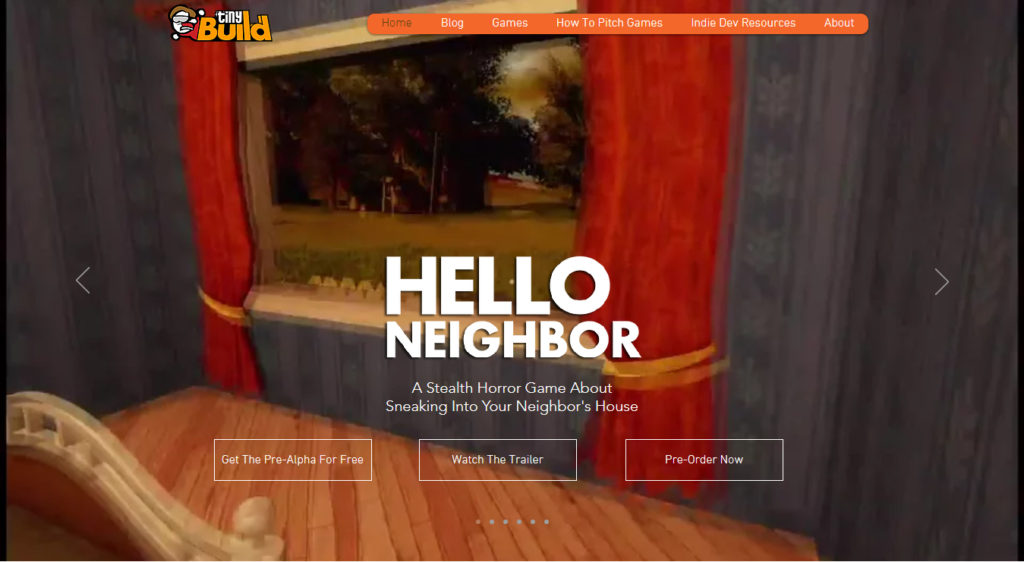
tinyBuild’s rise to prominence was with the games SpeedRunners and No Time to Explain. The company offers video game publishing services and has helped third-party developers and studios release numerous titles for different platforms across mobile devices, consoles, and computers. Contact them at contact@tinybuildgames.com.
Versus Evil
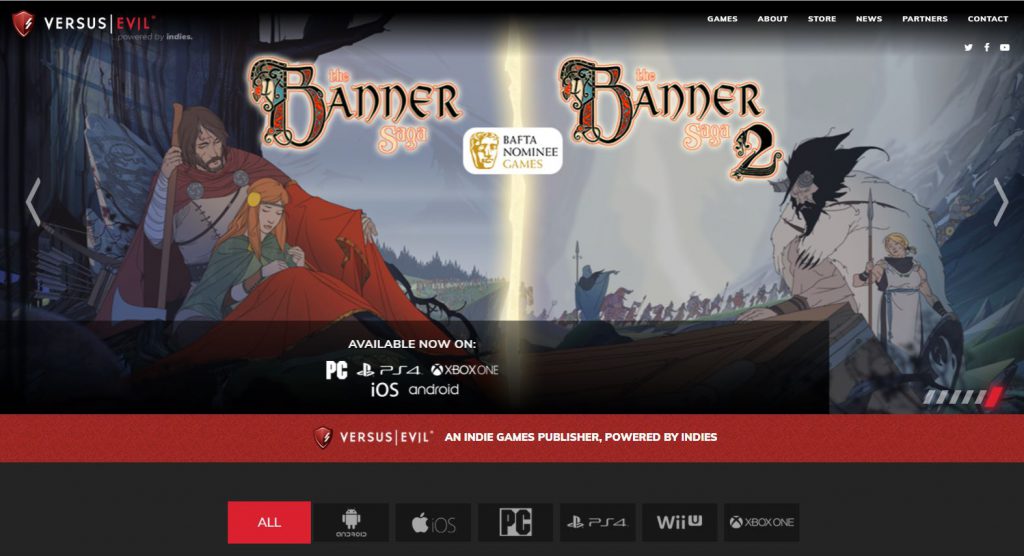
Versus Evil is an Indie publisher that works with indie developers worldwide to help them create unique and groundbreaking games across all platforms. The company believes in building partnerships with the developers, offering them all the support and advice they want while letting the developer’s uniqueness grow and flourish. Reach out to them at you@vsevil.net
Wadjet Eye Games
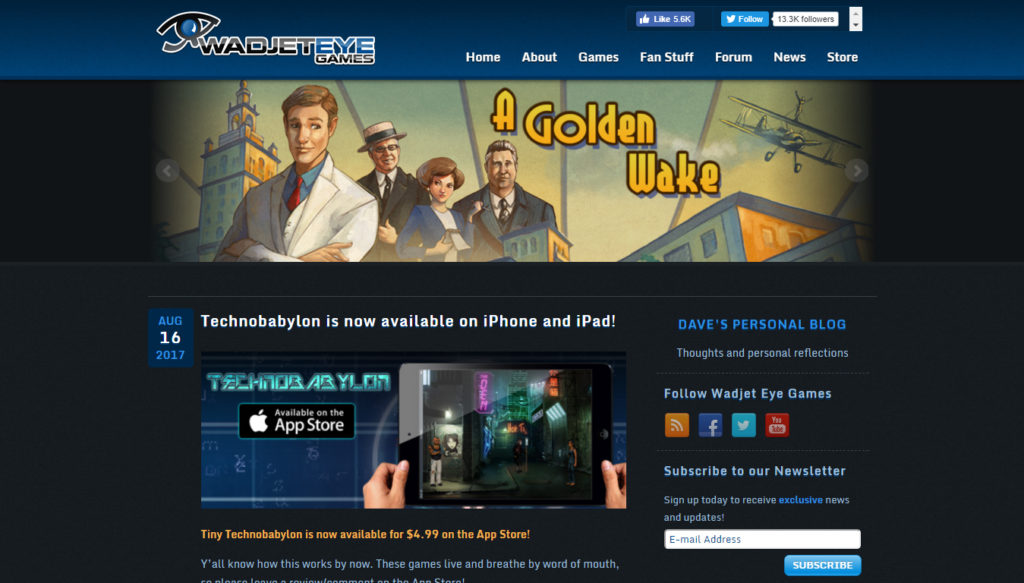
Wadjet Eye Games has continuously produced and published award-winning critically acclaimed games for the PC. Some of these games include the Blackwell Series and The Shivah, both of which have earned the Game Developers Choice Awards nomination; Puzzle Bots; Gemini Rue won the IGF Student Showcase; and more. Contact them at admin@wadjeteyegames.com
Wargaming Labs
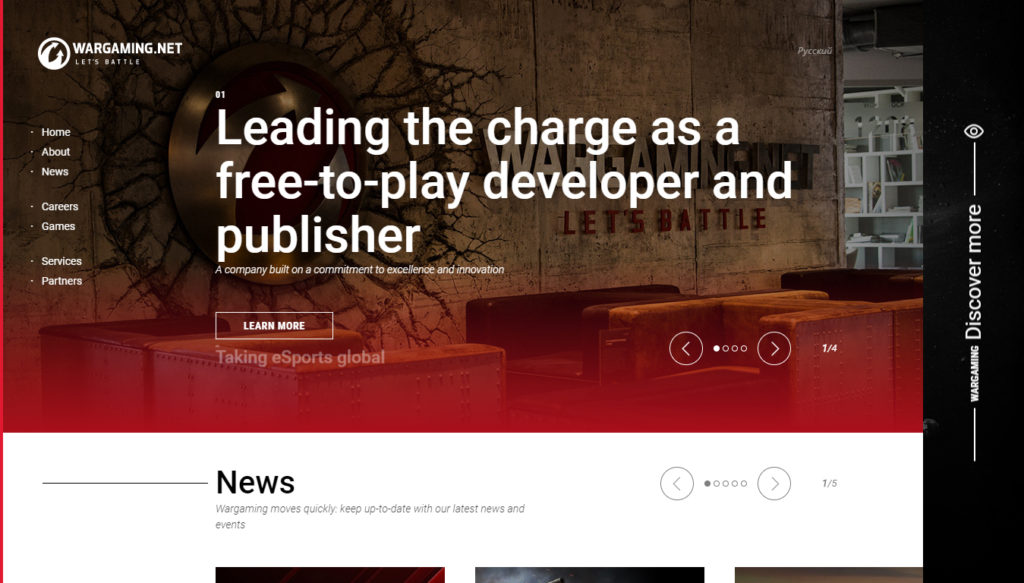
Wargaming Labs brings 18 years of game development and publishing experience. They’ve brought games on all available platforms and devices and collaborated with some industry leaders. Reach out to them here.
Yodo1
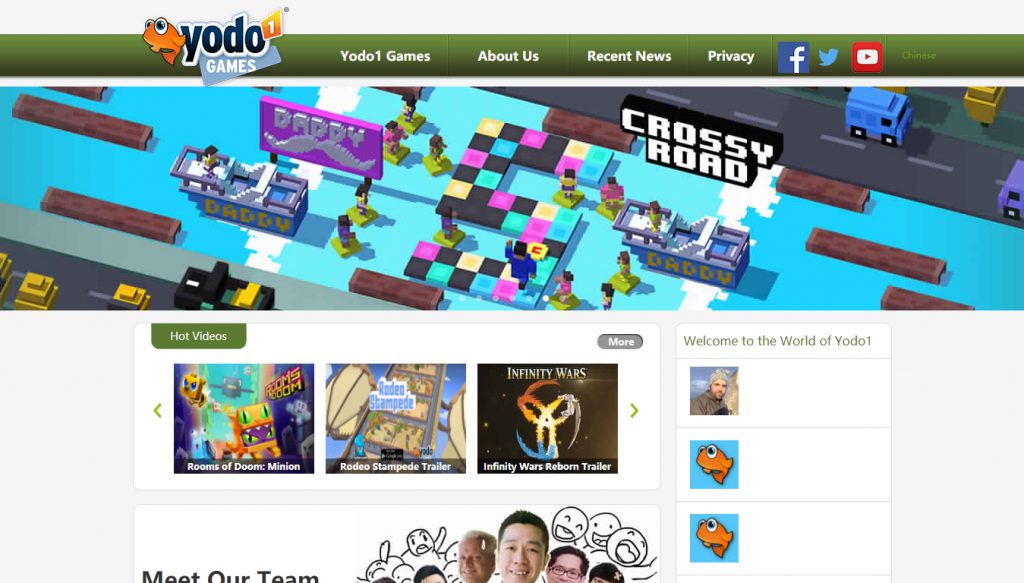
Yodo1 brings a diverse portfolio of a wide range of games, including casual, mid-core, and hard-core that cater to a worldwide audience. Some of the successful games include Rodeo Stampede and Crossy Road. Yodo1 is a holistic publishing partner for developers looking to expand their audience. Contact them at info@yodo1.com.
Zillion Whales
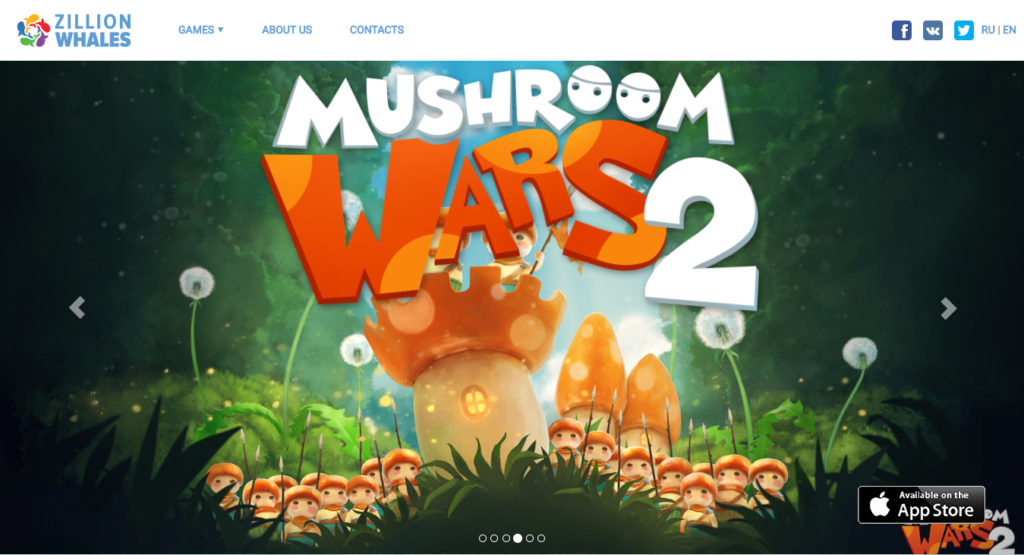
Zillion Whales is a team of experienced game developers, designers, marketers, producers, that help indie developers publish games on Androids, iOS, Windows, and other digital platforms. They support developers from all around the world, with a core presence in China, Russia, UK, the US, and South Korea. Contact them at hello@zillionwhales.com.
We hope that helped!
Reach out to the publishers with your game idea today! Millions of players might just be waiting to get a hand on your game.
Stay tuned to Beamable – we keep publishing resources, and a lot more, for indie developers! If you have a game publisher we missed, drop us a note!

5 Ways to Fund Your Indie Game
When embarking on an indie game project, thinking about financial requirements should be one of the first steps. There are different ways you can get funding for your indie game, as well as different implications of each.
Here is a list of some methods to fund your game and how you can apply them:
1. Bootstrapping
The most obvious (and common) way indie game developers fund their projects is through self-funding. This money comes from personal assets, friends and family, another form of employment, or contractual work.
If you’re thinking of switching full-time to game development, you’d want to build your war chest in advance. Some developers suggest up to 12-16-months of living expenses for your team or as much as is viable for you. Part-time, or spare time development is often a safer route to take.
Finding and completing contractual work requires effective time management too. Bootstrapping a game studio is effectively the process of starting your own business, so you’ll need to be mercenary with how you spend your time and resources.
Be careful though, often bootstrapping turns into Debt funding as you’ll use credit cards or other loans to accomplish your project. Make sure you go in eyes wide open about where the bootstrapping path will lead.
2. Crowdfunding
Platforms like Kickstarter and Indiegogo are popular among game developers around the globe. To make a mark on such platforms, you’ll want to back your game with a compelling concept that can be perfectly conveyed using a visual teaser/trailer.
Kickstarter, in particular, is very competitive. So, you might want to read this guide from Anya Combs, Kickstarter’s Director of Games, before you start looking for funding on the platform.
Patreon can be another great option – especially for smaller projects where you expect to build a community iteratively as you create content around the development process so other people (and future players) can follow along and support your progress.
The hardest part of crowdfunding is building a strong audience before you have the product. Getting players for a finished game is hard enough. To crowdfund, you need to attract players before you start building. It’s no small task, but many projects are able to achieve it.
3. Project Funding
Under this model, you go out and find a game publisher who pays for the development cost of the game. Generally, this is done in advance against all future revenues.
Once the game releases, the publisher recoups these costs along with other auxiliary expenditures like localization testing, marketing, or promotion fees. They will then take a share of all additionally generated ongoing revenue in perpetuity.
Game developers, in most cases, retain the intellectual property rights to their game and assets, allowing them to make as many sequels or future versions of the game as they please. They also won’t have to give up any equity in their company to the publisher.
The publisher definitely adds value to the entire game dev lifecycle (in marketing the game, finding players, and more) but this model of funding indie games works best when developers understand the compromise they’re making between long-term rewards and upfront cash.
4. Grants and Tax Relief
Many countries offer tax relief as well as grant funds to support indie game developers. Here’s a starter list of grants that you can check out for your next game;
- Indie Fund
- UK Games Fund
- Creative Europe
- Unreal Dev Grants
- Cry Engine
- Wellcome Trust
- Ancient Games Fund
- Fig
- Creative England
- Video Games Tax Relief
To find more, pay attention to announcements in the gaming press, and hunt around on Google and in the game dev communities.
5. VC Funding
While historically the gaming sector would get opportunities for seed funding through corporate development initiatives or through government funds, it has seen a large chunk of interest from traditional venture funds as well.
Some of the popular names in the venture funds category included London Venture Partners, Makers Fund, and Play Ventures, while in the more traditional side of things there were names such as NFX, Greycroft, Andreesen Horowitz, Khosla, Lux, and many more. Even with the pandemic playing out in full force, by Mid 2020 (Q2), VC investments in gaming had seen figures as high as the entirety of 2019, coming in at well over $700m.
Read more about this on our guide to getting funded by VCs.
Get funded. Get moving!
The above-mentioned list is not exhaustive, but it’s definitely tried-and-tested. Let us know your thoughts, and if you think we’ve missed something – please drop us a comment!
We hope this article clarified some of the doubts that you had around getting your game funded, and now you feel a bit more confident while thinking about the finances for your game. At Beamable, we’re constantly striving to provide the best of the best to indie game developers like you.
Follow us on social media for regular resources, and check out our low/no-code tool to simplify most of your game development woes, so that you can focus on the bigger picture!

New Beamable Release! Tournaments, Google, Content, and more!
The team is excited to announce the release of the Beamable Unity SDK version 0.0.123
New Feature – Tournaments
Tournaments allow players to compete on a leaderboard while introducing an element of progression. Tournaments are subdivided into tiers, which are subdivided into stages with defined intervals. Players either advance, regress, or remain in the same stage according to their rank. When this occurs, players are also granted rewards according to their rank in the leaderboard. This can recur indefinitely, or until the tournament ends.
Documentation can be found here: https://docs.beamable.com/docs/tournament-feature
- Implemented Tournaments Client APIs.
- Implemented Tournament Content Definition.
- Implemented Tournaments drag and drop UI.
- Developers can schedule Tournaments.
- Developers can end Tournaments.
- Developers can lookup player participation in Tournaments.
- Tournament rewards are claimable in game.
- Tournaments leaderboards utilize the VirtualList to support many entries.
- Tournaments color palette changes according to Tier (e.g. Bronze, Silver, Platinum, Diamond, etc.).
- Tournaments show an information page.
New Feature – Google Sign-in
In addition to Facebook and Apple sign-in, Beamable now supports Google sign-in on Android devices. This feature will be extended in a future release to support Google sign-in on all devices.
Documentation can be found here: https://docs.beamable.com/docs/adding-google-sign-in
Content System Modifications
Beamable now supports polymorphic content. Content classes can be subclassed and inherit fields and methods from base types. Content references support polymorphism, too. This feature is especially useful for items and player inventory. We have also added the ability for you to “tag” content. Content tags enable you to organize, query, and fetch content across different types. You can set a content’s tags through the Inspector Window. The Content Manager Window has a built in search capability, allowing you to query for content by tag, name, or type. Content can also be downloaded into Unity from the Beamable Cloud.
Documentation can be found here: https://docs.beamable.com/docs/content-manager
- Previously published content can be downloaded back into Unity as scriptable objects.
- Content can be tagged.
- Content Manager Window now supports content filtering by tag, type, or name.
- Content Manager Window now allows content creation in 2019.
- Content Manager Window no longer throws errors on content renaming.
- Content Manager Window arrow directions more accurately represent group state.
- Content Manager Window removes UndoPro dependency. “Undo” support is no longer available for content deletion.
- The Portal view of content no longer displays the content version string.
- The Portal view of content shows content tags.
- The Portal view of content now shows the content type and name on different lines.
- Content classes are now only valid if they have a [ContentType] attribute.
- Content classes can now extend from any class that has a base type of ContentObject.
- Content can be stored anywhere in /Assets/DisruptorEngine/Editor/content, instead of having forced subdirectories.
- The Content Serializer has been rewritten with fewer dependencies.
- The Content Serializer won’t serialize private fields, unless forced.
- The Content Serializer will serialize any field marked with the [SerializeField] attribute, regardless of protection level.
- The Content Serializer will never serialize a field marked with the [IgnoreContentField] attribute, regardless of protection level, or the presence of a [SerializeField] attribute.
- A Content Manifest can be acquired at runtime. The manifest can be filtered by tag, type, or name.
Beamable Portal
In our last package, in the toolbox inspector window, the “Open Portal” button would launch Unity’s internal browser to display the portal but we found this workflow to be lacking. Instead, we will now pop open an external browser to display the portal.
Google Play Support for Unity IAP
Beamable now properly supports Google Play with Unity IAP
Bug Fixes
- Cloud Saving now allows client code to be executed in the event that cloud saving errors
- Cloud Saving is now server-authoritative in the case of a tie-breaker.
- Cloud Saving now allows for multiple functions to be registered on content download.
- Portal can now render items that have no properties.
- Content Objects in Unity that don’t have the Content Attribute no longer render in the Content Manager.
- Fixed out of range exception in ContentPublisher when batch size is less than count.
- Exception no longer thrown on first login in the Account Flow.
- Fixed excessive reimporting of assets in Unity 2019.4+
- Content Links now properly render a property drawer.
- NoConnectivityExceptions should now occur when internet connectivity is available.
- Portal no longer throws invalid token when switching realms.
- Fixed error seen when fetching Stats or any cacheable data.
- Fixed NullReferenceException error in Content Manager on initial open.
- NoConnectivityException error no longer pops up when the user accesses the New Account button.
- Admin Console – Removed case sensitivity and normalized casing of commands.
- Standardized Min/Max Values for Beamable UI windows within Unity
Known Issues
These are issues that could not delay this release, but which we are aware of, and plan to address in a fast-follow patch release.
- Due to a device-specific bug with Cloud Saving, it is currently functional in editor, but disabled on device.
- Tournaments default content (upon creation) contains a badly formatted date string (2020-01-1T12:00:00Z should be 2020-01-01T12:00:00Z).
- Newly created content appears as changed even after being deployed unless it contains base as its first tag.

Beamable sponsoring a Game-A-Thon Game Jam in India
Beamable is excited to announce a partnership with the Pehel Foundation(NGO) in India to host an area GAME JAM. We’ve had so many great conversations with studios in India and felt this would be a great way to enable the creativity of game makers and support a great cause.
We are excited to be in partnership with:
Here at Beamable, we fight for the game maker with tools and technology to help make games faster. We are supporting this 48-hour game jam so that game developers like you can find inspiration, motivation, and support from the India indie dev community. All proceeds from the game jam will be donated to Pehel Foundation for organizing blood drives and food drives.
We’ve published a blog post about how to be successful at a game jam. Check that out here:
The Power of Game Jams: Becoming a Better Indie Game Dev
Also check out a few of these helpful guides about how to best take advantage of the Beamable Live Game Platform at game jams, or during your game prototyping phase!
To get started with Beamable during the game jam, sign up now!
Event details
- Dates: 16th – 18th October, 2020
- Entry fees: Minimum ₹100 (you can pay more as well. All amount collected will be donated)
- Day 1: 16th October – Live session with experts from the industry. They will be open to QnA.
- Day 2 and 3: 48 hours game development challenge. Rules and theme will be shared during the live session.
Sign up here: https://forms.gle/W4kJTM2UWw6SJB327

Game Dev Assets To Help You Make Games Faster
Beamable understands the struggles of indie game development and thoroughly appreciates all the efforts that developers put into producing their brilliant games.
Having collaborated with many game studios, we know that one of the hardest and often the most irritating parts of game development is finding relevant assets for your games.
To simplify that, we’ve created this mega list of assets to help you make games faster.
- 2D
- Graphic Collections
- Animation
2D Resources
Here is a list of 2D resources including icons, mobile game UI packs, clipart, sprites, and more.
2D Cartoon Mobile Game UI Pack
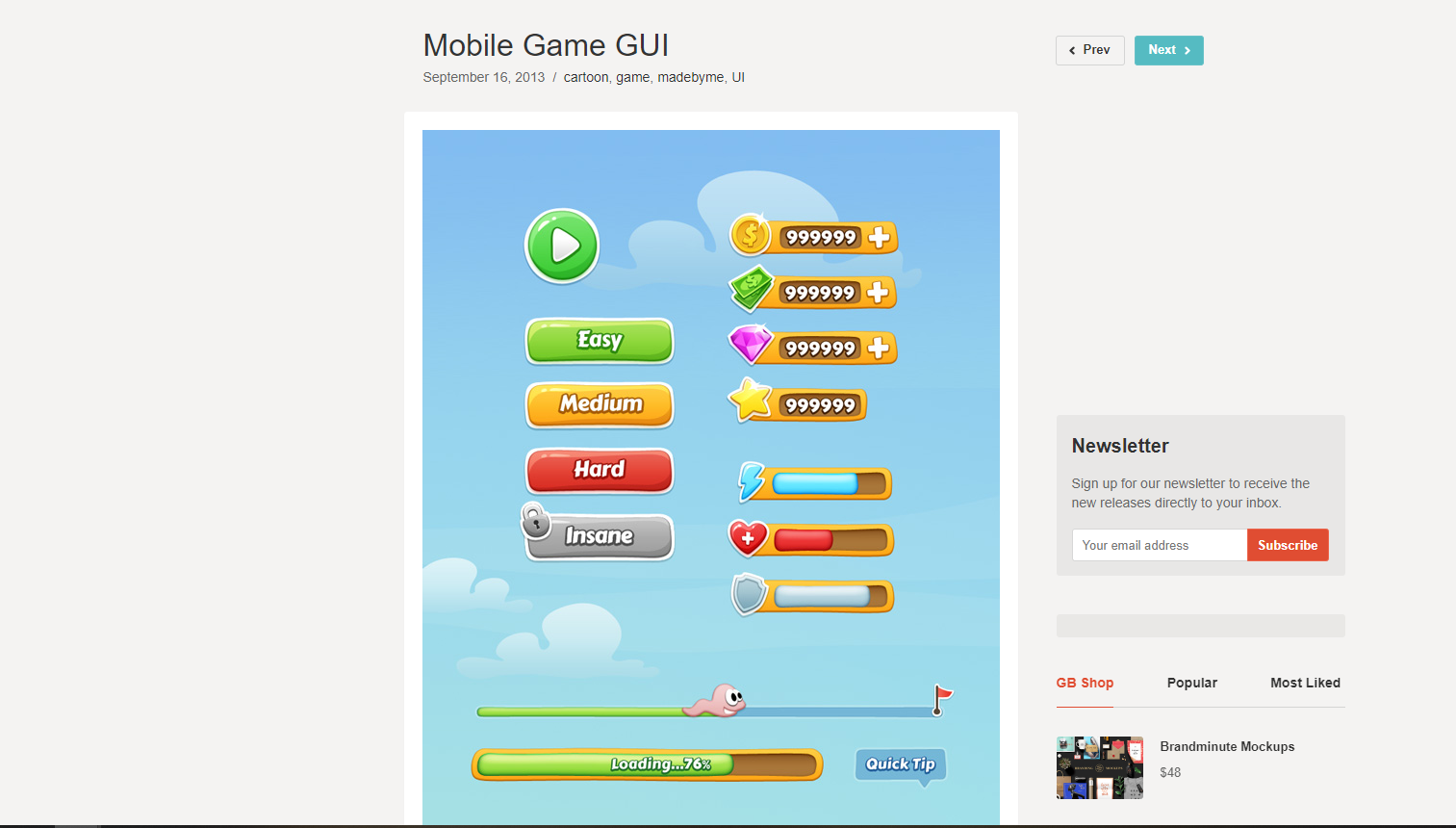
Available on GraphicBurger, this is a cartoony, colorful game UI kit for 2D mobile games. Being vector-based, this is completely customizable and resizable as per your requirements.
420 Pixel Art Icons for RPGs
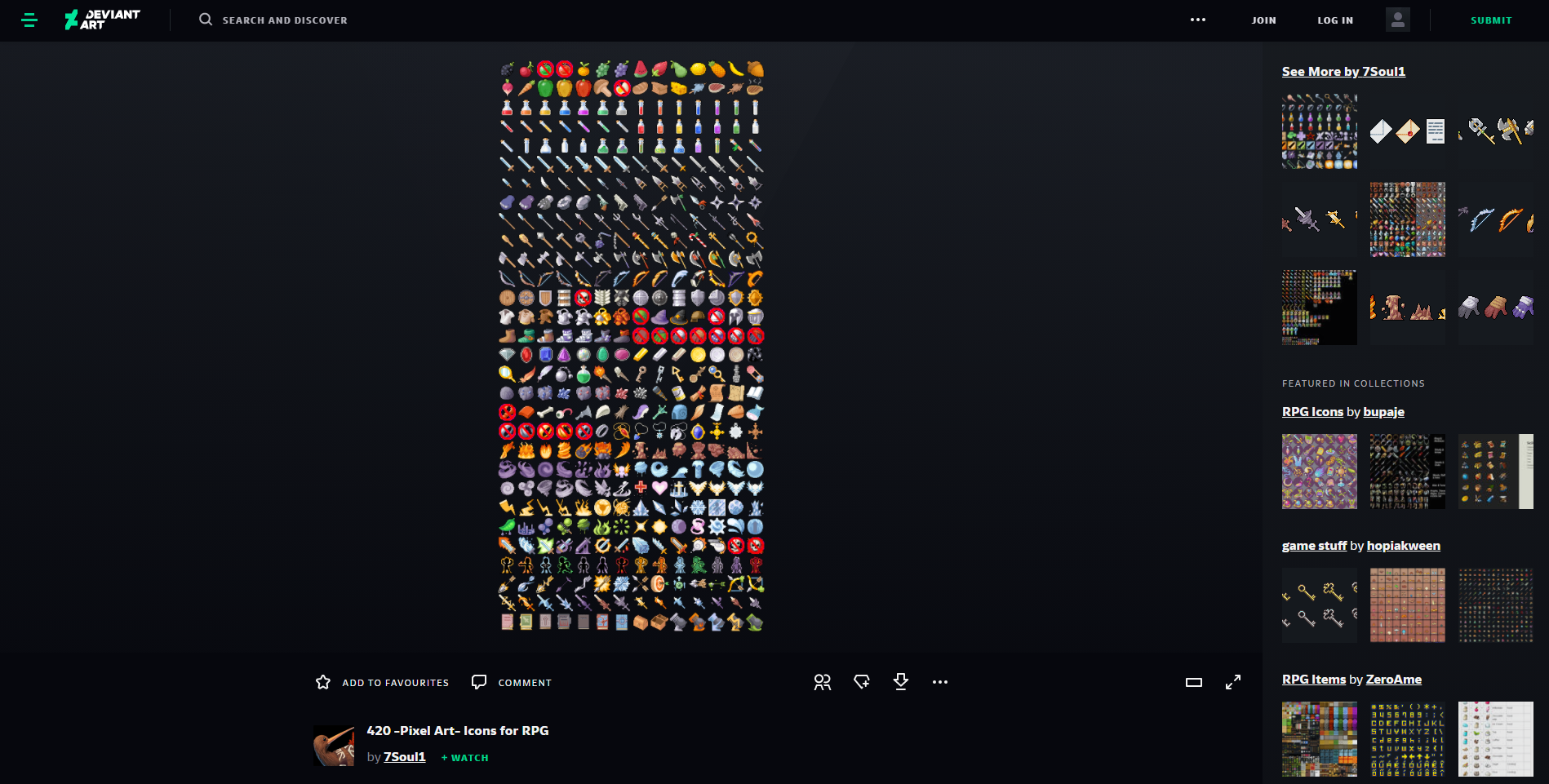
A set of 420 RPG icons, free for commercial use, without copyright restrictions. You can either download the pack with all the individual icons present in the PNG format.
Open ClipArt
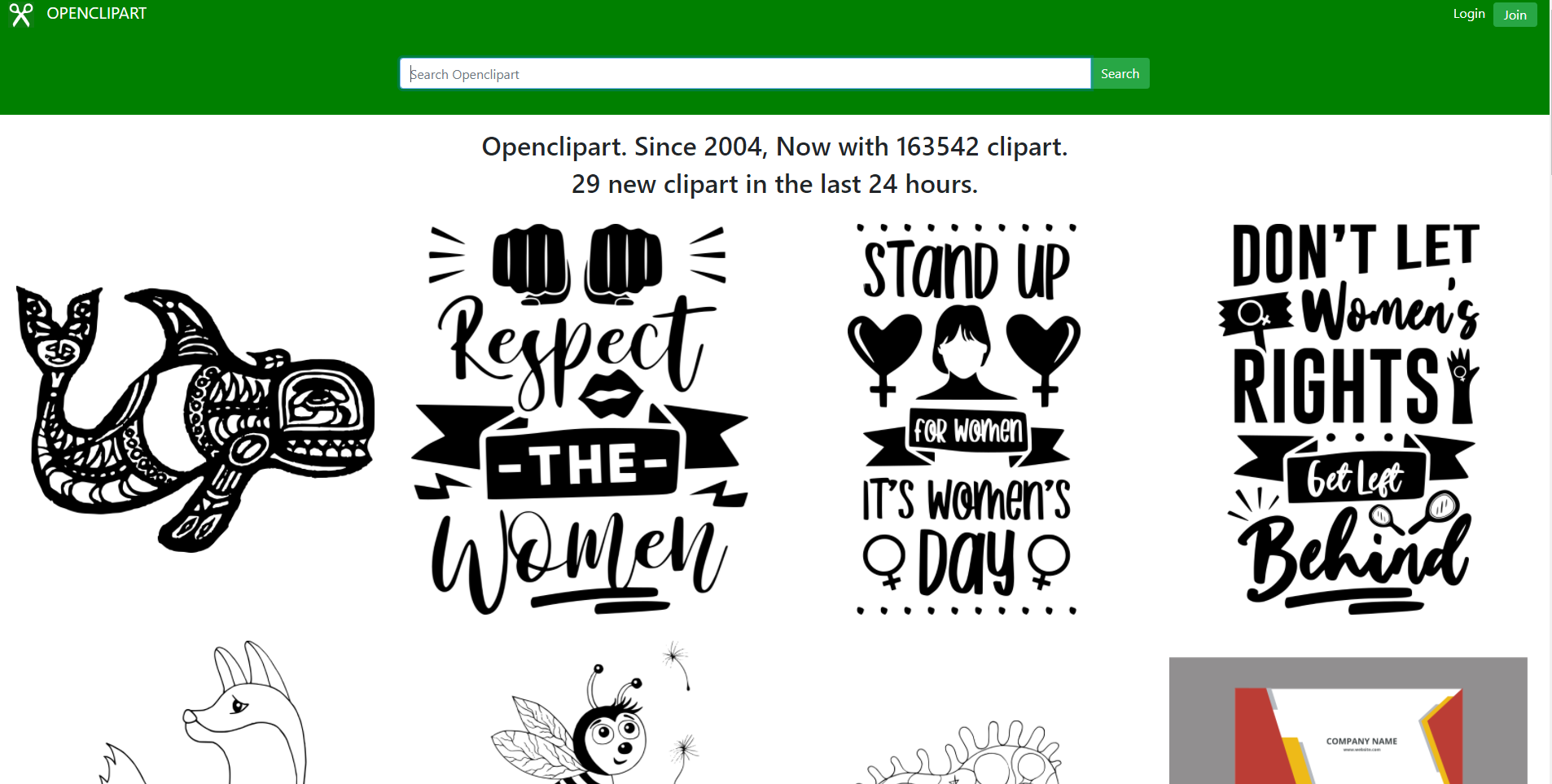
One of the most comprehensive sources for clipart. Check out this resource for more than 163k open clipart options.
Oryx Design Lab

Oryx Design lab was founded in 2012 by Christopher Barrett. It’s an art resource for game developers and features downloadable royalty-free asset packs. Oryx Design Lab has also released multiple games including Famaze, Brogue Tiles, and Infra Arcana.
Games-Icons Set
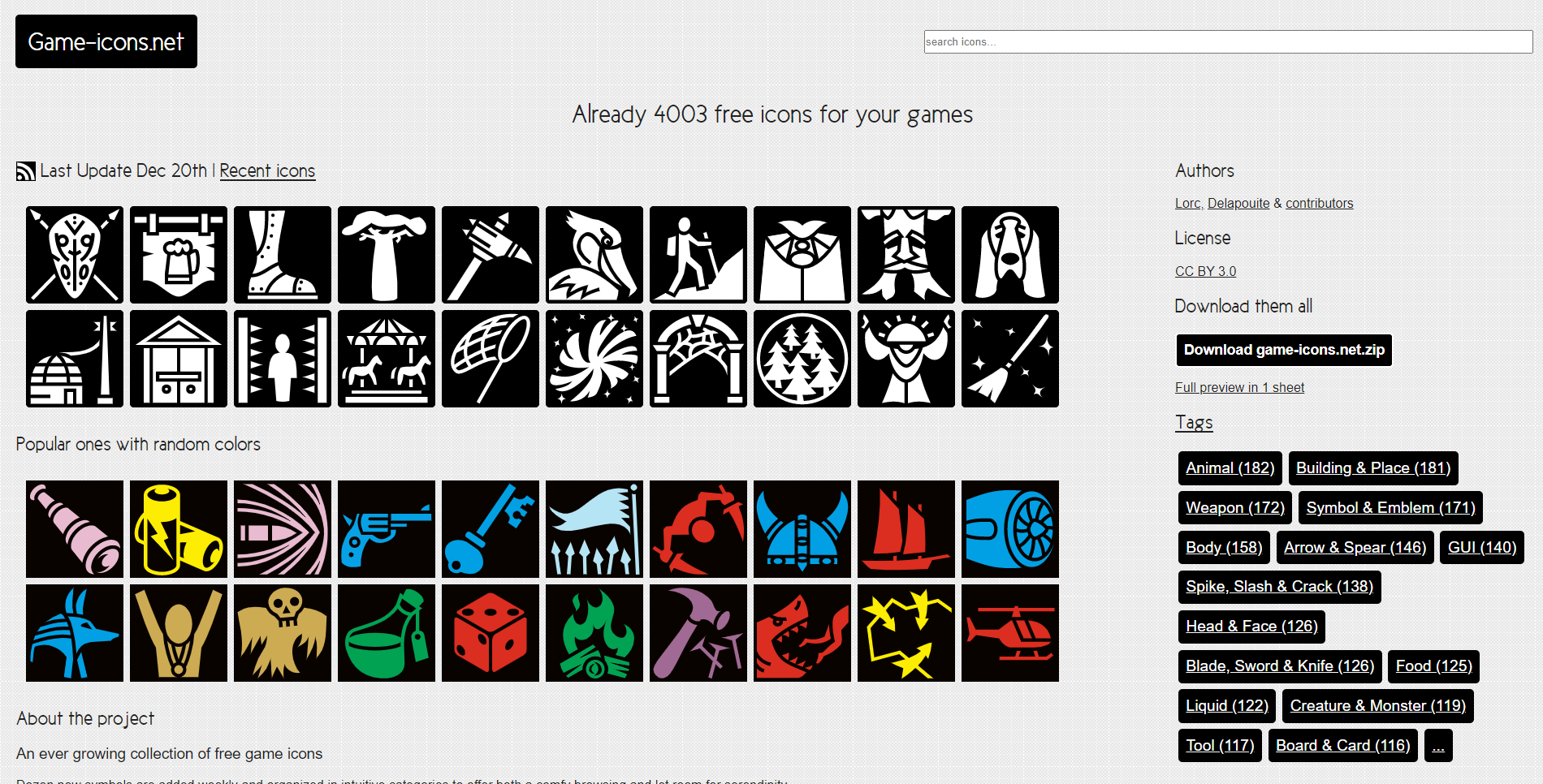
This is an ever-growing collection of free game icons. Check out the website for regularly updated symbols and icons that are organized in intuitive categories for seamless browsing and searching.
Iconmonstr
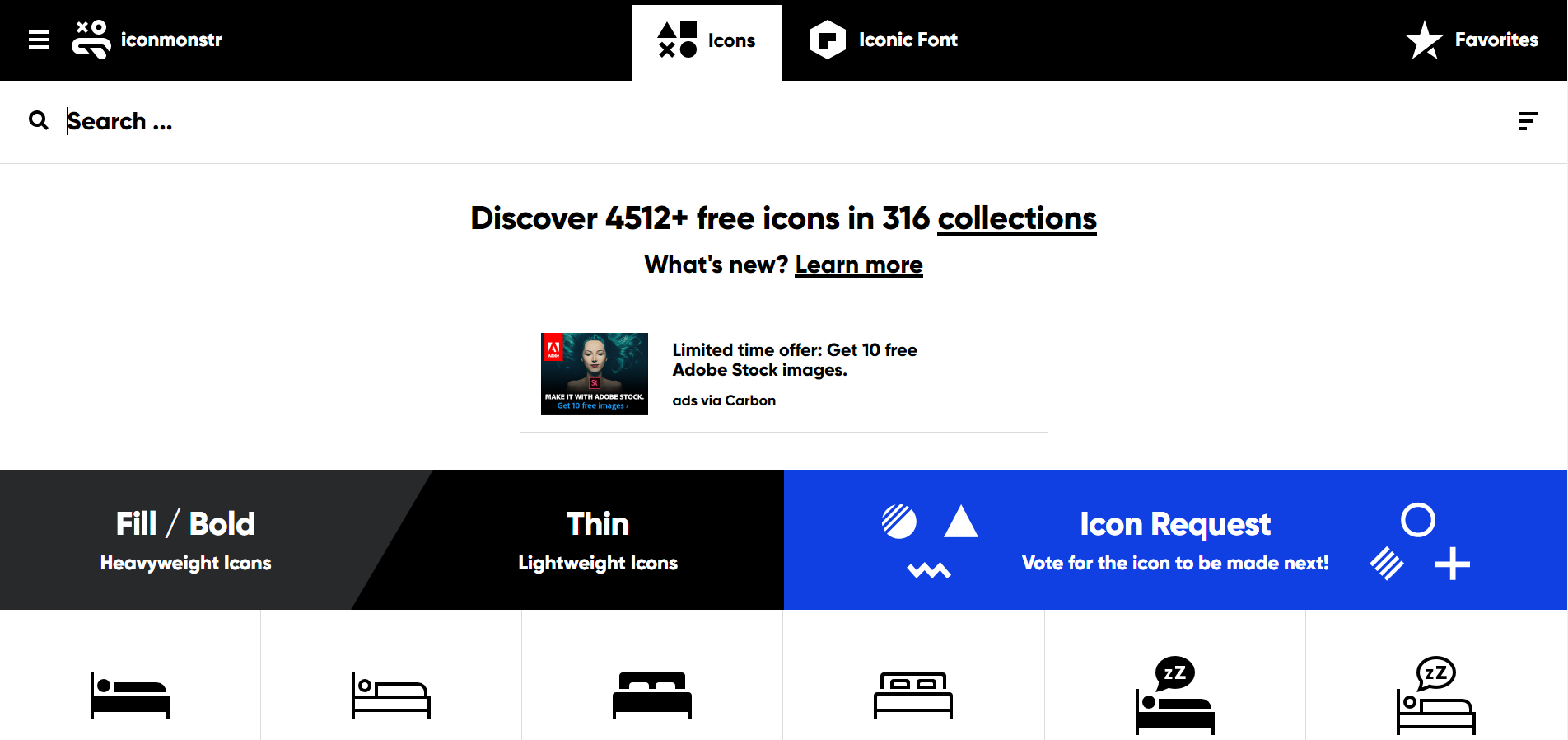
Iconmonstr is a collection of thousands of free icons categorized into different buckets, like fill/bold, thin, and more. You can also request personalized icons for your game.
Spritelib
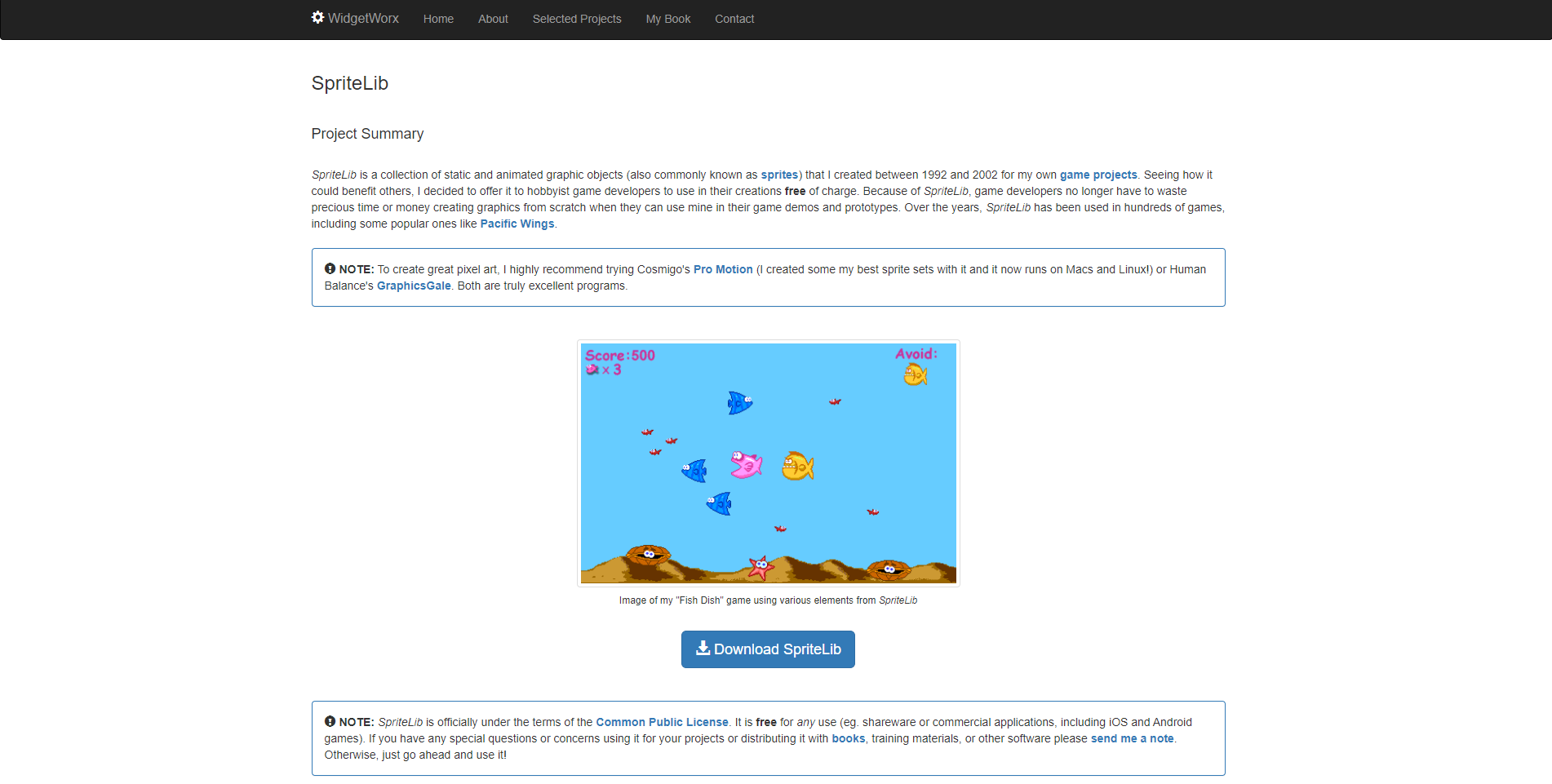
This website hosts a collection of free-to-use static and animated 2D objects (known as sprites) as created by the developer of this website. Instead of wasting your time and money in finding the best sprites, check out Spritelib and make use of the already created sprites for making games faster!
Time Fantasy
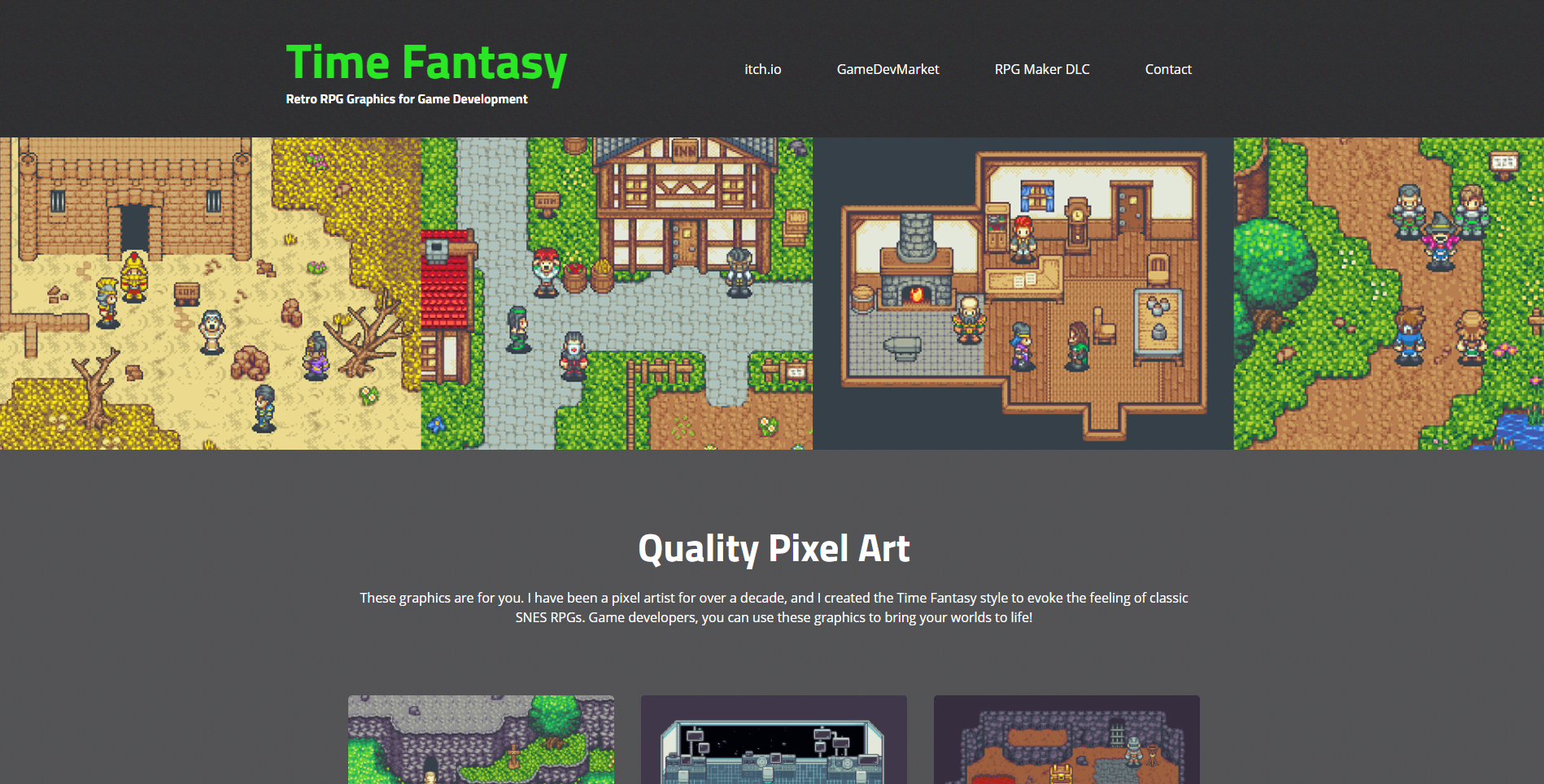
Time Fantasy is a collection of pixel arts that evoke the feeling of classic SNES RPGs. Use these in your games to bring life to your virtual worlds!
3D Resources
Check out this list of 3D resources to help you find relevant 3D models and graphics for your game!
Blender 3D Models
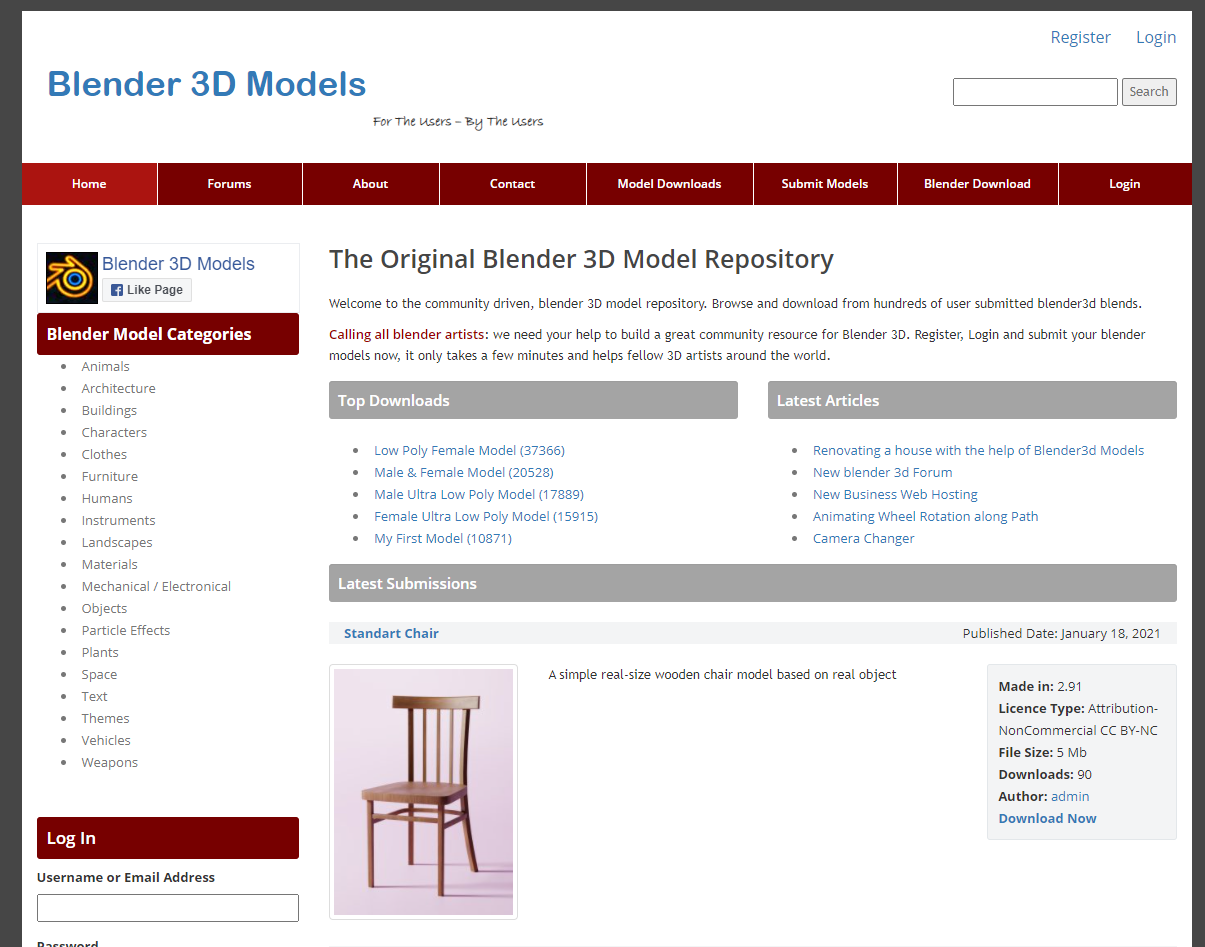
This is a Blender 3D model repository that contains thousands of downloadable blender3d blends. If you’re a Blender artist yourself, you can contribute to this database by submitting your designs, and help game developers around the world!
Matcaps
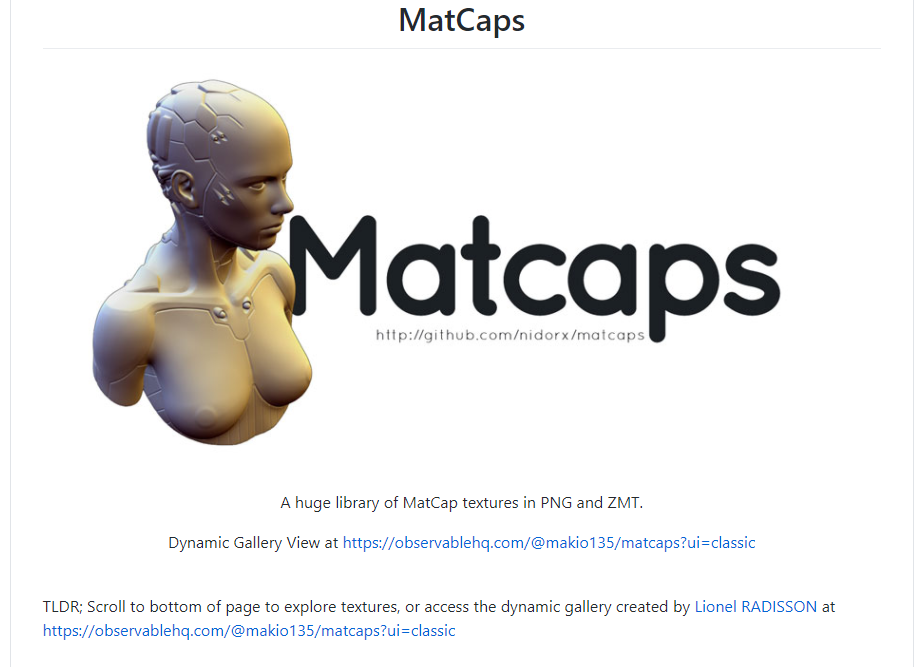
MatCap (Material Capture, also known as LitSphere) are complete materials, including lighting and reflections. MatCaps allows you to create a surface material and lighting environment simply by painting an object so that it looks like how you want your surface to appear. This opens the door to many wonderful possibilities for non-photo real image rendering.
Sketchfab
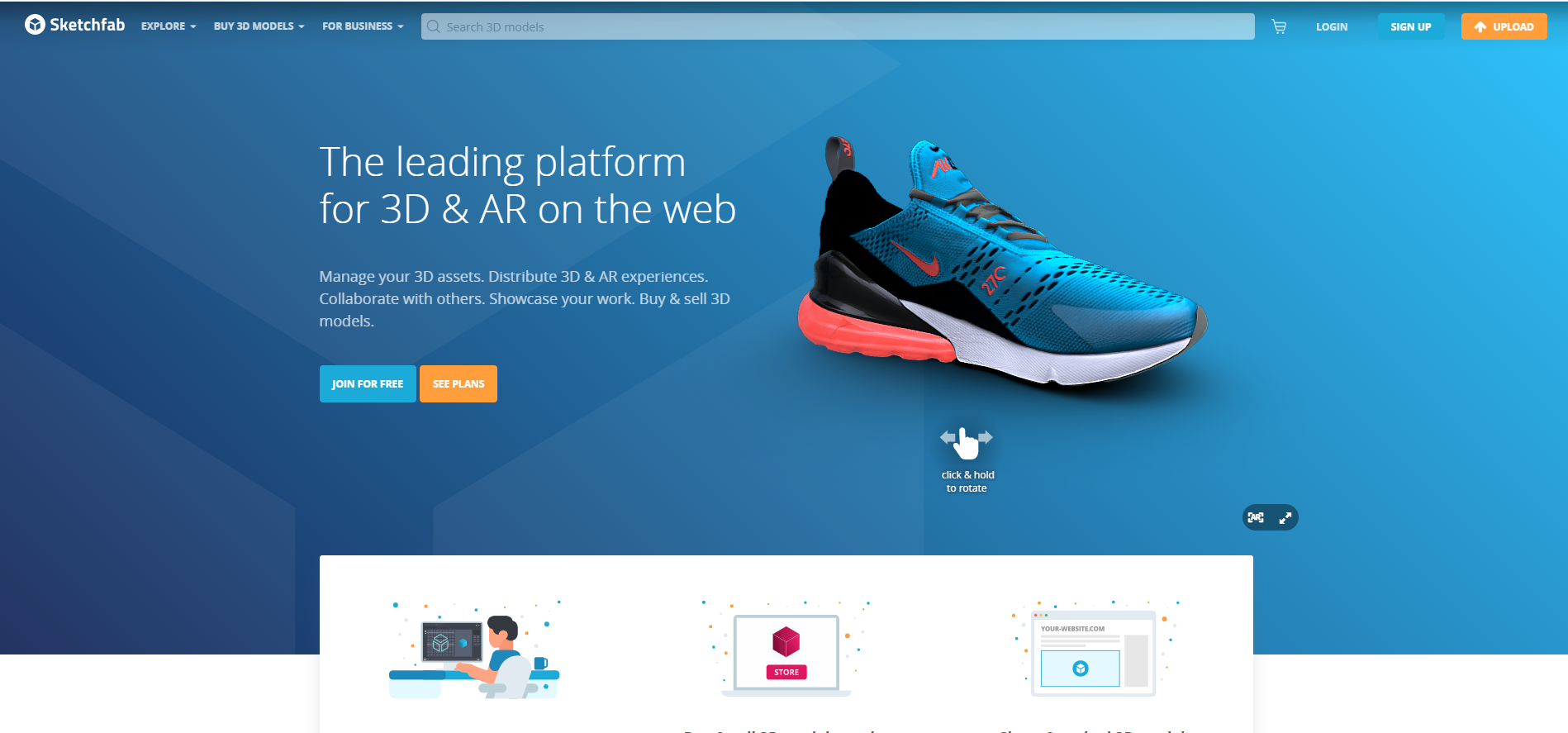
Sketchfab is a platform to publish, share, discover, buy and sell 3D, VR, and AR content. It provides a viewer based on the WebGL and WebXR technologies that allow users to display 3D models on the web, to be viewed on any mobile browser, desktop browser, or Virtual Reality headset.
Audio Resources
Audio can really make or break the gameplay experience. Here’s a list of audio resources so that your game sounds excellent.
GameSounds
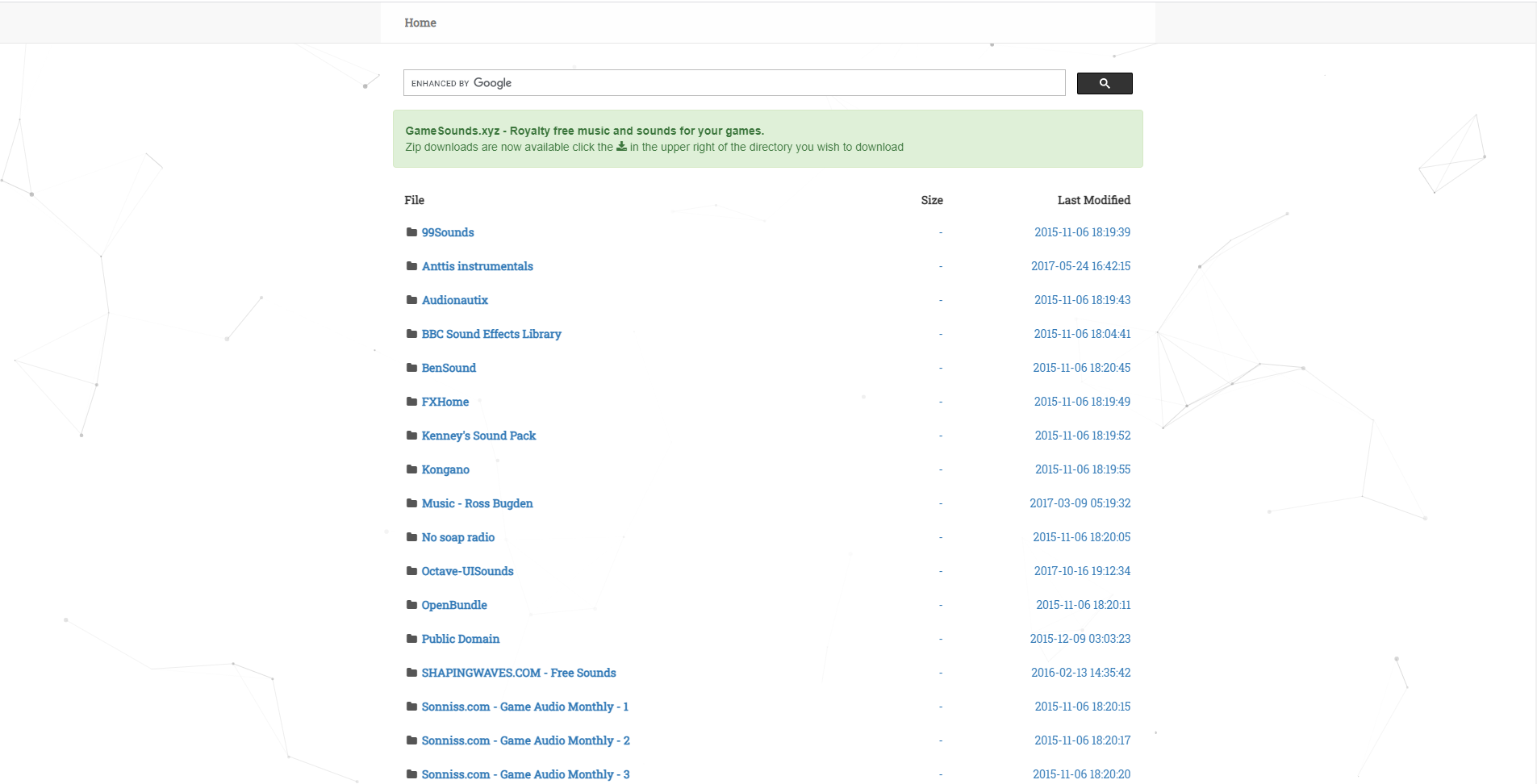
Check this list of royalty-free sounds and music for your games. This includes various sound libraries and collections for different purposes. Check it out!
FreePD
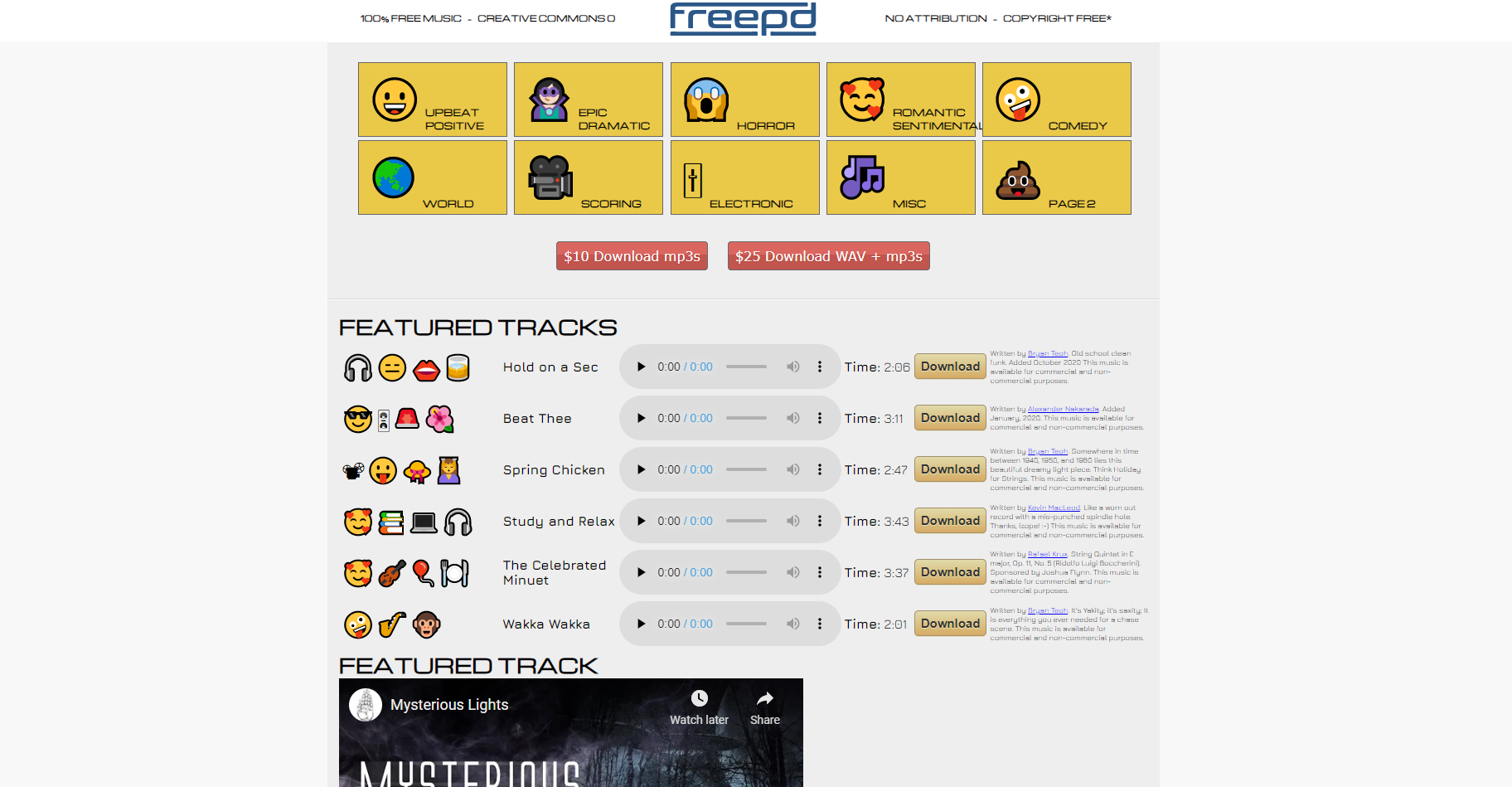
FreePD offers a beautifully categorized collection of free public domain sounds and audio effects that can be used for your games. They also have paid subscriptions that offer you other benefits (like the ability to bulk download audio, and more).
FreeSFX
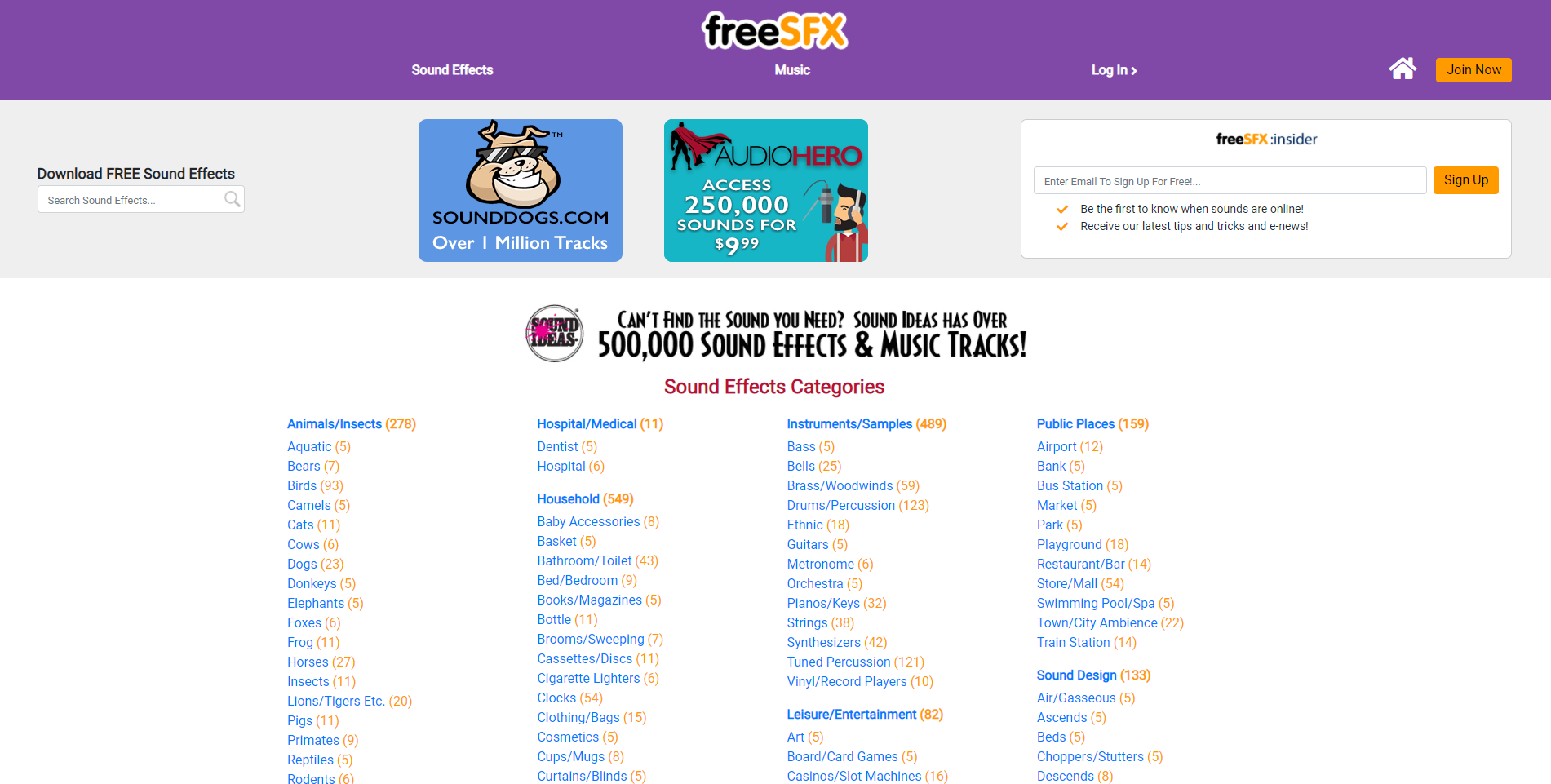
Are you looking for rodent sounds? Or maybe cats, dogs, or other animal sounds? Or even the ambient noises of hospitals? This resource is for all your game-related sound needs. This resource has all the out-of-the-box sound features that you might need!
Freesound
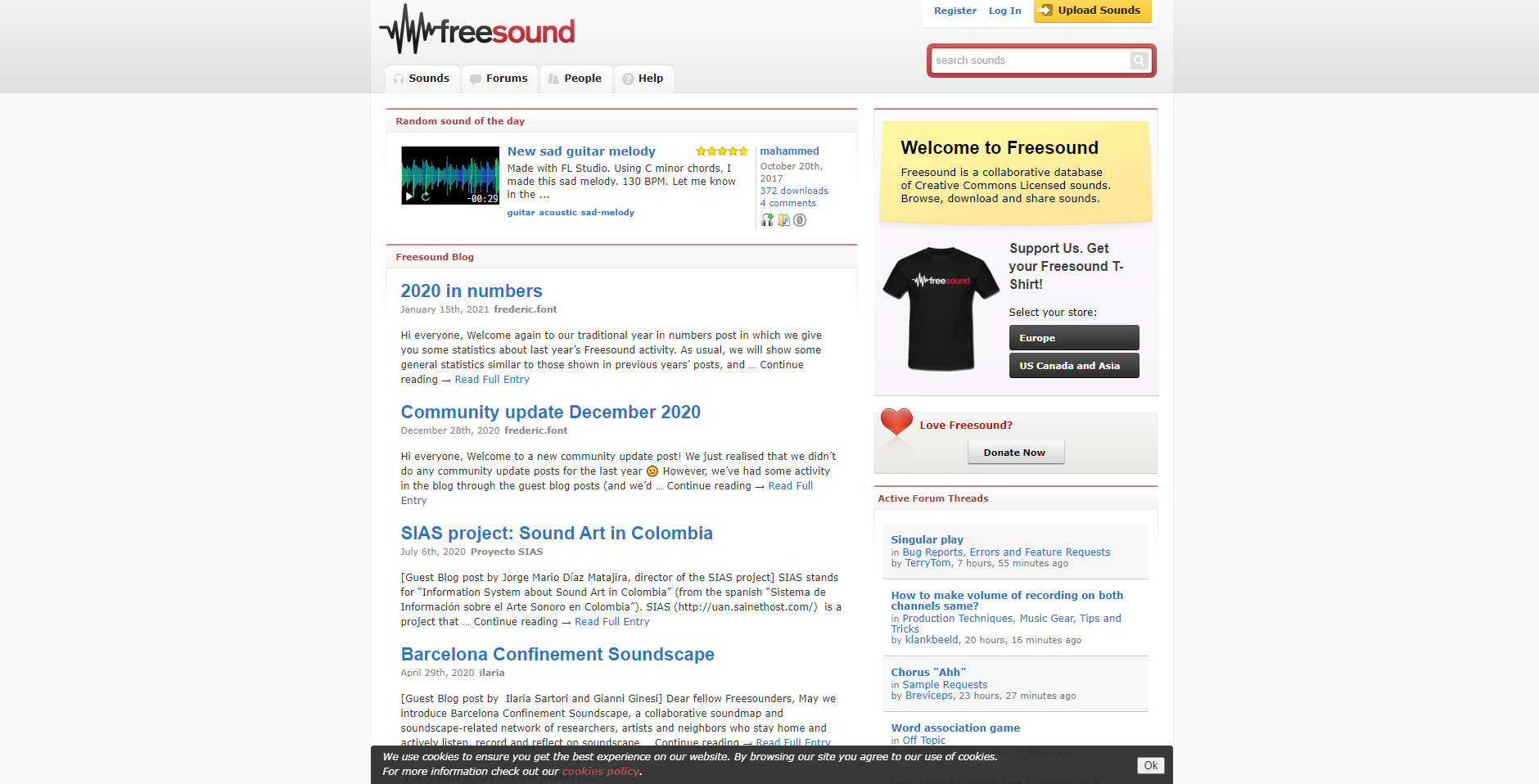
Freesound is a collaborative repository of CC-licensed audio samples, and a non-profit organization, with more than 400,000 sounds and effects, and 8 million registered users. Sounds are uploaded to the website by its users and cover a wide range of subjects, from field recordings to synthesized sounds.
Musopen
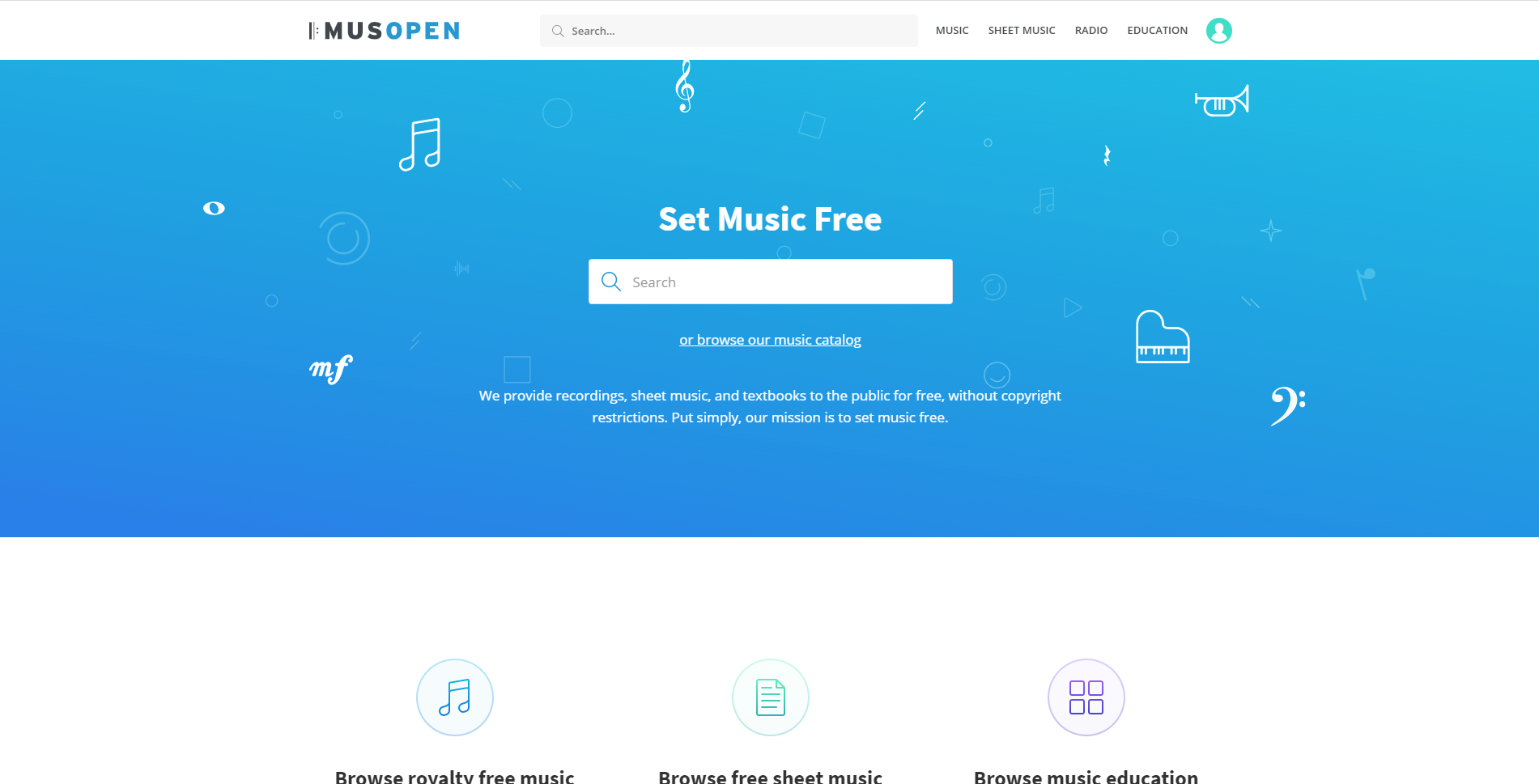
Set music free with Musopen – a non-profit organization located in Tarzana, California, launched by Aaron Dunn in 2005. The platform aims to “set music free” by providing music to the public free of charge, without copyright restrictions.
Octave
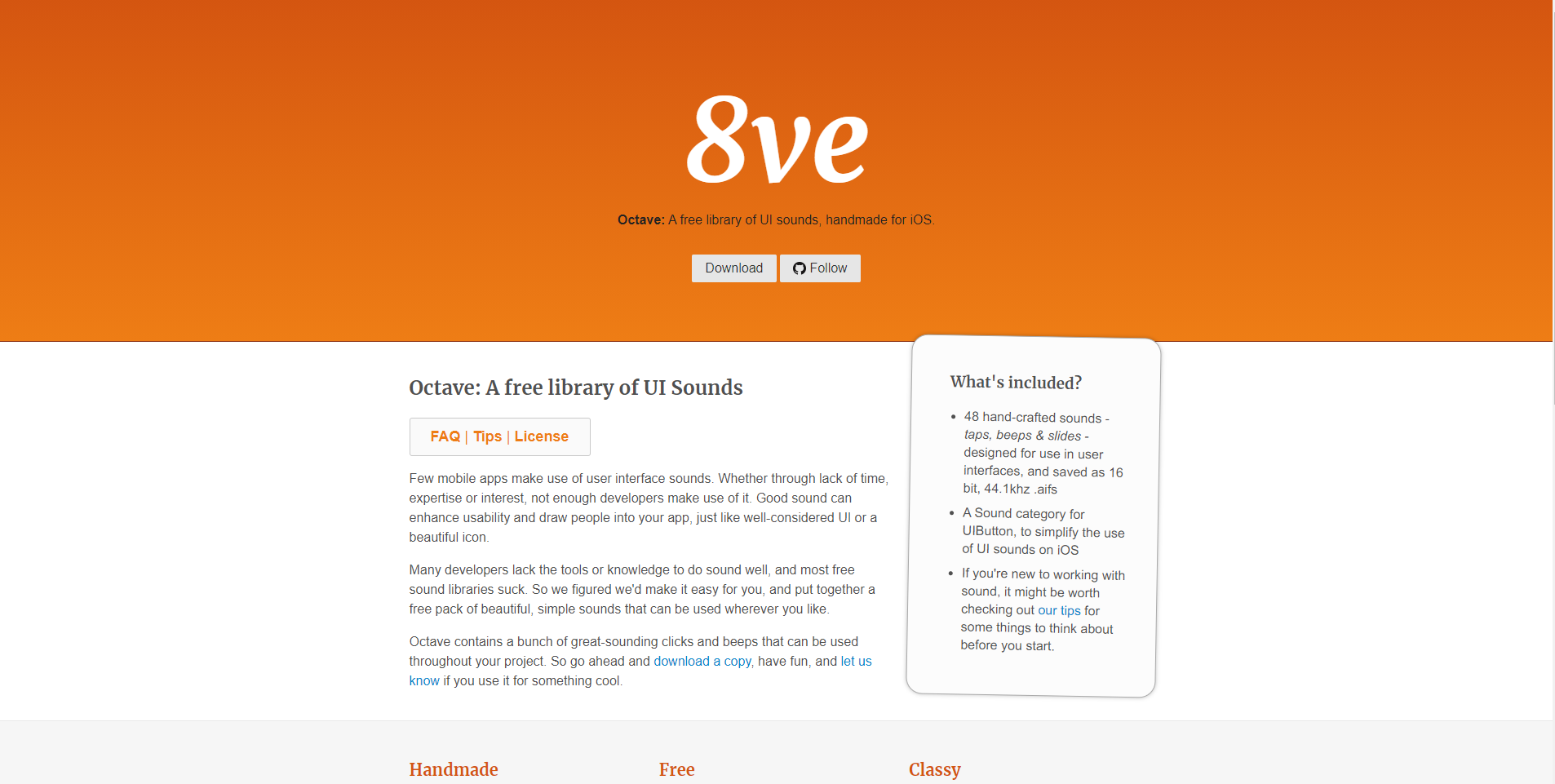
This is a free library of UI sounds, handmade for iOS. Find a list of 50+ hand-crafted sounds (like taps, beeps, and more), designed for use in UIs, and other iOS sound resources.
Sound Bible
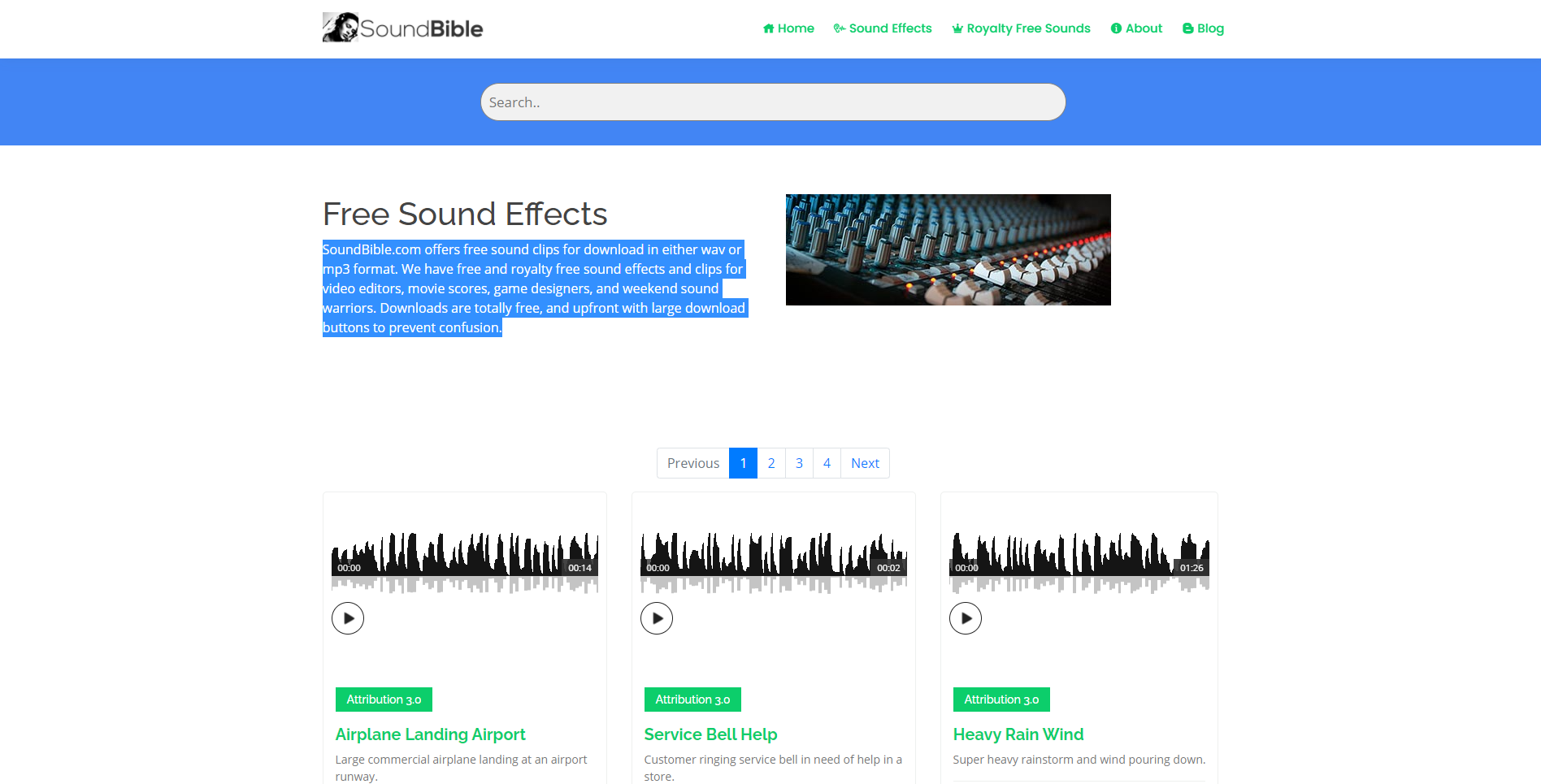
This is a list of free sound clips for download in either wav or mp3 format. Check out this resource for royalty-free sound effects and clips for video editors, movie scores, game designers, and weekend sound warriors.
Graphic Collections
TextureKing
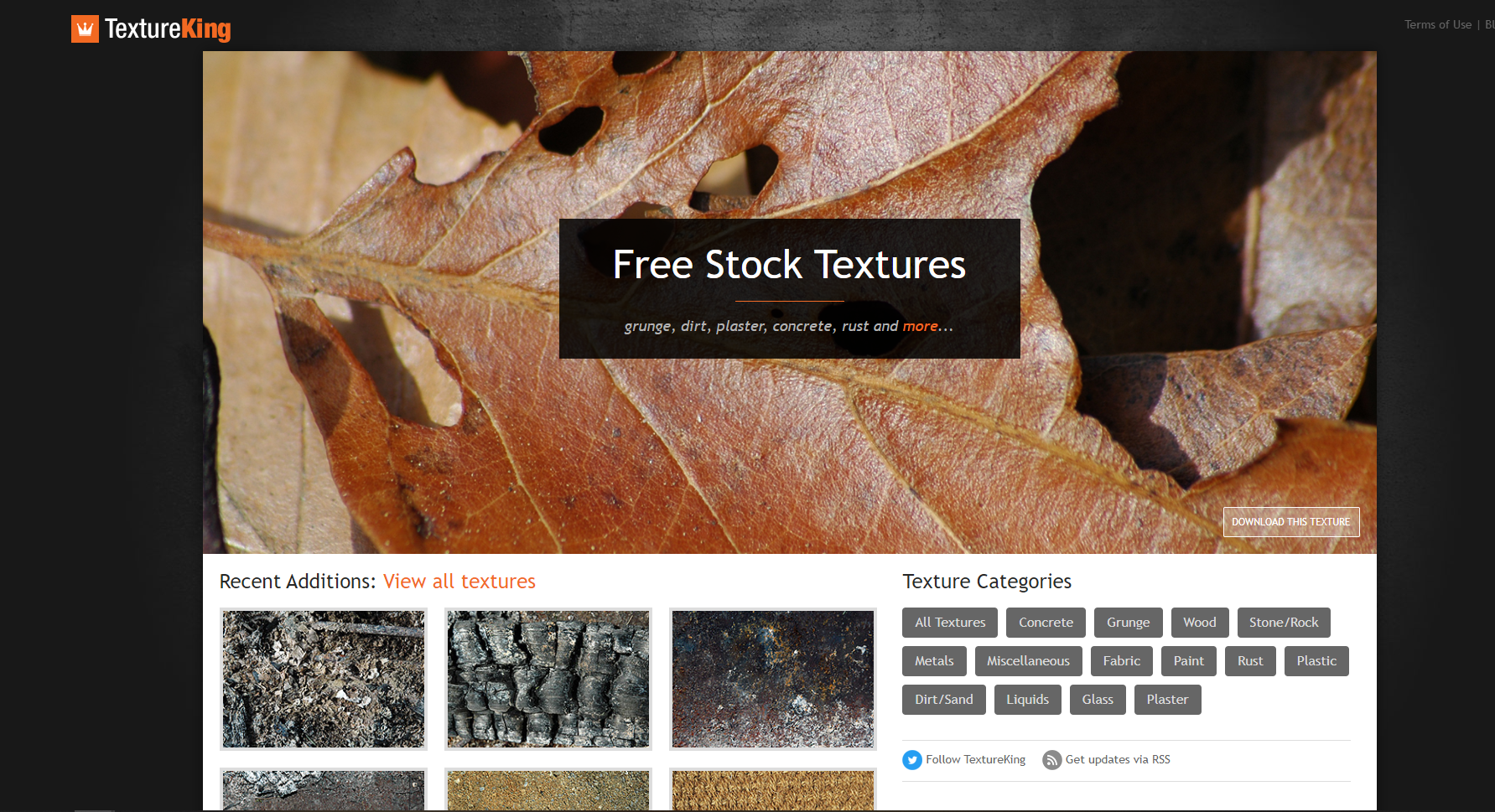
Check out this resource for wonderful free stock textures for various purposes. The collection includes textures for dirt, plaster, grunge, rust, and a lot more.
Plain Textures
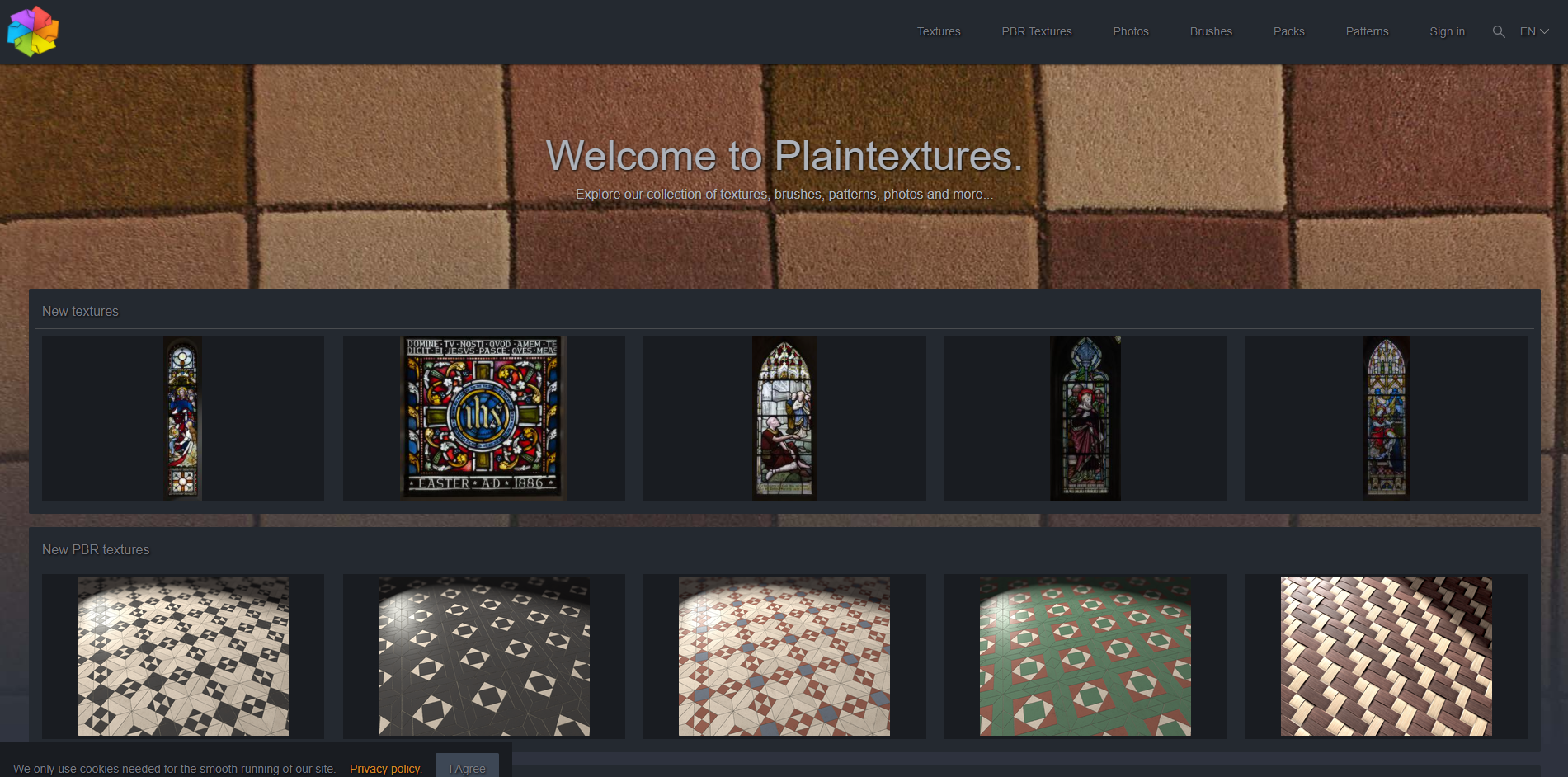
Check out this comprehensive collection of textures, brushes, patterns, photos and more, for your next game!
CGTextures
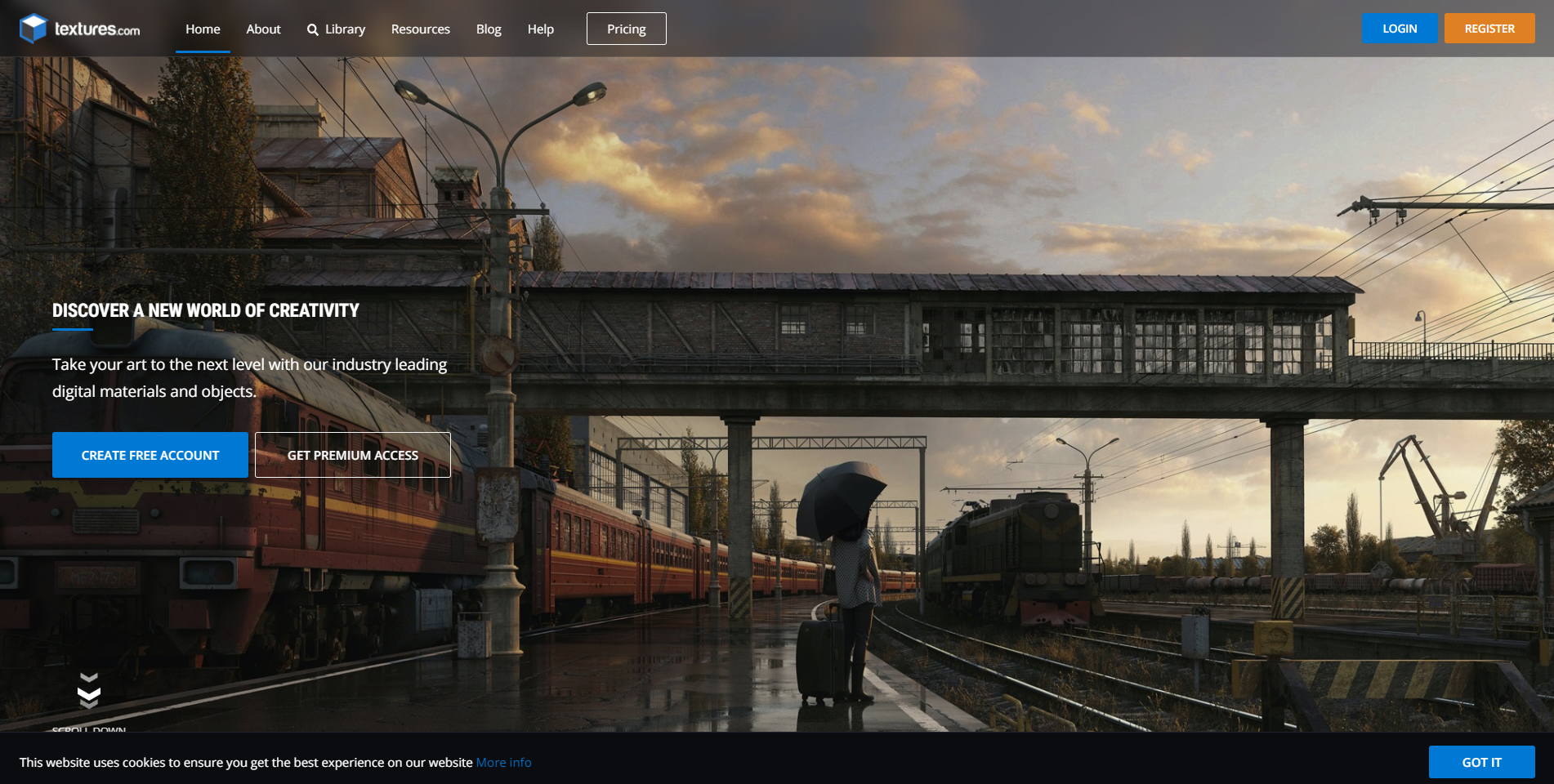
This resource offers digital pictures of all sorts of materials – from fabrics, wood, metal, bricks, plastic, to a lot more. These graphic textures can be used in visual effects, game design, and any other situations where you require a nice pattern. You can download up to 15 images for free every day. If you wish to download more, you can purchase a credit pack or a subscription. Check out their website for more details on that!
Animation
Check out these tools for creating useful animations, or animating your character sprites!
Fusion Character Animation

This is a pretty nifty tool used to facilitate the animation of 2D character sprites for game developers and designers. The website also offers basic tutorials on how to go about animating your sprites. Check it out!
Spine
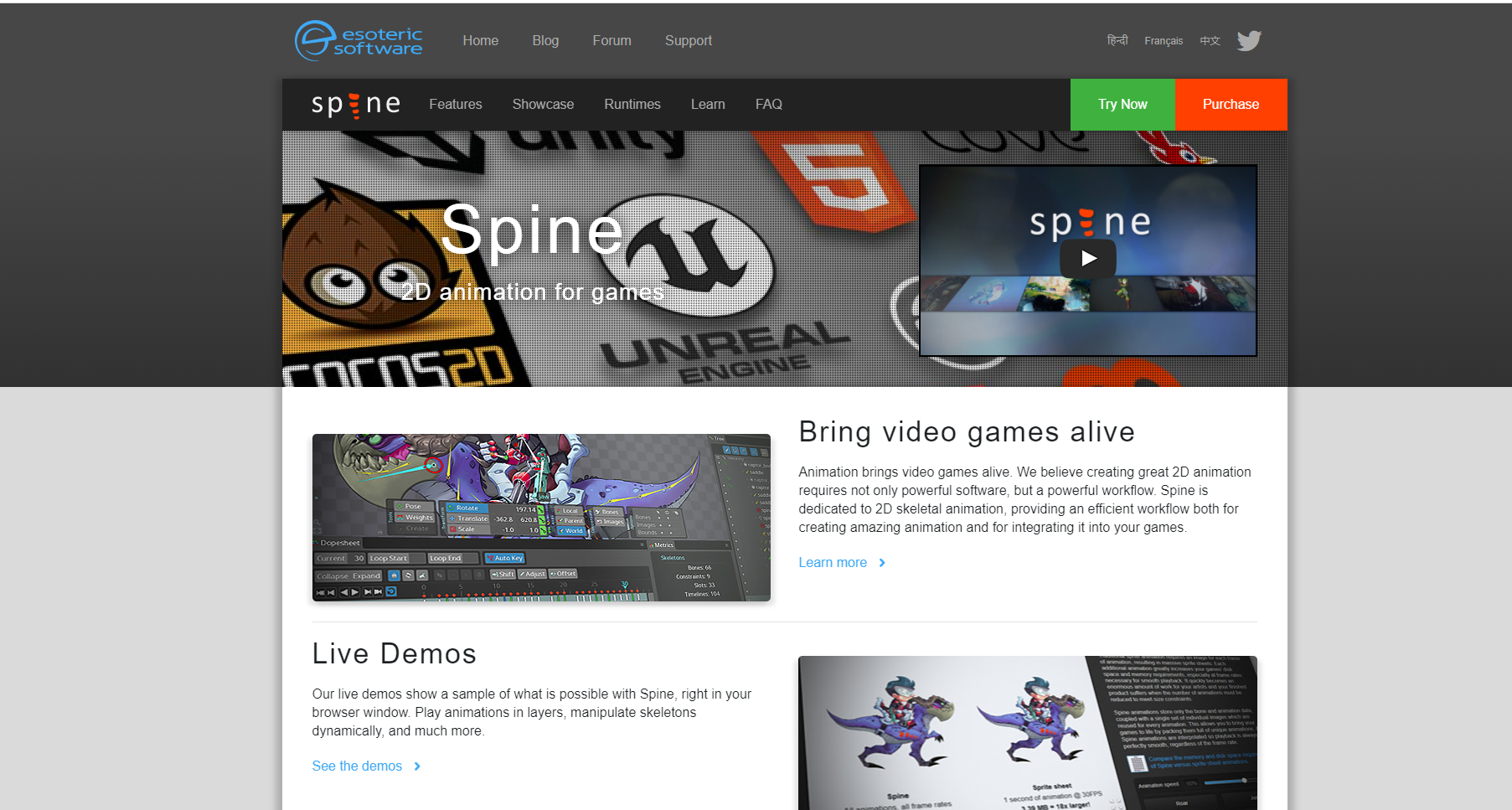
Spine is 2D skeletal animation software for video games. Their website hosts an Academy that has everything you need to get started learning Spine! Whether you like learning on your own, or prefer face-to-face workshops and courses – they’ve got it all!
ScreenToGIF
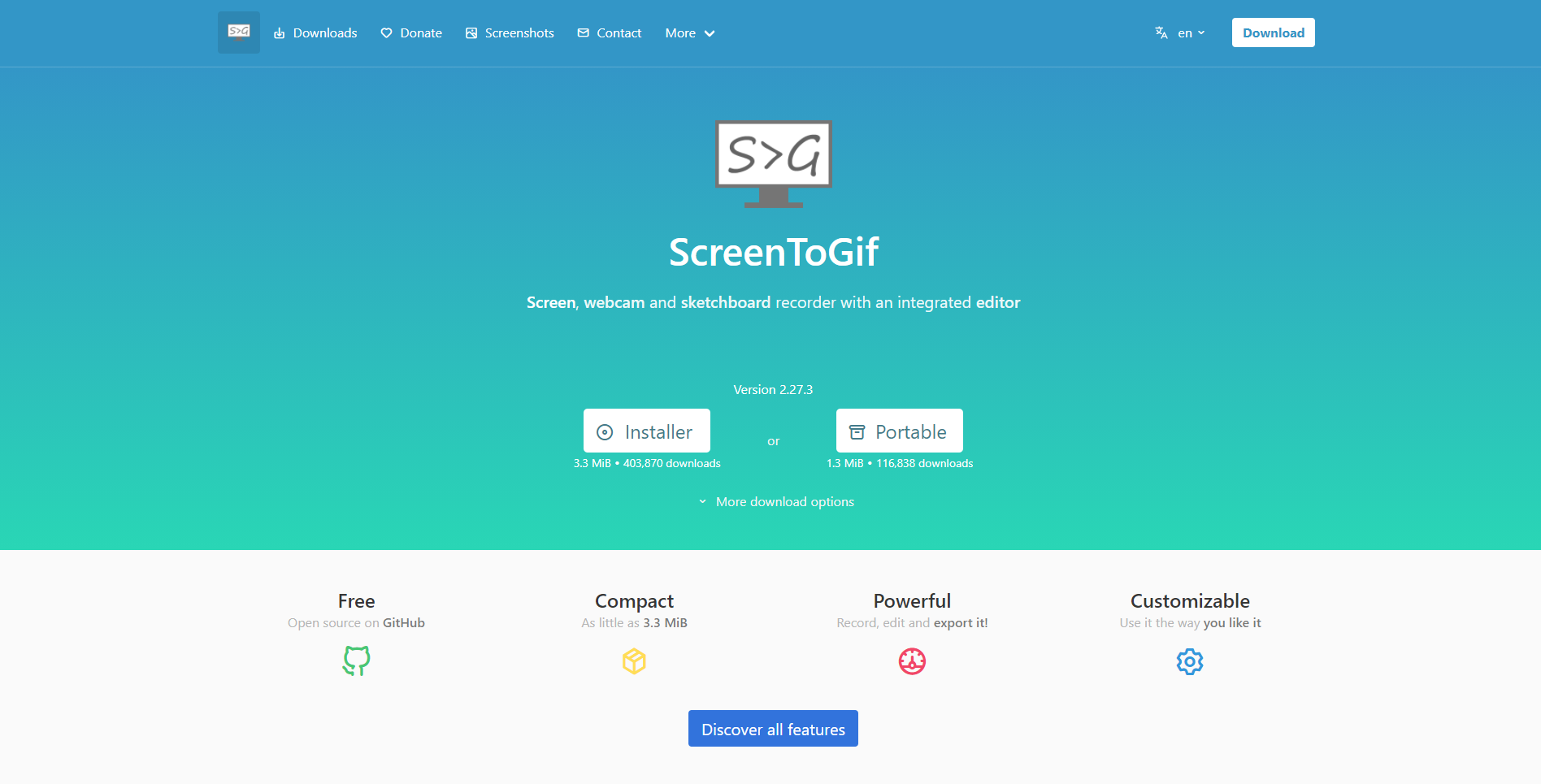
This open-source, feature-rich tool allows you to record a selected area of your screen, live feed from your webcam, or live drawings from a sketch board. Then you can edit the animation as per your requirement and save it in the format of your choosing!
LWF
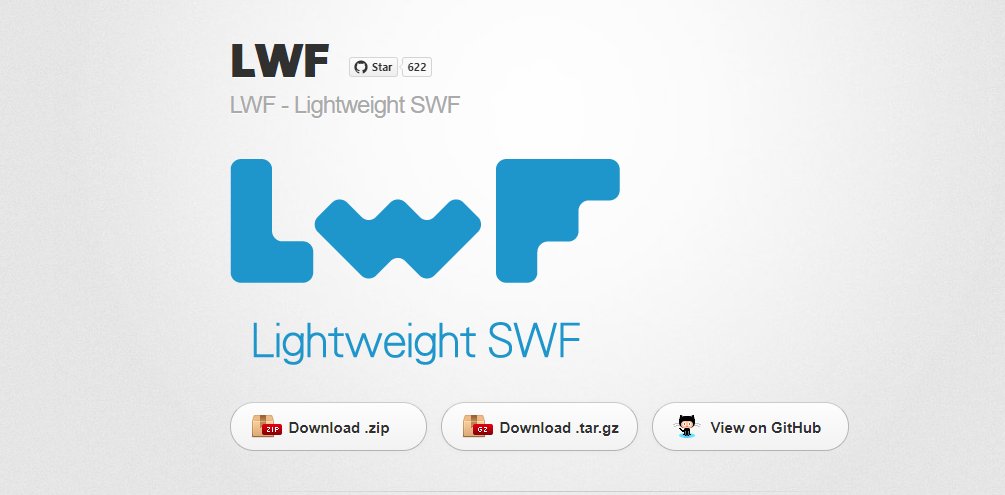
Check out LWF, an animation engine that can play animation data converted from Flash contents in HTML5, Unity, Cocos2d-x, iOS UIKit, and more. This is designed to make game development easy and fun. LWF offers some amazing benefits and features as well. Check out the site for more details!
Pixel Editors
Here’s a list of free (and paid) pixel editors and animators that you can use to play around with your pixel art, and bring it to life!
Aseprite
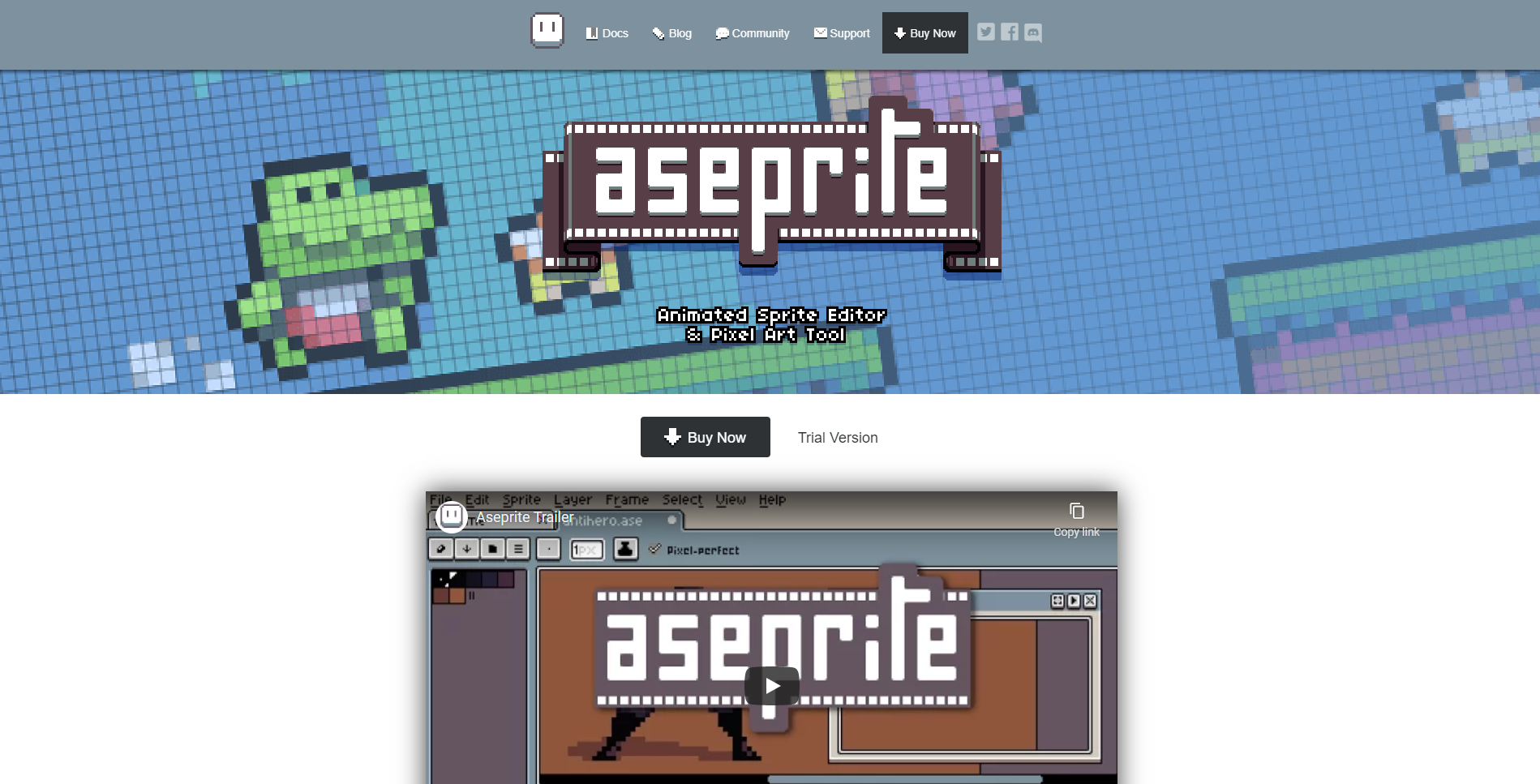
ASEPRITE (aka ASE, Allegro Sprite Editor) is a free software program to create animated sprites & pixel art. It has an active community of artists and game developers where you can find like-minded people and get your questions resolved!
Pickle

A cross-platform pixel editor, Pickle allows you to seamlessly create game animations, repeating tiles, and sprite sheets. Check out their website for more details!
Hexels
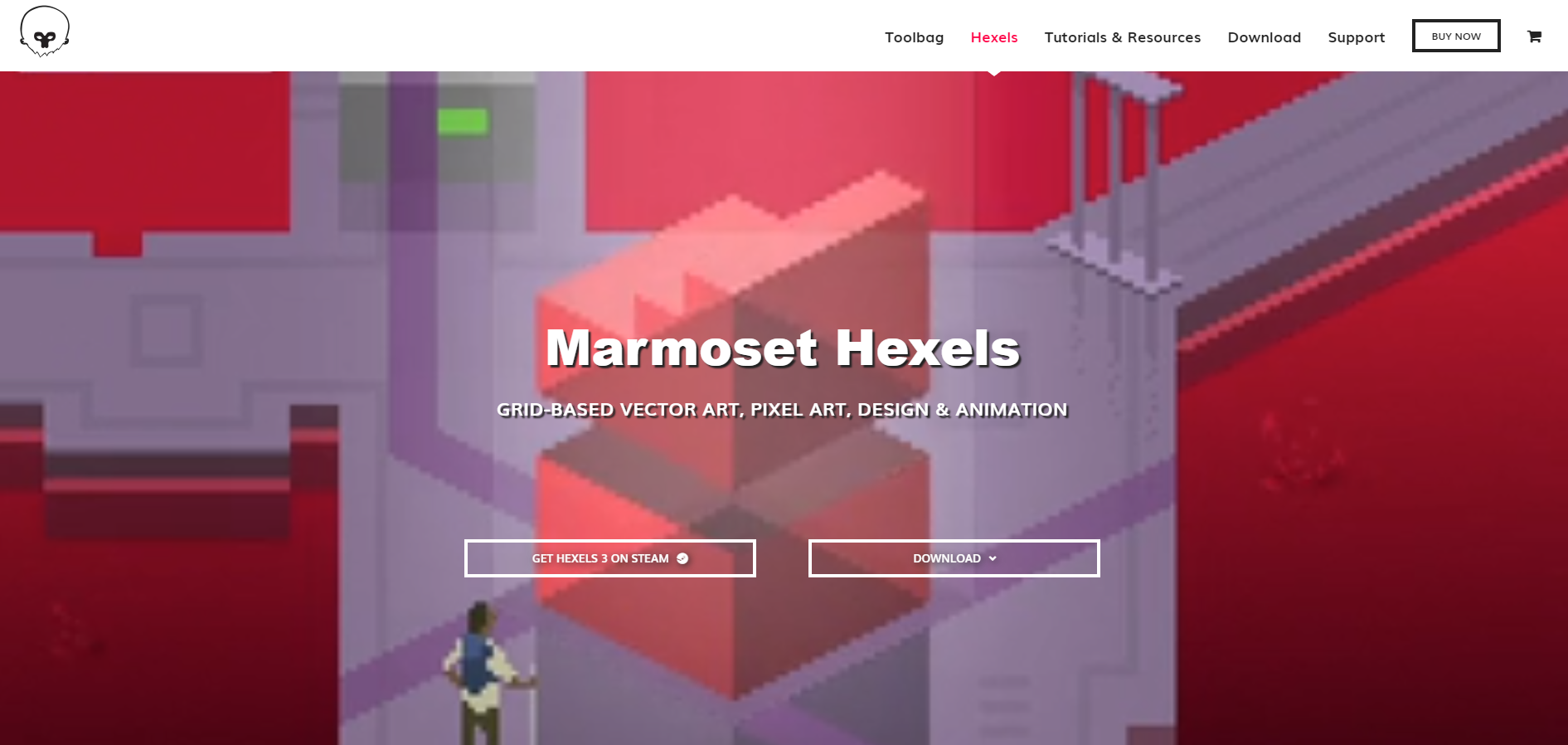
Marmoset Hexels is a grid-based painting tool for vector art, pixel art, design, and animation. A geometric canvas grid lets artists create complex pixel and vector designs simply with the stroke of a brush.
PiskelApp
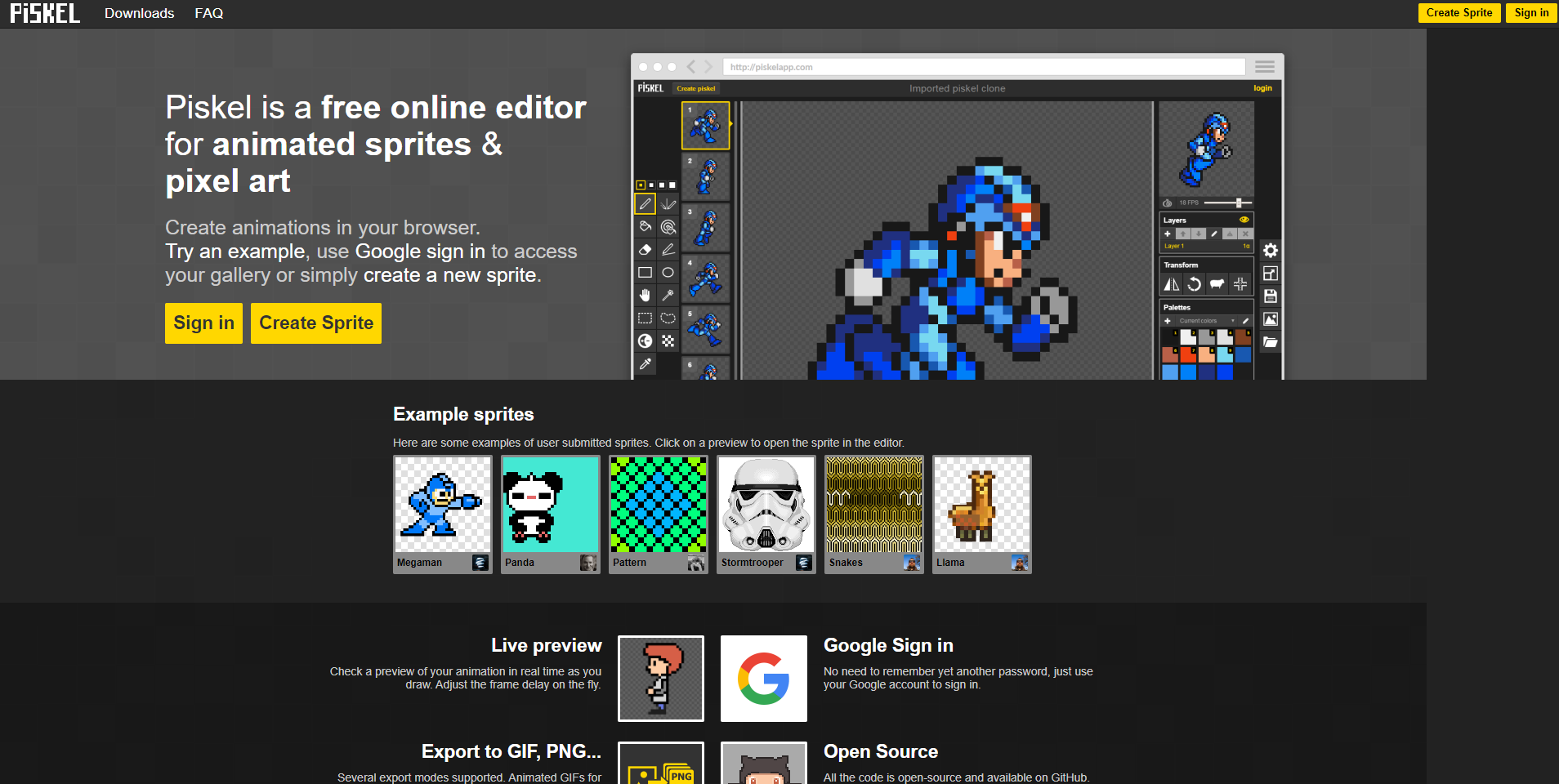
PiskelApp is extremely intuitive, web-based, and freely available for editing pixel art and animated sprites. Check out their website to know about more features they offer!
Pixen (for Mac OS)
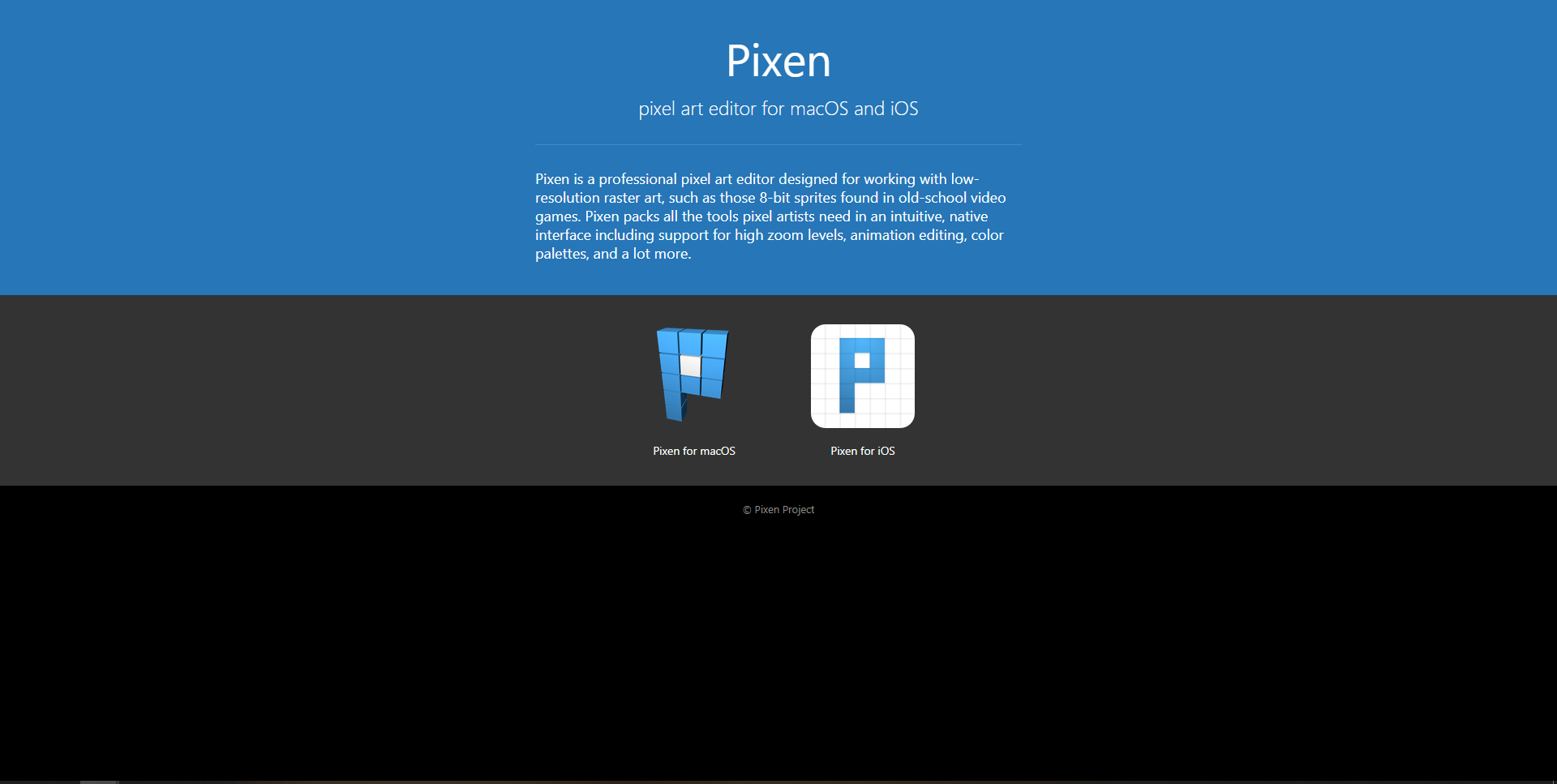
Pixen is a raster graphics editor for Mac OS X originally created by the Open Sword Group. It is designed to create and edit pixel art and animations. You can purchase it from the Mac App Store.
PyxelEdit
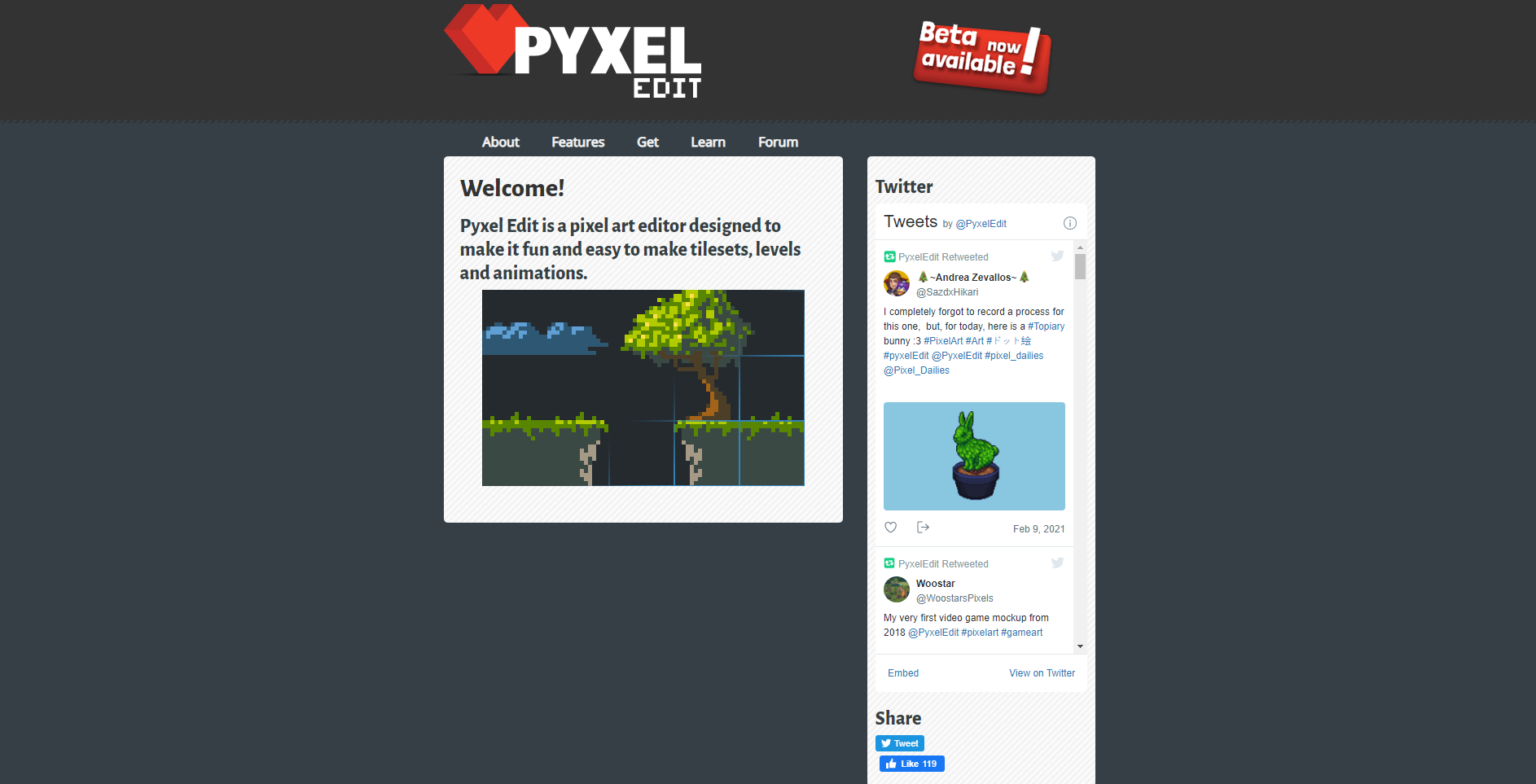
This is a pixel art drawing application specially designed for working with tiles. Using PyxelEdit, you can place tiles to form a level, edit them directly to see how they work together and export your tileset and the level data to load it into your game. This was originally a free tool, and the free version can still be used. However, due to continuous development to make it a more feature-rich application, the next big update will be a paid one. Check out their website for more details on this!
This is a small sample of course!
If we are missing your favorite free game dev resource, please let us know in the comments and we will be sure to add it! We love sharing assets with game developers around the world on our social media streams as well, so check us out on Twitter and Instagram for more resources!

Game Development Trends of 2021: Complex Economies Drive the Player Experience & Social Events Take Centre Stage
2021 has brought with it some pretty major shifts in game development, spurring new trends as player’s lives continue to adapt to the ongoing global pandemic. Capitalizing on these trends can help developers expand their player base, increase player attraction, and improve player retention.
Major Game Development Trends to Watch in 2021
Structured Social Events Take Center Stage
With many gamers stuck at home, structured online social events have taken center stage. Live events for major games can include millions of players and can take many forms, including:
- Tournaments and competitions, where individual players or teams of players face off against one another to achieve a task or set of tasks.
- Coordinated group tasks, where players must band together to achieve their goals.
- Individual challenges, where players must complete set tasks to earn specified rewards.
- Concerts, where players gather virtually to enjoy music in a social setting.
By organizing structured social events, game developers can improve player engagement by encouraging certain behaviors and improve player retention by offering rewards for attendance. Games can also use events to offer players access to exclusive content or experiences that aren’t available during regular gameplay. A regular calendar of events encourages players to return frequently, further driving engagement.
Economies Become More Complex
In-app purchases (IAPs) have become a crucial source of recurring revenue, allowing developers to maximize their income. Before IAPs, games were sold at a fixed price, where a player paid a set amount of money for the entire game experience. This created a firm cap on the amount of revenue each player could generate, limiting profits. Offering IAPs removes this cap, allowing developers to generate revenue from existing players using a single game instead of depending on upfront, one-time game purchases. Single-use items that improve gameplay only need to be developed once but can be sold to players repeatedly.
According to Unity, 79% of strategy games, 88% of role-playing games, and 77% of adventure, and 71% of casual games monetize via IAPs, and this trend is set to continue. The Beamable team predicts that as much as 95% of game revenue will be generated via the purchase of virtual items in the near future.
While these trends towards events and more complex economies emerged well before COVID-19, the pandemic has come to define and supercharge these dynamics, accelerating the mainstream adoption timeline by several years. The basic need to connect with others, paired with a pandemic that requires us to severely curtail or even abandon in-person socialization, was a major driving force towards mainstream adoption as consumer players sought out social outlets that filled this recently developed void. Games, and live events, in particular, have evolved rapidly to fill the social niche previously occupied by in-person activities.
Current trends suggest the popularity of these trends will continue, though the pace is likely to slow once in-person social interactions become safe again. By capitalizing on this trend now, developers help gamers develop habits of enjoyment that will continue once COVID-19 has subsided, making games with highly monetizable structured events a permanent part of our lives.
The Driving Forces Behind These Trends
There are a number of complex and interrelated factors driving these trends.
Gamers are Maturing
Mobile device games have made gaming more accessible than ever before, allowing developers to reach larger audiences than ever before, and are now able to attract users who don’t typically think of themselves as “gamers” in the traditional sense. Starting with simple games with shallow learning curves, these players can easily pick up the mechanics of play, and many were trained to play games via the use of early free-to-play games.
Free to play games have evolved into games that remain free to play but now include IAPs, which may offer a competitive edge, increase character personalization, or allow players to access exclusive content or items that cannot be unlocked via free-play mode or would require more time to unlock than the average player is willing to wait.
As mobile games matured and became more complex, game players have evolved as well. Modern mobile device games are now capable of supporting coordinated actions and can rely on player-generated content, which allows a player’s previous actions to determine what happens next, much like a choose-your-own-adventure book.
Revenue Maximization
The development of IAPs revolutionized how developers earn money from the games they develop, creating the most scalable long-term business model for games by effectively monetizing existing players and removing per-player revenue caps.
When leveraged effectively, live events such as competitions or concerts can also drive revenue by monetizing user emotion and encouraging players to invest in IAPs to gain a leg up on the competition or achieve individual goals.
Emergence of Item Based & Creator Economics
Free-to-play games that offer IAPs are the most democratized game style, effectively minimizing barriers to play and maximizing mass-market availability. Users can test out the game without needing to commit to an up-front purchase, while ongoing player investments in the game allow developers to monetize their hard work effectively.
Scalable Technology Introduced
Technological advancements in the gaming industry mean that developers now have the tools they need to:
- Support item and creator economies, live events, structured events, and continually evolving storylines
- Create experiences
- Develop 3D graphics
Many of these tools are low code or now code, making it easy for anyone interested in game design to get started. These tools also mean that game developers do not require large, expensive to support teams to develop complex games.
Among Us, developed by InnerSloth, was one of the most successful games of 2020, and currently hosts hundreds of millions of players and was developed by four people. This game boasts an incredibly creative game experience and demonstrates that while graphics remain important, detailed professional-quality art is not essential for creating an enjoyable gameplay experience.
By removing the burden posed by underlying game operations, developers can shift their attention and focus on creating increasingly compelling game storylines, content, and events, which will delight players and encourage them to stick around.
Beamable’s 3-Part Strategy for Successful Game Development
To help our game developers succeed, the team at Beamable has developed a tried-and-true three-part strategy designed to enable game makers to scale with ease, create structured social events and manage complex economies, all while maximizing revenue.
- Update your content consistently. Humans crave novel experiences, so continually evolving gameplay and content are critical. By making sure you are updating your content on a consistent basis, players will not be left wondering if the game has stagnated.
- Funding that allows the developer to invest in engagement, attention, and retention. A good game is enjoyable to play; a great game is enjoyable to play and keeps players coming back for more. Investing in strategies that encourage player engagement, attract new players, and retain existing players is key for creating a recurring revenue stream.
- If you have an awesome idea for a game but lack the technical know-how to transform your dream into a reality, the expert team at Beamable is here to help. Beamable offers a wide variety of useful features, ongoing developer support, game revenue predictions, and easy-to-use content design tools.
For more information about Beamable, or to get started on your game, please contact our team today.

Beamable Releases 0.9.1 Update
Hot on the heels of our major 0.9 version release, we finished a 0.9.1 release with a few new things and bug fixes.
New Feature – Unity 2020.3 LTS Support
Beamable now supports Unity 2020 in addition to Unity 2018 and Unity 2019!
New Feature – TrialData in Microservices
TrialData (CloudData) API is now available in Microservices.
Bug Fixes
- Inventory no longer holds on to stale data on user change
- Fixed KeyNotFoundException in CloudSavingService when looking up previously downloaded objects
- Tournaments prefab now uses sample content by default
- Tournaments prefab name renamed to TournamentFlow instead of just “Flow”
- Players will rejoin tournament on user change
- Fixed Admin flow visual glitches on landscape
- Inventory prefab no longer errors when addressable icon is omitted
- Tournaments no longer log errors on closing
- SKU Content product ids are now optional
- Inventory AddItem() API no longer errors out on null dictionary
- Downloading content in Editor no longer logs unnecessarily
- Fixed ArgumentOutOfRangeException when adding new content to an empty content type
- Content ID in Content Manager no longer cuts off names or shows duplicate entries
- Fixed drag and drop behavior for AccountHUD prefab
- Content Manifest upload no longer times out after 10 seconds in cases of large manifests
- To see these features in action, get started with Beamable for free!

8 Ways to Set Up an Inventory System in Unity
Setting up game inventory systems in Unity is a difficult but extremely important task. A well-crafted inventory system makes it easier for you to store, remove, and add different items related to your game. This might include items for players, cosmetics, or even unlockable things like currency and levels.
At Beamable, we understand the struggle of indie developer as they race to build all of the game and metagame features required for a successful player experience. To help out, we’ve curated this list of resources to point you at some methods for implementing an inventory system in Unity.
Unity Learn
Use this tutorial to learn about setting up a character inventory system in Unity. By the end of these lessons, you’ll find yourself comfortably:
- Building out a useful inventory system
- Setting up different interfaces for unity inventory systems
- Creating pieces of code for different inventory items
- Linking the items with the actual gameplay
Here are the various topics that this tutorial covers:
- Creating a character inventory system – overview
- Building out an inventory system
- Setting up a user interface
- Inventory items
- Linking item actions to the actual gameplay
GameDev Academy
GameDev Academy is a wonderful resource. Their website hosts different free courses and eBooks for game developers to learn from.
GameDev Acadmy’s tutorial on creating inventory and crafting systems in Unity will teach you how to code your own inventory inspired by Minecraft.
Check out this course to learn the various nuances behind organizing your data by creating Item and Recipe objects, managing your database, as well as more advanced topics like drag and drop.
GameDev Academy’s tutorial on creating a Unity Inventory System includes the following concepts:
- Creating an Inventory and a Crafting System in Unity
- Creating the Crafting Recipe Class to Define the Inventory System in Unity
- Creating an Item Database for an Inventory System in Unity
There’s an even more extensive course, also offered by GameDev Academy, that you can check out here.
Unity RPG Inventory System
This tutorial walks you through the process of building a Unity inventory which allows the players to collect, store, and retrieve a variety of items. Using screenshots, gifs, and explanatory text, this tutorial by MVCode is quite exhaustive and explains all the different options, settings, and code pieces you might require while building a Unity inventory system for a Role-Playing Game (RPG) title.
MVCode also offers extensive courses on Unity Development, and this is just one part of the entire course. You can log in to their website and check out various other courses related to game development.
inScope Studios Tutorial
This comprehensive video tutorial series contains many inventory tutorial videos. This is one of the more extensive tutorials on the list and touches on important concepts like:
- Tooltips
- Dropping Items
- BankStorage
- Bug Fixing
- Generating the XML document
- Picking up the XML items
- Character panel layout
- Equipping weapons
- Preparing for item crafting, and a lot more!
Blackthornprod Tutorial
Blackthornprod is a YouTube channel run by Noa Calice, an indie game developer and educator, and co-creator of four Udemy courses around game development. The YouTube channel is a must for every indie game developer looking to explore the world of game development.
Among other courses and tutorials, Blackthornprod’s YouTube channel has a beginner course on creating inventory systems with Unity and C#. In this 2-part series, you’ll first learn about creating the UI for the inventory, giving players the ability to pick up items and add them to their inventory, and then getting the player character dropping items from the inventory back into the game world.
Code Monkey Tutorial
Code Monkey is a game developer and YouTube content creator who creates game dev specific content. This includes different tutorial series, game and game dev reviews, Unity tips, and more. The tutorial on Simple Inventory System in Unity teaches you how to make a simple but robust Inventory System to store, use, and drop items.
Dennis (Comprehensive Video Tutorials)
This is an extremely comprehensive, 12-part video series, that teaches you everything about creating the Crafting and Inventory UI. It’s a beginner-friendly tutorial and by the end of this, you’ll be creating fully functional crafting and inventory systems for any RPG/FPS game.
Simplify Inventory Management with Beamable Inventory
To simplify inventory management even further, check out Beamable. Our Inventory Flow allows game makers to easily set up a complete inventory experience using Unity. Using simple drag-and-drop features, we make the process of creating and setting up inventories extremely easy. Check out the documentation to know about Beamable’s inventory management in more detail
Did we miss something?
Let us know your favorite Unity inventory tutorial in the comments below. If we’ve missed something – do let us know!

Game Dev Studios to Watch – March 2021
Here it is… our super-special list of game studios to watch from March 2021! This is a shoutout to all the game dev studios working hard for their game’s success. If you’re a game developer, you should definitely have these studios on your radar for inspiration.
Four Quarters
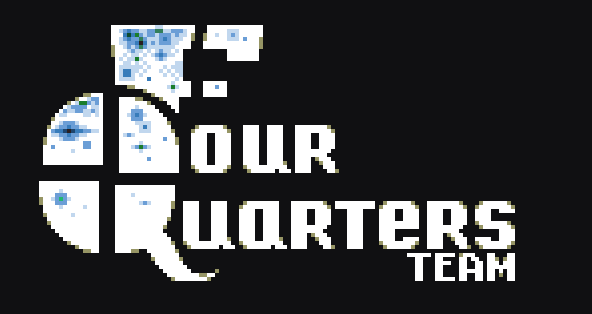
Four Quarters started as a two-member team which slowly grew into a four-person studio taking up challenging tasks and projects. The studio is based in Russia and all the members of the studio work remotely. Their first game was titled ‘Please, Don’t Touch Anything’, and garnered a lot of acclaim from both players and critics.
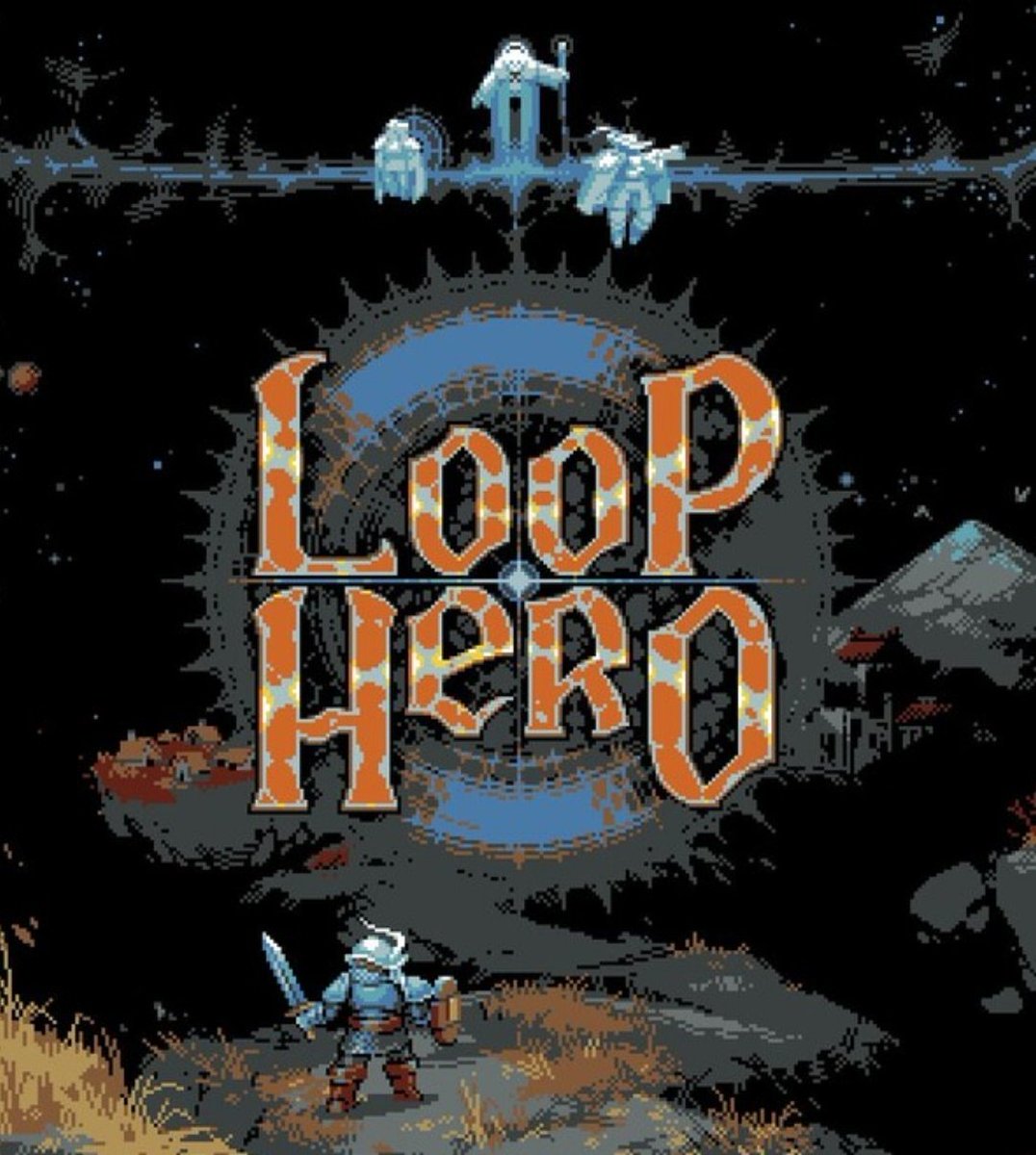
Their newest game, titled ‘Loop Hero’, is so elegantly clever and simple that it’ll make you wonder why something similar has not been done before. The game seamlessly combines RPG, Roguelike, deck-building, and auto-battler vibes. This ingenious mix of elements makes the game completely stand out. To stay up to date with the studio and their other upcoming works, check out their website!
Studio Fizbin
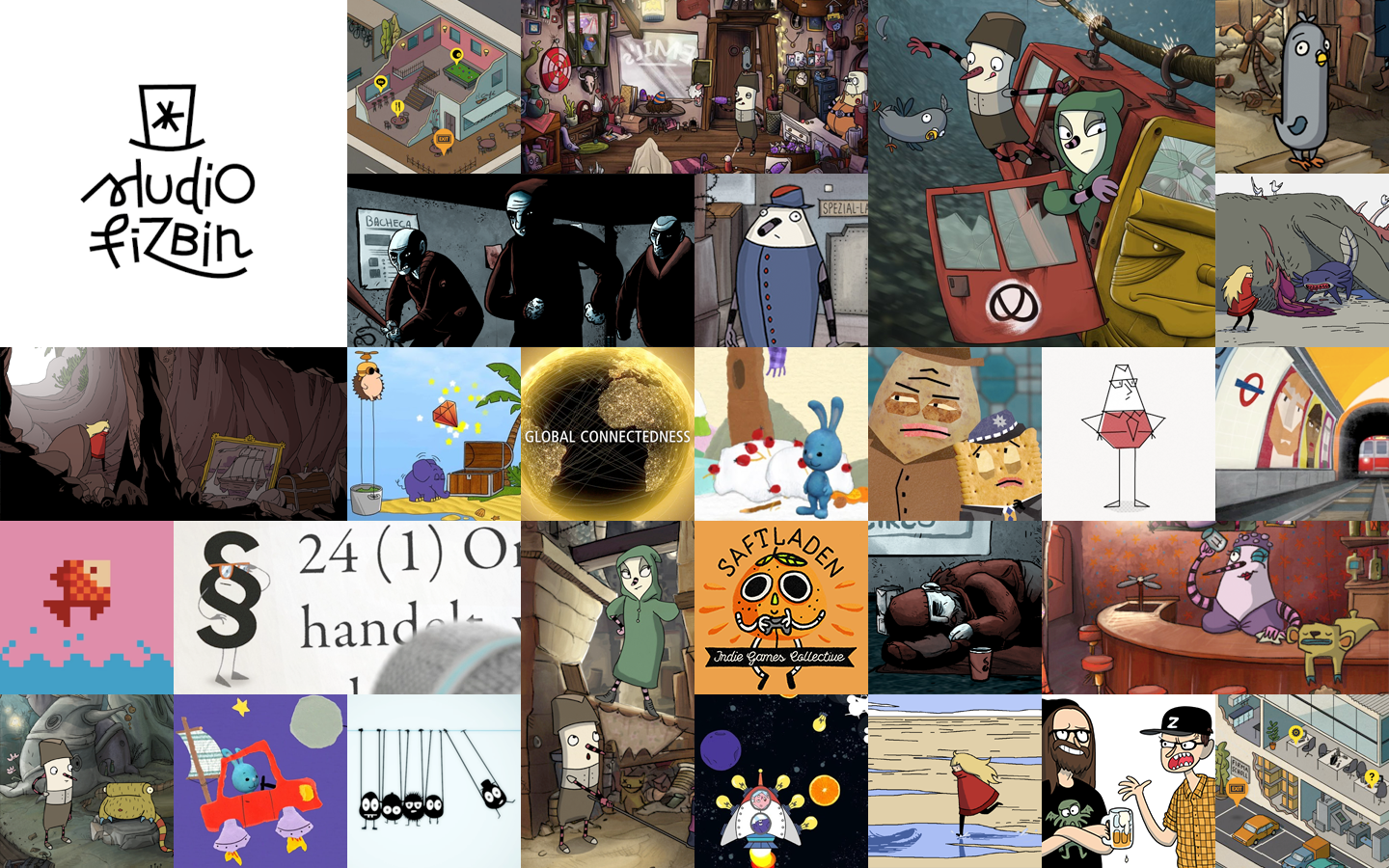
Studio Fizbin is a German independent game development studio. It was founded in the spring of 2011 by Sebastian Mittag, Alexander Pieper, and Mareike Ottrand, and has since then focused on creating story-based games with exciting, interactive, and unique characters and worlds.
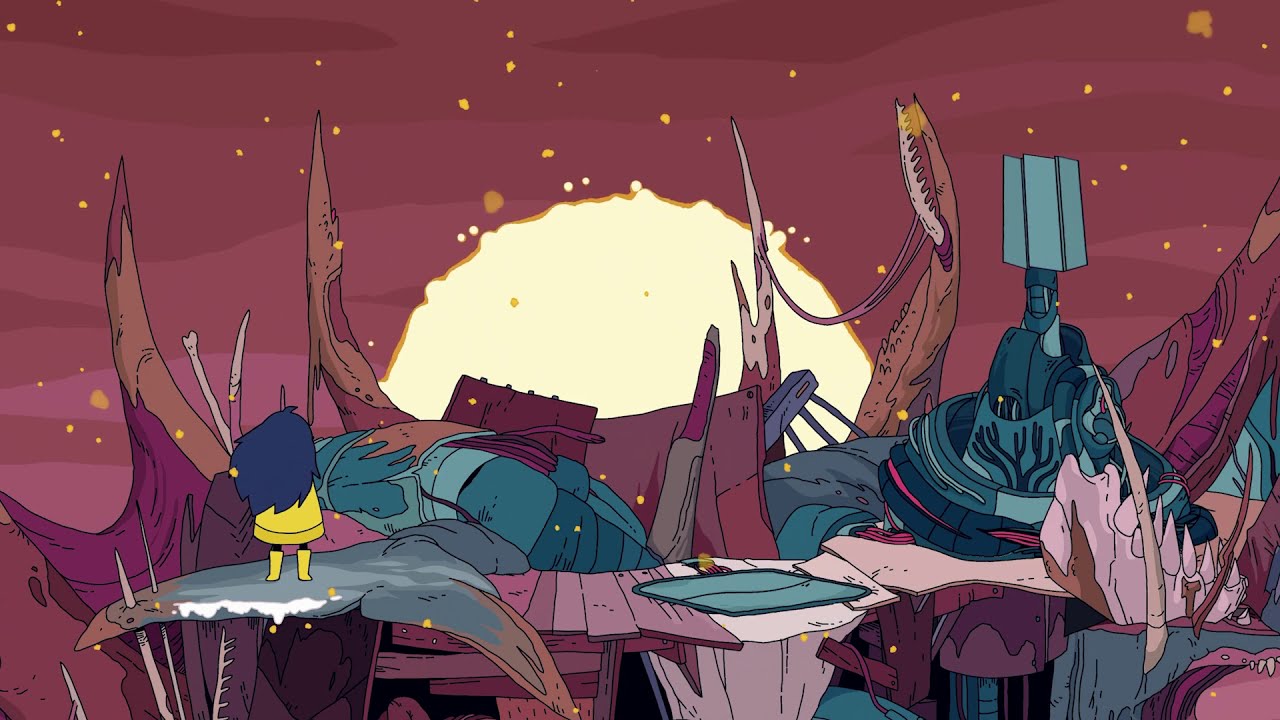
Their upcoming game titled ‘Minute of Islands’ is a gorgeous art-driven game. Add to that an extremely intriguing and absurdists puzzle adventure and you get quite an engaging gameplay experience. The game offers so much life and personality just begging to be explored. Bubbling under all the gorgeous artwork is a narrative that involves ancient secrets and otherworldly machines. It keeps getting better with every layer. Know more about the studio and their work!
Mad Mimic Interactive
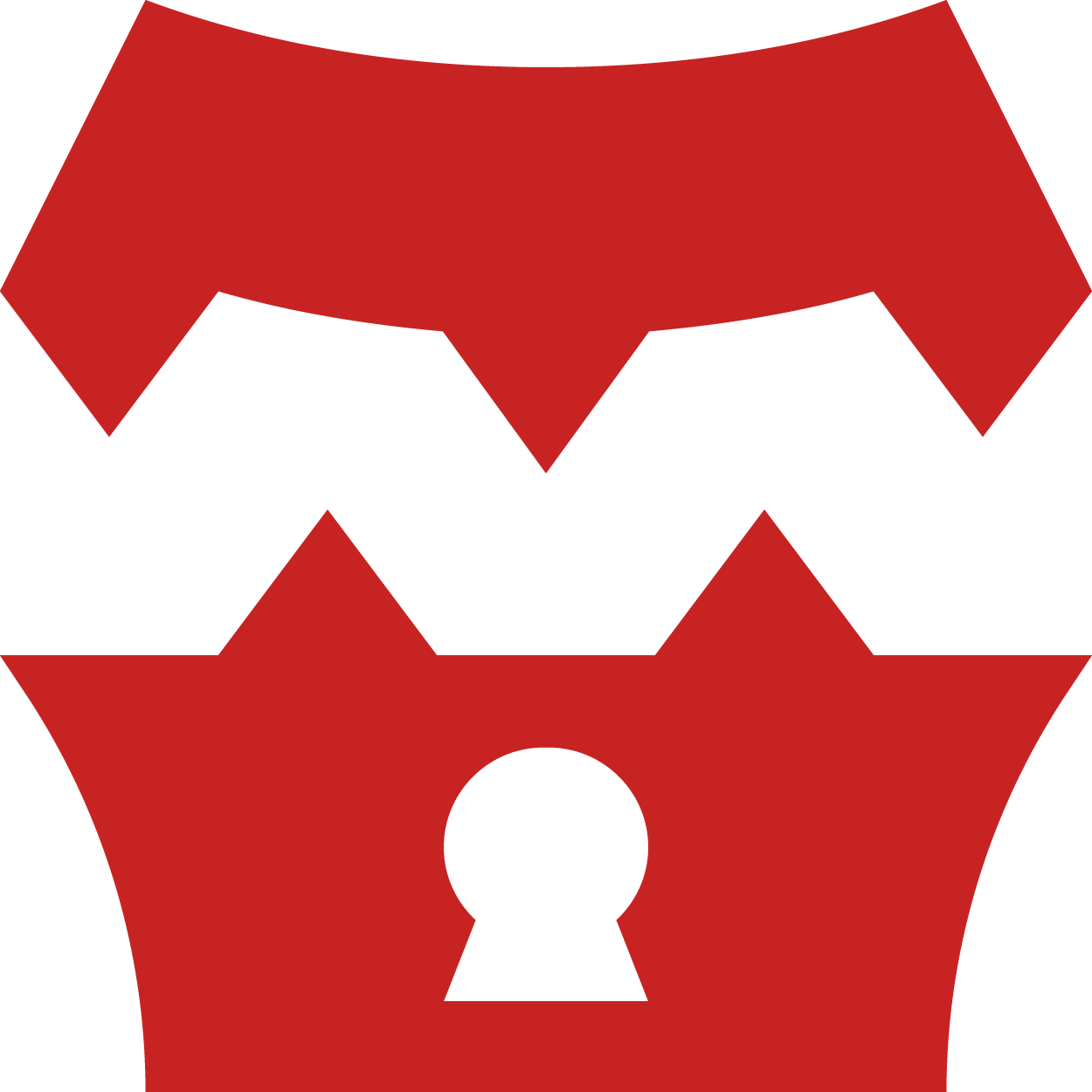
Mad Mimic is a Brazil-based indie game development studio started and managed by developers from across the world having a shared passion for game development and doing what they love. Through their games, Mad Mimic tries to offer the players a world that feels extremely real, muddled with a bit of madness here and there.
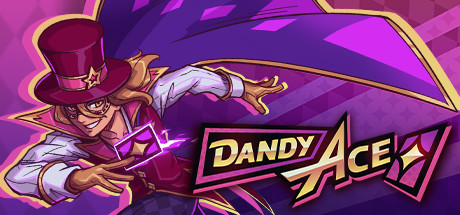
Their upcoming game, ‘Dandy Ace’ is a testament to their uniqueness and exuberance. This Roguelike action game will have you dashing around your foes and leaving them for dead in a trail of magic. There’s extremely clever attention to detail throughout the game, including in the narration and character development that is generally not seen in this genre. Check out this game to experience the magic of Mad Mimic Interactive. Know more about the studio and their games!
Studio Koba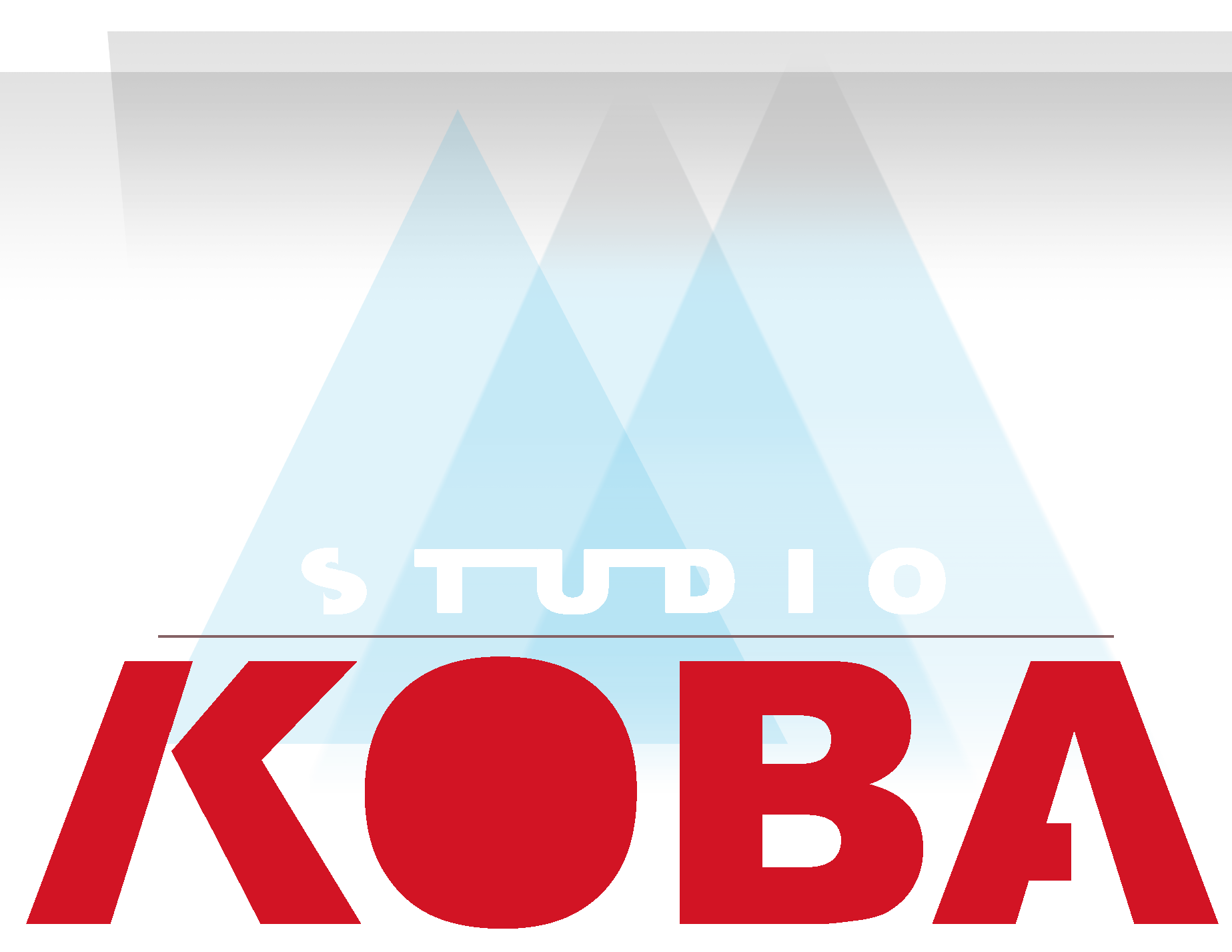
Studio Koba is an independent studio that’s been building games since 2016. Through their games, they give players a chance to experience unique and bizarre worlds, stories, and emotions. Their games are truly out of the box and challenge players at every turn.
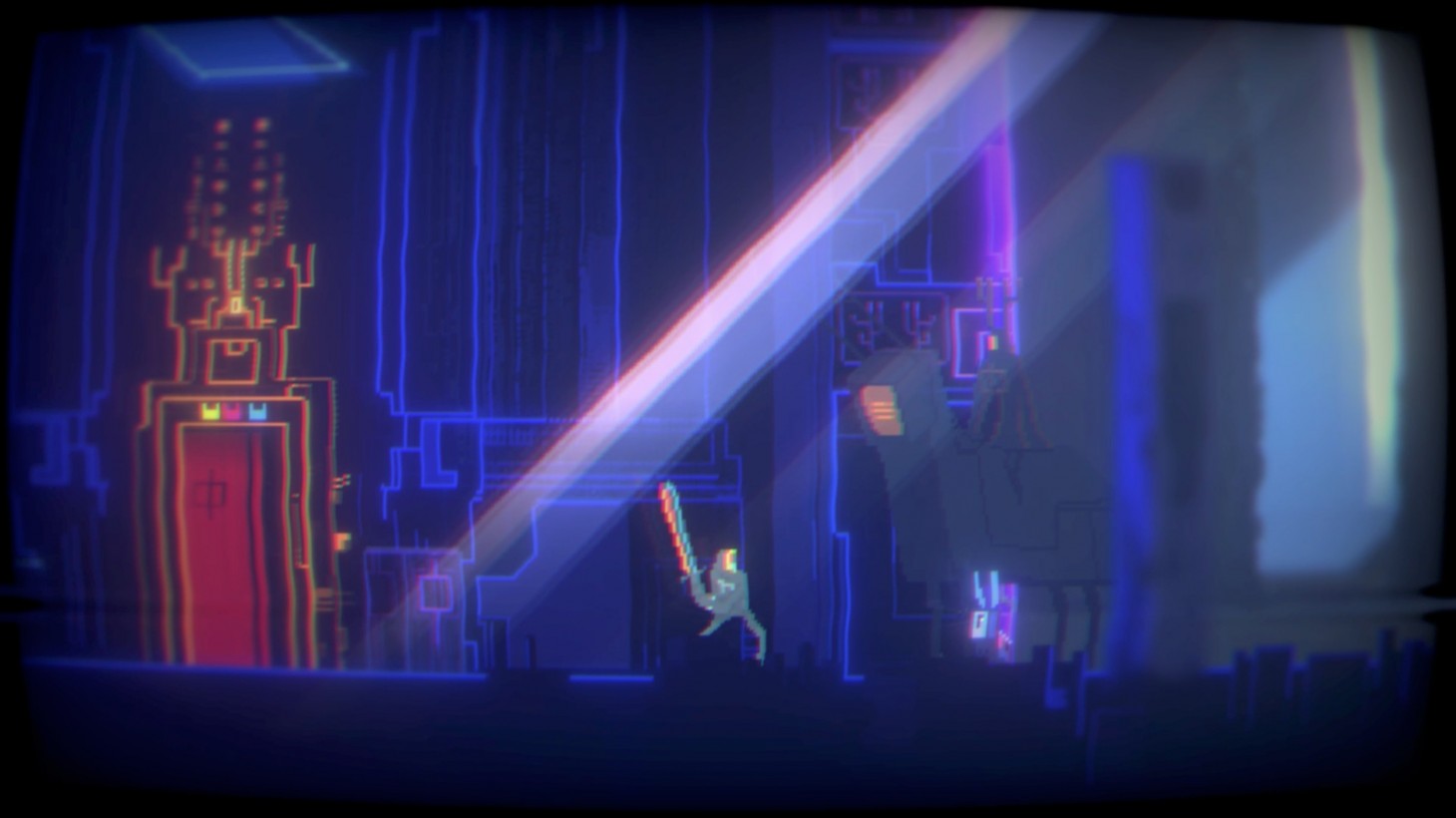
Their upcoming game, ‘Narita boy’, is full of radical adventures through an 80’s inspired cyberspace of synthwave tunes and futuristic visuals. Check out their website to follow the other works they do!
Graceful Decay
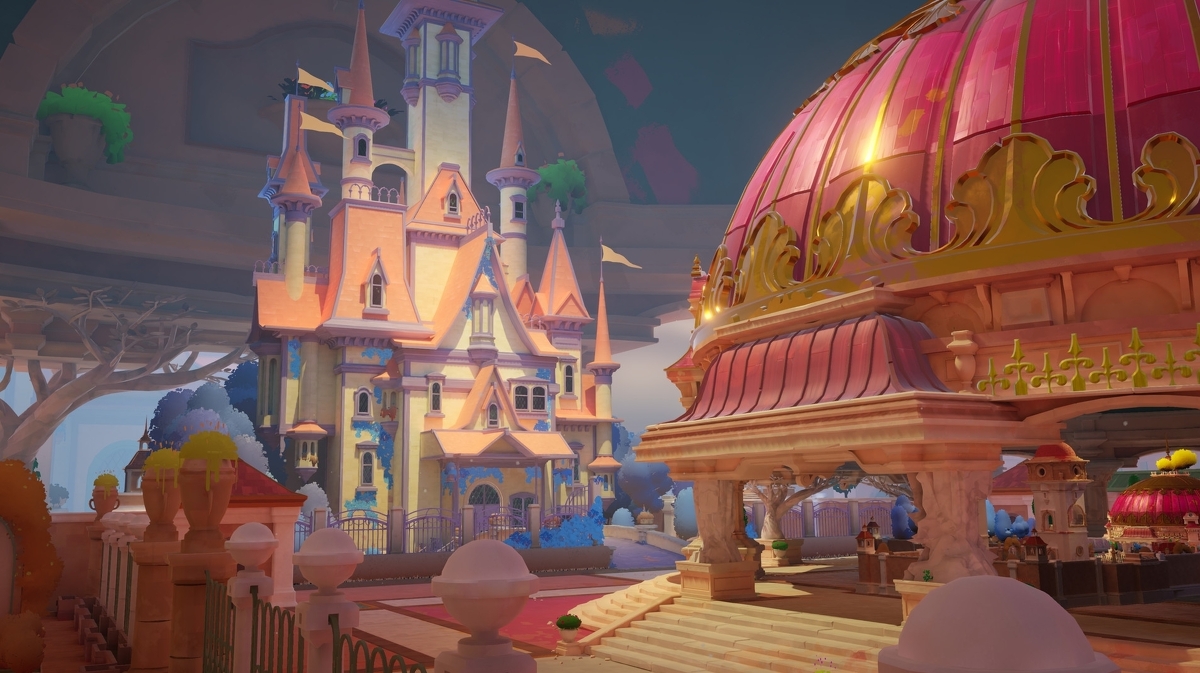
Graceful Decay is an independent game studio based out of San Francisco with team members working across the globe. They are coming up with their debut game, called ‘Maquette’.
Maquette is an extremely mind-bending puzzle game with beautiful visuals and audio. It seamlessly combines first-person exploration and puzzle-solving with its perspective-shifting visual landscape, to offer the most unique experience to players.
Check out this game to get a flavor of the skills of Graceful Decay, and to enjoy a game of puzzles, exploration, and the relationships between things – bundled together with a clever twist. Follow their website for regular updates!
What did we miss?
Stay tuned to find out about more game creators like you. If you have a game studio we should know about, drop us a note!

Beamable Releases Version 0.9 of its Unity SDK
Beamable is excited to announce version 0.9 of the Unity SDK. It is packed with a number of new features and enhancements and comes on the tail of the March Server Release.
If you are new to Beamable, you can grab the SDK by signing up to develop on Beamable for free.
If you are an existing customer, you can just right to the migration guide.
Here are the comprehensive release notes!
New Editor Tools
The Beamable tools provided for the Unity Editor environment have seen substantial improvements in terms of workflow, developer experience, and feature set. They have also received a visual makeover to better blend in with the Unity Editor.
Content Manager 2.0
The Content Manager has seen substantial improvements in terms of workflow, developer experience, and feature set.
- Visual makeover with support for thousands of content objects, better organization of content types in hierarchies, and a more unity-native feel
- Content validation which appears alongside erroneous fields
- New Publishing and Downloading dialog with visualization of progression and automatic validation
- Support for tagging content objects to create groupings that span content types
- Support for filtering content by tag, tag, and status
- Support for searching for slices of content using a query language
- Support for multiple content object selection and simultaneous editing
- Context menu for creating, deleting, duplicating, and renaming
- Automatic validation for missing/broken references
- Enhanced performance and responsiveness
Toolbox 2.0
For many developers, the toolbox is their first contact with the Beamable-Unity experience. It has also sustained a visual makeover, as well as centralizing a lot of the key functionality.
- New and enhanced registration & sign-in process
- Ability to switch realms from within the Toolbox
- Realms dropdown will pre-populate all the realms of a common game
- Shortcuts to Content, Prefab Skinning, Configuration, Microservices, and Portal
- Manage your account and sign in/out from the current organization
- Access documentation from the toolbox
- Unity-native design
- Auto-install of the Microservices package
Configuration
Configuring the behavior of the SDK, including of the prefabs, used to be a fragmented experience where you had to directly edit scriptable objects in your project hierarchy. This has now all been centralized within the Unity Project Settings:
- Unity Project Settings window will now include a searchable Beamable section
- New Console Prefab Configuration
- New Session configuration for defining which information to collect
- Shortcut available in the Toolbox
New Feature – C# Microservices
Developers who seek to create custom server-authoritative gameplay without the burden of operating their own infrastructure can now do so with C# Microservices! C# Microservices are docker containers that can be run and debugged locally on your dev machine. Your server-authoritative code lives alongside your client code, enabling better re-use and source control.
- Create a new C# Microservice from within the Unity Editor
- Write server-authoritative code in C# from within the Unity Editor
- Run and debug the code as a local docker container until you’re ready to deploy it
- Deploy your C# Microservice from within the Unity Editor to run in the Beamable cloud
- Promote the C# Microservice from your realm to another realm directly from the Portal
- Serialization and networking is automatically handled
- A C# Client to invoke functions on your Microservice is automatically generated for you based on your API
- Share code between your Client and your C# Microservice
- Beamable API remains consistent whether it is invoked from the client or server
- Content can be shared between client and server seamlessly
- Auto-scaling rules to spin up more services according to load
- C# Microservice supports infrastructure metrics collection and visualization in Portal
Coming in 1.0 — native storage for C# Microservices.
New Feature – Group Donations
Group Donations allows players of the same group/guild to donate currency to each other. A group member publishes a request for currency, and other players may contribute an amount up to a maximum. Donation requests also have a cooldown, which ensures that group members do not spam requests. Developers can specify what donations are allowed, as well as a variety of other constraints via Donations content.
- Groups support players donating currency to each other
- Groups support specifying allowed player donations via Donations Content
New Feature – VIP System
Developers can now define VIP Programs that entitle players to bonuses when they receive specific currencies. In a nutshell, VIP programs are defined as Content and track their progression via a designated currency (e.g. VIP points). Developers can then define multiple VIP Tiers, which players can qualify into (and disqualify from) based on specific thresholds. These Tiers in turn entitle players to multipliers on currencies they receive (e.g. 10% more). The VIP feature is automatically integrated with Inventory and Commerce/Offers.
- New VIP System which supports multiple tiers and currency bonuses
- Inventory update operations support an optional flag to apply or ignore VIP Bonuses (e.g. don’t apply vip bonus when setting player currency from the portal)
- Inventory supports automatically applying a VIP Bonus to currency updates if the player qualifies for a VIP Tier
- Commerce supports automatically applying a VIP Bonus to offers if the player qualifies for a VIP Tier
- Inventory API to preview what a currency grant will be with the player’s vip bonus
- Inventory API to get all VIP Bonus multipliers for a particular player
New Feature – Realm Workflow
We’ve introduced the ability to organize your game into a hierarchy of realms, each representing a distinct environment. Content and microservices can be copied/promoted from one realm to another. This way, each developer works in their own realm, and when they are ready can push their content to another realm (e.g. ci, staging) or pull content into their current realm. This has the added benefit of enabling producers to own the promotion of content deployments up to production.
- Promote content and microservices from Unity to Beamable
- Promote content and microservices from one realm to another
- Change realms inside of Unity and easily download content from that realm to your local machine
Enhancements
General
- New package name
- Refactored and more consistent namespaces
- Updated package dependencies (e.g. TextMeshPro, Addressables)
- Updated documentation
- Updated sample projects
- Updated API References (C# and HTTP)
- More APIs exposed under Beamable.API
- Semantic versioning of packages
Commerce
- BeamableIAP now automatically integrates with Unity IAP if the library is available. Initiate real-money transactions via Beamable.API.BeamableIAP
- Integration of storefront with VIP System to provide bonus currency if the player qualifies
Leaderboards
- Leaderboard API supports setting entry stats, such as rate of growth to perform real-time animation (e.g. idle games)
Events
- Support write_self client-authoritative score updating
- Support granting items and currency rewards
Chat
- ChatService is now subscribable and automatically removes chatrooms players lose access to (e.g. leaving a group/guild)
Matchmaking
- New experimental API for matchmaking, which natively integrates with Game Relay service for synchronous multiplayer
- Matches are configurable via content
- Matchmaking API supports subscribing to updates
Content
- All Beamable default content has validation rules for every field and will notify developers/fail to deploy on validation failure
- Common validation rules are available for use on custom content such as type constraints (e.g. MustBeCurrency), dates, numeric types, and more
- Content service data uploading performance improvements
- Content deserialization will resolve content type to closest parent if actual type is missing (e.g. items.swords is missing, will be treated as items as opposed to being ignored)
Realms
- Developers can set a Customer Alias “slug” (e.g. disruptorbeam) and use it in place of a numeric and hard-to-remember CID
- Developers can switch realms in Unity
- When creating a new game, 3 realms will be created for those games by default, with the option to add more as needed (dev, staging, production)
Trials
- Trials API is now available in the client library
- Trials supports additional Stat “contains”, Stat “contains any” and Stat “contains all” operations
Inventory
- Inventory can support a starting amount of currency beyond zero through Currency Content
- Inventory, when queried, returns all currencies that exist with an amount that is either the starting amount specified by the developer or 0
- Inventory automatically sets Player Stats for currency amounts to facilitate targeting
- Integration with VIP system to automatically grant bonus currency
- Optional API to opt-out of VIP bonuses when granting currency
Bug Fixes
- Beamable ReadMe file no longers appears on each launch
- Content serialization of null vs. empty array types in Unity Scriptable Objects is now consistent
- Inventory service no longer errors when subscribing to large numbers of different content types
- Inventory was ceasing to provide asynchronous updates when switching user accounts at runtime
- Content downloading of 1000+ files no longer errors out with “too many files open” message
- Cloud Saving was using incorrect path separators on Windows builds
- Cloud Saving improved handling for high-contention files
- ClientData in PlayerListingView now correctly serializes dictionary data
- Content Manager no longer hangs for ~15 seconds when there is large volumes of content and a developer enters playmode
- Content serialization of doubles has been improved
- Switching realms no longer leads to access token errors
- Account prefab no longer shows stale information when switching between saved accounts (alias and avatar)
- Sending a chat message to a group room no longer results in an error
- Facebook Games Graph Login flow flavor does not support name_format field leading to failure to login
- Events that have extra long durations (run for years) now schedule and run correctly
Breaking Changes
As this is a major version update, there are some breaking changes that may lead to incompatibility with projects using the previous 0.0.x versions, or clients that are live with that version. See migration guide here: https://docs.beamable.com/v0.9.0/docs/migration-001-090
Namespace Refactor
The 0.9.0 is a new generation of the package — this is reflected in the fact that the package has a new identifier. Its content has also seen a substantial refactor in terms of code namespaces. This was a necessary step to sanitize the codebase, ensure that code could be shared with C# Microservices, and make it more intuitive to find what you’re looking for.
ContentRef serialization
The 0.9.0 package version features a potentially breaking change on how content refs get serialized which may affect those of you who:
- currently have a game in production using package versions 0.0.x (e.g. 0.0.141) AND
- make use of beamable prefabs or content which uses ContentRef (i.e. content reference dropdown)
Content deployed via the Unity Editor content manager using the 0.9.0 version will write content references to Beamable in a way that is not backward-compatible with 0.0.x builds. Builds made with the 0.9.0 package, however, can consume content in both the old serialization format as well as the new format.
We recognize this may not be a trivial change for some games, as it would require a force upgrade to a client built with 0.9.0. For those of you for whom it is prohibitive but still want to adopt 0.9.0, you can restore the original serialization format by adding the following compilation flag to your Unity Scripting Define Symbols: BEAMABLE_LEGACY_CONTENT_REFS
See migration guide here: https://docs.beamable.com/v0.9.0/docs/migration-001-090
Summary
This upgrade is a massive step forward for Beamable and our customers. If you have any questions or concerns about migration, our team is standing by via email and on Discord to help you with anything you need.

Join the Beamable Community
At Beamable, we continue to work with game creators getting them the features and support they need to implement social, commerce, and content management features into their games. We’ve created a new community section of our website including our new Official Beamable Discord Server where game makers can openly discuss the challenging process of building live games.
You do not have to be a Beamable customer to join the server! Join up, accept the rules, and you can engage with other game developers and our team around topics like game design, LiveOps strategy, the rise of NFTs and digital collectibles, and general industry news.
We also encourage you to showcase your games and progress and celebrate the challenge game creation process with others.
There is something for everyone!

We also suggest you follow us on Twitter and LinkedIn for important product and company updates, job postings, and a range of industry news and game dev resource posts!
We hope to see you in the Discord server soon!

New Features in the Beamable March Server Release
We recently deployed a new set of changes and features to the Beamable backend. None of these changes impact the Unity SDK, but they represent new features available to all Beamable customers.
New Feature – Group Donations
Group Donations allows players of the same group/guild to donate currency to each other. A group member publishes a request for currency, and other players may contribute an amount up to a maximum. Donation requests also have a cooldown, which ensures that group members do not spam requests. Developers can specify what donations are allowed, as well as a variety of other constraints via Donations content.
- Groups support players donating currency to each other
- Groups support specifying allowed player donations via Donations Content
New Feature – VIP System
Developers can now define VIP Programs that entitle players to bonuses when they receive specific currencies. In a nutshell, VIP programs are defined as Content and track their progression via a designated currency (e.g. VIP points). Developers can then define multiple VIP Tiers, which players can qualify into (and disqualify from) based on specific thresholds. These Tiers in turn entitle players to multipliers on currencies they receive (e.g. 10% more). The VIP feature is automatically integrated with Inventory and Commerce/Offers.
- New VIP System which supports multiple tiers and currency bonuses
- Inventory update operations support an optional flag to apply or ignore VIP Bonuses (e.g. don’t apply VIP bonus when setting player currency from the portal)
- Inventory supports automatically applying a VIP Bonus to currency updates if the player qualifies for a VIP Tier
- Commerce supports automatically applying a VIP Bonus to offers if the player qualifies for a VIP Tier
- Inventory API to preview what a currency grant will be with the player’s VIP bonus
- Inventory API to get all VIP Bonus multipliers for a particular player
Enhancements
- C# Microservices should have default auto-scaling rules
- Matchmaking API supports subscribing to updates
- Chat v2 supports subscribing to chat rooms via PlatformSubscribable
- Inventory can support a starting amount of currency beyond zero through Currency Content
- Inventory, when queried, returns all currencies that exist with an amount that is either the starting amount specified by the developer or 0
- Inventory automatically sets Player Stats for currency amounts to facilitate targeting
- Content service data uploading performance improvements
- Trials support additional Stat “contains”, Stat “contains any” and Stat “contains all” operations
- C# Microservice Orchestration supports infrastructure metrics collection and visualization
- Content Service serves all data from the CDN domain (content.beamable.com)
- Trials (Cloud Data) serves all data from the CDN domain (trials.beamable.com)
- Developers can set a Customer Alias “slug” (e.g. disruptorbeam) and use it in place of a numeric CID
Bug Fixes
- Announcements: when multiple awards are claimed in bulk, that share the same symbol and quantity, are lost
- Special Offer Store listing is not refreshing after cooldown when using time-override
- Chat v1 private messages disappear
- C#MS Requester errors appear after service has been running for a few hours.
- Athena database name generation must be lowercase or it results in view creation failures
- OpenAPI Docs missing query args for object routes
- Facebook Games Graph Login flow flavor does not support name_format field leading to failure to login
Give Beamable a Try
Check out all these new features for free by downloading the Beamable SDK at https://beamable.com/free and checking out our documentation and sample projects to get rolling.

Game Dev Studios to Watch – February 2021
We are a little late… but here we are with another month of game studios to check out! At Beamable, we love to learn about new studios, new games, and new teams working on cool stuff. If you are making games, you should definitely have these studios on your radar for inspiration.
The Fullbright Company
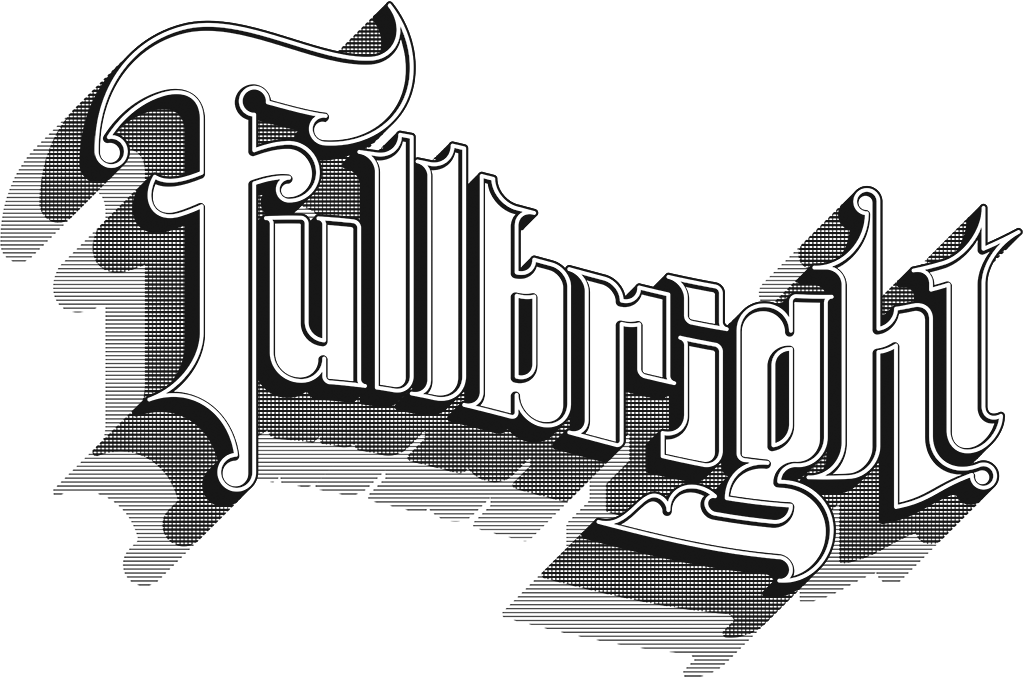
Based out of Portland, Oregon, The Fullbright Company is an independent video game company responsible for Gone Home and Tacoma. Their focus is on compelling storytelling and beautiful graphics coupled with real-life scenarios in the most beautiful ways.
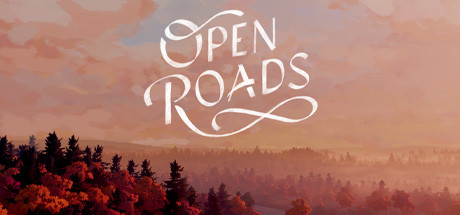
Their upcoming game, Open Roads, is around the story of Tess Devine and her mother Opal on an unforgettable road trip. Using beautiful visuals and sound effects, the game very insightfully explores the relationship of a mother and daughter. Know more about the studio.
WolfEye Studios
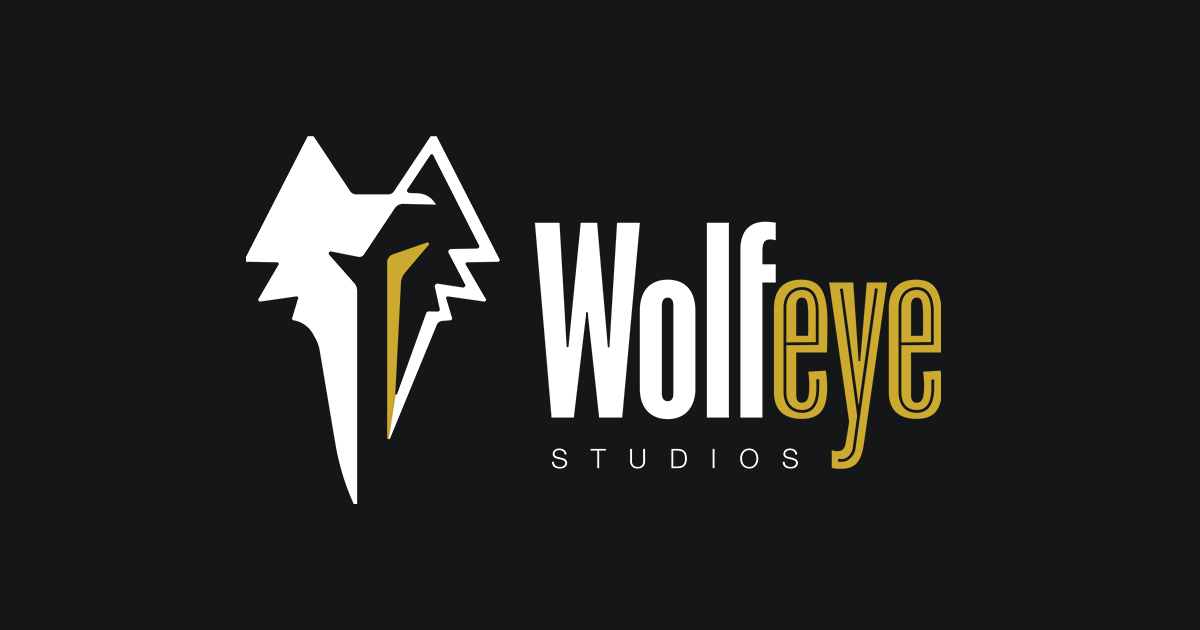
WolfEye Studios is a fully-distributed team, operating from ten cities around the world. Their aim is to go deep into simulation and gameplay possibilities. They value bold art direction and stylized graphics. WolfEye Studios provides the players an experience of living their own adventure in a simulated world that responds to their decisions in unique ways.
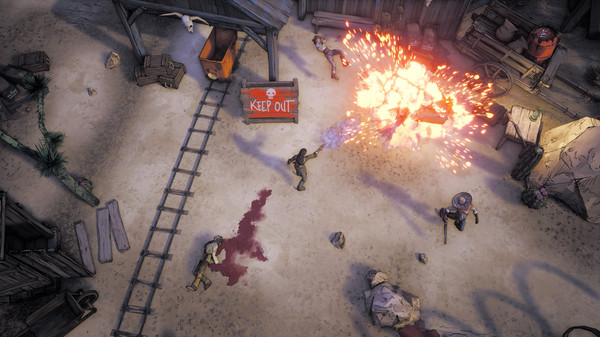
Their upcoming game is a fantasy reimagining of the wild West. Weird West allows gamers to experience the adventures of five different protagonists whose lives are intertwined. The game has different playstyles, and is often described as an “immersive sim”. Learn more about the studio
Visai Games
Visai Games is a Canada-based independent game development studio with a debut game called Venba. it’s about an Indian woman who migrates with her family to Canada and tries to keep the spirit of their old home alive through her cooking.

The art style of this game is strikingly beautiful, but Venba is truly more than just the art. It lets the gamers experience the story of an Indian immigrant family, and walk through the everyday difficulties faced by them. The music of this game is inspired by Indian musicals. The game was featured in Wholesome Games‘ recent Wholesome Snack games presentation. Check out the game!
SHEDWORKS
Shedworks is an independent game development studio based out of London. The studio works on creating unique games that involve open-world adventures.
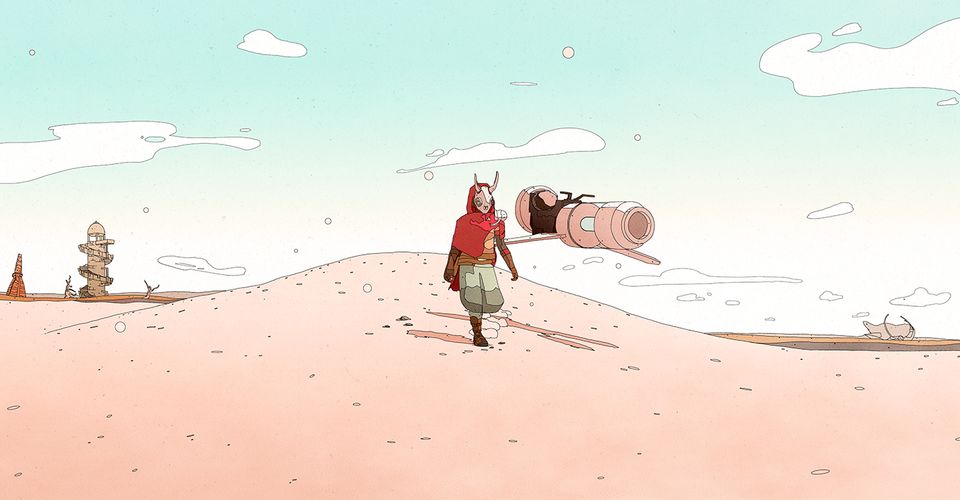
Their upcoming game, Sable, is set in an open world with a gorgeous art style. Interestingly enough, Sable doesn’t have any combat and instead lets players focus on exploration like riding on a hoverbike, climbing up walls, and walking across the sand. There are fellow nomads to encounter, puzzles to solve, and secrets to unearth. Learn more about the studio!
BlueTwelve Studio
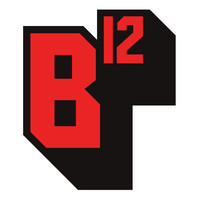
As per their website – “BlueTwelve Studio is a small team from the south of France mostly made of cats and a handful of humans”. And we think that’s enough said!
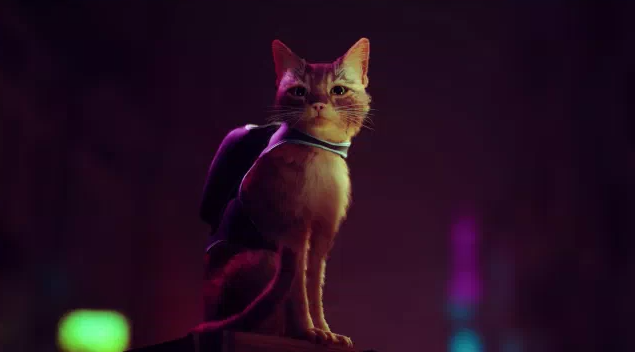
In their upcoming game, Stray, you play as a cat roaming in the rundown alleys of a forgotten cybercity. There’s nothing more to say here, except you get to experience the sight and sounds of the neon-tinged futuristic setting through the eyes of a feline. You have all the agility and stealth. The cat is also said to befriend a small flying drone called B12, which sounds adorable. Check out more about this “pawsome” game! lol.
What did we miss?
Stay tuned to find out about more game creators like you. If you have a game studio we should know about, drop us a note!

The Metaverse is Coming: An Open Letter to Game Developers and the Beamable Community
Read Beamable CEO Jon Radoff’s full letter on the coming Metaverse, the future of Live Games, and Beamable’s plans for a new game development platform.
Here is a preview of the letter:
Beamable was born out of my personal experiences building games: I’ve had the good fortune of entertaining millions of players. I’ve experienced the joy of crafting worlds that delighted and engaged audiences for years. I’ve also suffered the heartbreak of pouring myself into a game, believing in it wholeheartedly, only to see it fail to live up to its potential.
From this, I’ve learned three critical lessons. First, create social engagement with your community. Second, deliver frequent content that players are happy to pay for. Third, keep costs low.
The more I spoke to other game makers, the more I became convinced that Live Games were becoming too expensive to operate; that teams had gotten too large; that processes were inefficient and brittle; that “best practices” are often more academic than practical to implement; and that smaller teams were consistently shut out of the market entirely. As game makers, we didn’t want to build server or business technology on our own. Similarly, existing so-called “Backend as a Service” (BaaS) products were a disappointment. We wanted to focus on game development, not backend integrations.
I looked at my own background, which included creating games and building Software as a Service (SaaS) products, and realized I was uniquely positioned to do something about the problems. I had to do something to help the industry I knew and loved.
I started by putting together an amazing team of veterans in game development and software platforms. We spent a year talking to studios, identifying ways to leverage technology we had built before and discovering solutions to problems that had never been solved.
The vision for Beamable is to eliminate all barriers to building and running a successful game. I will expand upon this vision here by sharing what I’ve heard from game makers like you and the unique way we approach the problems you’ve told us about: empowering creators.
What we’re setting out to do is create the business foundation for the metaverse and build a community around it—a community in which you’ll be the most important part.

Jon Radoff, CEO, Beamable

Beamable Completes $5M Equity Funding Round to Expand Creator-Centric Platform for Live Games
Funding will propel the development of live game services targeted at Unity game makers
Press release available at PRWEB
Read CEO Jon Radoff’s Interview in VENTUREBEAT
Beamable has closed on an equity financing of approximately $5M in an oversubscribed round. The financing was led by Companyon Ventures and GrandBanks Capital, and joined by investors from Defy.vc, Oyster Funds, and others. Beamable fights for the game makers of the world by equipping them with the technology to help them continuously operate, update, monetize and socialize their games.
Since last year, Beamable has signed up over 100 game studios to its platform with a focus on developers that have embraced the Unity 3D engine, which enjoys a 71% market share among the top 1,000 games in the world. Beamable’s advantage for Unity developers is its creator-centric, low-code approach to live games. Over 20 million users have accessed games built on Beamable, resulting in $150M in revenue transacted over the platform.
“Game studios want to focus on what they love most: building great games,” said Jon Radoff, CEO of Beamable. “We saw them struggling with workflow: brittle processes, continuously reinventing the wheel, or coping with complex backend-as-a-service products. Studios come to us because they need a platform built around Unity that makes it easy to deliver new content and features, drives social engagement, and delights paying players.”
Research analysts at GlobalData report that the $300 billion game industry is shifting toward an as-a-service business model. This transformation requires a new set of software infrastructure to enable game studios to perform content management, monetization, and social experiences for their audiences. Beamable forecasts that the addressable market for software and cloud services to support this industry will exceed $20 billion by 2025.
“What impressed us about Beamable is the vision for enabling any designer to create amazing games without the burden of building and rebuilding the backend infrastructure for those games,” said Firas Raouf, general partner at Companyon Ventures. “And the decision to invest was made that much easier after we spoke to the studios that are currently using Beamable to power their game revenue while lowering their live-game operating costs by up to 75%.”
To learn more about Beamable, visit https://beamable.com — a complete media kit that includes images and the company’s vision for live games may be found at https://beamable.com/media.
About Beamable Beamable provides a Software-as-a-Service platform for the business operations of live games. The platform is tightly integrated with the Unity 3D engine, enabling game developers to focus on the creativity and differentiation of their products. Led by a team of game-industry and Software-as-a-Service veterans, Beamable is based in the Boston area, and backed by investors including Companyon Ventures, GrandBanks Capital and Defy.vc. For more information, visit https://beamable.com.

A conversation with Unity Game Developer Harsh Mandalia
We had a chance to sit down with Harsh Mandalia, a participant in the Game Jam 2020 AD event sponsored by Beamable, and find out what it was like to participate and take advantage of the Beamable platform!
1. How did you get into game development?
When I was in school, I was curious about how games are made but I had very little knowledge about programming, but after getting into the college (IIT Gandhinagar), I got some knowledge of programming and I joined the game development club of IITGn (Digis). There, I learned about making games and Brackeys Unity videos helped me get started.
2. What was your goal when submitting a game for the game jam? What did you hope to learn?
I am somewhat new to game development and this game jam was my first one. So, my goal was to at least make a game within the time limits. From this game jam, I was hoping to try a few Unity features that I haven’t explored. The coolest thing that I learned while making the game was Unity’s particle effect. After adding it, the game was looking better. I also learned to make a game that is never-ending.
3. Describe what you did to implement Beamable features into your game.
I used Beamable to add a global Leaderboard. For this, I made a separate scene for the Leaderboard and I could just drag and drop the Leaderboard prefab from the Beamable toolbox to the hierarchy. I made a button in the GameOver scene that changes the scene to Leaderboard 1. I modified the Leaderboard prefab’s CloseButton(1) and added an onClick event that changes the scene back to GameOver.
For the functioning of the leaderboard, I added a small script that sets the high score in the leaderboard from PlayerPrefs.
By just doing these few steps, the leaderboard was functioning well. To add the player Alias in the leaderboard, I used a Login Flow from the Beamable toolbox. I added a button that turns on the visibility of the Login Flow prefab. I modified the Login Flow prefab’s CloseButton(1) and added an on click event that turns off the visibility of the Login Flow prefab. And that’s it. The rest of the things were managed by the Beamable SDK.
So, after adding Login Flow, the players were able to type in an Alias for the game. And that same Alias appears on the leaderboard.
4. What kind of game do you hope to create next?
My near-term plan is to update the game jam submission with some UI improvements. I am also planning to add a background to the game. I haven’t planned anything about my next game yet, but I am hoping to tackle an FPS game next.
5. What are you most excited about over the next five years in the gaming industry? How do you think gaming will change and what are you doing as a game developer to prepare for these changes?
Previously, the industry was dominated by single-player games. Then, games like Mini Militia came about where we can play with friends locally. Now, the gaming industry is going towards multiplayer games where people anywhere around the world can play with anyone else.
Also, AR and VR games are getting huge. The future of AR/ VR games is what I am most excited about. Especially for VR, gaming will not just be you playing on your laptop or mobile. It will be like you are virtually inside the game. It’s a player experience that is much different than our current one. The combination of both multiplayer and AR/VR games will take the gaming industry to the next level.
To prepare for these changes in the gaming industry, I am focusing my learning on Vuforia Engine (for AR games) and Beamable (for multiplayer games).
Thank you Harsh!
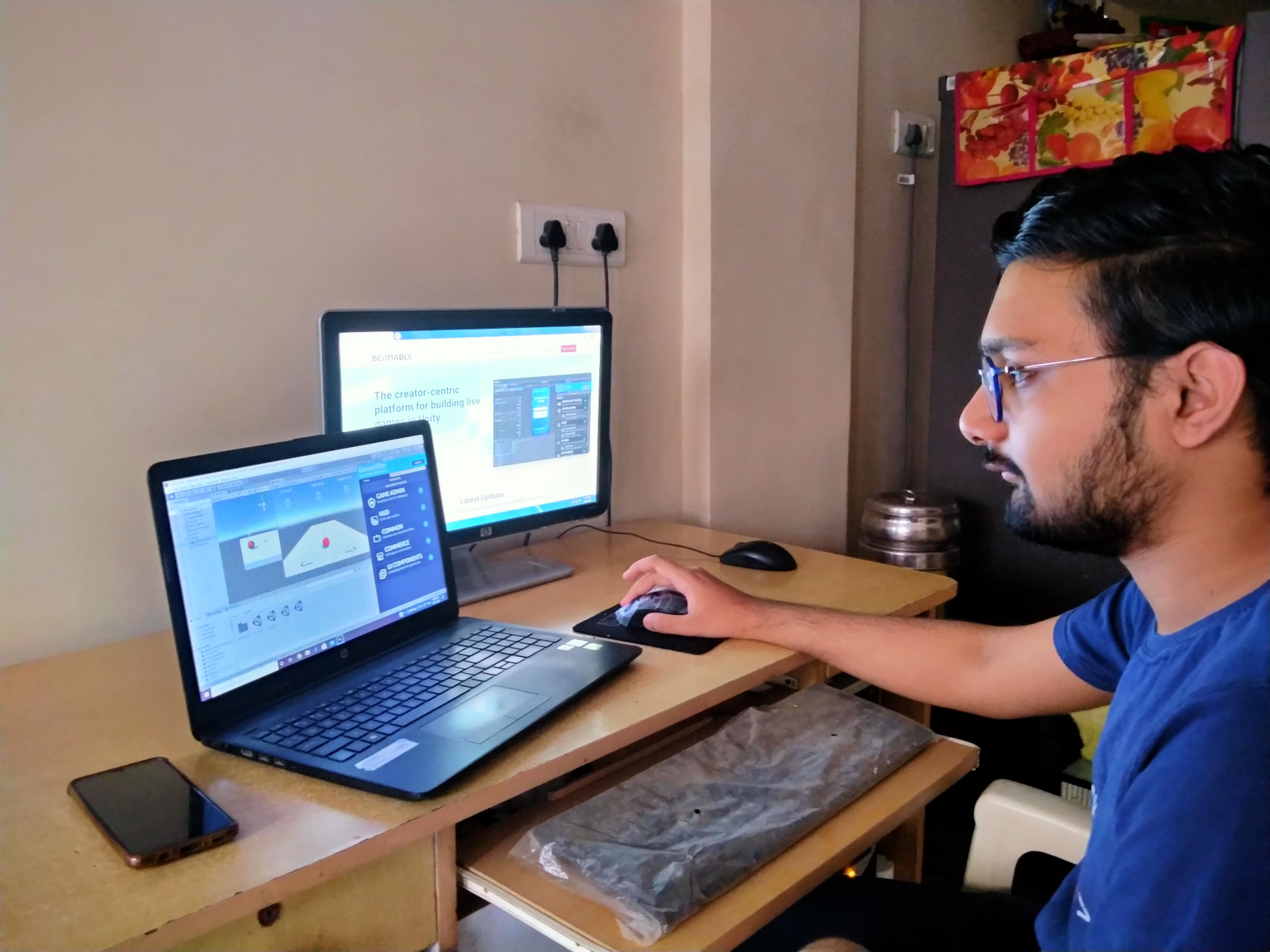
We want to thank Harsh for taking the time to speak with Beamable about his game jam experience. Check out Harsh Mandalia’s game jam submission Corona Killer!

Prototyping your game faster with Unity and Beamable
When building a successful game, you will need to get really comfortable with the process of trying, learning, and iterating with rapid prototypes. You can have an idea about how something will work in your game, but until you experience it directly, you won’t know for sure. This goes for your core game experience, as well as all of the user flows and interfaces around the “metagame” (described below) as well.
We’ve built Beamable to help with the prototyping process by allowing you to implement your core game and your metagame at the same time, ensuring that you can get a global feel for how your game will work and how players will experience all game features.
In this short article, we’ll look at prototyping in general, and how Beamable can speed you up!
What is game prototyping?
Game prototyping is the process of answering questions regarding the feasibility of what you aspire to build. If it’s a mobile app, your prototype will answer questions about usability, features, and the economic viability and capital requirements of what you want to include.
Similarly, for games, a game prototype allows you to experience upfront how your visions will translate into reality. Prototyping is the process of “reality checking” what you think you can do, with what you can actually do. It’s much better to learn failure at the prototype stage than at the point you finally ship your game. Prototyping is about adopting an experimental mindset. You have a hypothesis about how something will work, you rapidly build something to answer that specific question, and see if you are correct.
There are two approaches at the prototyping stage. Both are often used in sequence:
Paper Prototypes
This is where you make use of traditional handwritten methods to convey a sense of the player experience and dynamics of the game. Prototyping on paper will include sketches and/or flow charts and often will include lots of guiding and conversation by the game designer facilitating a simulated game session to gain answers about the gameplay assumptions.
Digital Prototypes
Once enough of the game is hashed out with paper prototypes, it’s helpful to then move to digital prototyping where the same assumptions are now converted into the primary modality of the game. Often the goal of moving from paper to digital is to validate that the game can be played without any guidance by the designer.
What should a prototype try to test?
A prototype can be as sparse or dense as the team working on it can manage to pull off within their schedule. Typically, a prototype will focus on two key game elements:
The Gameplay Loop
At the heart of every game is its gameplay loop which anchors the player in each and every moment that they play the game. It is important to “find the fun” of this core game loop before any major development is done on the game. If the core game loop isn’t fun, no amount of production quality is going to make the game successful. If you have a really fun game prototype, you will have a really fun game.
The Meta Gameplay
Just as important as the core gameplay loop is the metagame. The metagame includes everything the player has to do outside of the core loop. This can include leveling characters, managing inventory, purchasing things, managing timers, and appointment dynamics. Collecting achievements and badges, etc. The metagame will provide a huge reason for your players to come back every day. Maybe they come back to climb a leaderboard against other players? Maybe they come back to unlock new items with login bonuses? Maybe they come back to collect idle goods that have piled up? Once you find the fun in the core game loop, you need to find the right metagame that provides players exciting new things to achieve and explore long after they start playing.
When is the right time to begin prototyping?
There are two approaches to prototyping:
Prototype Before Production
The most common approach is to do all of your prototyping before the game even enters any real state of production. This is a very linear development paradigm where you make sure you’ve fully prototyped and validated all aspects of the game so that you can be most confident about the production timeline and capital requirements.
Prototype Iteratively During Production
It may seem counterintuitive to prototype during production itself, but it has some valuable advantages. Prototyping on the fly allows the team to test out new features they want to put in the game in isolation of the main game itself, iterate it, and then they can implement it swiftly without disturbing all the other work that has been done!
How can Beamable help with prototyping?
With Beamable, you get a convenient software development kit (SDK) that allows you to integrate various features in your game, including drag-and-drop feature prefabs inside Unity, as well as other features like commerce and content management, as well as social offerings!
Given the kind of game you want to make, some of these features may be more useful than the others. But what is guaranteed is that there is a lot of scope for your development time to get drastically reduced as a result of Beamable! You can save on all the time it’ll take to implement these features. Basically, with Beamable in your toolkit, you can focus all your energy on the gameplay elements that matter – story, art, progression, and anything else!
Here are some of Beamable’s features:
Admin Flow
This creates a UI for cheats as well as any other game commands. You can access the console (in-game) using the “~” key. This allows you to create custom commands that can greatly simplify the process of testing your prototype.
Analytics
This will allow you to track player behavior, providing you detailed data on what they are spending on, which features they are using the most, and where they are getting stuck as well. With insight from this data, your game can drastically improve!
Cloud Save
An important feature in a generation that’s increasingly cloud-enabled, this allows players to store their game saves on the cloud so that they can access them anywhere. This also allows them to store their information at very high speeds.
Leaderboards
Leaderboards are one of the easiest ways to expand the scope of your game and turn it from a single-player experience into a multiplayer one. Add a global leaderboard to instantly make your game a social and competitive experience.
Store
By using the Beamable Store flow, you can rapidly build and test the monetization aspects of your game from the very beginning.
Prototyping with Beamable
This list barely scratches the tip of the iceberg when it comes to what Beamable has to offer! If you want to take an in-depth look at all its features and how it can help you with game development, check out this guide on prototyping with Unity and Beamable.

Game Dev Studios to Watch – January 2021
There are a number of amazing game studios doing amazing things. At Beamable, we love to learn about new studios, new games, and new teams working on cool stuff. To that end, we wanted to give a shoutout to some studios we noticed last month. If you are making games, you should have these studios on your radar for inspiration.
Rocket Adrift

Rocket Adrift is a Toronto-based gaming studio made up of Patrick Smith (Writer, Composer, Background Artist), Lindsay Rollins (Writer, Programmer, Character Artist), and Titus McNally (Writer, Lead Programmer, UI/UX Designer). Rocket Adrift builds narrative-driven games with compelling graphics.
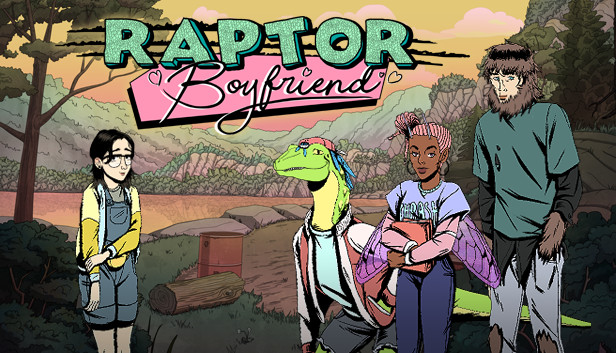
Their upcoming game, Raptor Boyfriend, is about an awkward, shy teen looking for love. Set in the 90s, the game is a dating simulator where players make friends with a fairy, a bigfoot, and a talking velociraptor. It is a love letter to the 90s wrapped in an impressive art style. Check out the website!
Santa Ragione

Santa Ragione is an Italian game dev and design studio founded in 2010 by Pietro Righi Riva and Nicolo Tedeschi. Their games focus on visceral experiences driven by experimental approaches to exploration. Santa Ragione draws inspiration from literature classics, electronic music, and contemporary art to stand out stylistically while preserving Italian design tradition. In 2010, they developed and published the Escape From The Aliens in Outer Space, a board game, in fifteen countries. The game went on to be nominated for the Diana Jones Award for Excellence in Gaming. Since then, they’ve gone on to release one amazing game after another, earning global acclaim and applause.
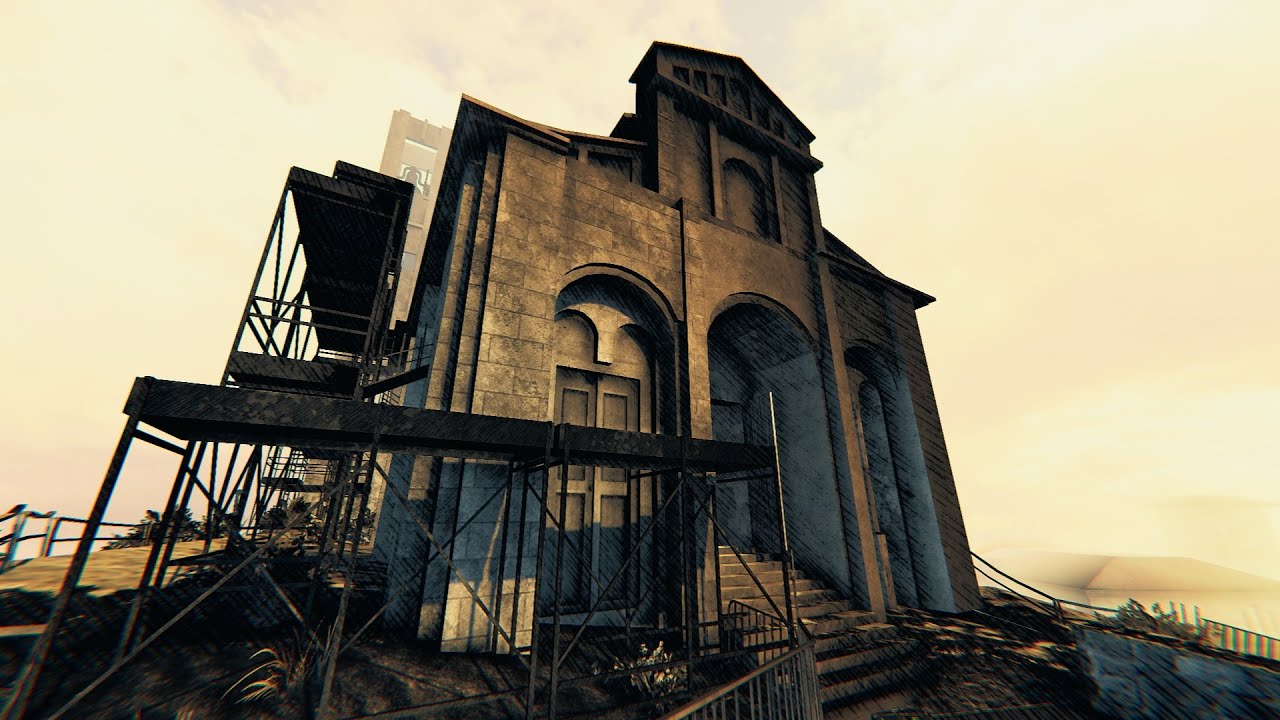
Santa Ragione’s upcoming game is an investigative horror game called Saturnalia. It’s a survival game and will be released through the Epic Games Store in 2021. The game is set in 1989 Italy in an old village with a bizarre ritual where people mysteriously disappear. Follow their official website for more news, games, and details!
KO_OP

KO_OP is a game studio run and supported by artists. Founded in 2012, the studio experiments with interactive art in all of its games. In 2014, KO_OP established a KOLAB fund to offer stipends for indie artists to make games in collaboration with KO_OP. This led to many interesting titles including GNOG, Lara Croft GO: The Mirror of Spirits, Tamperdrome, Skipping Stones, and many more. Here’s a comprehensive list.
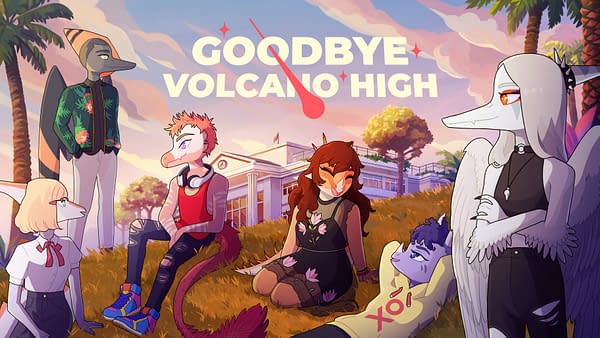
The studio is currently working on Goodbye Volcano High – a narrative game about young, high school-aged dinosaurs as they struggle to figure out life after graduation. If that doesn’t intrigue you, I don’t know what will! Learn more at their website!
Scavengers Studio

Scavenger Studios was founded in 2015 in Montreal. The studio brings together a diverse team of indie contributors with similar visions. Their first game, Darwin Project, was launched in 2018. The studio aims to provide new experiences to players by constructing unique worlds, both in designing and imagination. Scavengers Studio pushes aside convention and positions itself as a playground where different game creators bring different perspectives and their overall collaborations form the basis of game creation.
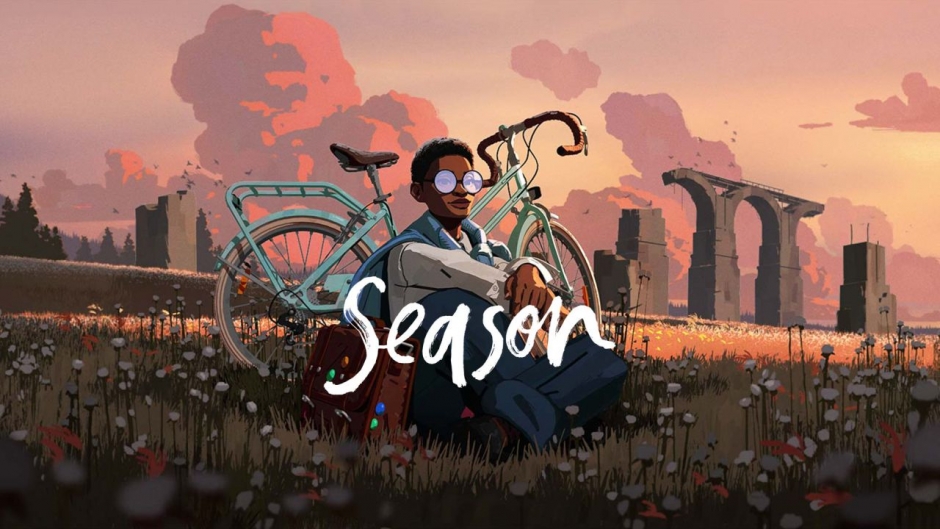
In 2019, a project called Season was announced during The Game Awards 2020, and it was one of the standout games from the event. Check out more about them and their work!
Glass Bottom Games

Glass Bottom Games was founded in 2011 by Megan Fox. Nathan Madsen is the music composer and has worked on all of the projects since the beginning. Their tagline – “We make absurdly cozy games about animals doing people things.” perfectly summarises their portfolio. Glass Bottom Games allow you to wander around on cool, foggy nights, make friends with detective cats, and run into tiny birds trying their best to do people things.

The newest addition to their list of developed games is SkateBIRD – a game where skateboarding birds grab their decks and grind bendy straws, kick-flip over staplers, and carve lines through sticky cardboard tape. Check out their website for more!
What did we miss?
We’ll be back next month with a new list of game studios. Stay tuned to find out about more game creators like you. If you have a game studio we should know about, drop us a note!

The Metaverse is coming. Are you ready?
By Jon Radoff
The Metaverse has been a long promise for technology. Since the term was coined by author Neal Stephenson in his 1992 science fiction novel Snow Crash, various companies have promised a path to a next-generation experience that combines the latest game world-building and avatar technology with hyper-connectivity to construct a global virtual reality where humans seamlessly interact with each other and potentially AI characters.
Given the current state of the gaming industry, it is increasingly clear that the Metaverse is coming—but there’s a lot of work to do.
Check out this great article in VentureBeat for a deep dive into what the Metaverse is, and the companies that are battling to create it.
The way I see it, the game development ecosystem frequently forces developers to choose between two options:
- A walled-garden that gives developers a readily-accessible audience, a set of well-integrated tools, and a marketplace of components to choose from. These features are why millions of people have flocked to platforms like Roblox to play and build experiences.
- Building in the wild where you keep more of the revenue, have access to cutting-edge technology, and far fewer design constraints—yet at the cost of exponentially greater complexity, integration and know-how.
I urge you to follow us here at Beamable. We share the vision of an Open Metaverse— one where game developers have control over how they’ll design, socialize, update and monetize their games. Getting there will mean relieving game studios of an enormous amount of the technical and workflow burden that goes along with building and operating Live Games.
Stay tuned for some updates from us over the next few weeks to tell you about how we’re rising to meet this challenge!

Jon Radoff
CEO
Beamable

Beamable Reorganization Plan Confirmed
In October, Beamable began a process to restructure under the Small Business Reorganization Act (SBRA). At a hearing at the United States Bankruptcy Court in Worcester, Massachusetts, Beamable’s plan of reorganization under the SBRA was confirmed by the court.
We are grateful for this outcome and for all of the participants who helped make it possible. In the coming weeks, we will share more information about Beamable’s expansion plans.

Beamable Restructures under Small Business Reorganization Act
In April 2020, Disruptor Beam pivoted from a game studio to a software-as-a-service (SaaS) company called Beamable. As part of that pivot, we exited the business of developing and operating games.
In 2020, a new restructuring option became available to allow companies like Beamable an option to responsibly and constructively restructure its liabilities, dedicate its disposable monthly income to a plan of reorganization and enable the company to focus on its new customers and growing business. As a result of the COVID-19 pandemic, the CARES act expanded the Small Business Reorganization Act (SBRA) to include companies such as Beamable. Beamable is now in this process.
As of today, Beamable has 35 game companies building on it’s platform. We’ve worked with Amazon to join the AWS Marketplace and support their GameTech initiatives. We are hosting a charity game jam in India! We are launching a new technology called C# Microservices that will fundamentally change how live games are built and run in Unity using an EngineCentric™ approach.
Beamable has seen amazing growth and received amazing feedback since we officially launched the company back in April, and our team continues to work tirelessly to invest in making the Beamable platform easier to use and more effective at helping game studios build game businesses.
If you are a current or prospective customer, and you have any questions about how this restructuring impacts you, please don’t hesitate to contact us through your support channels or via our website.
UPDATE (Feb 12/2021): Beamable has successfully confirmed its reorganization plan.

Indie Gems: Beamable’s Top Three Indie Games of December 2020
December was a month full of joy. You have the holidays, and you had the end of one of the worst years on record (or at least many of us think).
We also played some great games in December, so here are the top three. The list is in no particular order except that these are three interesting games we feel you need to know about on Android, iOS, and Steam. Give them some gameplay love!
If you think we missed something, leave a comment below!
Call of the Sea
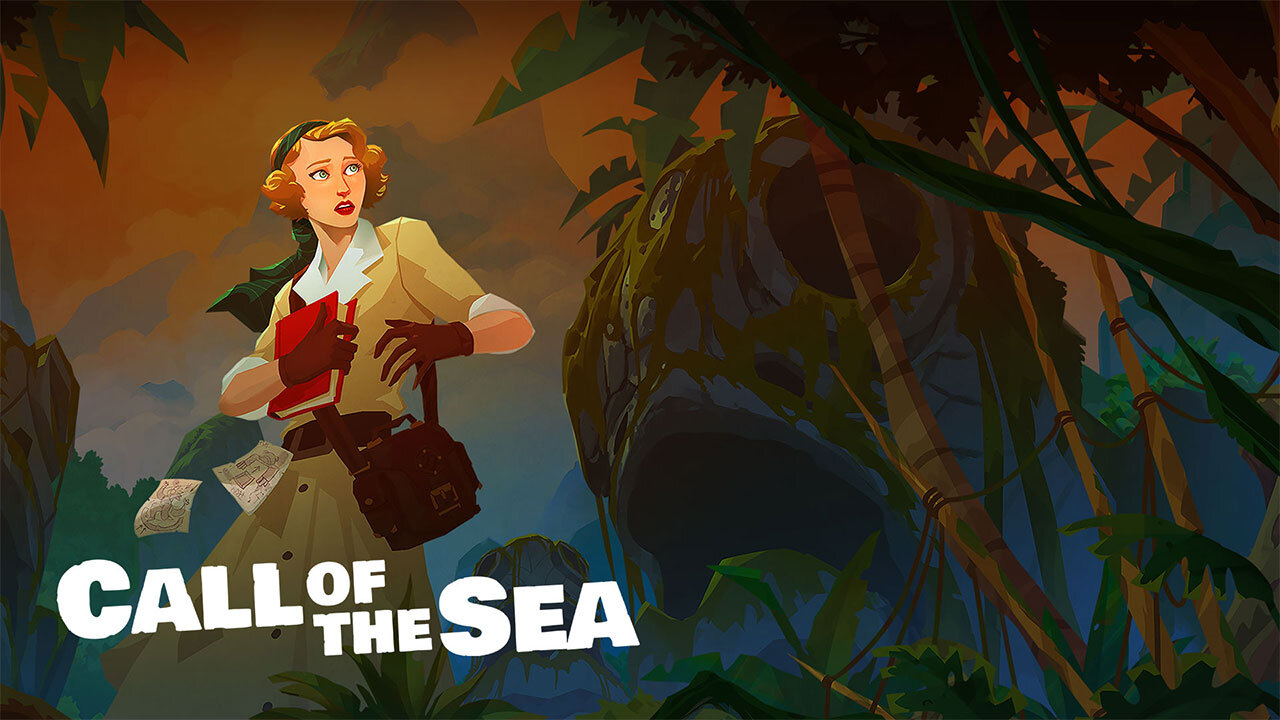
If you’re looking to wander around a lush island in the south pacific, then this is the game for you! Packed with stunning scenery, relaxing music, and overall comfortable vibes, Call of the Sea offers you the chance to sit back and relax.
Of course, it’s not just a sightseeing tour, despite how beautiful everything looks. You’re going to be on the lookout for your husband – who, along with his expedition crew, has gone missing.
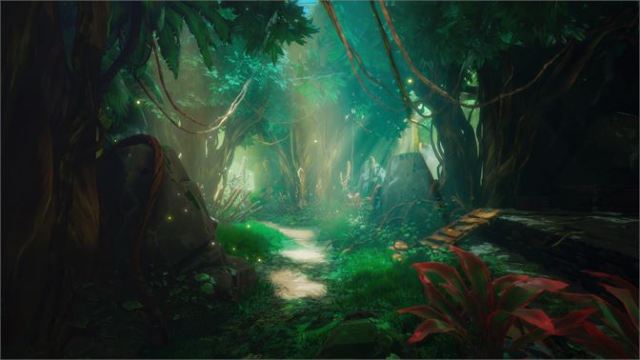
Throughout your journey, you’ll be faced with puzzles to solve ruins to investigate, and an incredible world to explore. Check out the game at the following links:
Unto the End
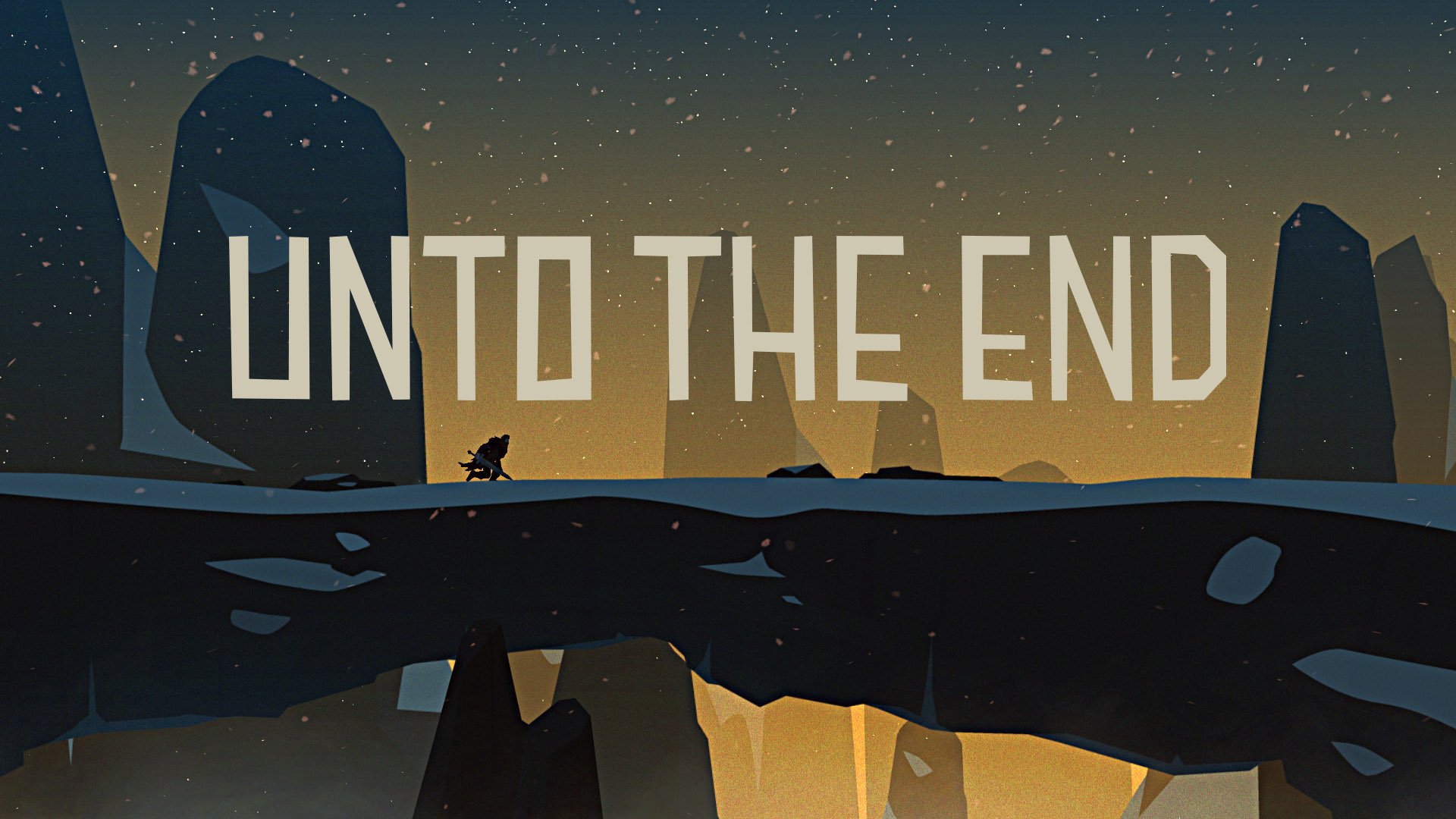
Unto the End chronicles the adventure of a person as they try to make it back to their family. It is a classic story with a unique combat system. Unto the End focuses on what is known as “read-react combat”, which means you’ll need to keep a close eye on what’s going on in each fight if you want to be successful. It also means that it’s likely going to be difficult with each battle bringing new chances for success or a gruesome fate.

The adventure is wrapped in an eye-catching, minimal art style that acts as a backdrop against tough situations. Unto the End is an excellent game created by a husband and wife indie team and well worth your time.
Here’s where you can find the game:
Orwell’s Animal Farm
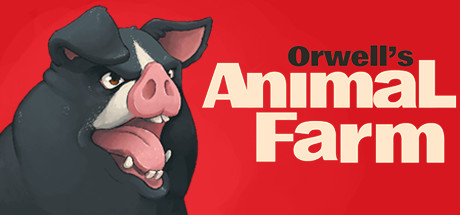
There’s a non-zero chance that you’ve not heard of the book Animal Farm. It’s a classic tale about how “all animals are equal, but some animals are more equal than others” and is required reading in many US schools.
Animal Farm very well could be one of the more intriguing games coming out this December. In the game, you control the farm playing as the animals themselves. You’re responsible for not just how the farm works, but also for churning out the propaganda that aims to keep you in power.
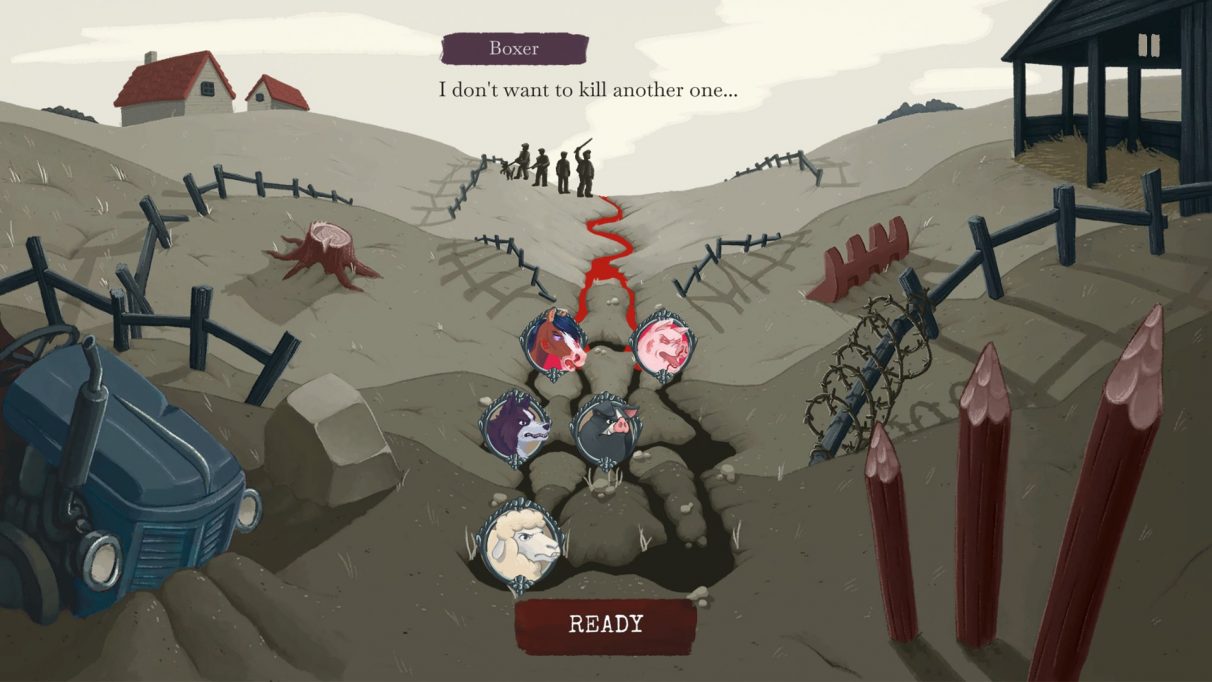
It’s an interesting idea for the game, and it’ll no doubt be the first exposure some people have had to the political ideologies at the core of the tale itself. Whether or not it ends up being publically appreciated is a completely different issue, but you have to respect the effort that has gone into this creation.
Find the game here:
Honorable Indie Mentions
The three games mentioned above no way represent all the wonderful titles that came out in December 2020. Here are some more fascinating indie gems released this month, be sure to check them out!
- Empire of Sin — Steam |Green Man Gaming | Official Website
- Chronos: Before the Ashes — Steam |Nintendo | Playstation |Epic Games
- Immortals Fenyx Rising — Ubisoft | Epic Games | Nintendo
- Red Dead Online —Rockstar Games|Epic Games| Steam
- Dragon Quest XI: Echoes of an Elusive Age — Steam | Nintendo | Official Website | Epic Games | Playstation
That’s a wrap!
That’s a wrap for this month and this year! We hope you’ve had a good 2020, and we wish for an even more fruitful 2021. Happy Holidays and New Year greetings from our team at Beamable to you.
Each month we try to find 3 indie games that can serve as an inspiration to game makers. If you’re an indie developer building games, we’d love to hear about it and possibly feature you. Contact us and let us know! Perhaps Beamable can also help you build your game faster with live game features, content management for LiveOps, and even a server-less game option! Check us out today!
Oh and, if you think we missed a game or two, the comment box is open!

How to Find Venture Capital for your Indie Game
The number of indie game developers is steadily on the rise, the gaming industry itself has rapidly grown over the last decade, and is likely to be a $300 Bn industry by 2025! It surpassed both music and video as a market, in terms of growth, and naturally, this rise was supported by significant attention from venture capital (VC) investors as well.
VCs are Paying Attention
While historically the gaming sector has had to either self-fund or scrap together seed money from various corporate development initiatives, there is growing interest among traditional venture funds to see games as a growth vehicle. Some of the popular funds that are getting into gaming recently include:
- Griffin Gaming Partners
- Galaxy Interactive
- Bitkraft
- London Venture Partners
- Makers Fund
- Play Ventures
- NfX
- Greycroft
- Andreesen Horowitz
- Khosla
- Lux
…and many more. Even with the pandemic playing out in full force, by Mid 2020 (Q2), VC investments in gaming had seen figures as high as the entirety of 2019, coming in at well over $700m.
This interest in gaming is not just reserved for North America and Europe. Interest in gaming has soared massively in India and other developing markets where there’s been a surge of broadband internet consumption due to 4G and now 5G adoption.
Geo-specific venture firms are now popping up dedicated to gaming, firms like Lumikai based in New Delhi. With the Indian game market featuring among the five biggest gaming markets in the world, there is global attention pouring in from the capital markets.
According to Venture Beyond, the following is a list of high-profile financing rounds in the game industry. It’s not just games getting the dollars, but everything related to games as well: tools, tech, and distribution platforms.
- Statespace: May 2020 $15m Series A led by Khosla Ventures
- Guilded: April 2020 $7m Series A led by Matrix Partners
- Superplus Games: April 2020 $5m Seed led by Makers Fund
- Robin Games: March 2020 $7m Seed led by London Venture Partners
- Genvid: March 2020 $33m Series B led by Huya
- FanAI: November 2019 $8m Series A led by Marubeni
- VENN: September 2019 $17m Seed led by Bitkraft Esports Ventures and Eldridge Industries
- Polystream: April 2019 $12m Series A led by Intel Capital
What types of games are being funded?
The best way to know the types of games getting funding is to look at the decisions of the people making the deals.
Jack Tretton, who quit Sony and started his own venture capital fund – Interactive Gaming Ventures – has already invested in 10 deals in the last couple of years. Most of these are PC game developers, while only one of them is making mobile games.
Henric Suuronen, Partner at Play Ventures, believes that we’ve just entered the golden age of mobile gaming and is primed to invest in over 30 mobile game development companies.
David Gardner, Partner at London Venture Partners, feels that PC games are a safe bet to make at this point. Once a PC game really takes off, it’s easy to diversify the same investment in a different field, such as on console or mobile.
Samuli Syvähuoko, Partner at Sisu Game Ventures, thinks the entire field of gaming is full of excitement and opportunity – this is the reason why Sisu Game Ventures has invested in everything from hyper-casual and instant messenger-based games to mobile, PC, as well as AR!
Jay Chi, Partner at Makers Fund, is betting on ‘Gaming as Media.’ Chi’s reasoning is that when games are consumed as media in large, hyperconnected online worlds, it allows for more immersive gameplay.
It’s a great time to be a game dev!
Today, there is no shortage of platforms on which people play games. With the rise of on-demand game streaming platforms such as Google Stadia & Amazon Luna, the gaming market is further poised to grow even more! As the number of platforms grows, so will the demand for content. Players need games, and game makers need funding. Venture Capital funds are increasingly looking for ways to ride the wave of the massively growing game industry. Try reaching out to a few on this list, pitch your game, showcase your metrics, and you might be their next press release.
No matter where you are in your game development journey, Beamable is here to help. Make games faster with our fully integrated Unity Live Game Platform. Check out our features and maybe we can help.

Beamable Unity Multiplayer Sample Project
Beamable has released a new sample project to illustrate how to use the multiplayer and matchmaking features of the Beamable Platform. The sample project is called “Turn-based Beamable Fighters” (TBF).
You can see an overview of the project in this video:
Full documentation for this sample project is available in the Beamable Docs:
https://docs.beamable.com/docs/multiplayer-sample-project
In order to use this sample project, please create a free Beamable trial account at:
To get a list of all Unity sample projects available for Beamable, check out:

Beamable releases Game Content Designer
Beamable is excited to announce the launch of our Game Content Designer (GCD) – A Google Sheets Add-On.
There are many ways to think about managing a content pipeline for your game. As we’ve created our own games over the years, we were unable to find a tool that could properly support the scale of content required from a AAA LiveOps title.
Live games often have frequent changes to their structured and unstructured data: the definition of items and merchandise, virtual goods, currencies, inventory, items, world data, and stories are just a few examples. Managing these data structures is usually a pain, requiring special forms or processes or direct-editing of source code files that contain data definitions.
Game developers know that these problems only get worse when you make your game live — because now you want the power to change any of this data on the fly, without interfering with your update, deployment, or live operations — or requiring engineering intervention. That’s why we created Game Content Designer to give you the power to manage all of your game’s live data with the simplicity of a Google Sheet.
After building GCD to run and operate large games like Star Trek Timelines, and Walking Dead March to War, we are now releasing the Beamable Game Content Designer for any team that wants to manage their content and instantly transform it for import into a game content system or scriptable objects, all from Google Sheets!
Why Google Sheets? While we support many ways to author content with Beamable, we wanted to support the key workflow of game designers. Historically, game designers like to create content in spreadsheets. Game rewards, leveling, and other systems of progression need to be modeled out and correctly scale. This requires formulas to plan out different scenarios and map those to different reward schemes.
With Game Content Designer, game designers can create where they are most comfortable and then export the results. With no extra work, they can publish directly to their game with GCD handling all the translation from content to scriptable objects.
Even though GCD is made to work with Beamable, you do not have to use the Beamable backend. GCD converts your flat spreadsheet into JSON objects with complex structures (arrays, references between objects, multidimensional objects), validation, constraints (min/max), crosstab IDs, etc that you can load directly into your game via Unity.
As an example, take this array in Google Sheets:
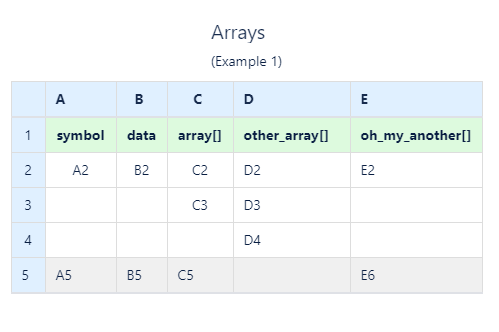
When exported by GCD, it creates the following JSON:
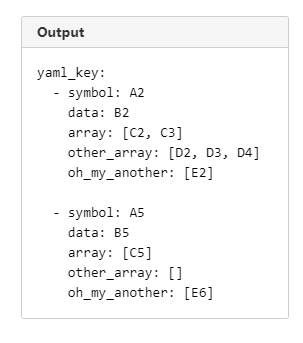
It’s never been easier to create, edit, and format your game content!
For more information and to download the Game Content Designer now, and be sure to let us know what you think!

The Many Ways to Monetize Your game
Creating an outstanding game is a challenging process not to mention the complexity of monetizing and marketing your game to make it commercially successful. These days, there are a variety of methods to generate game revenue. We’ve assembled a quick list to perhaps give you some new ideas about how to turn your game into a business.
1. In-Game Ads
In-game advertising is probably the most common and effective way to monetize a game. By making your game free to download, it ensures access to as many players as possible can access your game experience. Then, when players are engaged, they pay with 5-30 seconds of their time to watch an ad and earn opportunities to extend their play through acquiring content, currency, or more playtime.
It’s also important to know that players recall in-app advertisements 47% of the time, attesting to the efficiency of these ads at driving new players into games. So don’t just use ads in your game, make sure you think about how you might invest in advertising in other games to drive players.
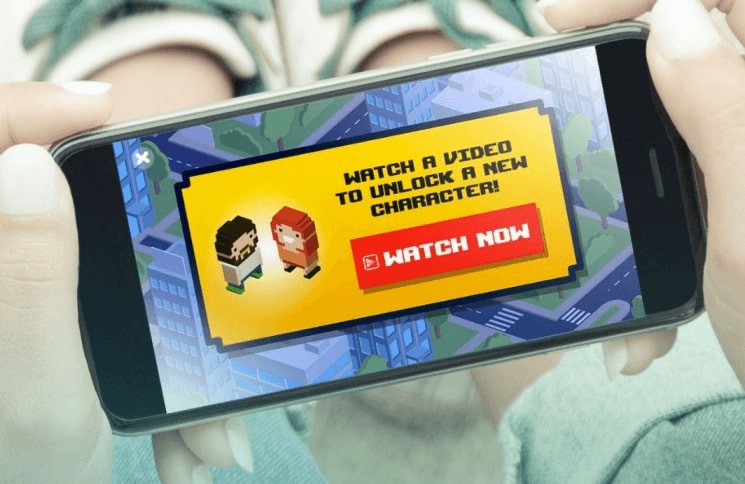
It is true that players generally dislike intrusive or irrelevant ads. As you design your game experience, think about utilizing ads in the places that make the most sense. For instance, don’t interrupt an important action moment. That will pull players out of the game flow. Instead, focus on important points of transition or resource acquisition between action moments. Too many ad requests too often will put players off.
If you’re using in-game ads as your monetization technique, be sure to choose the right ad networks and use ad mediation to maximize your revenue (we’ve talked about ad mediation later in this article, keep reading!)
There are broadly three types of in-game ads that you can pick from:
- Dynamic In-Game Ads: By far the most popular type of in-game ads, DIGAs allow media buyers to purchase geo-targeting capable, real-time advertisements inside of a game’s universe. The advertisements can appear anywhere in the game environment including billboards, posters, bus stops, or any other elements present in your game environment.
- Static In-Game Ads: Static in-game advertising takes the form of product placement inside of console, PC, and mobile video games. The advertisements are planned and integrated into a video game during its design and development stage, and therefore allow for much more customized integration.
- Advergames: Advergames go quite beyond just in-game advertising. Think of them as custom-built video games with the sole purpose of promoting a brand. These can be played on just about any platform, and range from a simple web-based mini-game to a full-fledged 3D game. Typically, an advergame’s storyline, gameplay, and environment will heavily promote the commissioning brand or product.
For more information, we suggest checking out this article over at SmartyAds to get more familiar with the In-game ad options: https://smartyads.com/blog/in-game-advertising-guide/
2. Rewarded Video Ads
Rewarded video ads are a form of In-Game advertising but are unique in that they are directly tied to providing a reward to the player for their attention.
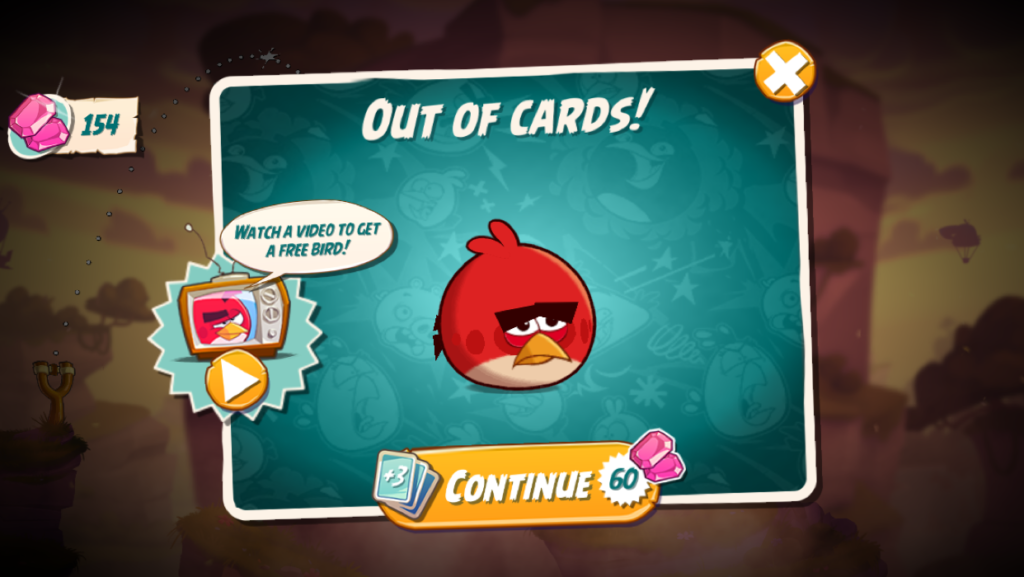
If your game is using virtual currency or virtual items, adding rewarded video is pretty straight forward. Rewarded video also works really well with games that have cooldown timers or general play timers to create scarcity. Out of all the In-game Ad formats, Rewarded Video has the highest return for game makers.
Check out the Google Admob resource to learn more about rewarded ads and how they can benefit your game! Here’s another resource for you to understand the intricacies of designing rewards ads so that you don’t miss out on anything!
3. Ad Mediation
Ad mediation is a monetization technique based on in-app ads. This method has improved and evolved over the years as more and more publishers and advertisers turn to use it.
Here’s how it works:
In order to maximize ad revenue, game publishers need to collaborate and work with different ad networks. However, as the number of the ad networks has grown, it’s become increasingly difficult to track and manage them all. This is where ad mediation comes in!
Ad mediation platforms allow you to add several advertising networks and work with them in a unified way. Think of such a platform as an intermediary between game devs, publishers, and ad networks.
Another benefit is that you need to integrate just one SDK for such a platform instead of integrating multiple SDKs for multiple ad networks.
Check out this comprehensive guide to understand everything about ad mediation, including how to add it to your game, and supported ad networks!
4. Data Monetization
Data monetization is a lesser known technique for monetizing your game. It involves the collection and transfer of game and player activity data from your game to a data aggregator.
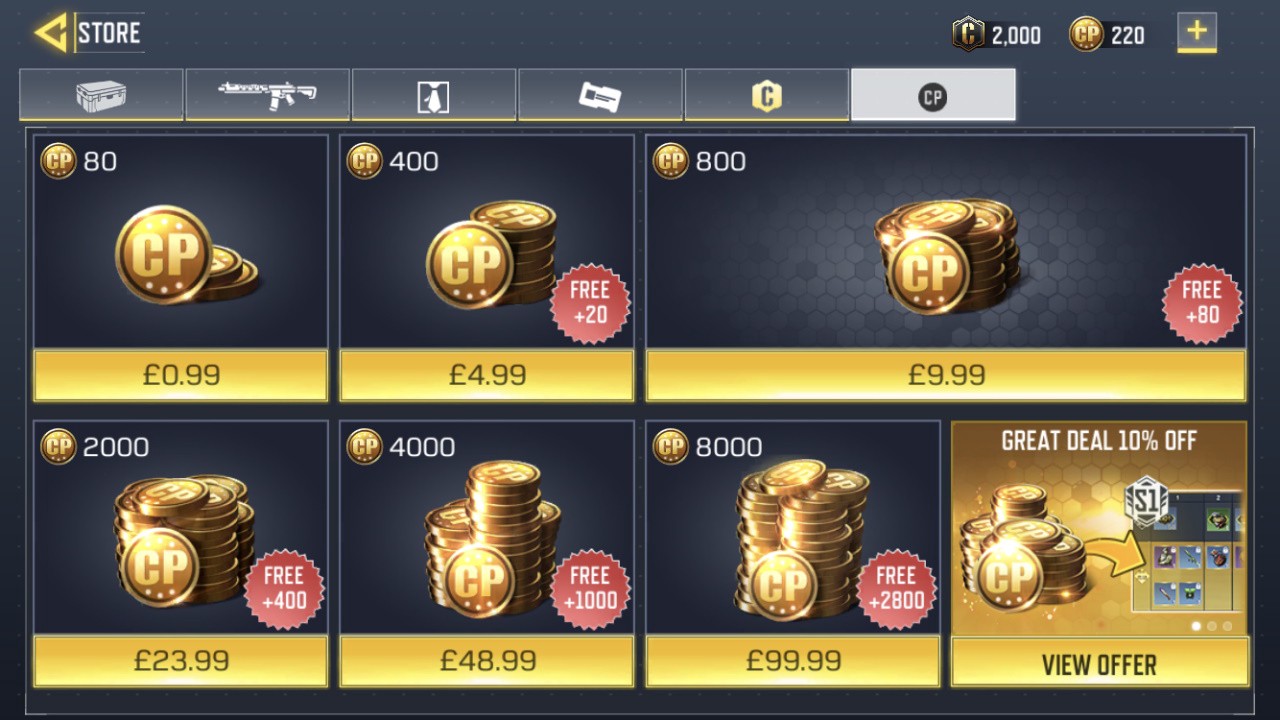
It’s important to note that the data you’re collecting is not personal player data. Only non-personal data like country, device type, screen size, etc. is collected.
Data monetization works similar to ad mediation in that the more data collectors you work with, the greater revenue you’ll earn.
The more daily active users (DAU) you have, the more money you’ll earn from this technique. Keep in mind that for this technique to be truly effective, you’ll need to have more than 50k DAU.
Here’s an extremely content-rich guide on data monetization, along with a list of publishers that you can approach. Don’t forget to check it out!
5. In-App Purchases (IAPs)
The rise of In-App Purchases (IAPs) has dramatically changed the gaming landscape in the past few years. It allows you to keep your game free to maximize player reach but then set up a system of offers, stores and purchasing for players to buy and pay based on the level of engagement they want to have with your game world.
Getting the economy designed correctly and the pricing on offers and items correct takes a bit of design work. You’ll need a combination of inexpensive common items and expensive rare items so that there’s something for everyone. You’ll also need to create a LiveOps pipeline of content to ensure there is a steady stream of new content for the game.
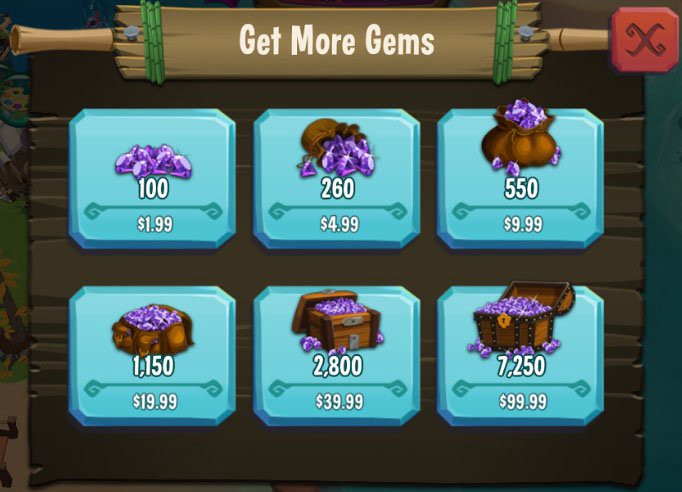
If in-game purchases are for you, you might want to check out Beamable- our low-/no-code tool allows you to create and target offers with real-money transactions and virtual currency purchases. Including limited-time offers, max purchase limits, cool-downs, and many more rich configurations. Check out our demo.
6. Paid Games
There will always be demand for paid games (also called Premium or Boxed Games). This is where you make your game, put a price on it, and players pay you one time to experience the content. This often works best for single player narrative driven titles where there is no expectation of endless play or ongoing expansion.
Setting pricing for your indie game is difficult. Here are two videos that you can watch to get an idea of different pricing levels you might want to use:
Which way to go?
Hopefully, this list is helpful at understanding all the options you have available to monetize a game. Which techniques work best will depend on the type of game and your overall goals.
Beamable offers a number of features to implement these approaches. Check us out. Maybe we can help?
Would you like to add to the above-listed items? Leave a comment!

Beamable Free-to-Play Financial Model for your Game Forecast
At Beamable, we are committed to fighting for the game makers. As such, we’ve pulled together a free-to-play (F2P) financial model to help you simulate the size of a business your game can generate with various levels of retention, ad spend and revenue per user calculations.
You can play with figures like ARPDAU (Average revenue per user), CPI (cost per install), various day retention levels, as well as your UA (User acquisition) spend. The Google Sheet will take those numbers and crunch out the revenue you can expect at 60, 180, and 365-day increments.
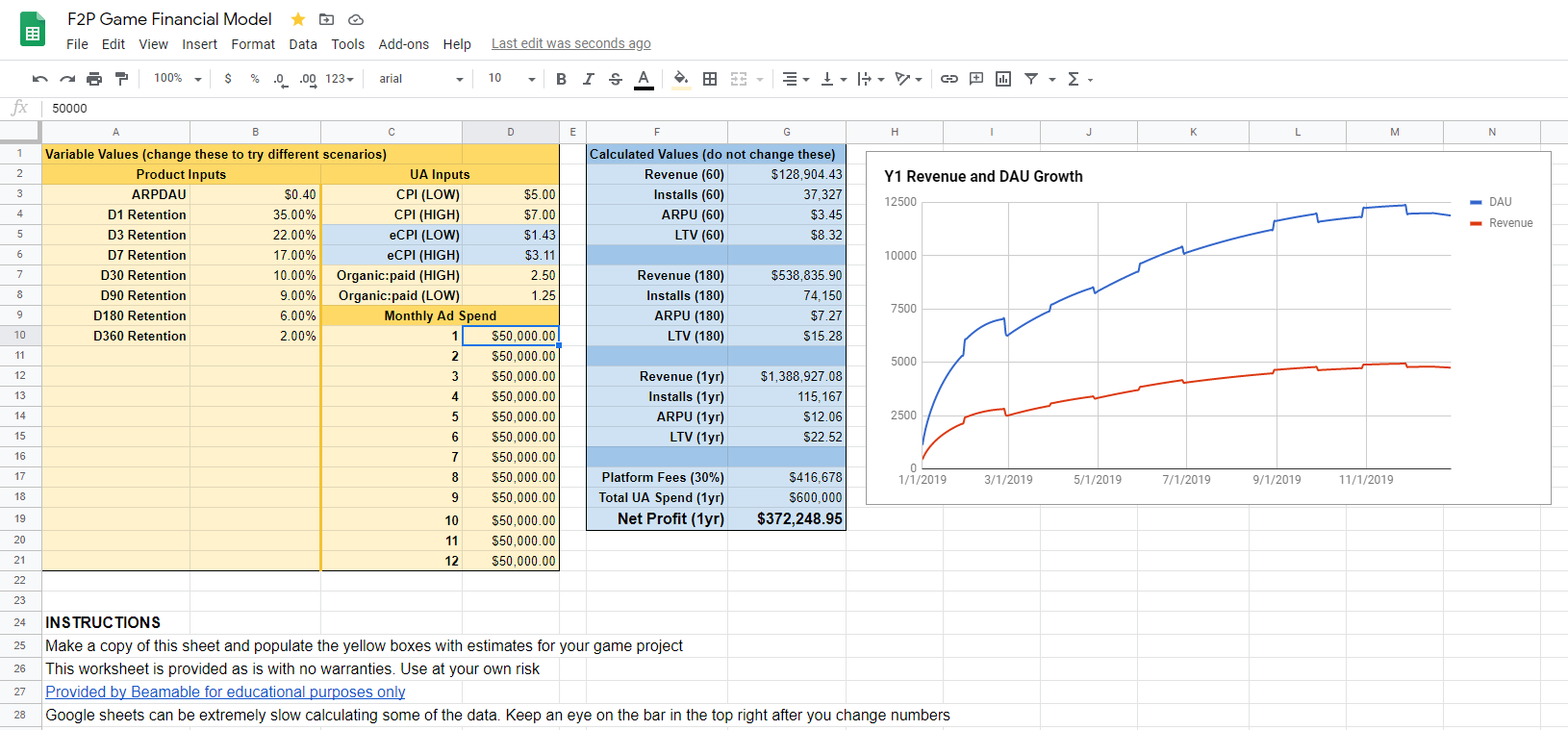
Get the financial model for your game now!
Simply make a copy of the spreadsheet, and you can run your own simulations.
NOTE: The calculations can take a few seconds to complete when you mess with the retention numbers, so please be patient and allow calculations to complete. You can see the progress by looking at the Google Sheet refresh progress bar in the upper right of your sheet.
You should also check out our white paper on Target Game Metrics for a sense of what numbers you should be shooting for in your game design.
We are highly interested in how this model works for you. Contact us with feedback!
If you want to see how Beamable can equip you with the features and content management workflow to boost retention and revenue for your Live Game, get started for free!

Beamable sponsoring the GamerGage Game and AR Development Webinar Series
We are excited to sponsor the GamerGage Game and AR Development series running from December 19th until December 25th, 2020!
The event will feature Kushal Baid and a series of six (6) educational session on topics like:
- Overview of the Game Development process, from start to finish, including monetization. (Day 1)
- How to start the development of a small game (Day 2)
- Integrating the Beamable SDK for Unity (Day 3)
- Overview of AR in games (Day 4)
- Continue development of a small game (Day 5)
- Final integration of Beamable SDK for Unity and game completion! (Day 6)
All sessions will take place on Google Meet and posted to Youtube after the event is over.
For more information, or to sign up for the webinar series, check out GamerGage on Facebook.
You can also register via the online form for the event.

Ship your game fast, and finish the game with LiveOps
So you’ve developed and launched a fantastic game. You created the concept, designed the mechanics, and even thought about funding and monetization. Your work isn’t over yet. It only gets started once you’ve officially launched!
There are many dynamic elements that come into play once you’ve launched your game. These include business intelligence, segmentation, customer service, constant updates, and a lot more. In order to ensure player retention for your games, you must constantly update, optimize, and adjust the game throughout its lifetime in order to remain relevant.
One option to do all of this without any hassle is by utilizing LiveOps!
In the simplest terms, live operations, or LiveOps, are any changes that can be made to a game without having to release a new version – these can include changes in gameplay, design elements, or characters.
Most of the games that have gone on to become successful today have been the ones that have grown over time with new content, live events, and frequent updates. Such frequent updates stabilize the DAU (daily active users) and increase engagement and monetization.
LiveOps is all about continuous interaction and improvement over the long term while cutting down on cost as much as possible. Practicing LiveOps allows you to ship your game fast, and make the final changes and modifications to the live game so that your game continuously attracts more players.
Understanding the player lifecycle
Any player downloading your game will go through an entire lifecycle, that will depend on the type of game, and particularly whether it’s a product or a service.
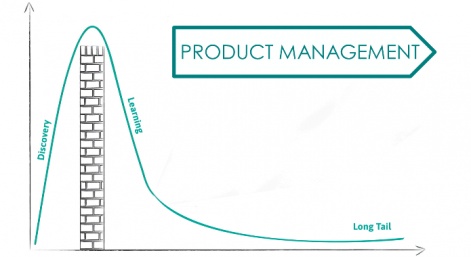
In case of a product, generally, the focus is on getting as many players over the barriers to install during launch and then managing the longtail of additional users over time.
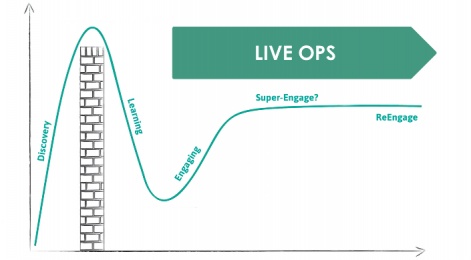
For a service, on the other hand, the focus is on building up value for existing players and then transforming it to match their growing needs. It’s about the longevity for the players, rather than about a fleeting moment.
When players discover any game-as-a-service, they find reasons to stick like napalm. It creates a sense of anticipation, a fear of missing out. However, getting a player to stay is as much about the player learning how that game becomes a part of their daily routine as it is about helping them learn the controls of your game.
Utilizing LiveOps requires an understanding of what it takes to activate a player who has discovered your game, and then what it takes to engage them further. It means finding the right triggers for players to spend time on the game, and driving those players into longer sessions.
It also means understanding what the definition of engaging could be for different cohorts of players, and how that can be used to inspire the community to engage with your game.
LiveOps is about players
LiveOps motivates game developers to think of their players as a community; a complex group of people having an ever-evolving relationship with the game and with each other. LiveOps works on complex impulses like a desire for new skills, more autonomy, deeper relationships, and more. Since the goal of LiveOps is to increase the longevity of the game, the developers must consider how the game will fit into their players’ lives well beyond just a singular entertainment experience.
LiveOps is about game design and direction
Games-as-a-product tend to be developer-centric. They seek to bring forth a developer’s perspective, their story, and their crafted experiences. LiveOps games on the other hand are focused on what the player wants and constantly aim to find opportunities to offer more to the players. That by no means implies that LiveOps games lack design direction. In fact, they have even clearer design direction as they’re constantly navigating the gap between what players say they want and what’s possible in the game’s core loop and evolving game economy. The priority in LiveOps games is shifted though towards player satisfaction which is quite different than the design of premium games.
LiveOps about experimentation and iteration
LiveOps is an iterative game development process. The community of gamers is ever-changing and ever-evolving, as a result of that, LiveOps games are also ever-evolving – they’re never completed. Therefore, LiveOps games focus on relentless experimentation through frequent game updates that test hypotheses about player behavior and evaluate the results with data. This necessitates the ability to push content and other changes frequently. LiveOps games are also often developed as modular and independent feature-wise, so that iteration is easy.
The Future is LiveOps
The LiveOps approach is fairly new but has proven to be invaluable in creating games that engage and retain players for years. In the coming years, it is expected that more and more developers will take a LiveOps approach to ship quickly, and iterate the game toward success with direct player input, analytics, and continuous content creation.
If you want to know more about implementing LiveOps for your game, reach out to Beamable! Our low/no-code platform offers LiveOps web-based tooling to manage and schedule content whenever you want! Check us out today!

Beamable Gift Guide for Game Makers 2020
There are lots of gift guides out there for gamers… but what about the people who make the games? Who is buying gifts for them? If you spend every waking moment building game worlds for others, what can those others get for you?
Well, Beamable’s team is made up of all kinds of game makers…so we asked them, what do you want for Christmas? Here are some of the ideas. If you know a game maker in your life, think about some of these gift ideas for the holidays.
A hardbound notebook and a pencil; for ideation on the go.
$8.00

Chances are, if you are working on a game, you will be thinking about it everywhere you go. Why not get the game maker in your life a really nice hardcover notebook and maybe a pencil or pen? They can use them to brainstorm and think through complicated game problems. The hardcover is critical. Try out the Black n’ Red Hardcover Notebook! You can use this notebook on a bus, or in a park, or wherever. Get it at Amazon.
Book: Blood, Sweat, and Pixels
$12.00
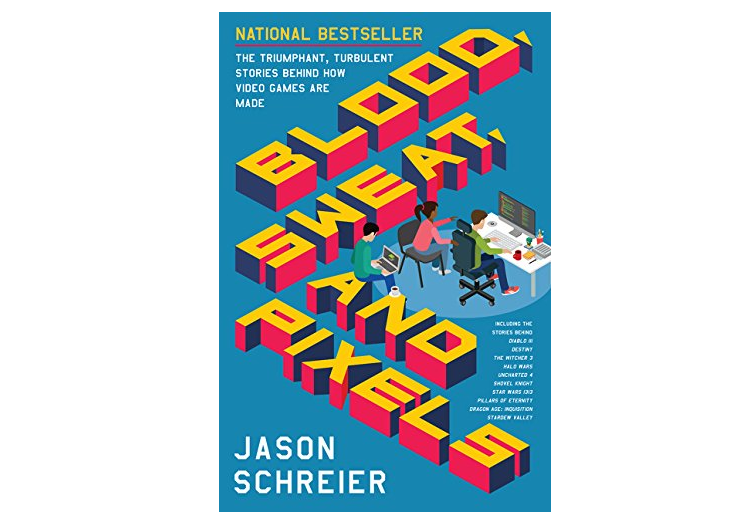
Building a game is hard, so it’s often good to spend some time learning about the stories of others to provide perspective around the challenges you’ll face and the success you’ll experience. Blood, Sweat, and Pixels is a great snapshot of the horror and beauty of game dev, across professional and indie levels. Get it at Amazon.
Razr Firefly v2 Gaming Mouse Pad
$49.99
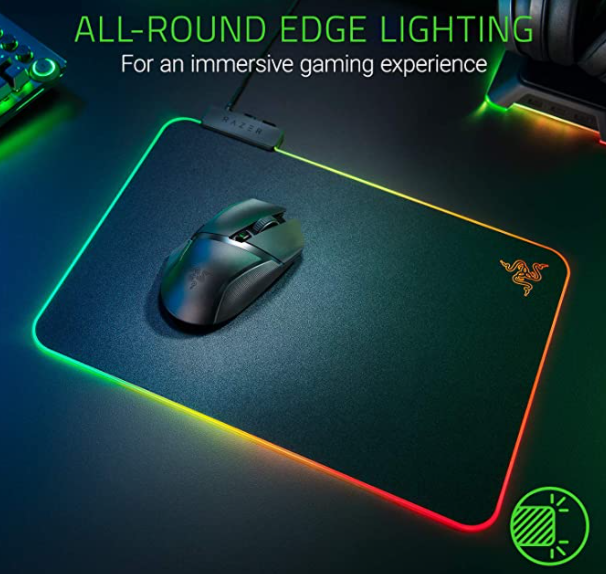
It looks good. It rolls smooth. It’s everything you would ever want in a mouse pad. Did I mention it looks good? You will make games faster because your mouse will move faster with this Razr Firefly v2 Gaming Mouse Pad. You can also set a drink on it and it won’t get gross. You just wipe it clean. Magical. And it looks good. Get it at Amazon.
Kinesis Freestyle Ergonomic Keyboard
$199
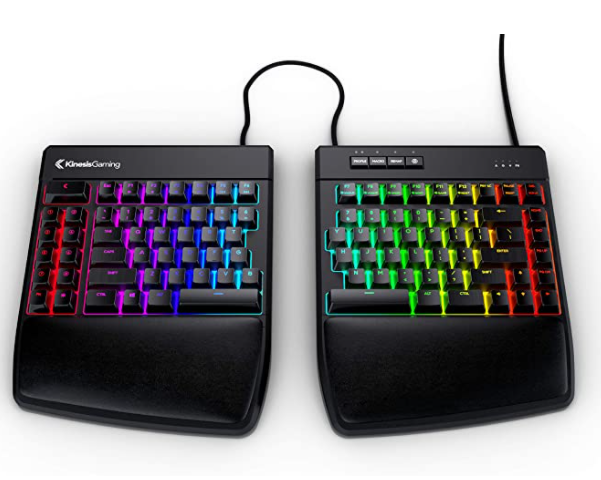
Coders live all day on their keyboards, so typing should be a joy! The split design of the Kinesis Freestyle makes it very flexible, but unlike some other split keyboards, the layout still feels familiar. With the RGB lighting, you can type on a rainbow! Get it at Amazon.
The Making of Prince of Persia: Journals 1985-1993–Illustrated Edition
$20
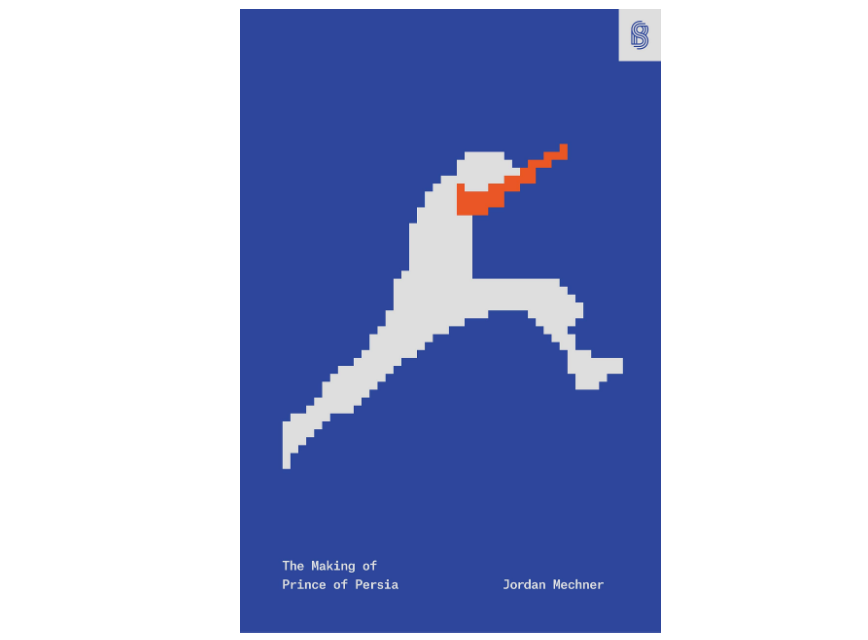
Jordan Mechner’s journals about making Prince of Persia are an inspirational peek into the thoughts and process of a groundbreaking Game Maker. This book contains 300 pages of insight into the game making process. Get it at Amazon.
Anycubic Photon 3D Printer
$169
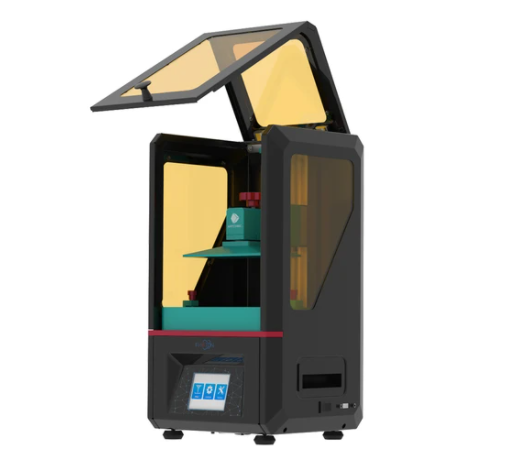
The games we make are digital art, but sometimes we also need to express that art in physical form. 3D printers are an awesome way to bring ideas to life in a way that you can handle, put on a shelf, and accidentally step on barefoot in the middle of the night. Get it at the AnyCube Website.
A Drawing Tablet
$329.95
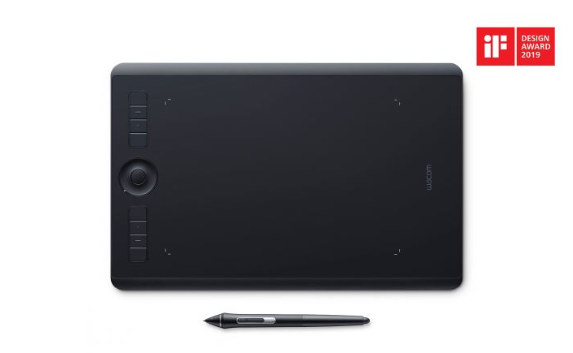
Chances are, you’ll need to draw some original art for your game. Maybe not… but if you do, get one of these Wacom Intuos Pro Medium tablets. Pair it up with some free software like https://sketchbook.com/ to do frame-by-frame animations! Get it at Wacom’s Website.
Bose Noise Cancelling Headphones
$339.95

Whether you are working from home with pets or family in the house, or at the office with an open floor plan – the ability to focus and drown out noise is priceless. It doesn’t get much better than the Bose Noise Cancelling Headphones 700 with all the latest technological bells and whistles. You can find them at Bose.com.
Aseprite Pixel Art Tool
$19.99
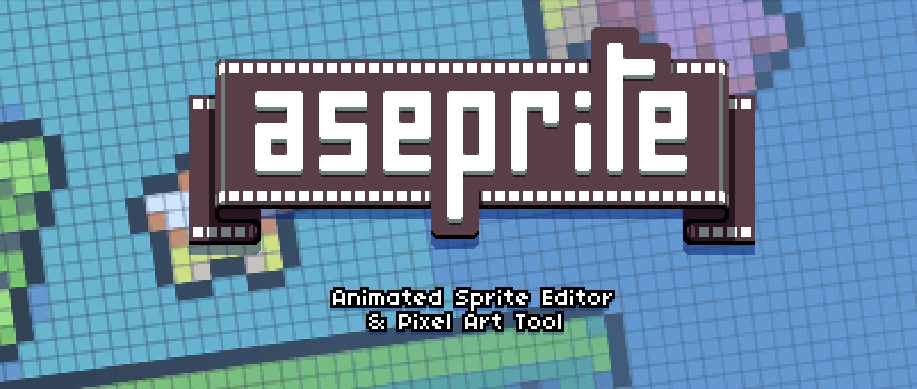
The pixel art style is very common in game development as it blends nostaligic visuals with high performance across every platform and device. Get the game maker in your life a license to some powerful art software. Get it at the Aseprite website!
A Good Fidget Toy!
$9.95
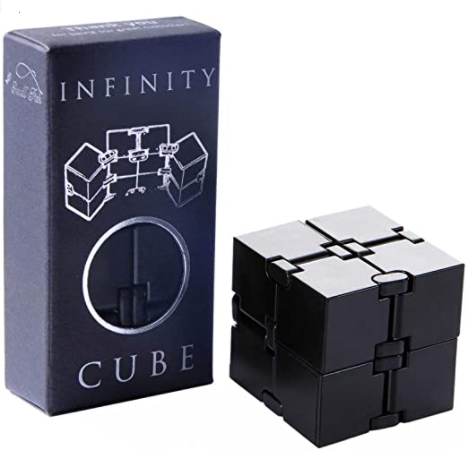
While making games, it’s common to find yourself staring off into space, grappling with challenging problems. Fidget toys are great at keeping your hands busy while your mind is fully engaged. Something like the Infinity Cube: Fidgeting Toy could add some stress reduction to your brain-bending sessions. Get it at Amazon.
So there you have it… some gifts for the game maker in your life! Books, toys, software, hardware, and a bit of everything in between. If you have any other suggestions, throw them in the comments!
Happy Holidays from Beamable!

Beamable sponsoring Game Jam 2020 AD
Beamable is excited to sponsor Game Jam 2020 AD!
Summary
All participants in the game jam developing in Unity will have the option to use Beamable to accelerate social, commerce, and content management tools and receive free Beamable swag!
The event is organized by Amalthea, the annual technical summit of IIT Gandhinagar, in collaboration with DigiS, the game development club of IIT Gandhinagar. The event takes place on itch.io and will be open for submissions of Mobile, PC, and WebGL games.
Schedule
- The event starts Dec 5, 2020, and runs through Dec 25, 2020.
- The submission period is Dec 5, 12:00 AM IST – Dec 19, 11:59 PM IST.
- The voting period is Dec 20, 12:00 AM IST – Dec 25, 11:59 PM IST.
- The judging period is Dec 26, 12:00 AM IST – Dec 30, 11:59 PM IST.
Beamable will provide a workshop to all game jam participants during the first week!
Links
To learn more about the game jam, visit the website at:
https://itch.io/jam/gamejam-2020-ad
Participants in the game jam can sign up for Beamable free at:
https://beamable.com/gamejamad
In fact, anyone can sign up to develop with Beamable for free at:

New Beamable Release 0.0.127
A new Beamable Package release went live this week with a few bug fixes and enhancements to Beamable’s Inventory system:
- New Inventory Update builder: Allows for atomically updating the entire inventory with various operations including Item Creation, Deletion, and Updating of properties.
- New Inventory Update Item API: Allows for the updating of item properties after creation. – New Polymorphic item type support: Subscribing to items will yield notifications for all subtypes (e.g. items.weapons.sword)– the same goes for currency.
- Bug fixes to InventoryView consistency: Inventory view could end up with a subset of inventory depending on the scopes that were requested.
- Bug fixes to notifying upon item deletion: Deleting items will now properly update the inventory view and raise the correct notifications.
Be sure to update your Beamable Package via the Package Manager!
Get started with Beamable today and develop your game for free!

Beamable Sample Unity Project: Leaderboards
We have a new Unity sample project that uses a “clicker” game to illustrate various Beamable features like Leaderboards and Player Stats!
In the ABC (A Beamable Clicker) sample project, there is a button that you click to grow a tree. Click the button as fast as you can within the time limit, and your result is submitted to the Leaderboard service on the Beamable platform.
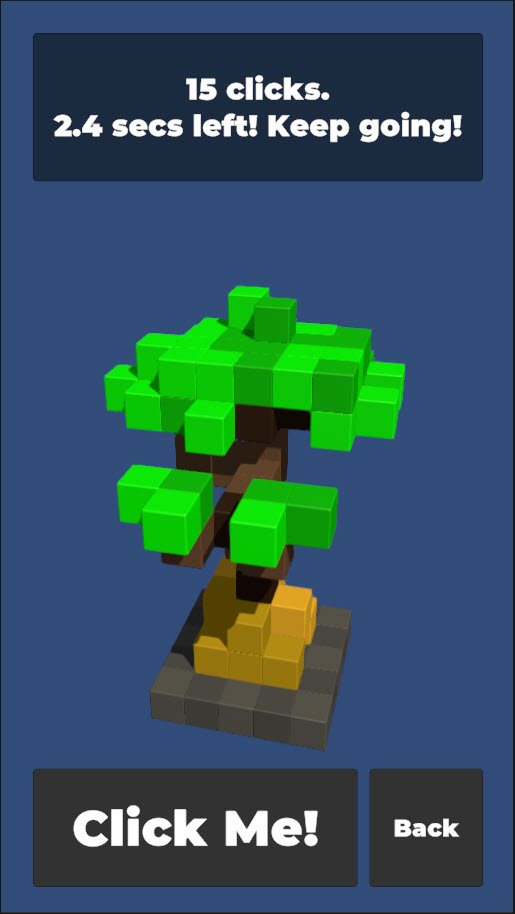
To get started with this sample project, you have to do two things:
- Sign up for a free Beamable development account at https://beamable.com/free
- Grab a copy of the ABC (A Beamable Clicker) project and follow the instructions here.
When you open the sample project, there will be instructions on what to do next!
We are excited to hear what you think of this project. Please let us know!

Beamable Announces Multi-Game Deal With East Side Games
FOR IMMEDIATE RELEASE
BEAMABLE ANNOUNCES MULTI-GAME DEAL WITH EAST SIDE GAMES
On the heels of success with Archer: Danger Phone, ESG has committed to building the next wave of games on the Beamable All-in-one Live Games platform
November 20, 2020 (Boston, MA) — Game studios face an increasingly demanding market in which players expect more frequent updates and real-time interaction with their friends. Beamable was launched earlier this year to help game-makers cost-effectively rise to this challenge while delivering superior revenue to their businesses. Based on the results they’ve experienced, East Side Games is the first publisher to enter into a long-term, multi-game partnership with Beamable.
“Beamable enables live operations for our games with far more capital efficiency than building and maintaining our own Live Games platform,” said Omar Abdelwahed. East Side Games will create the next several games on the Beamable platform, where they expect to use features including content management, live events, and a top-down serverless architecture that’s deeply integrated with Unity 3D.
According to research firm GlobalData, the global video game industry will reach $300 billion by 2025, and most games are transforming into a service business model—or what Beamable calls “Live Games.” Live Games are continuously updated, continuously connected, and continuously monetized.
Although the backend-as-a-service (BaaS) modules to support Live Games are important, Beamable is the first solution that directly addresses the problem of a fractured workflow that plagues most game operations. “We’ve invented a platform that eliminates extraneous programming languages, development environments, technical hand-offs, and process bottlenecks,” said Jon Radoff, CEO of Beamable. “The benefit is that game studios can focus on what they love most: creativity.”
Beamable is available immediately, and game studios can try the platform for free by visiting beamable.com.
About Beamable
Beamable fights for the game makers of the world by helping them turn their game ideas into thriving businesses with a low-code Live Game platform. Beamable enables anyone who builds, updates, and maintains a live game to save time and earn more money. Beamable is based in the Boston area, and led by a team of game-industry and enterprise-technology veterans, and backed by investors including GrandBanks Capital. For more information visit, beamable.com.
About East Side Games
East Side Games is a proudly independent and profitable game studio with a collaborative, creative, and fun culture, located in Vancouver, Canada. The studio has been operating since 2011 and is best known for Trailer Park Boys: Greasy Money, Always Sunny: Gang Goes Mobile, The Goldbergs: Back to the 80s and Archer: Danger Phone. Learn more at http://www.eastsidegames.com/press/.
Media Contact
Jon Radoff
(978) 503-2861

Easy Alternative Sources of Income for Indie Developers
Making a living as an indie dev seems like an elusive dream. Many try to hold down a job at the same time, while others burn a hole in their savings to create a game and follow their passion.
To help prevent the creative fire from fizzling out, we have handpicked some easy yet powerful ways of making money as an indie game developer.
Using the Unity Asset Store
The days of coding absolutely every piece of tech in your games are gone. There are many available tools that are meant to help developers move fast, make progress, and be successful. If you are making a game right now, chances are you’ve selected a game engine to work with.
Many game engines have their own asset store where developers can buy and sell a plethora of tools and assets to move faster, or create those things to help other game devs. There are two ways to make money in the asset stores and provide some extra cash flow:
Sell Game Tools
A game engine like Unity comes with a lot of built-in features that are crucial for game development. However, it doesn’t mean everything is ready out of the box. If you’ve created some games, chances are you’ve developed some of your own unique methods and tools to improve your efficiency.
Why not take some of these custom tools and turn them into Unity plugins? That way your efficiency can become the efficiency of others, and create a steady flow of income while you work on your games.
Sell Game Assets
Maybe your skills aren’t so much in the areas of software engineering. Perhaps your real strength is in the creation of character models, level design, animations, sprites, etc. If you are an experienced game designer or have one on your team, providing game assets to the community might be the right way to earn some extra cash.
One fascinating thing about assets is, there is an almost unlimited need for new art, meaning you can always be creating.
Freelancing
Freelancing is just putting your game skills out for hire for a short time. You get paid per hour or project, depending on the way your contract is formulated. Freelancing is flexible, so it could be the right choice for you depending on your availability and skills. There are two obvious benefits to using freelancing to drive some additional income while hard at work on your game.
First, you get to practice and sharpen your skill as a game developer and get paid.
Second, it helps you build a bigger network which you can leverage to later promote your game post-development.
The only downside with freelancing is that it could be time-consuming and take time away from your primary game development goals. However, with some solid time and resource management, you should be able to enjoy the freelancing side quests without sacrificing progress on the main story! 🙂
Teaching
It turns out that there is a huge demand for instruction on game design and development. Sharing your knowledge is a great way to generate some extra income. Like freelancing, teaching will also help you brush up on your knowledge, and broaden your network.
There are two ways to teach game development:
One is the conventional form where you set up or join a class that uses live sessions (either in person or online). You will need to define or adopt a syllabus (schedule of topics to teach) and rely on lots of in-class discussion between you and your students and a series of assignments or projects. You might get paid per class, or you could get paid for a set of multi-week sessions.
You could also look at developing an online course or even an eBook. There are many platforms that can facilitate either of these efforts. The best part is, once you create the class or eBook, anyone can pay to take it or download it and you can sit back and collect the fees.
Conclusion
We work with many developers who’ve made some substantial side income while they were hustling on their game. We hope some of these ideas will inspire you to explore some opportunities that leverage your knowledge as a game developer to acquire the resources you need to be successful.
Another way to be successful is to reach out to us at Beamable. We’ve built a game platform that makes it easier, faster, and cheaper to bring your game to life with a vibrant set of LiveOps tools in Unity to boost your average revenue per daily active user (ARPDAU) at launch. We’re here to help you at all the stages of your game dev journey! Contact us!

New Beamable Release Version 0.0.124
A new version of the Beamable Unity SDK went live this week. It is a bug fix release. Please update your Unity SDK package!
What’s New?
- Inventory Client APIs now include Add and Remove operations for client-authoritative inventory content (i.e. currency, items that have the Write_self property set to true).
- Portal now supports being logged in to multiple customer accounts at the same time.
Bug Fixes
- Greeting Message text in Toolbox now wraps (visible on the first install in Unity 2018)
- Cloud Saving functionality has been restored on the device (iOS and Android)
- Leaderboard prefab is now properly seeded with sample leaderboard content
- Tournament prefab now emits a human-readable message if the content is not specified in the game object.
- Content Manager was erroneously reporting that content objects had changed under certain circumstances.
- Login Flow prefab was erroring out on clicking the “Cancel” button when switching between player accounts.
- Login Flow prefab “Remove” button for secondary player accounts was rendering as transparent rather than as solid on certain platforms.
- Tournaments sample content created via the Content Manager now has a properly formatted ISO date string.
- Content Manager no longer removes the first content object from the UI when a content object of the same type is deleted.
- Toolbox no longer shows the “Logout” button when the developer is not logged in.
- Cloud Saving DirectoryNotFoundException race condition when switching player accounts is fixed.
- Tournaments content sample data now includes rankRewards.
- Tournaments Prefab close button is now fixed.
What to get started with Beamable? Download the Unity SDK now for free!

Beating the Odds: How to Make an Indie Game Successful
There was a time when AAA titles funded by massive companies, backed by what seemed like infinite budgets and marketing dominated the gaming scene. Despite the massive gaming franchises of Nintendo, Sony, and Xbox, and the corporate giants like EA, Activision, and Rockstar (among others), indie studios have always managed to break through driven by creativity, innovation, and sheer dedication.
The most significant indie success story has to be Minecraft. It’s a simple game that involves mining, crafting and worldbuilding, and enables the player to play it the way they want. . Minecraft is now part of pop culture and has undergone massive expansions since its inception, adding new mechanics, biomes, creatures, and massive worlds of treasures. You know a game is successful when game developers and players alike build Hogwarts, the Nether, and a virtual library that’s home to real-world uncensored texts.
Making games is tough and most titles will never find an audience. And even if you do find an audience, most games will never make back the money that was invested in them when you account for time and opportunity cost. While this can prove discouraging to some, the challenge to break through into success is a dopamine boost for others.
To help, here are a few pointers to follow that we think might help you maximize your game’s chance at success.
1. Start small
The goals for your gaming project must be clearly defined and achievable. The pre-production phase of game development exists for a reason. You have to sketch out what you want the game to be, all the components it will need to be successful, who the game is for, how big the player market is, and all the technical needs of the project. If any of these areas is undefined, it can lead you down a rabbit hole of indecision, analysis paralysis, and project abandonment.
As an indie developer, it’s important to keep it simple so that the project doesn’t add too much strain on your limited resources. Our suggestion is, when you begin game development, create a roadmap to launch the minimum viable product (MVP) to players as soon as possible, get feedback, and iterate. As you deliver simple yet fulfilling experiences, you will build momentum for yourself or your team, and your players.
2. Know your limits and plan accordingly
As an indie studio that might be made up of a single person or a small group, it’s imperative to know the full limits of your capabilities. Go on a scavenger hunt for resources and information on indie-dev communities, game maker forums, and scouting out the relevant social media hashtags and Reddit channels.
When you go through the pre-production phase of your game (see step 1!), define a project that can play to your strengths. Understand the requirements – the tools, what you need to work on, who should be working on what, adopt an agile management approach to hit those smaller checkpoints, and get to the goal.
It’s also equally important to know when to scrap an idea and try something new. Listen to your instincts. Know your strengths as a team and an individual, and plan a game project that will maximize those.
3. Use the right tools
To make a financially successful indie game, it’s important to be aware of what worked best for the indie game devs that made successful games. They were focused on minimizing costs and maximizing game quality, sales, and marketing.
The main way to minimize costs is to pick the right tools! Use reliable game engines and platforms to build your game, as these have a crucial impact on the final product as well as your operational costs.
Unity is currently the best platform for building your game. Successful titles like Hearthstone are powered by Unity and a large part of the game development community vouch for its reliability. It has a versatile array of tools for all kinds of applications. It also has a vast universe of support tools to allow you to add your favorite features to your game.
Beamable-Unity: A perfect match for game devs
At Beamable, we’ve developed a platform that’s fully compatible with Unity. You’ll be able to add a plethora of features to your game, including in-game shops, social connectivity options, content management, and LiveOps.
Beamable features simple drag-and-drop prefabs with fully managed backends, easily skinnable UIs, and a streamlined building platform. On top of that, there’s a central web portal from where you can manage events, player stats, in-game inventory, analytics, and a lot more with ease.
If you follow some of our advice above and use Unity with Beamable to create a successful game, perhaps we will be talking about your success in future blog posts! Feel free to contact us if there is a project you think Beamable can help with.

Beamable Added to the BaaS Game Dev Community
If you are creating live games, chances are you’ve been thinking about all the different products that are out there and how they might work to empower your game with online social, commerce, and liveops content features. It turns out, there is an entire community of game creators making games faster by leveraging the power of a back end game platform. This community exists on Discord and is called the Online Gamedev [BaaS] Community.
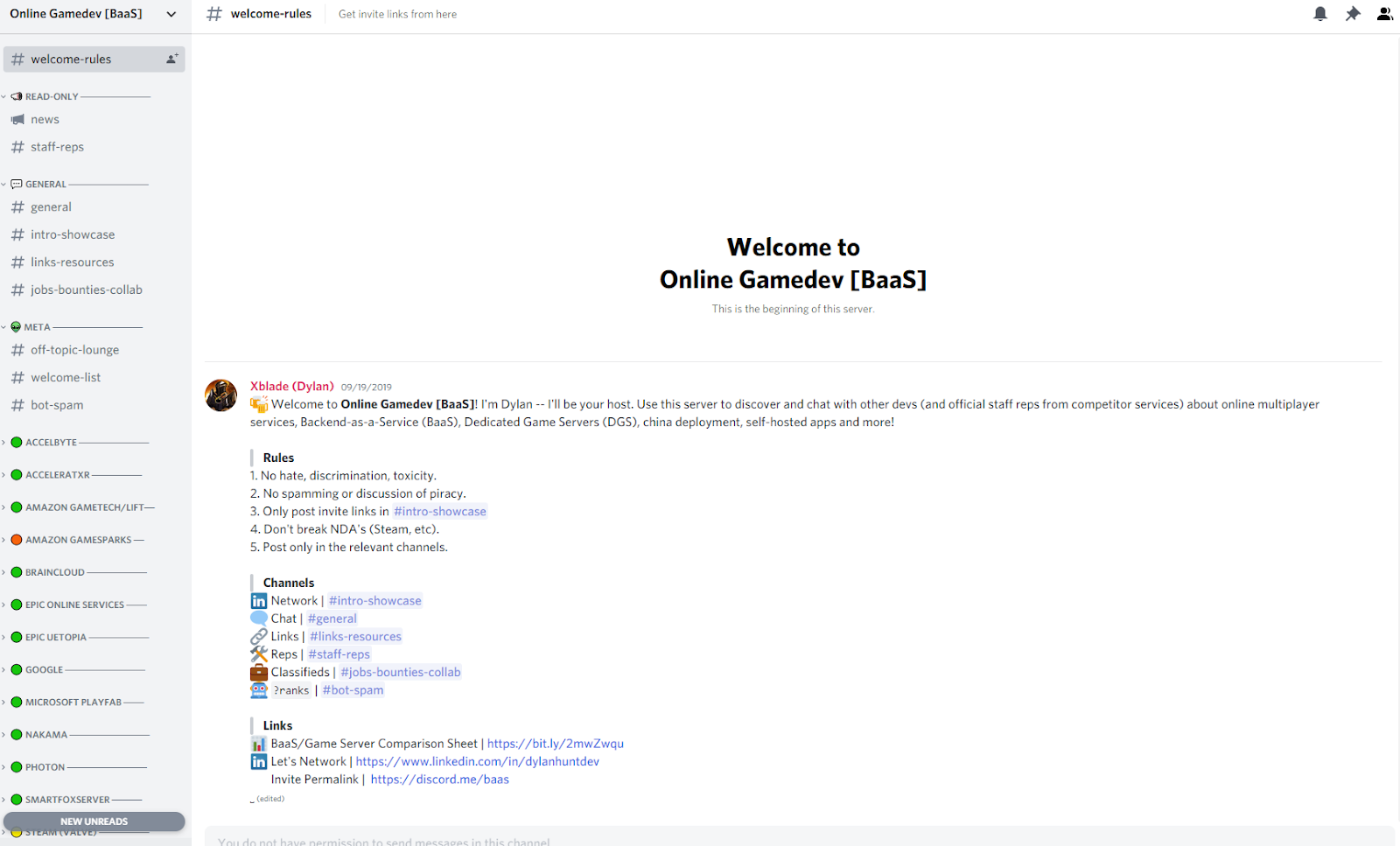
The community was started by Dylan Hunt, and brings together information and support from a wide range of game tech providers. Recently Beamable was excited to be added to the comparison sheet and the online community!
The comparison sheet is a deep resource that compares the many options that game makers have for a game backend platform, and lines them up on over 70 different dimensions.
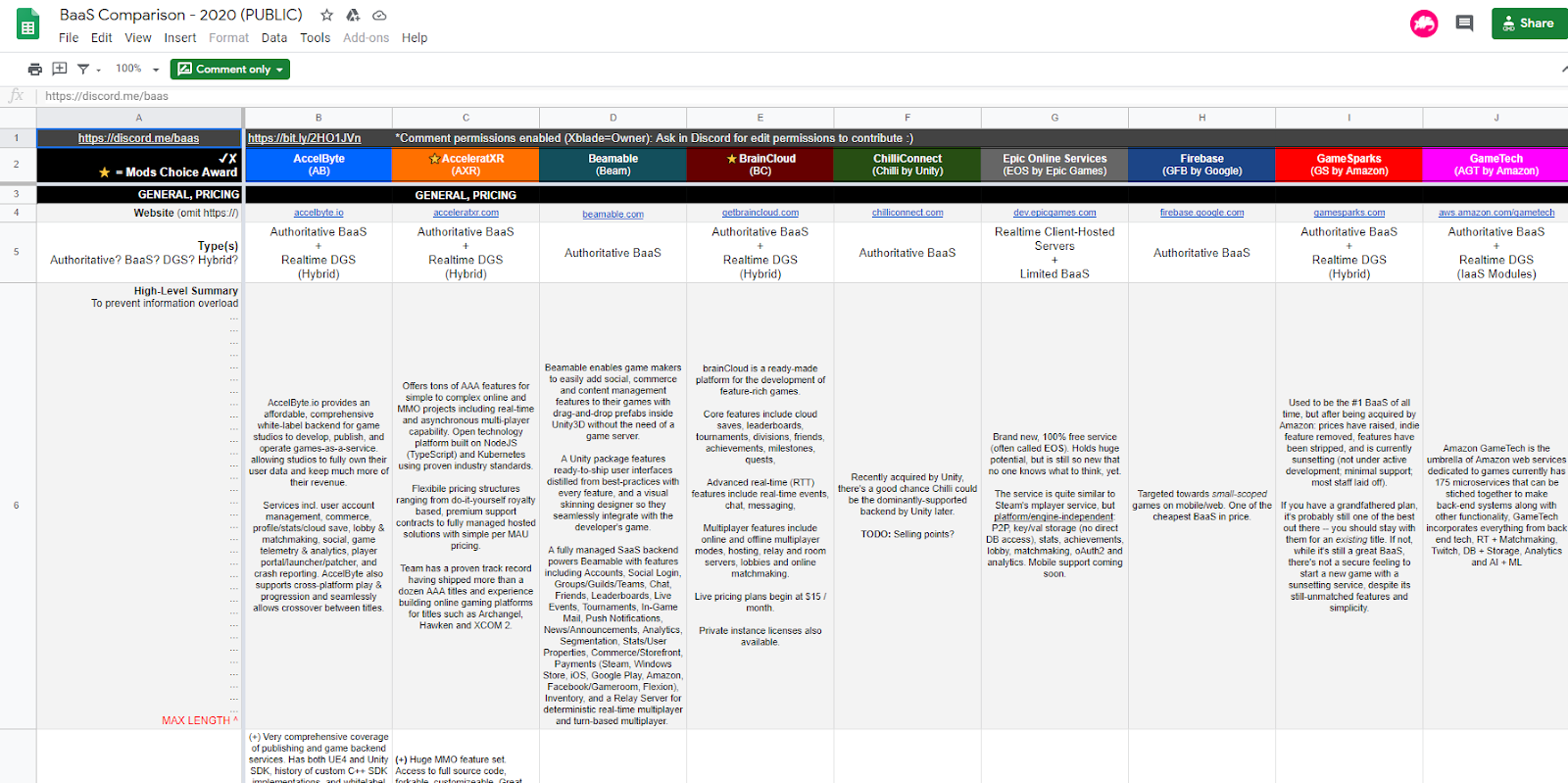
Some of the questions you can ask are:
- How are all these BaaS platforms pricing their services?
- Do they have free trial versions for development?
- Are there API limits involved for us?
- What language and infrastructure dependencies do they have?
- What’s the level of quality on their documentation and examples?
- What kinds of game analytics are available?
- Is there GDPR support?
- …and much much more!
You can join the BaaS community by following this invite link to their Discord channel:
You can view the extremely helpful technology comparison Google Sheet here:
Beamable was recently added to this sheet which also includes companies like:
- Accelbyte
- AcceleratXR
- Amazon Gamesparks
- Braincloud
- Microsoft Playfab
- Nakama
- Photon
- SmartFoxServer
- XtraLife
- Chilli Connect
- Signalr
- Spatial OS
…and a few others.
While there are many game tech options for your live game, Beamable remains committed to an EngineCentric™ approach that is editor-workflow optimized, meaning game creators will no longer have to consider a game server written in another language running on special infrastructure as part of their game building process. With Beamable, we want you to do everything in the editor: Create content, leverage Unity pre-fabs and addressables, and write C# server authoritative code as a microservice that’s ready to scale and fully managed.
Sign up to try Beamable for free or contact us for a demo! We look forward to working with you!

Inspiring Examples of Daily Login Rewards for your Mobile Game
The multiverse of mobile gaming now offers something for everyone, from arcade games and simple puzzles to high-end first-person shooters and multiplayer RPGs. Player retention is an integral part of the success of any game, and, as more and more games appear on the market, it is vital to ensure that your players are inspired to come back and play every day.
If you are working on a mobile game, one thing you should consider are daily login rewards. Each time a player starts a session that day, they are rewarded with something. It could be in-game currency, XP Points, cosmetics, and others. This rewards the player for doing what they want to do anyway, play your game! It also creates a sense of progression and a way for players to earn with their loyalty vs any specific game achievement.
To inspire the design of a daily login system for your game, here are a few games that use the reward system effectively to inspire long term player retention.
Hearthstone
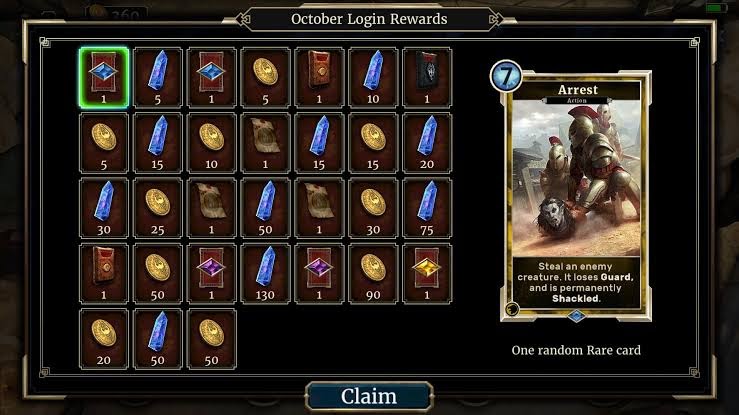
Based on the popular game World Of Warcraft, Hearthstone is a digital collectible card game published by Blizzard Entertainment. The game is free to play with over 10 million downloads on the Play Store and is rated four stars with over a million reviews. Since it’s release, Hearthstone has done incredibly well in retaining a loyal fanbase with its robust multiplayer experience.
Hearthstone offers Daily Quests to players awarding them Gold for the successful completion of specific missions. This is a huge incentive, especially for newer players looking to build their decks. Gold is an essential in-game resource that is spent to replenish your resources, as well as level up characters. By featuring daily rewards that feature Gold, it helps recent players achieve their deck building goals faster, rewarding them for consistent and early retention that helps turn Hearthstone from a game into a habit and a hobby.
Hearthstone is worth a play through to see all these retention systems in action.
Angry Birds
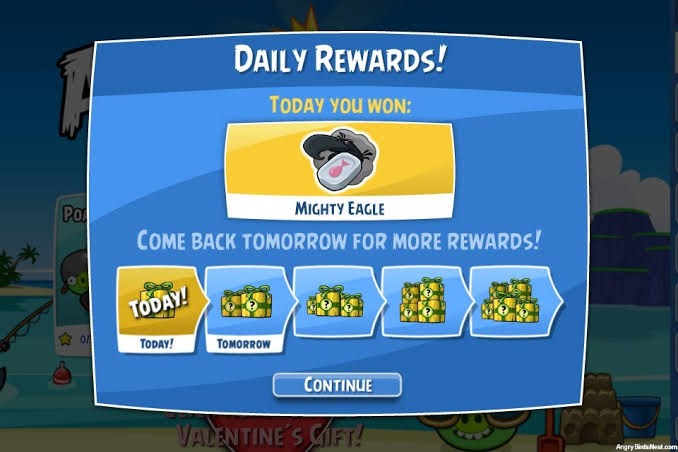
Angry Birds is not only a popular game, but it has build an enormous worldwide pop culture following across gaming, movies, TV, and toys. The quirky art design and the freshly accessible physics based game mechanics propelled this game of Birds and Pigs into superstardom.
Core to the game are a series of integrated rewards that increase with daily login streaks to boost gameplay and add cosmetics. In addition to the dailies, every level cleared opens up new bonuses, and these deep progression systems encourage repeat sessions and high player retention. If you are considering a progression meta with daily rewards, study Rovio and their Angry Birds titles for inspiration and instruction.
If you haven’t played Angry Birds, give the latest game a try and take some notes!
Temple Run
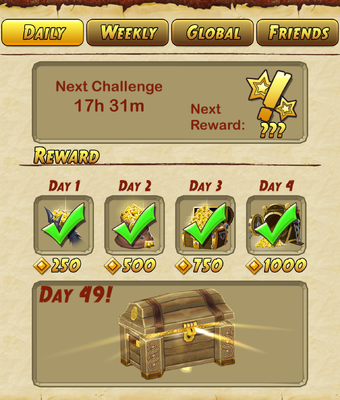
Temple Run is now considered a classic of mobile gaming, practically inventing the genre of endless free running. With straightforward controls, accessible mechanics, and short play sessions, it remains a popular franchise amongst players.
This game also uses a streak-based daily reward system that stacks your rewards with higher and higher levels of return sessions. Players can complete challenges daily to unlock even more rewards.
If you haven’t played Temple Run recently, perhaps it’s time to revisit it for “research purposes!”
Super Mario Run
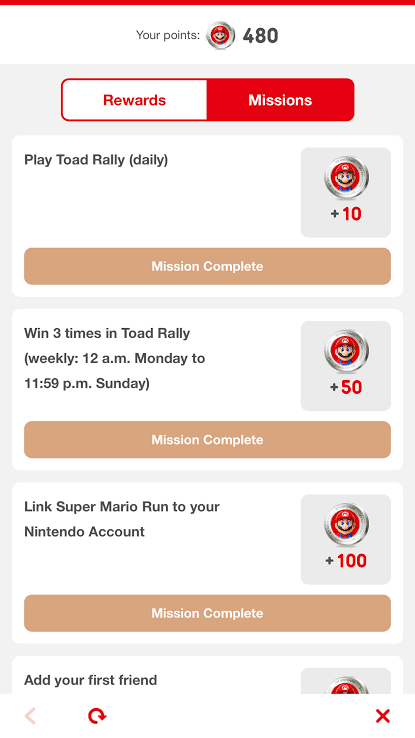
Super Mario Run is an endless runner game based on the Nintendo Mario franchise. Since its launch, it has acquired a bit of a Nintendo cult following with over 100 million downloads on Google Play Store. In the game, you play as the iconic characters of the Mario franchise sprinting and dodging your way through the levels. It rewards players for progression, as well as through many limited time events and missions, where players can attain items for building their team. Check it out!
Star Trek Timelines
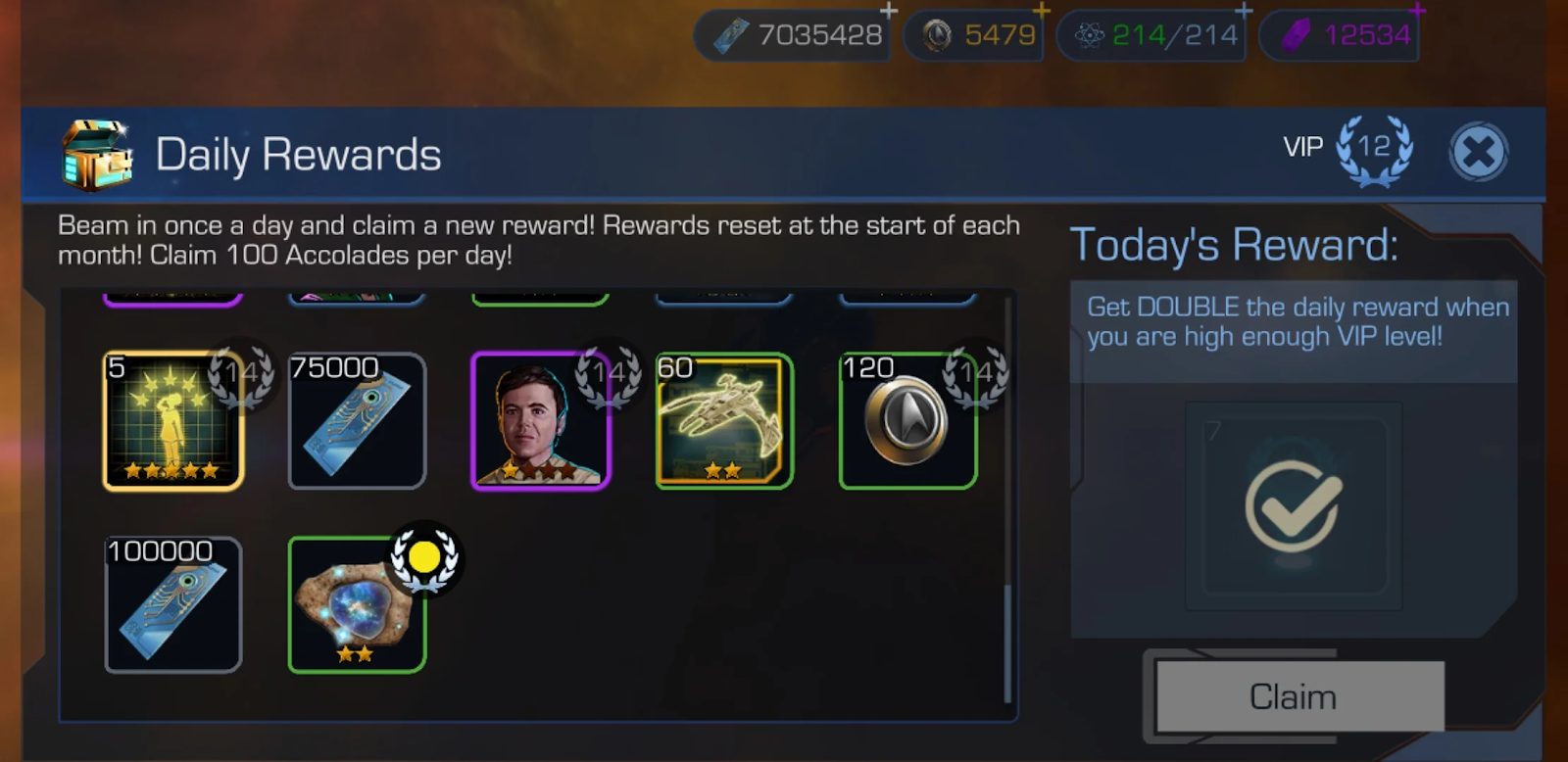
Star Trek Timelines (STT) was created by many of the people who work at Beamable, so we know that game inside and out! It also uses many features of Beamable that make daily reward systems possible!
In STT, you play a starship captain in the Star Trek universe trying to discover why the timelines are fractured. It is a collectible character role playing game (CCRPG) that features thousands of different characters from the show.
There are multiple daily reward systems built in. There is your daily reward which grants better and better prizes based on your login streak. There are daily missions that grant merits which can be used to acquire more items for your character levels. There is also a battle pass system that rewards you additional daily rewards throughout the entire month. There is a subscription you can purchase to also unlock a premium tier of battle pass rewards (called Campaign rewards). All of these systems drive huge retention in the STT audience and give them the resources they need to build their character collection into the hundreds.
Give STT a play through to see how these daily reward systems work together.
Building Daily Rewards in Unity
If you are building your game in Unity and looking for a way to implement a daily reward system, you really should check out what we are doing at Beamable.
Beamable includes a Reward Calendar system which is configurable via our content workflow. Players can claim rewards from a variety of reward calendars, which can be free, unlocked in game, or purchased via the store. Developers can customize which rewards players can claim on which days, and how many claimable days are available. This feature incentivizes both engagement and monetization, and powers game mechanics like Daily Rewards, Battle Pass and Monthly Cards. If you are interested, grab a free copy of Beamable and check it out!

Spooktober 2020: Three Scary Indie Games You Should Play on Halloween
2020 has been a rough year! A global pandemic, crazy wild fires, hurricanes, and political polarization around the world. But through it all, game creators are still creating, putting their art into the world for players to enjoy. Here we are in October, the season of spooky stories in an already spooky year! We took a moment to pick out a few spooky scary indie games that we think you’ll enjoy!
Amnesia: Rebirth
Amnesia: Rebirth is a survival horror can and direct sequel to the fan-favorite game Amnesia: The Dark Descent. This game has everything needed to scare the wits out of you.
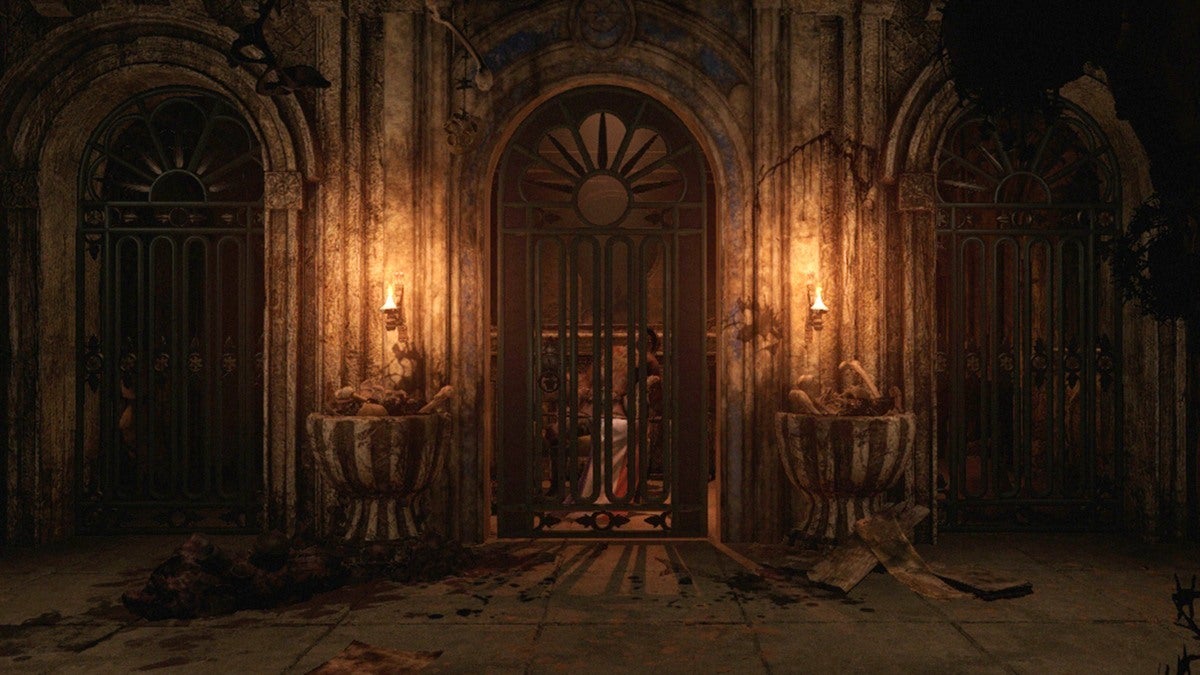
According to Thomas Grip, the creative director at Frictional Games, “Rebirth has a new protagonist, a new storyline, and a completely new setting. There are no gimmicks and no invention of something brand new. This is Amnesia.” With this new release, the focus is on expanding the player audience by adding more story depth and not relying so heavily on jump scares.
You can find this game on the following platforms:
World of Horror
On the surface, World of Horror might seem like an odd pick due to its text-based narrative approach to a horror based role playing game, but there is a lot to like in this title. You will immediately pick up on the H.P Lovecraft influences woven in the work of horror manga artist Junji Ito during your game play.
You begin your rogue lite adventure in a weird town beset by twisted people and supernatural horrors.
The story unfolds like you are turning pages of a graphic novel, wherein your objective could lead you towards a school filled with murderous disfigured teachers (like having scissors for hands), or you might investigate an apartment of someone who is way too interested in eels (super creepy).
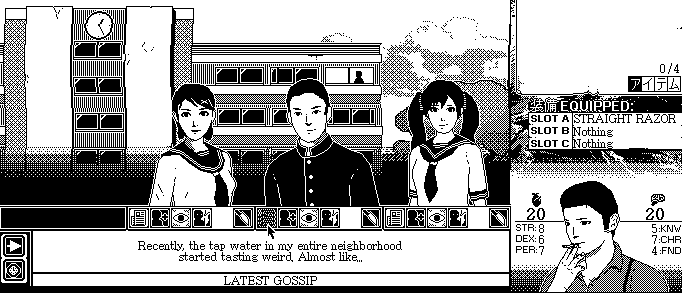
On your journey you will encounter numerous scenarios, meet allies, arm yourself, and fight strange creatures in a unique text-based system of combat. In the end, you will search for the cause terror in this town and put an end to it.
You can find this game on:
Carrion
Did you ever wonder what It would feel like to be a monster in a horror game? With Carrion, you get to live out your wildest dreams! (or maybe nightmares?) Carrion from Phobia Game Studio and is a refreshing take on a platformer title with inspiration from the 1984 John Carpenter movie The Thing.
You are given control of an amorphous monster with a one-track mind: devour everyone in sight, become a massive entity of horror, and take over the world. You begin the game by crawling around with fleshy tendrils pulling every human you can find into your hungry maw filled with razor-sharp teeth.
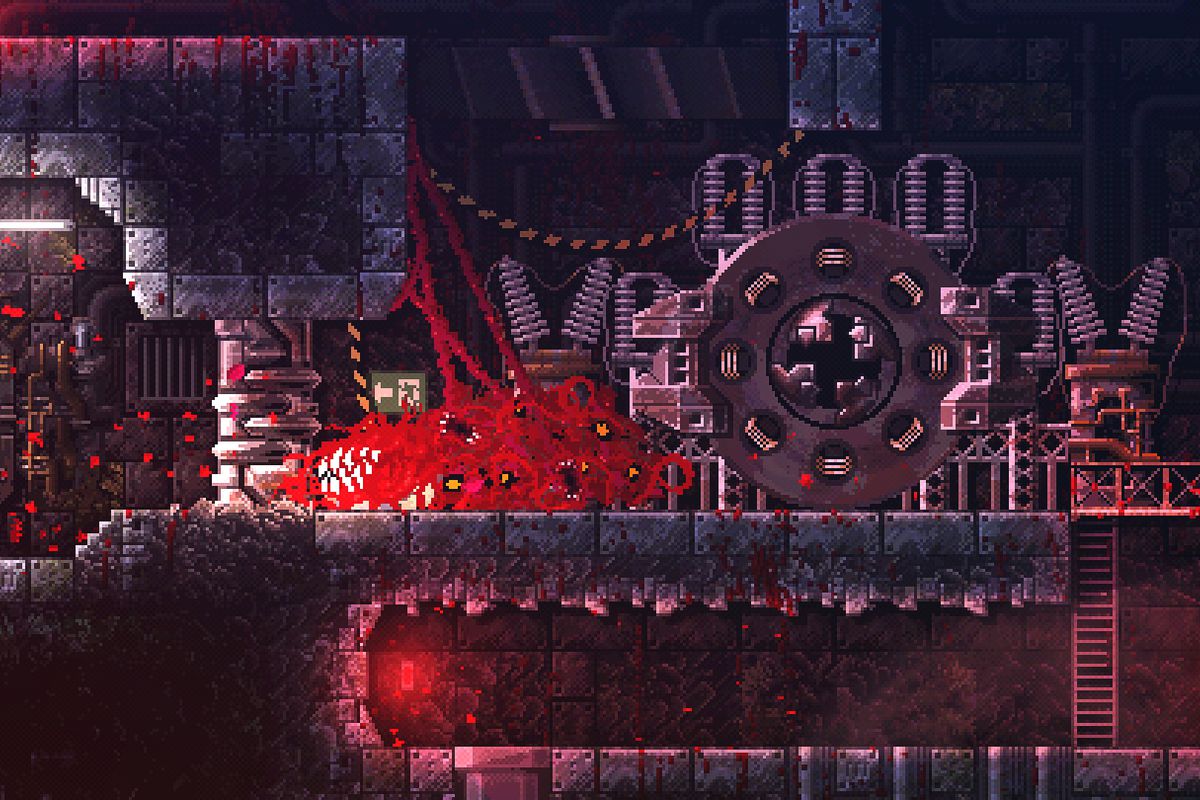
The character controls seem like they might be complicated (piloting a gelatinous mass in all directions) but the game is surprisingly responsive. Crawling through pipes to reach various game locations feels satisfying and the combat mechanics against the humans as they desperately fight back feels fun and intuitive.
Overall this game checks every box and would surely provide for some quality spooky time each Halloween.
You can find this game on:
Honorable mentions
There are so many horrifying games out there, so please check these other games out and support indie developers in their quest for the scary!
- The Dark Pictures Anthology: Little Hope (Steam | Official Website)
- Someday You’ll Return (Steam | Official Website)
- Follia (Steam | Official Website)
- DreadOut 2 (Steam | Official Website)
- This is the Zodiac Speaking (Steam | Official Website)
Check back next month!
Continuing from last month, this was the second article in our monthly series where we pick our favorite Indie games. Check back next month for the best Indie games in November 2020!
Meanwhile, if you need any help with game development, keep Beamable in mind. We’d love to learn about your spooky game project and help bring it to life!

How to Monetize Your Indie Game – 5 must-watch videos
Unfortunately there is no magic formula for a successful game. It is precisely the uncertainty and the promise of success that makes game creation such a draw for so many creative world builders. Part of the success is effort, but a large part comes down to resources. Can you get the funding to bring your dream to life? Sometimes this means self-funding the game with your savings or credit cards… other times this might mean going out there and raising money for your vision.
To help you out, we’ve handpicked five sources that hopefully can point you in the right direction.
1. Ask Game Dev
Ask Game Dev is an insightful YouTube channel managed together by three indie game devs. Their videos cover all aspects of game development, but one video in particular contains a huge amount of information about game funding.
Released in 2019, their video titled “7 Ways to Fund Your Indie Game” is one of the best videos that we’ve come across. It is filled with information made memorable and accessible by their teaching style and animation explanations. They cover everything from crowdfunding sources like Kickstarter, to dev grants from large companies.
2. Game dev underground
Game dev underground is a solo-run channel with excellent content based on years of experience building dozens of games in the last couple of years. The channel regularly features the games of community members as well, raising their visibility and helping make indie games a success.
There is a particularly good funding video to check out here: How To Get Your Indie Game Funded (Without Using Kickstarter). It’s great content, explained in a refreshing way with specific focus on the various terms and conditions of funding in different ways as well as sources for driving more attention for your game projects.
3. Thomas Brush
Thomas Brush: Thomas is a creative and passionate indie game developer turned teacher. After successfully crowdfunding two games to over $200k, he produced a special video to explain the process. It’s called How To Raise $100,000 On Kickstarter and dives into the strategy for how he was successful.
The explanation is practical and straightforward and includes a step by step guide to help any game dev get started.
4. Dual core studios
Dual core studios: Dual core studio has some excellent tutorials for game development on their channel, but they also have a great funding video called: How to get funds for an indie game
The content goes deep. It starts by explaining everything you need for successful game fundraising (like a working demo, etc.) and then breaks down the funding process from publishers into discrete steps.
The video also touches on the very important topic of intellectual property rights and some of the things you need to think about as your race towards a funding decision.
5. Antler studios
Antler studios is a joint venture of university students who graduated and continued to chase their passion of game development. They are refreshingly open about their mistakes and what they learn from them as they go.
They have a funding specific video called 101: funding your indie game. It starts with a really interesting set of tips about how to structure your funding research. They cover the strategy of applying for academic grants if your game project has some possible academic significance.
They also go into some depth on trade shows for marketing, playtesting, and funding opportunities as well as trade shows being an opportunity to really practice and refine your pitch which is critical to the funding effort.
Don’t let funding hold you back!
We hope the resources we’ve laid out here are helpful. Sometimes the path to success is more expensive than you ever consider. It is always good to go into a game project with some idea about how you will resource it both with people and money.
Remember, if you need help on your game dev journey, know that Beamable is here to simplify game development by making it easier to build, run, and scale your game with low code drag-and-drop features, and a serverless workflow.
Good luck with your game building and fundraising!

How To Get Funding For Your Indie Game: 5 Thought Leaders
Unfortunately there is no magic formula for a successful game. It is precisely the uncertainty and the promise of success that makes game creation such a draw for so many creative world builders. Part of the success is effort, but a large part comes down to resources. Can you get the funding to bring your dream to life? Sometimes this means self-funding the game with your savings or credit cards… other times this might mean going out there and raising money for your vision.
To help you out, we’ve handpicked five sources that hopefully can point you in the right direction.
1. Ask Game Dev
Ask Game Dev is an insightful YouTube channel managed together by three indie game devs. Their videos cover all aspects of game development, but one video in particular contains a huge amount of information about game funding.
Released in 2019, their video titled “7 Ways to Fund Your Indie Game” is one of the best videos that we’ve come across. It is filled with information made memorable and accessible by their teaching style and animation explanations. They cover everything from crowdfunding sources like Kickstarter, to dev grants from large companies.
2. Game dev underground
Game dev underground is a solo-run channel with excellent content based on years of experience building dozens of games in the last couple of years. The channel regularly features the games of community members as well, raising their visibility and helping make indie games a success.
There is a particularly good funding video to check out here: How To Get Your Indie Game Funded (Without Using Kickstarter). It’s great content, explained in a refreshing way with specific focus on the various terms and conditions of funding in different ways as well as sources for driving more attention for your game projects.
3. Thomas Brush
Thomas Brush: Thomas is a creative and passionate indie game developer turned teacher. After successfully crowdfunding two games to over $200k, he produced a special video to explain the process. It’s called How To Raise $100,000 On Kickstarter and dives into the strategy for how he was successful.
The explanation is practical and straightforward and includes a step by step guide to help any game dev get started.
4. Dual core studios
Dual core studios: Dual core studio has some excellent tutorials for game development on their channel, but they also have a great funding video called: How to get funds for an indie game
The content goes deep. It starts by explaining everything you need for successful game fundraising (like a working demo, etc.) and then breaks down the funding process from publishers into discrete steps.
The video also touches on the very important topic of intellectual property rights and some of the things you need to think about as your race towards a funding decision.
5. Antler studios
Antler studios is a joint venture of university students who graduated and continued to chase their passion of game development. They are refreshingly open about their mistakes and what they learn from them as they go.
They have a funding specific video called 101: funding your indie game. It starts with a really interesting set of tips about how to structure your funding research. They cover the strategy of applying for academic grants if your game project has some possible academic significance.
They also go into some depth on trade shows for marketing, playtesting, and funding opportunities as well as trade shows being an opportunity to really practice and refine your pitch which is critical to the funding effort.
Don’t let funding hold you back!
We hope the resources we’ve laid out here are helpful. Sometimes the path to success is more expensive than you ever consider. It is always good to go into a game project with some idea about how you will resource it both with people and money.
Remember, if you need help on your game dev journey, know that Beamable is here to simplify game development by making it easier to build, run, and scale your game with low code drag-and-drop features, and a serverless workflow.
Good luck with your game building and fundraising!

Building a Microservices Architecture on Amazon Web Services
Our Senior Devops Engineer Brandon Bateman gave a talk to the Amazon Game Tech community about Beamable’s Microservice architecture that helps us scale the large games of our customers using Amazon Webservices Automation.
You can watch the presentation here!
Why use microservices for your live game architecture?
- Ability to scale individual services based on load
- Allow game developers to more easily work on specific services without having to merge
- Test specific components without the need for full deployments
- Add/remove features with less overhead
- Upgrade services individually without impacting others
- Smaller and more agile development cycles
Here’s what Beamable looks like!
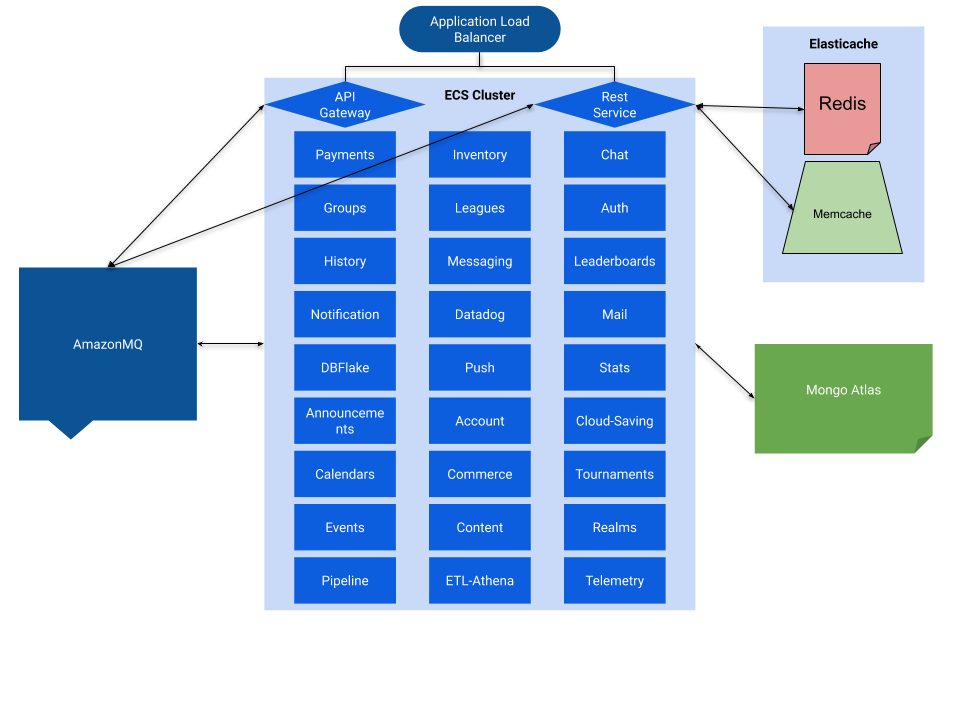
Check out the video to learn more or contact us if you have any questions.
Your Unity game can take advantage of this architecture for it’s live game features (leaderboards, tournaments, multiplayer, commerce, social, etc.) by getting started with Beamable for free!

The 5 Best Gaming Communities for Indie Developers
Game development is a tricky endeavor, especially if you don’t know where to seek information and help. With so many engines, libraries, frameworks, programming languages to choose from, the entire process can feel overwhelming.
The best way to counter that feeling is to reach out to people with experience. You aren’t alone. Chances are, someone has been where you are right now, thinking the same things.
Online communities and forums for game developers exist to solve the problem of feeling alone. They help you to get in touch with fellow developers who can not only give experience-based tips and advice, but also playtest your game and suggest improvements.
Senior programmers, artists, sound designers, enthusiasts, indies- you’ll find everyone in these forums.
These communities are also a good source of daily updates and knowledge around the latest innovations and trends in the industry. As a game dev, the learning never stops. Through communities of like-minded professionals who knows, you may even find your indie game dev team in one of the forums!
To help you out here are five indie game development communities that you should check out!
1. Reddit (r/gamedev)
r/gamedev is one of the most popular places for game devs. It boasts a thriving community of over 311K members. You are bound to find professionals from all areas of game development, be it artists, designers, programmers, etc. Another feature that makes Reddit an ideal choice for the Unity indie game dev community is its sheer popularity. You can showcase the work you’ve made, post questions to find help, connect with like-minded makers, find free arts and assets, and much more.
For an indie game developer looking for a community to join, Reddit is definitely one of the best places to start. If you don’t like r/gamedev subreddit for some reason, there is no need to fret. You can join r/indiegames, r/playmygame, or r/gamedevscreens.
2. Slack (IndieDev)
IndieDev is a very powerful and popular Slack community for game devs. You have to apply to join, so keep that in mind. Fill out the Google form, and you will get a reply within 48 hours.
Once you are in, the community is very well run. Moderators are almost always online to ensure that the group is organized. There are a lot of channels which you can choose to join.
Don’t worry if you are not familiar with Slack’s interface. The auto-redirect feature in the channel will almost always ensure that the user reaches the correct group for the topic they care about.
3. Discord (Game Dev League)
Game Dev League is a very popular Discord community. Discord moderators are online at all times, ensuring the server runs smoothly and that the pages are organized in a clear way.
There are many channels with some dedicated to showcasing, and some answering questions on creation. It’s a community that is truly built by game developers, for game developers.
4. Facebook (IndieGameDevs)
IndieGameDevs is a solid indie game dev community. It’s a generally smaller group, having about 115k members. In the words of this group’s moderators, IndieGameDevs is a place to “ask your doubts, seek guidance, learn, and share your progress.”
You will find a thriving community, and by sharing your success, you can also garner the support you need to make your game a huge success.
5. Reddit (r/IndieGaming)
Wait what??! Reddit again? Sure why not! There are no rules here!
r/IndieGaming is another highly active indie game development community where you’ll find many like-minded creators. With 219k members, this group offers you everything under the umbrella of game development. It’s one of the more active subreddits where you can tons of makers and tons of resources (both for upskilling as well as for playing your games).
Go join a game development community!
With expectations so high for games these days, it’s tough to be a “lone wolf” out there. To get a game over the finish line requires the help and support of a strong community. Inspiration is important. The feedback is important. The celebrations are important. Find a community today. You’ll need it more than you could ever imagine.
Join today and be a regular. Form connections. Post your questions. Provide your answers. And remember, Beamable is here for you as well! If we can do anything to help with your game development, let us know.

Indie Gems: Beamable’s Top Three Indie Games of September 2020
We’ve witnessed lots of ups and downs in 2020, and despite indie developers facing a tough time, they’re still managing to launch one game after another, every month, keeping us entertained and engaged.
Beamable would like to give a huge shoutout to all the indie developers out there showing up every day and getting it done!
To celebrate the continued contributions of indie devs, here are some picks for the top 3 indie games released in September 2020.
We had our game editors scour the internet digging up games that dazzle us with their all-around brilliance. The list is in no particular order except that these are three interesting games we feel you need to know about on Android, iOS, and Steam.
Here are the games we noticed this month. If you think we are wrong or missed something, put it in the comments!
Genshin Impact
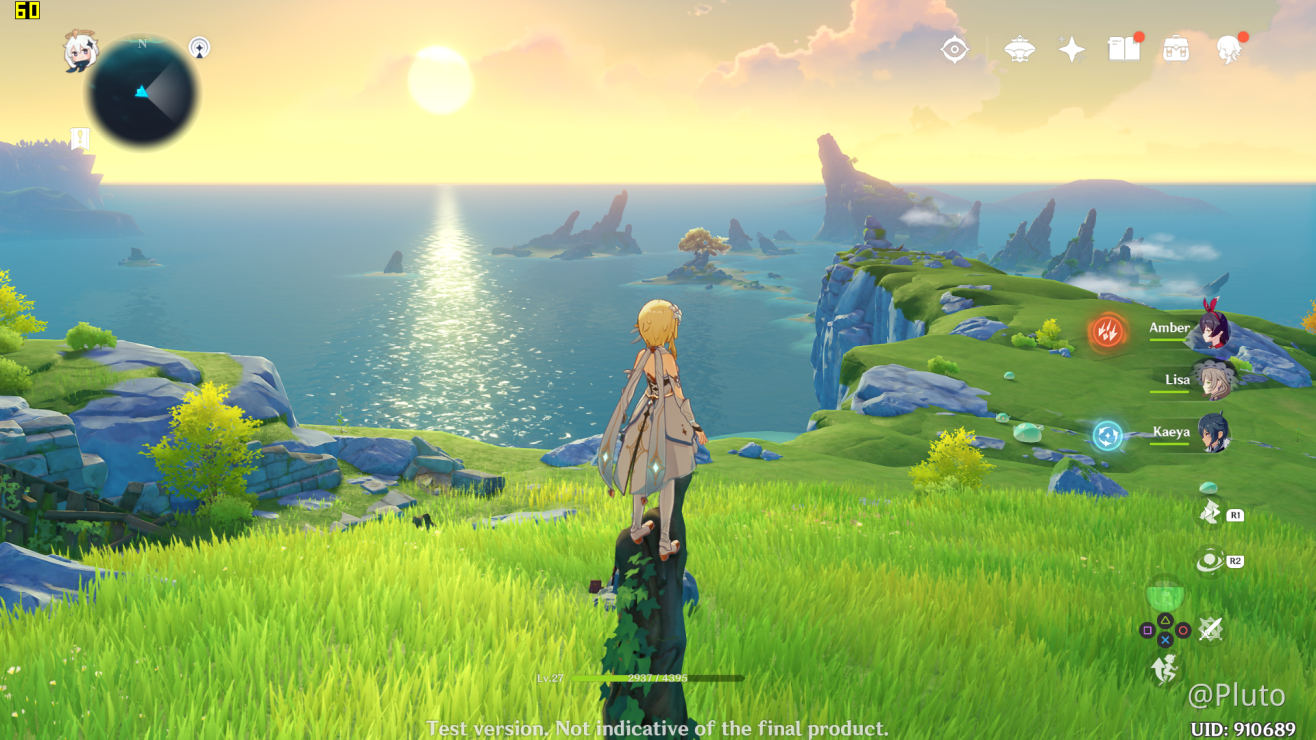
Check out the gorgeous action RPG Genshin Impact, developed by miHoYo, using Unity. It’s available on PS4, Windows, iOS, Android, and Nintendo Switch. and was released on 28th September, 2020.
One particular reason why this game caught our attention was it’s promise to be on par with games like Legend of Zelda: Breath of the Wild.
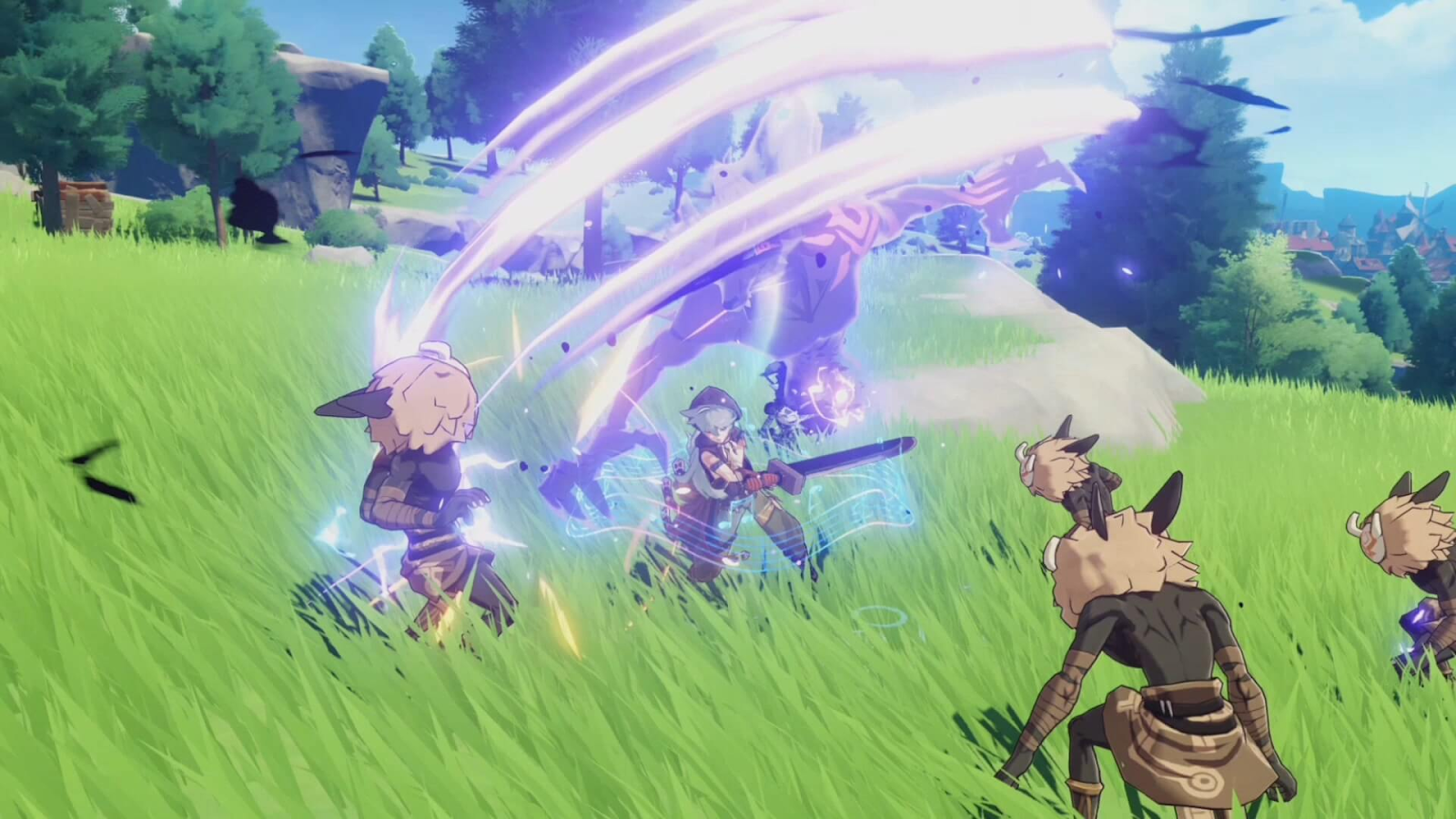
Genshin Impact is set in an open-world known as Tevyat. A god chooses each player, and they are granted with a vision. Visions are magical gemstones that allow players to control seven different elements in the game – Wind, Frost, Nature, Lightening, Earth, Water, and Fire. You begin your journey by traveling to the far reaches of Tevyat in the search of lost siblings and, during the course of this journey, find companions, each of whom have their own unique abilities.
One feature that truly distinguishes Genshin Impact from most action RPGs, is the game allows you to control four characters at once.
You will experience a rich world that seems to leap directly from the pages of a Manga story. This game is entirely free to play and expect the creators to feature in-app purchases and microtransactions.
Genshin Impact is looking to expand to all major game platforms and is definitely one of the best indie games to watch for. It also offers cross-platform play, meaning you can compete with players independent of their platform of choice.
Find the game here:
Ary and the Secret of Seasons
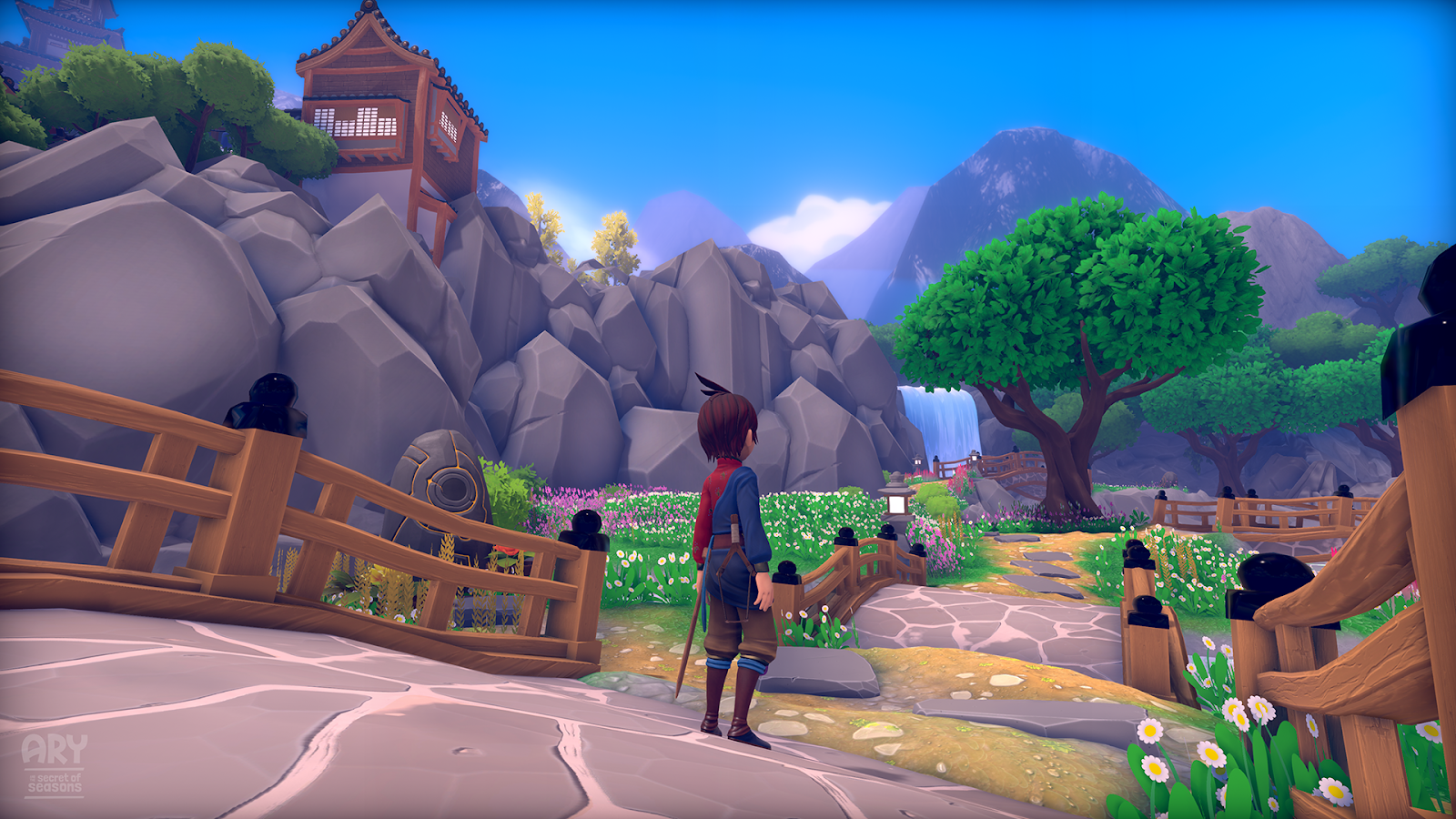
Ary and the Secret of Seasons is an action-adventure game developed by Exiin and was released on 1st September 2020.
This glorious action based adventure game is set to dazzle players with rich visuals in the fictional world of Valdi. We catch up with the main character who is the Guardian of Winter – armed with the power to control the seasons which are in disarray.
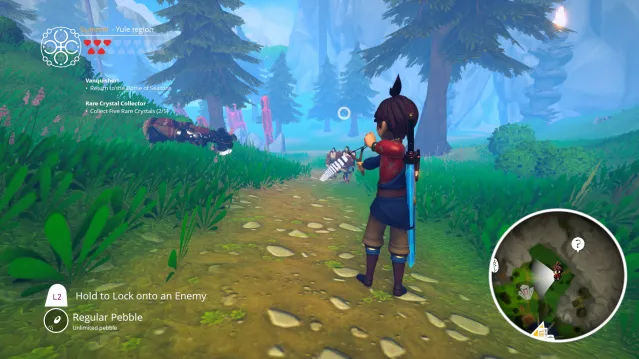
The in-game mechanics of an RPG coupled with an element of puzzle solving makes the gameplay very delightful. Arry and the Secret of Seasons also boasts a “fluid” combat system with some really unique and satisfying fighting experience. To augment the fighting mechanics, there are a wide range of enemies that you will have to fight on your way to unlock the secret of the seasons.
Find the game here:
Paradise Killer
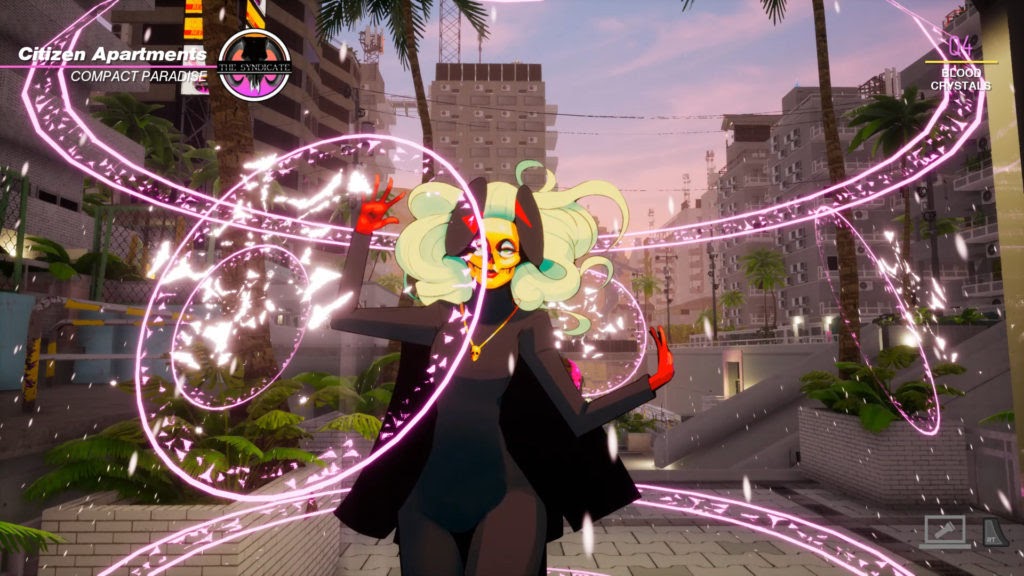
Paradise Killer is an investigation-based adventure game developed by Kaizen Game Works and released on 4th September for PC and Switch. The game is set on an island that regenerates every few millennia, and brings together a beautiful combination of murder-mystery and gorgeous aesthetic.
In Paradise Killer you will investigate the mass murder of the island’s ruling council by piecing together clues and forming your own argument that is presented at the end game trial. By choosing the interrogation sequence, and how to go about it, the player discovers not a singular truth but a truth they shape and craft.
Find your truth and breathe life back into Paradise. It’s a truly unique and mind-bending journey!
Find the game here:
Honorable Indie Mentions
There are many amazing games out there. If you have some time, be sure to check out these amazon indie titles as well!
- A Time Paradox (Puzzle)– Steam | Google Play | Official Website
- Red Star Raider (Platform shooter)– Steam | Official Website
- The Blueness of a Wound (Adventure) — Steam | Official Website
- Batu Ta Batu (Puzzle) — Steam | Nintendo | Microsoft | PS | Official Website
- Outer Frontier (Turn-based strategy)– Steam
- Louie (2D Platformer) — Steam <- Built by Beamable employee Chris Hanna!
Check back next month!
This is the first in the top indie games series. We’ll be making a habit of doing monthly round-ups where we’ll bring a list of the best 3 indie games from the month gone by, along with some honorable indie mentions.
If you’re an indie developer building games, we’d love to hear about it and possibly feature you. Contact us and let us know! Who knows, perhaps Beamable can also help you build your game faster with live game features, content management for liveops, and even a server-less game option! Check us out today!
Oh and, if you think we missed a game or two, the comment box is open!

Beamable Live Game Platform Now Available in AWS Marketplace
FOR IMMEDIATE RELEASE
BEAMABLE LIVE GAME PLATFORM NOW AVAILABLE IN AWS MARKETPLACE
Game studios can now build, launch and operate live games with a self-service platform built on Amazon Web Services

September 22, 2020 (Boston, Mass.) — Beamable has launched in AWS Marketplace, providing a no-code and low-code solution for building and operating live games with dynamic content. Game studios benefit by increasing their time-to-market, decreasing their total cost of ownership (TCO) and improving player engagement with more frequent updates to content, features and events. Leveraging the power of Amazon Web Services (AWS), game studios large and small are assured that Beamable can meet the scaling, availability and performance requirements of the most demanding games.
In the most recent quarter, over a dozen new games have adopted the Beamable platform, including Archer: Danger Phone, based on the hit FX series. Previously, Beamable was built to power games with demanding authoring requirements, such as those built on popular television series with weekly updates including Star Trek and Game of Thrones.
“Making Beamable available in AWS Marketplace makes life easier for our customers,” explained Jon Radoff, CEO of Beamable. “Beamable is now available as a Software-as-a-Service (SaaS) option for studios who want to get up-and-running as quickly as possible.”
Beamable was launched earlier this year to make it easier to build and operate live games based on Unity. With the launch in AWS Marketplace, Beamable is broadening its addressable market to include Unity developers at the point they need game server hosting, as well as studios building on other 3D engines who need an efficient content authoring and live operations platform. By purchasing Beamable through AWS Marketplace, game studios can consolidate all of their infrastructure costs in one place.
To learn more about Beamable on AWS, visit https://beamable.com/aws
To get started with Beamable as a Live Game Platform for your Unity game, visit the Beamable AWS Marketplace Listing at https://aws.amazon.com/marketplace/pp/B08G3LTQW3?qid=1600440098979
Press release available here: http://www.prweb.com/releases/beamable_live_game_platform_now_available_in_aws_marketplace/prweb17418805.htm About Beamable
Beamable fights for the game makers of the world by helping them turn their game ideas into thriving businesses with a low-code content management solution. Beamable enables anyone who builds, updates and maintains a live game to save time and earn more money. Beamable is based in the Boston area, and led by a team of game-industry and enterprise-technology veterans, and backed by investors including Grand Banks Capital. For more information visit, beamable.com.
Media Contact
Jon Radoff
(978) 503-2861
jon@beamable.com

Why do Indie Games Fail? Three Ideas From Reddit
A Golden Era of Gaming
We are all living and playing games in a time when independently created video games are receiving the recognition they deserve. As the overall gaming market grows, the rising tide is lifting all boats.
The democratization of tools for creating and distributing games and content are accelerating, opening the doors for anyone with an idea and a drive to design, build, and ship a game. More games means more players, and more players means more game creation. It is a feedback loop that is powering the industry to new heights. From single developers building out of their bedrooms to independent game studios bankrolled by VCs and publishers, game development is booming.
Despite all this creative energy, it is still far too common to find studios popping up and shutting down. Why does this happen?
We spent some time looking around on Reddit asking this question. Reddit carries a huge community of indie game developers sharing their successes, but also their frustrations. We assembled some of the perspective here for you in the hopes that it is helpful.
The Dawn and Rise of Indie Gaming
In prior decades, commercially successful video games remained the province of large, multi-million dollar corporations. Building and distributing a game was complicated and required huge investments in time, money, and logistics. Every game had to be created and tested to absolute perfection, then turned into a hardware cartridge or media with designed packaging and distribution contracts at retail stores across the country.
As player expectations continued to increase with the advancements in PC and console tech, the entire industry was soon dominated by a few AAA companies.
Once the internet became popular, things started to shift. Connectivity opened up new opportunities to collaborate, pool resources and ideas, and distribute software without the need for expensive retail channels. Shareware came about. Online payment gateways. Game production costs started to drop along with the cost of reaching players. Soon indie game makers could build a game, and distribute it for free all around the world. Massive successes like Minecraft burst onto the scene, fueling the dreams of indie devs everywhere! Build a game in your basement and make billions!
Since the early 2000s, the non-industry developers (indies) have grown into a huge community. Indie developers trade ideas, share insights, discuss code, and provide important critique through various forums, chat, and streams. The indie community continues to organize events in a golden era of small teams building and distributing incredible player experiences directly to gamers around the world.
Why do Indie Games fail?
With all of this opportunity and success, it still is far too easy to spend years building a game that no one plays. Spend any time searching Reddit and some of the first results around Indie Gaming projects are pretty gloomy!
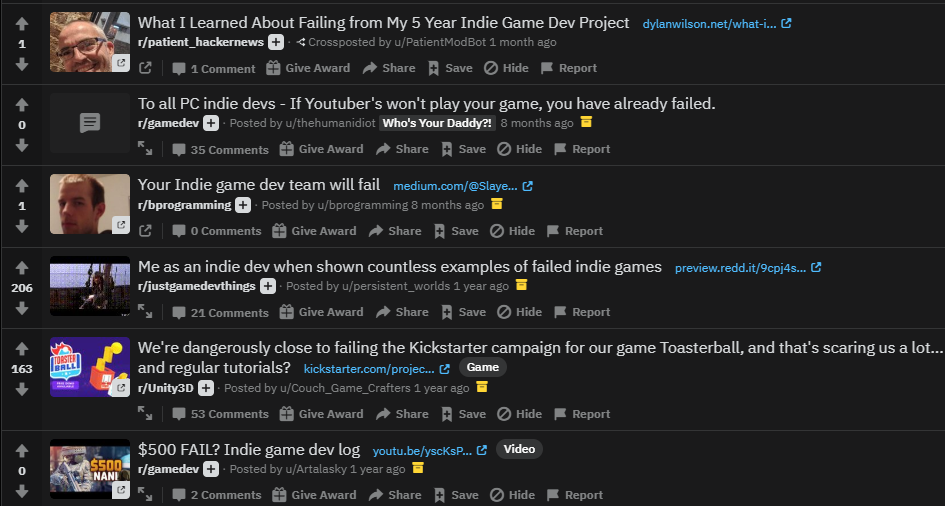
Reddit remains an important way for indie game developers to connect to connect and communicate with each other, sharing successes and asking for help navigating failures. Some of the most recurring keywords relevant to indie gaming that show up on Reddit continue to be about “Indie game dev failure”.
So, how does failure happen? There are many reasons, but here are some common ones, according to Reddit:
1. A failure to understand the power of marketing
It can’t be stressed enough that a huge component of game success is dedicated and continuous sales and marketing. You have to start early before development, continue during development, and pile it on after launch. The majority of games simply never reach a large enough audience to make them sustainable.
MeaningfulChoices, an active Redditor on r/gamedev had this to say:
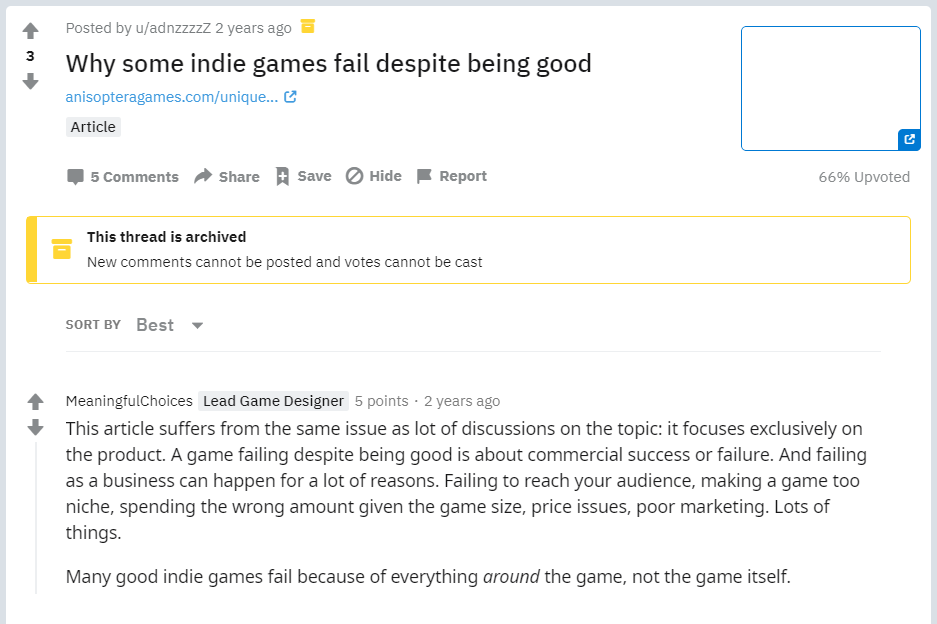
“A game failing despite being good is about commercial success or failure.” She further adds that failing as a business can happen for a lot of reasons, the first of which is failing to reach your audience. Your game can be a critical success (players love it), but if you can’t reach an audience, the game won’t sell.
Early on, when access to players was opening up in the app stores and there were fewer games in the market, it might have been easier to reach an audience. But it is a crowded market today with hundreds of games being released each week.
You don’t just need a great game, you need a great game with a great story. Sometimes that story is about the team, or the creative director. Sometimes that story is the process and struggle to bring the game to market. Sometimes the story is the innovation of the game, or the quality of the art or narrative. Spend the time to put together a marketing and outreach strategy that begins the day you write your first line of code.
Try and think at least every day that you work on your game about how you will have 1000 people buy it on day one. A good game with 1000 dedicated fans has the opportunity to be a huge success.
2. Not recognizing the power of game influencers
There is a developing opinion on Reddit that online streaming and video content in gaming is becoming a core way to solve for #1 and reach an audience. YouTube and Twitch (and now TikTok) are powerful channels for indie game marketing.
To take full advantage of these channels, games must support the capture and easy sharing of video content to support the streaming context.
The heading of a post on r/gamedev by an insightful participant read, “To all PC indie devs – If Youtuber’s won’t play your game, you have already failed.” The post said that the influencers in the gaming industry represent the gaming population and must be looked at as your core demographic.
The post further mentioned that the common feature of indie game successes of the past decade was that the YouTube gaming influencers loved playing these games.
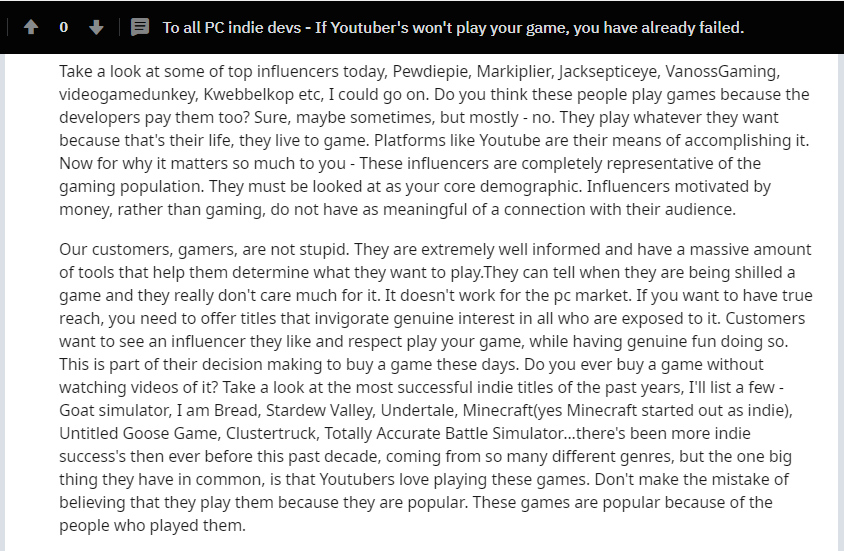
Many influencers make it a core part of their programming to try and promote new indie games. Everyone wants to be the person who finds the next major gem. The more your game is optimized to be found, played, and shared in the streaming channels, the higher your chance of success might be.
3. Inadequate QA and Testing
Nothing sets a player off more than bugs in a game. A robust QA/testing routine can make sure that your independent game is problem free.
Quality is always a struggle for Independent game developers, but it can’t be avoided. As pointed out in this Reddit post, test early, test often, and develop a scalable and repeatable process to ensure adequate test coverage. The gains will be substantial.
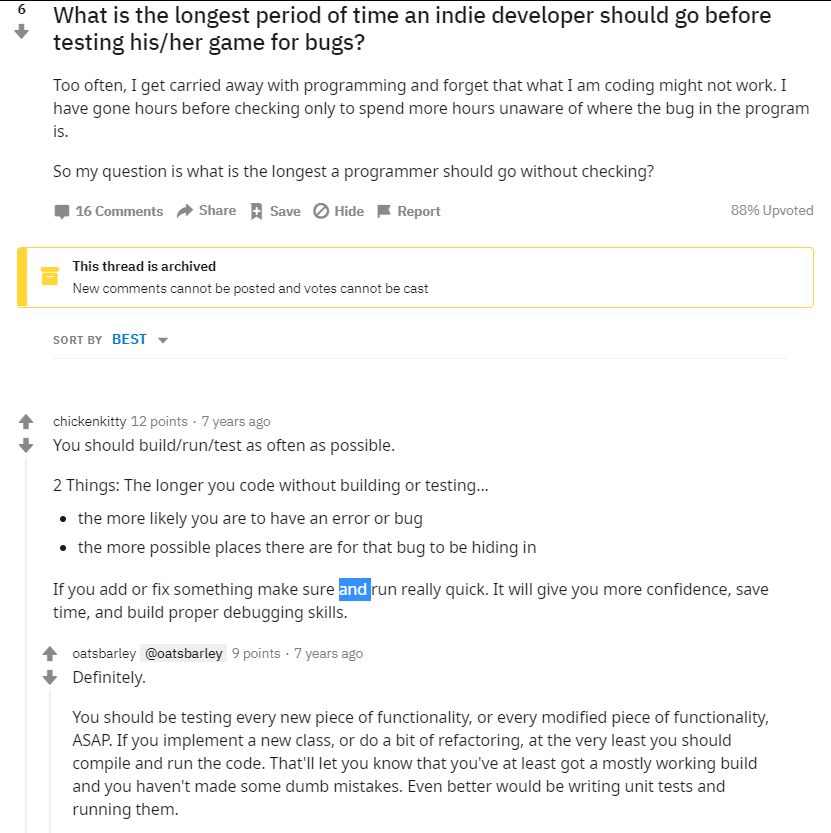
Summary
The path to a successful Indie Game is paved with failures. A crowded market has created an imperative for strong marketing strategies that embrace streamers and game influencers, and provide a bug-free and engaging play experience.
By providing some of the ways games fail, we hope you can navigate a path to success through the challenging but fulfilling world of Indie Game Development.
At Beamable, we fight for the game makers every day helping them build, deploy, operate, and scale their games into sustainable businesses. If there is anything we can do to help you, please reach out today!
Good luck!

The Power of Game Jams: Becoming a Better Indie Game Dev
Game jams are great places to find inspiration, and motivation to take an amazing game idea, and rapidly get it into the hands of players. Over the years, game jams have given rise to many interesting game ideas that have become huge successes — games like Surgeon Simulator, Super Hot, and Goat Simulator.
For many, game jams are a competitive environment that pushes game makers to refine their craft, learn quickly by doing, and take their skills to the next level. If that sounds fun to you, then here are some tips!
1. Find a game jam near you
Itch.io and Indie Game Jams are solid places to find upcoming jams.
Another fantastic online resource is the Ludum Dare! It’s massive and pretty competitive. Check out their website: https://ldjam.com/.
Global Game Jam is the biggest in-person jam each year. If you happen to live in a bustling city, chances are, there will be a GGJ hosted somewhere near you. You can search your area by visiting GGJ’s website: https://globalgamejam.org/.
2. Building a game jam team
After you find a jam and decide to participate, you’ll want to think about a team. If you’re alone, you can start by going to the jam’s Discord/Forum and search for a “Looking for a team” tab, or places like that where you can let others know you are looking to join up.
As you connect with various game makers, be prepared to share examples of your work, and to look up the portfolios of your team members as well to ensure that the types of games and style of games are a fit with your aspirations.
We published a whole article about building a game dev team. For a game jam, you will want 1 – 2 game programmers, 1 – 2 artists, and 1 audio person. At least one of those people will be the game director and lead designer who holds the vision of the game in their head and directs all the work to a single result. There aren’t any hard and fast rules, but it seems like the maximum number of members should be 8, and the minimum should be 3. Anything bigger, the harder it is for everyone to stay connected to each other’s work. Any smaller, and you can’t get the work done.
3. How to start a game jam
The first hour of the jam is crucial. Connect with your teammates and discuss the game’s overall plan. If you don’t have one, conduct rapid brainstorming and zero in quickly. You need to jump into production ASAP. Ideally, the idea has been decided upon in advance of the jam. Well-done initial planning will guarantee that important gameplay mechanics won’t need to change halfway through.
Here are several key things you can discuss during the first few hours of the jam:
- What does the team want out of this jam?
- What is the theme of your game and what gameplay mechanic can you derive from it?
- What is everyone’s availability like? How much time can they spend? What deadlines are there? Make this clear from the start – it’s important!
- Constantly ask if the game idea Is doable in the required timeframe.
- Decide on the deadlines for when the game will be code-complete. Leave as much room as possible for playtesting.
4. Communicating during the game jam
The more you communicate as a team, the better. Since game jams are virtual these days, it’s difficult to just walk over to someone’s desk or look over your shoulder and discuss updates and changes. Use tons of real-time chat and video calling so everyone is present and engaged.
Whatever your role is on the team, everyone should be aware of what everyone else is doing and pitch in wherever possible. It’s a team effort. Provide feedback regularly and honestly. Encourage rapid discussion of perspectives. Look to the game director for fast decisions to keep everything moving.
5. Halfway through the game jam
If yours is a two-day jam, you’d want to have a playable prototype ready by the end of day one. Save the last day for adding assets, polishing features, adding in sound effects, and tons of testing and tweaking.
If you are running short on time and don’t have working gameplay, ask your team to scale down the game’s size. Pulling an all-nighter during game jams is often the norm, but never an advisable idea as, by the end, everyone burns out, and mistakes get made.
6. Finishing a game jam strong!
You should have a playable build ready at least 6-8 hours before the submission deadline leaving ample time for final playtesting and bug fixes.
Try submitting your game one hour before the deadline. The website where you’re submitting will likely lag once many people start submitting, so be early!
7. Remember to celebrate!
After submitting your game, regardless of what happens in the judging, you deserve a huge celebration with your team. Not many people have what it takes to make a game. Even fewer have what it takes to build a game in days and ship something that players can play!
The end of the jam is not the time to second guess decisions or point blame. After all, the game jam is supposed to be fun and serve as a way to motivate everyone on the team to continue making and shipping games. Don’t use it as a time to overly critique or blame. Celebrate the end, and in the next jam, you can apply what you learned.
Are you ready to game jam?
Participating in a game jam can be super stressful, but hugely rewarding, and it provides the opportunity to launch your game making career. We hope these tips will help you survive your first jam, or maybe help you with your next one!
It’s also important to know that Beamable can help you make games faster. If you are building a game at a game jam with free to play mechanics, or you want a rapid way to add social features like teams, or commerce to your game project, contact us to learn how we can help accelerate your game jam team!

Best marketing channels to promote your indie game in 2020
In the ever-competitive world of indie game development, the marketing phase is as important, if not more so, than the development stage. At Beamable, we have years of experiencing building and publishing AAA IP games. Here are some ideas about how you can get a head start on marketing your title, and building a community of players that will support your game for years to come!
Some of this will be obvious, but it still needs to be said. The goal is to develop your “golden cohort”. These are the folks that will start playing the moment your game is released, and keep playing almost forever! Get your golden cohort, and you will have a thriving game business for years to come.
#1 – Promote your game in indie dev forums
Indie game dev forums can be one of the best places to promote your project, test the waters, get feedback, and find players for your game. Most indie game dev forums have special boards or threads set up specifically for promotion. You can post screenshots, character stories, game trailers, download links, and so much more.
Give these forums a try!
Make sure that, when you post, you are open to feedback. Also take the time to view, play, and comment on the posts of others. You can’t just go into a community and take. You have to give back too. Indie dev forums are great for both pre and post-launch, so don’t burn any bridges!
#2 – Posting to Facebook groups
Facebook game dev groups are also a good location. Try some of these:
- Game Developers’ Promotions for Gamers
- Indie Game Marketing
- GameMarketeers
- Indie Games Advertising
- Indie Game Promo
- Promote your Games Android & IOS / & Exchange Review
Be sure to check the rules of whichever group you join. Participate in a curious and authentic way. Do not spam the group with advertisements for your game.
Also, if you have some budget, you can use post Boosting or some small amounts of Facebook advertising. It will require some learning time to understand how advertising works. There are many free resources available, including the Facebook Ads Guide, which offers good insights on getting started with ads on both Facebook and Instagram advertising.
Quick-tip: Try to cross-promote across all of your different channels for a wider reach.
#3 – Instagram is great for visuals
Many indie devs and game studios are moving to Instagram to showcase screenshots, short videos, and other content about their games. The real power of Instagram is increasing your reach by using relevant hashtags for your posts. Look for other creators in the same niche as your game, watch their hashtag usage, and maybe even reach out to collaborate and co-promote each other’s games.
Some hashtags to try out are:
The real trick with Instagram is to post regularly. Don’t overcomplicate the content. Post something small every day.
#4 – Get hunted @Product Hunt
Product Hunt is a discovery site where you can share and find new applications, products, and games. Users, fondly known as ‘hunters’, up-vote their favorite apps. If your game receives votes, it might get featured on the homepage as the ‘Product of the Day’. There are no charges for posting on this platform.
There is a whole TOPIC for Games. Make sure you get in there!
However, if you are serious about building buzz around their game, they have a service called SHIP. It is a suite of tools to help spread the word about your game.
#5 – Reddit / Play My Game
Rightly coined as the “front page of the internet,” Reddit is a huge social forum where people post interesting news, videos, photos, memes, and so much more. The website is divided into millions of subreddits, which are basically topic-based communities. Users can post, comment, vote, and interact on subreddits.
Below is a list of some of the popular subs where you can share your game:
Quick Tip: Karma is important in Reddit, so try to build your karma points first by being active in the community. Make sure you don’t appear spammy; the Reddit community can be unforgiving.
#6 – Game review sites
Game review sites are a massive way to increase your game’s visibility to players. Given the number of games coming out each day, and the amount of people pitching game review sites, it’s not easy to get picked up, but if you do, it can be massive.
Before you start pitching to game journalists and review sites, you need to make sure you have a solid press kit ready to go. The press kit should include a video trailer, screen shots, and a textual explanation of your game, the genre, the core game play with instructions.
Some review sites to consider:
- 148Apps
- AppAdvice
- TouchArcade
- Droid Gamers
- Gamezebo
- Pocket Gamer
- AppSpy
- PreApps
- Feed My App
- Android Central
Go out there and become a marketer!
Being a game developer is hard. You have to wear a ton of hats to build, launch, and promote your game. We hope this list of options helps you find some places to let the world know about your exciting game project.
It is never to early to start marketing your game. Join some forums. Get on Facebook. Set up your Instagram account. Jump in the Reddit deep end. Get started, and stay consistent!
At Beamable, we love seeing games launch, and we love seeing them successful. If there is anything we can do to help, please contact us today!

Beamable and East Side Games Join Forces
FOR IMMEDIATE RELEASE
BEAMABLE AND EAST SIDE GAMES JOIN FORCES
“Beamable supports our ambition to provide regular content updates and live events for our players–and at a scale and frequency appropriate for a game based on a hit television show such as Archer,” said Jason Bailey, Co-Founder of East Side Games.
Archer: Danger Phone uses many content management features that Beamable offers including player data management, virtual goods and currency management, live events, offers and merchandising, and an advanced content authoring workflow. Many of these technologies were previously honed within Game of Thrones Ascent and Star Trek Timelines, where Beamable developed authoring systems to keep pace with the aggressive content demands of weekly television shows being watched by huge, demanding audiences.
In addition to Archer, East Side Games and Beamable announced plans to integrate Beamable into other games that are in development on the East Side Games IdleKit platform, a technology for creating world-class idle games.
“We created Beamable to arm game-makers with the tools to develop and maintain world-class games with the reliability and frequency that players expect,” said Jon Radoff, CEO of Beamable. “The idle game genre is one that requires consistent updates, live events and a monetization strategy that aligns with new content. We’re excited to work with East Side Games to deliver an evolving, story-driven experience that players will love.”
Archer: Danger Phone is available in the Google Play and iTunes app stores now.
To learn more about how the Beamable team contributes to Archer’s success, check out the blog post, Archer Danger Phone: Powered by Beamable, and the Archer: Danger Phone Beamable team play through on YouTube.
To learn more about Beamable, visit https://beamable.com. To learn more about East Side Games and their other titles, visit https://www.eastsidegames.com/.
About Beamable
Beamable fights for the game makers of the world by helping them turn their game ideas into thriving businesses with a low-code content management solution. Beamable enables anyone who builds, updates and maintains a live game to save time and earn more money. Beamable is based in the Boston area, and led by a team of game-industry and enterprise-technology veterans, and backed by investors including GrandBanks Capital. For more information visit, beamable.com.
About East Side Games
East Side Games is a proudly independent and profitable game studio with a collaborative, creative, and fun culture. Our games fund all our new projects, and everyone who works here has a direct impact on the day-to-day business. East Side Games has released several hit mobile games including Trailer Park Boys: Greasy Money, Pot Farm: Grass Roots, Munchie Farm, Idle Paws and a new puzzle game, Dragon Up: Match 2 Hatch. For more information visit, www.eastsidegames.com.
Media Contact
Jon Radoff
(978) 503-2861
jon@beamable.com

Archer: Danger Phone powered by Beamable
We are proud to work with East Side Games on the support and release of Archer: Danger Phone! The game leverages many key capabilities of Beamable.
About Archer: Danger Phone
ARCHER: DANGER PHONE takes place inside the world of the hit animated series from FX: Archer. Across 11 television seasons, the show follows the misadventures of a dysfunctional intelligence agency and the crazy employees that work there. The game picks up during the collapse of the world economy, and the only way to survive will be to lead this crazy team in a cryptocurrency operation that’s just crazy enough to save the world.
ARCHER: DANGER PHONE is a narrative-driven idle game where you’ll build generator rooms, collect your favorite characters, level them up, and send them on lucrative missions to fund your operations, and take advantage of their get-rich-quick schemes to stay afloat.
Archer on Beamable
ARCHER: DANGER PHONE is a collaboration between Beamable and East Side Games who have worked for the last year to bring the game to life. ESG has focused on the game design, idle systems, and content that they’ve pioneered with their other hits TRAILER PARK BOYS: GREASY MONEY, IT’S ALWAYS SUNNY: THE GANG GOES MOBILE, and THE GOLDBERGS: BACK TO THE 80S.
Beamable provides critical live game features and support in the areas of:
- Identity
- Commerce
- Events
- Content
- Managed hosting
Identity with Beamable
ARCHER: DANGER PHONE leverages Beamable’s login, authentication, and player analytics. Beamable is set up to offer a standard email and password option, along with Facebook ID or Apple ID.
For the player analytics, all instrumentation runs into an Athena data store where a Tableau connection allows for the creation of dashboards and reporting.
ESG uses Beamable identity and authentication APIs to construct a player web portal so that players can log in with their game account on the website and receive player support.
Commerce with Beamable
ARCHER: DANGER PHONE’s key revenue comes from in-app purchases (IAPs) and ad views.
ESG leverages Beamable’s Limited Time Offer (LTO) system to provide a collection of segmented merchandising.
The game uses Loot Rolls in a unique way, leveraging a special Beamable feature where ESG’s game servers can talk to the Beamable Commerce API and insert proprietary game logic on what players receive.
The game also leverages Beamable’s system for purchase limits and pricing schedules so player purchases can scale based on timers and frequency.
Finally, ARCHER: DANGER PHONE makes heavy use of the Beamable Real Money Transaction (RMT) and virtual currency purchase systems to integrate efficiently with the iOS and Android app stores leveraging SKU Mapping to accommodate flexible offer pricing.
Events with Beamable
A big part of East Side Games’ Idle system design is using multiple Limited Time Events (LTEs) each week to drive player engagement. These events use the Beamable Events system so that they can be scheduled, replayed, include multiple phase changes, and accommodate different reward schemes.
Rewards can be provided at different event phases, at defined thresholds or milestones of progression, and by rank at the end of an event or phase.
Finally, the game’s LTEs also leverage sharded/partitioned leaderboards so players participate in smaller groups of 200 which allows for more fierce competition and a shot for more players to achieve the highly coveted rank rewards.
Content with Beamable
One of the most powerful features of Beamable is content management, ensuring that the game teams can create and publish large amounts of changes to the game content without requiring a client update (and laborious app store approval process).
Almost everything in the game is defined as content: Announcements, emails to players, stores, store listings, SKUs, events, rewards, characters, etc.
The Beamable Content flow allows ESG to author the content, and have it be tested and validated in lower environments, and then seamlessly promoted to the production environment.
Fully managed hosting with Beamable
Everything we do runs on Amazon Web Services in a fully containerized environment. All the services mentioned above scale independently and automatically on EC2. When ARCHER: DANGER PHONE runs an event, we can see a 6X increase in player traffic. Beamable has to be able to handle that ramp up in scale, provisioning the correct resources, and scaling them back when the event load and concurrent players drop.
Example of an ARCHER: DANGER PHONE event start in soft launch
Hear from the Beamable Devs!
Go behind the scenes with some of the engineers that helped bring Archer to life on top of Beamable. Join the discuss over on our YouTube channel.
Conclusion
This is a very exciting project for Beamable. ARCHER: DANGER PHONE is a huge FX IP with fans all over the world. It is exciting to see such a large game trusting Beamable to deliver advanced live game features at this scale. A special congratulations to the East Side Games team and everything that we’ve accomplished together!
If you think Beamable can help your game project, please contact us to discuss opportunities!

Building an A-Team for your Indie Game (That Can Do It All!)
If you’re an indie game developer, chances are you’ve had to walk away from a number of great game ideas due to a lack of access to the talent required to craft your perfect game.
Bringing a game idea to life requires understanding many different creative fields. That is partially why game development is so exciting. While many indie game devs like the challenge of building a game from scratch alone, what if you put a small team together? Who should be on it? What should the roles be?
To that end, we’ve compiled a list of important roles required to build your own indie game dev studio. Depending on your game, you might need some of these roles and not others… but it is a good starting point for anyone thinking about tackling the challenge of putting together an A-team!
First up…
Game developers

Your idea won’t come to life without a game developer writing the required lines of code. Game developers will spend most of their time developing the required codebase, tools, features, and elements of the game. They’ll work within a game engine (Like our favorite: Unity!) to build the core game loop and optimize gameplay.
The game developer on your team will also be responsible for beta testing and debugging to ensure that the game is polished and ready to ship.
You might need more than one game developer, depending on the size and scale of your game.
Server Engineers

The Server Engineers will construct the back-end of the game. They will support the live game features that power cross-client communication, server-authoritative features, social interaction between players, and much more. Whether your game is single player or multiplayer will determine the importance and urgency of this role on your team.
This is actually an area where Beamable can help! Our tools takes over much of the heavy lifting and allows you to implement server features with a no-code/low-code option. Check us out!
Quality Assurance / Testers

Ideally, everyone on the team is a tester. The entire team will play the game hundreds or thousands of times as development continues. Everyone will be finding and reporting bugs.
That said, the quality of your game will be a serious point of appraisal from your players. Nothing leads to bad reviews faster than serious and preventable bugs in a game. It is important to assign ownership of the game quality to someone who will make it their mission to have the game experience be as bug-free as possible.
Designers

This role is often filled by whoever is running the indie game dev team, but not always. This person will supervise and have the final say in all game design-related decisions that will impact the players, the core-loop, and any meta-game. They are also responsible for maintaining the primary Game Design Document (GDD) for the team to ensure that game design rules, reasons, and decisions are documented so that they can be referred to as the game evolves.
Writers

The narrative of your game and all of the text content communicating to players needs an owner. Although it’s true that anyone can tell a story, it is an art that requires practice and command. It is best to find someone who is a professional writer/copy-writer and can level up your game’s content.
Writers are responsible for coming up with or honing the premise and the storyline of the game. This includes creating characters, their backstory, the settings, plot, and much more. If your game is dialogue-driven, you’d want the writer to make sure the copy is captivating and enhances the overall experience.
We’d go so far as to say that having a skilled writer onboard is probably as important as having a programmer. There’s nothing worse than a game with decent gameplay but typos and unstructured narrative.
Sound Designers

Sound and music are extremely important to enhancing the player experience. Sound designers and Music Composers will create all the sounds effects required for the game.
Sound effects and music are vital as they define the atmosphere of a game. While searching for Sound Designers for your team, make sure to select the ones who have worked on similar projects in the past.
Producers

The role of a producer, like that of the designer, is often taken by someone already filling another role. Whomever they may be, the core responsibility of a producer is to ensure that the team works fast and efficiently by having everything they need to be successful.
Producers set milestones and help the team achieve them in a reasonable amount of time. This might involve coordinating communication through meetings and documentation, holding one-on-one conversations to get people what they need, and generally guiding and caring for the team through the grueling process of game creation.
Game directors

The game director is ultimately responsible for the success of the game, both in player reviews and revenue. What they will handle is broad: hiring, marketing, user acquisition, expenses, fundraising, etc. They maintain the game road map. They handle the budgets. They liaison with publishers as needed. The buck stops with the director.
Community Managers/Support

The community manager is responsible for spreading the word about your game, building a community of players, interacting with people on social media channels, and basically creating a buzz around the game both prior to and after launch.
After launch, they shift to handling support requests and making sure the team has access to the “voice of the players” as content is planned or improvements are scheduled. A game’s success is built on a strong foundation of excited and passionate players. Your community manager will help you build and maintain that.
Go out and build that game team!
Developing a game is an exciting artistic activity, especially because it involves so many creative pursuits. There are lots of talented people out there looking for a team where they can create something amazing. You might be able to put together a group for a game jam, or can hire people with talent off sites like Upwork and Fiverr.
If you’re just starting off, try picking the top 3 skills you’ll need the most depending on your type of game. Narrative heavy will need designers and writers. Multiplayer will require game devs and server engineers. Having a few people working with you will provide bandwidth and perspective!
Of course, there’s always Beamable! – We can simplify the building, testing, and scaling of your game from every aspect (UX, content, social, and more). If you need any help with your next project, reach out to us at https://beamable.com!
Whatever you decide to do, make games, have fun, and good luck!

10 Rules for Making a Living as a Small F2P Studio
Beamable’s CEO Jon Radoff gave a lightning talk sponsored by the Boston Indies & Women in Games Boston where he presented the rules for making a living as a small game studio. Check out the replay on Twitch!
Here are the rules:
- Shift your mindset from making a game to providing an entertainment service — Think about how you will ship new content every day. Every week.
- Break some rules — The games that stand out aren’t simply clones. Try merging genres!
- Establish scarcity in your economy — It needs to take a long time and/or lots of money to acquire the best game items.
- Don’t cap the size of your economy — The biggest design mistake is running out of things to buy or acquire.
- Implement effective merchandising — Constantly experiment with price points, bundles, new content to buy.
- Run events! Lots of events! — Tie your events to limited-time merchandising that aligns with the event.
- Give players compelling and meaningful social interactions — They will talk about your game for decades.
- Engage with your players — Become known for great community and customer support.
- Focus your time and effort on making the stuff that stands out — Use platforms like beamable.com to give you the business foundation for social, events and merchandising.
- Go for it! — If you want to make a game then make a game! Give it everything you have. You can win because most people in this business aren’t going to put in the effort.
Watch the whole replay for the details!

Game Dev Mistakes That You Should Avoid At All Costs
There’s nothing more exciting than seeing your ideas come to life. Colors, fonts, design, flow–all of it as you had planned. This is precisely what’s offered by the hybrid field of game development.
Developing a game means working on many different creative dimensions, including storytelling, designing, programming, and more. And if you’re an indie developer, chances are you’ll be managing all of those outlets yourself (or with a selected few). As a result, there are a lot of opportunities for error (and therefore, improvement) during the entire game dev journey.
Through this article, let’s look at some common mistakes of indie game developers, and what you can do to avoid these mistakes. We’ve broadly categorized these mistakes of indie game developers to cover pretty much the entire game dev lifecycle (except marketing… that’s for another day!).
UI — Visuals and Audio

One of the key challenges of indie game developers is that you’ll often be working with your own or a friend’s art for the game (unless you’re a solo developer). Very few new developers have the resources to work with professional artists. Here are some things to avoid:
- Using multiple fonts: Set a hard limit for two or three fonts for the entire game. One heavier font for titles, slightly lighter font for subheadings, and one easily digestible font for slightly longer texts. Anything more will become a distraction.
- Having too much text: Too much text can often be overwhelming. Avoid having too much text on one screen. Keep all instructions, explanations, and set-ups only as long as they need to be.
- SHOUTING AT THE READERS: Refrain from using all-caps casually. Use it very sparingly, and only for titles, emphasis or single line instructions, never for longer text.
- Not being consistent: Regardless of whether you’re a visual artist or not, you should strive for consistency in the UI and art style. To put it simply, consistency can provide a professional look. Even a lo-fi art style that imitates scribbling can look intentional and amazing if you keep it consistent in terms of colors, line thickness, fonts, and style.
- Using too many colors: Minimalism in colors is always a conservative choice when rolling your own visuals. Make your colors matter, consider if an element really needs to be a different color or if it might look better with other elements. If you’re not too much into color theory, use a color schemer tool. Color palette generators are your friends. Use them and stick to them.
- Not taking care of the music: Music is extremely important in setting up the context and mood for your game. Prepare a soundtrack that evokes the exact mood you want players to feel when they first start your game. Consider your game’s setting in your selection. For instance, don’t use an epic orchestra theme for something mundane, or refrain from crossing genres by using electronic music for a fantasy game.
UX — Design and Usability
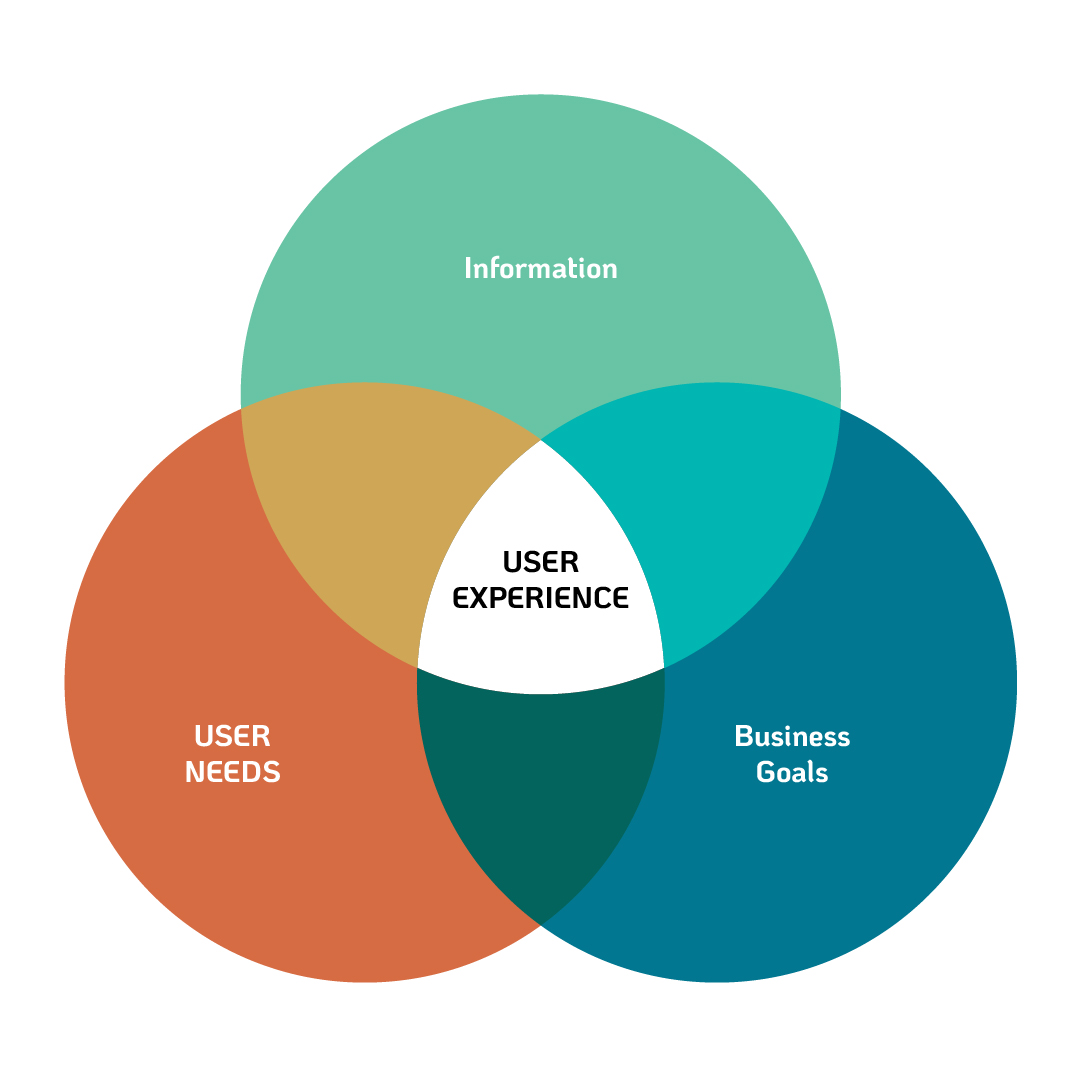
Often, mistakes are made around how a game feels. Many of these will just boil down to “keep your game understandable”, but all of them require reiteration because it is easy to get this wrong.
- Not providing a manual: Regardless of whether you send an unfinished prototype or submission for release, ALWAYS include instructions on how to play the game. Users won’t prefer your game if they don’t know how to play it. If a proper tutorial is out of scope, include a single screen of simple directions/instructions.
- Providing incomplete instructions: This is one of the classic game design mistakes! While creating instructions, make sure you’re not combining questions. “How to play?” and “What to do?” are two different questions that you should separately answer. For instance, in a platformer you would have to tell the player both “use the arrow keys to move and use space to evade enemies” and “reach the right end of the level before the time runs out.” Your instruction screen has to cover both aspects, separately. Give the player a goal and tell them how to reach it.
- Having long setup menus: Ideally you want your user to have as little interaction with the screen (in the form of checking boxes, clicking on “next”), as possible. So, avoid having long setup menus and asking the player to make a ton of decisions before they know what those mean. Customization is fine, but the player should first be given the time to see what it’s even for. A character selection screen is neat, but six separate screens for selecting game mode, control scheme, score system, character class, game length, etc. is too much.
- Not playtesting the game: Organizing playtesting sessions will save you a lot of eventual headache. But the important thing here is that you shouldn’t tell your testers what to do. Let your game speak for itself. Have testers think out loud and make notes where they struggle.
- Confusing understandability and accessibility with a low difficulty: Even the most complex games, if well explained, will be playable by even the casual user. Games can be incredibly difficult but super simple to understand. The point being — you don’t need to simplify the concept of your game for people to participate in it. Instead, you need to explain your games properly, and people will start participating. Accessible games don’t necessarily have to be low difficulty games.
Technical
- Waiting to test the game: Don’t wait too long to test your game; especially if you’re working with new tech. Test the export as soon as you have something playable, and then test it again several days before the deadline.
- Not testing the final build: This shouldn’t have to be said, but when you upload your game somewhere and you have to submit a link to the build, test that build. Test if it downloads, opens and plays properly. Submitting a non-functional game (to any sort of review or pitch, but especially to a contest) can get you disqualified instantly.
Conclusion
Building a game is hard! It is easy to make critical mistakes that can derail all your hard work. We hope that, by sharing some of the common game dev mistakes, you won’t have to learn some of these lessons the hard way!
At Beamable, we’ve lived the world of game development. We’ve created a whole set of tools to make building, testing, and scaling your game UI/UX, content, and social features much easier. If you want to avoid mistakes, contact us for help at https://beamable.com/contact-us!

Daily POP Crosswords launches on Beamable!
We are excited to announce that today Daily POP Crosswords from PuzzleNation has launched on Beamable!
They came to us looking for a cross-platform login solution that could replace their reliance on Facebook as the exclusive account management system. They implemented the Beamable login flow that supports player aliases, an email + password flow, Apple sign in support, while maintaining the Facebook flow their players relied on.
They also implemented Beamable analytics to get a fresh look at their player behavior, as well as player stat tracking, purchase tracking & audit, while getting the advantage of the Beamable web portal for player administration.
Download Daily POP Crosswords for Apple or Google today and get your crossword fix!
We look forward to working with them on even more functionality in the coming months!
Learn how Beamable can help you rapidly add features to your game. Contact us today!

New Feature: Cloud Saves
At Beamable, we are constantly working with our customers to improve our capabilities. That will be what we are doing for the rest of our lives!
Beamable offers many features for a variety of use-cases, but there will always be room for game-specific player state which is client-authoritative. Cloud Saves fills that need, by offering a streamlined interface to write complex objects (JSON, binary, or whatever else within a 5MB limit per file), and back them up to the Beamable cloud for that player.
This is great if you want the game client to be the authority on writing the data, but also want that data to be synced across all the player’s devices. Cloud Saving also allows the developer to write public data which other players can view. This is a great vector for player generated content, which is viewable and shareable across the player community.
Check out Cloud Saves and our other features. And let us know what you think!
Photo by Alex Machado on Unsplash

New Feature: Offline Mode
We’ve discovered that many of our customers value the ability to have their games continue to function without internet connectivity. As such, we’ve introduced Offline Mode in Beamable!
This is a new requirement that we’re baking into all of our feature development. Specifically, every Beamable feature is now offline-adaptive. User Interfaces will visually indicate the loss of internet connectivity, and which functionality is unavailable. A read-cache is maintained wherever possible so that players can still interact with Beamable features, while knowing that the data may be outdated until they restore connectivity.
This is just one more way we are using a UI-first approach to solve problems for game makers that they don’t even think about. It comes built right in to Beamable.
View our features page to learn about all the features Beamable offers to help make games faster!
Or contact us for a demo!
Photo by Markus Spiske on Unsplash

Beamable and MassDiGi Join Forces to Educate the Next Generation of Game Creators on Live Ops
MassDiGi is expanding their program to focus on the importance and impact of designing for LiveOps. Beamable will provide their Unity SDK to game teams in the program to rapidly build and experiment with social, commerce, and content features.
June 9, 2020 (Boston, MA) — Beamable announced today that it is working with the Massachusetts Digital Games Institute (MassDiGI) to provide tools and services to expand the education of LiveOps for participants in the 2020 Summer Innovation Program and beyond. Students at MassDiGI will get full access to all the capabilities of Beamable as well as mentoring from senior game developers.
For years, Beamable’s tech has been at the center of many award winning mobile games like Game of Thrones Ascent and Star Trek Timelines, which have generated over $150 million in lifetime revenue. The lessons and design patterns learned creating those titles is now being offered through Beamable to game studios, individual game developers, and students.
“We want to arm the next generation of creators to build successful live game businesses,” said Beamable’s CEO Jon Radoff. “Building an engaging and fun game is hard enough, and then you have to spend huge amounts of time and effort building the social, commerce, and LiveOps content technology to make your game commercially successful. The ability to do that has been out of reach of many educational programs. With Beamable, we can provide students with drag-and-drop no-code tools to work with these LiveOps concepts. We are really excited to be a part of expanding what’s possible for educational programs.”
Monty Sharma, the Managing Director of MassDiGI conveyed his excitement. “Every year, we have 25 extremely talented game creators from all over the country join the MassDiGI Summer Innovation Program. We work hard to give them the fundamentals of game design and development, but also want to expose them to the dynamics of working on a cross-discipline game teams, and deeply understand the business of games as well. Beamable will let us work in real time with key LiveOps concepts that will give these students a chance to build a real business around their games.”
To learn more about MassDiGI’s Summer Innovation Program, visit https://www.massdigi.org/. For more information about Beamable and their mission to help game creators build a business around their game, visit https://beamable.com
About MassDiGI
MassDiGI, based at Becker College, is the statewide center for academic cooperation, entrepreneurship, and economic development across the Commonwealth’s games ecosystem. For more information, please visit www.massdigi.org.
About Beamable
Beamable fights for the game makers of the world by helping them turn their game ideas into sustainable, thriving businesses. Based on technology designed at Disruptor Beam that was previously used to deliver experiences to 20 million people through games such as Star Trek Timelines and Game of Thrones Ascent, Beamable is now a no-code solution that enabled Unity game-makers to do the same. Beamable is based in the Boston area, and led by a team of game-industry and enterprise-technology veterans, and backed by investors including GrandBanks Capital. For more information visit, beamable.com.
Media Contact
Jon Radoff
(978) 503-2861
jon@beamable.com

Interview: The Future Live Ops
Joseph Kim from Deconstructor of Fun talked to our CEO, Jon Radoff, about the evolution of the market for Live Ops technologies and what the future holds. You can read the full article on Medium.
“Our vision is for live ops to become accessible to every game-maker, even the indie working solo on their dream, so that everyone willing to put in the hard work of creating a great game can aspire to earn a living at it. This requires a major paradigm shift towards making live ops a no-code/low-code service stack, just as we’ve seen in other categories you’ve identified such as ad monetization and data analysis. Once we get there, we’ll have opened up the market to a vastly expanded number of creators. Live ops will be the thing that levels the playing field, enabling highly creative people and studios to compete with incumbents that have survived to this point due to access to large pools of capital and aging homegrown technologies.”

8 Ways to Prepare for a Career in Games
At Beamable, we’re driven by a passion to help more people make a living in the game industry. To that end, our CEO Jon Radoff shared 8 tips on how to crush it at your interviews or wow your future business partners during a talk with Gamerjibe.
Five Things Everyone Must Do
Understand that game-making is an obsession – This isn’t a 9-5 job, and few who seek a job in the industry will end up with a long-term career within it. You’re competing against a large number of people who want to work in games more than anything they can imagine. Be prepared for it and be willing to put in the work.
Make Games – Stop dreaming of being a designer or a game programmer. Game-making is a craft, which means you need to make lots of games. Your failures will teach you huge amounts; make sure you have a portfolio site on the Web that lets interviewers and screeners see the games you’ve made (with a clear focus on what YOU did on the games, and what you learned) along with ways to download and play.
Play Relevant Games – Interviewers don’t care that you spends hours a day playing Fortnite unless they’re making a Battle Royale game. Make sure you play the games that compete with the games you’ve made, and always play the games of the company you’re interviewing with–and not just through the tutorial. Play long enough to gain a real understanding of their design decisions. For bonus points that will likely make the difference in getting a job or not, make sure you play their competitors’ games as well.
Understand the business, economics and metrics – The game industry is a hard industry to work in, and players are demanding. Understand how both free-to-play and premium games are marketed, distributed and monetized. Have a working knowledge of key concepts like ARPDAU, LTV, retention metrics, etc. For premium games, understand the available channels, how to gain awareness, market and build networks of influential players. Better yet, build your own game and get just 100 or 1,000 people to play it, and then measure the metrics just like you would in a larger commercial game. Interviewers will be impressed that you can talk numbers and relate it back to the business.
Understand iterative development – Ideas are a dime a dozen in this industry. Every person who works in the industry has 1,000+ ideas and every player thinks all of their ideas makes them into a game designer. Execution is what matters: turning your ideas into something real, exposing the ideas to players, testing, comparing them against competing implementations and prioritizing where to invest time.
Three More Guidelines for Specific Careers
Coders: make sure you’re full-stack – Learn everything up and down the stack of game development. By training in dynamic web development within an MVC framework, you’ll learn a lot about the backend architecture used by many games. Learn network programming as well, and then learn front-end development. Training C# and C++ and learn the relative advantages of Unity and Unreal. Have lots of examples to point to. Understand graphics systems and how they work, and try your hand at shader programming. Challenge yourself to not only be a great game programmer, but an exceptional and well-rounded computer scientist.
Artists: get technical – Focus on in-engine art, because your pretty Maya and 3DS Max models probably won’t work in the engine. There are too many artists on the market that only know how to do one part of the art pipeline, so learn as many parts as possible: lighting systems, shader graphs, shader programming, hardware, modeling, textures, animation, environments, visual storytelling. Pick up some programming skills. Have a strong foundation in art using traditional media such as painting and illustration. All of this is a tall order, and some of it you won’t get to until you’re on the job; but the more you can cover, the more likely you’ll be to land an art job Today’s artists are increasingly technical and competing against amazingly talented people from all over the world.
Designers: model with business goals in mind – Everyone should know how games relate to business metrics and the market; but this is an order of magnitude more important for designers, who are increasingly responsible not only for making a game fun but making it financially and commercially viable. Learn as many technical skills as you can, especially spreadsheet wizardry, database querying, and statistics. Being able to go deep on either UI/UX design and/or monetization design will radically expand your potential opportunities.
Summary
Whether you’re an artist, coder, designer or another of the important roles in a game development team, learn everything you can about what everyone else does. You need to be able think about the whole system, not just your part in it. The game industry is a tough: but it rewards passion, curiosity, and resilience.

Beamable runs on Amazon Web Services
Today, it was exciting to have Amazon Web Services Game Tech team mention Beamable on their social media accounts as a solution for Unity game makers! We’ve been working with AWS for a long time! When you build on Beamable, you’ll take advantage of all this knowledge through our included managed hosting of all your live game features.
You can see the mentions of Beamable on the AWS Game Tech Twitter, Facebook, and LinkedIn accounts!
Here is a little history:
Back in 2013, Beamable started working with AWS to build and scale AAA mobile games. After a migration off an early cloud provider, the team immediately noticed a huge difference in reliability and ease of use. RDS was a particular life-saver eliminating database performance issues and solving scalability challenges that plagued our early live games.
The analogy we use internally is, with AWS, we went from a deployment of “pets” (unique servers we had to individually manage) to a deployment of “cattle” — with virtually all our servers horizontally scalable, and automatically scaling thanks to AWS Auto-scaling rules.
We’ve turned our infrastructure into code using CloudFormation, allowing us to deploy new game environments and application stacks within minutes, and fully containerizing our application server stack with Elastic Container Service (ECS).
All told, Beamable has scaled to millions of daily active players performing rich functionality, and launched those games at scale without issue thanks to a combination of auto-scaling, cloud formation, container orchestration, and the AWS Storage technology underpinning Aurora (RDS).
So far, we’ve adopted a broad variety of AWS services that keep Beamable humming while maximizing cost efficiency. When you work with Beamable you are getting the experience to fearlessly run your live game on the top AWS technologies that include: EC2, ECS, CloudWatch, RDS, DynamoDB, Amazon MQ, Redshift, Athena, SNS, SQS, CloudFormation, S3, Glacier, Lambda, Code Deploy, VPC, SageMaker, CloudFront, ElastiCache, Route53, and many others.
We are excited to continue our partnership with Amazon as a platform for game creators. Learn more by contacting us about how Beamable can help you build and scale your live game.
(image by Taylor Vick on Unsplash)

Designing a Leaderboard System
Hey there!
My name is Justin LeFebvre and I’m a Senior Platform Engineer here at Beamable. My job is to primarily design, implement and maintain many of the backend services our product will be providing to enthusiastic game makers like yourself.
Today, I would like to talk with you about how I went about designing our leaderboard ranked scoring algorithm.
Why should you care about leaderboard design?
Imagine you are trying to create the world’s best competitive multiplayer mobile game. As an avid gamer, you are undoubtedly familiar with the many excellent examples we have today. Games such as, Clash of Clans, Clash Royale, and Vainglory all have one thing in common. Very specifically, all of these games drive player engagement through the use of competitive leaderboards which assign players a rating relative to their opponents which changes over time. These ratings can also be used to drive effective and fair matchmaking, thus allowing your players to play against opponents of similar skill. Given that, you realize that your game will definitely need this feature but this begs the question, how would you go about writing this sort of thing? Fortunately for you, we at Beamable have already put in the legwork and would like to show you what we do.
A generalized leaderboard algorithm for you!
Some of the questions we will answer today are:
- If given a set of players of varying skill levels, is it possible to assign each of them a numerical score which will reflect their overall skill relative to each other?
- Is it possible to generalize the algorithm to determine that score to games of greater than 2 opposing sides?
I’m pretty happy to report that, through a bit of research and experimentation, I have come up with something that should work pretty well for most game makers out-of-the-box with some knobs to turn to tailor the solution to your specific game.
Typical options for tracking player ratings
Traditionally, when a game maker wants to implement a ranking system for his/her players, he/she typically has 3 options available.
Option 1: Implement Microsoft’s Trueskill(tm) algorithm or a variant.
Option 2: Implement the Elo algorithm or a variant.
Option 3: Write a custom algorithm.
While each option has its merits, for our leaderboards, I’ve chosen to go with a slight variant on Option 2 which accounts for games of greater than 2 opposing factions.
Writing the leaderboard algorithm
So, given that we’re providing an implementation of Elo’s algorithm, what is it? The crux of the math around how Elo actually works revolves around the following calculation provided here with little context!

(As an aside, this is actually a Python translation of the code we run in production since we use Scala as our production language for most of our services)
So what does this little Python function do for us? Essentially, this function is a direct translation of the expected score logistic function for the player represented by rating1 given the rating of the player he/she is playing against. Likewise, we should see the expected rating of the other player to be the inverse of the first player’s expected rating.

This score is crucial for scaling the amount of points granted to the winning player as well as the amount of points we should remove from the losing player. For example, if a higher rated player beats a lower rated one, we would expect that the players’ ratings relative to each other are “about correct” so the change to each should be minimal. However, if the lower rated player wins, we definitely want to bump that player’s rating higher and more drastically to reflect the fact that this player may actually be better at the game than the one with the current higher rating. Fortunately, this is exactly what our score function gets us.
Now that we have the player’s expected score based on the other player’s rating, what can we do with it? In order to calculate the necessary change to each player’s score, we use the following equation where `base` is configurable and `actual_score` will be 1.0 for wins and 0.0 for losses. For our test cases later on, we’ll assume a base of 30.

Now here’s the fun part. Elo, on its own, is an excellent way of determining player ratings for 1 v 1 matches but what do we do when we have a game that is a 4 or more person free-for-all? What’s even more interesting is that, due the mechanics of a free-for-all game, it likely means that at the time you want to calculate the rating for a particular player, the game itself may not actually be over yet. Therefore, it isn’t possible or desirable to get the full results of the match for all players at the time you wish to calculate the new ratings. More specifically, while calculating the score for each player, the results of players who did worse than the current player are known but anyone who did better will specifically not be known until the game is fully over.
Given that level of uncertainty, we will be updating our leaderboards with the following heuristic. For each player in the match, we will be calculating a delta against the player in the “unknown” set of rankings (players who beat us) with the minimum rating. Likewise, for balance, we will be calculating a delta against the player in the “known” set rankings (players we beat) with the maximum rating. This allows us to come up with a way to approximate the delta change to the ratings in a way that behaves similarly to if each player played 2 matches instead of 1.
Here’s the code for that:
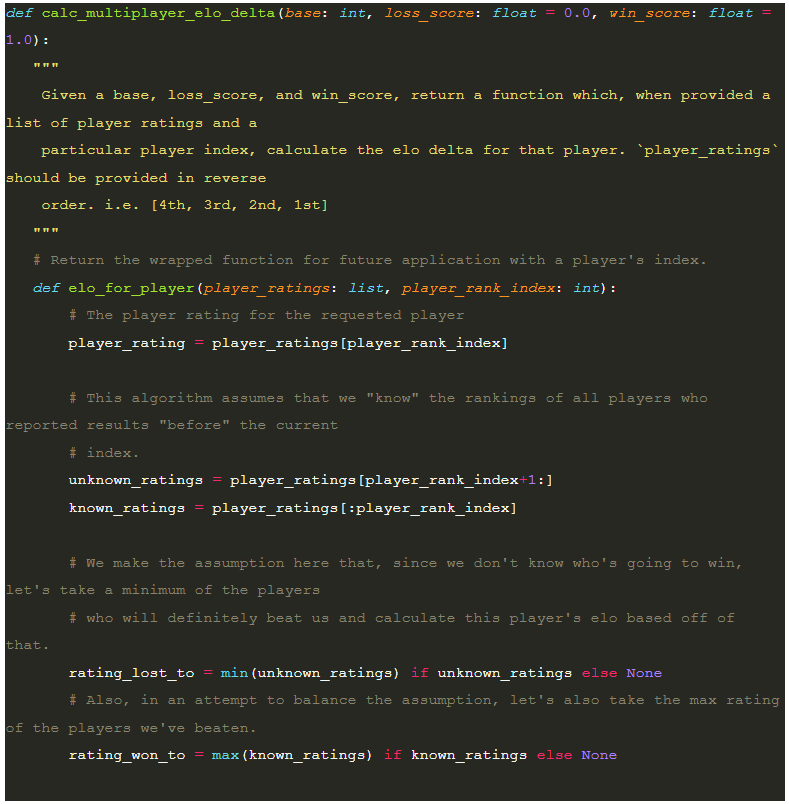
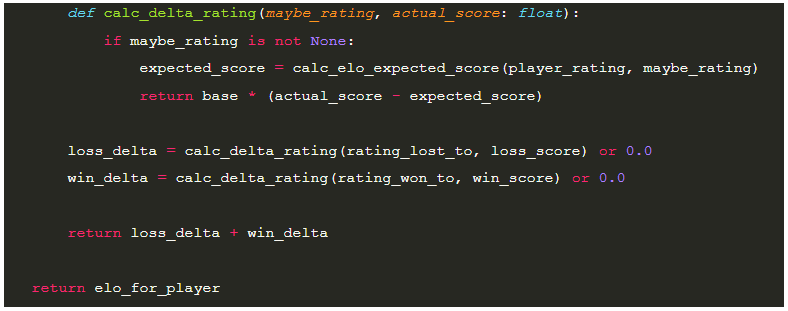
Ensuring the accuracy of the leaderboard algorithm
Now that we have this fancy function to calculate the Elo delta for players, and a general method for updating player ratings, how can we go about testing that the algorithm is working as expected? For that, I applied a very similar strategy to this post by Tom Kerrigan. The idea is that you generate a list of “true” ratings for players to simulate having a number of players at different skill levels. The purpose of these ratings is to use them as a seed to generate a simulated score with some amount of “reasonable” deviation.

I then created a list of “base” ratings which I default to the midpoint of the “true” ratings as the initial condition to run the simulation. This allows me to test if the algorithm’s updates to the ratings are increasing the predictive ability of the ratings to determine the outcome of any individual match. I, then, enumerate the list of 4 player combinations of players to run game simulations. The theory is, if I can use the “true” ratings as a reasonable predictor for the outcome of the games, then after some N simulations, the updated ratings should be similarly predictive.
Here’s that code.

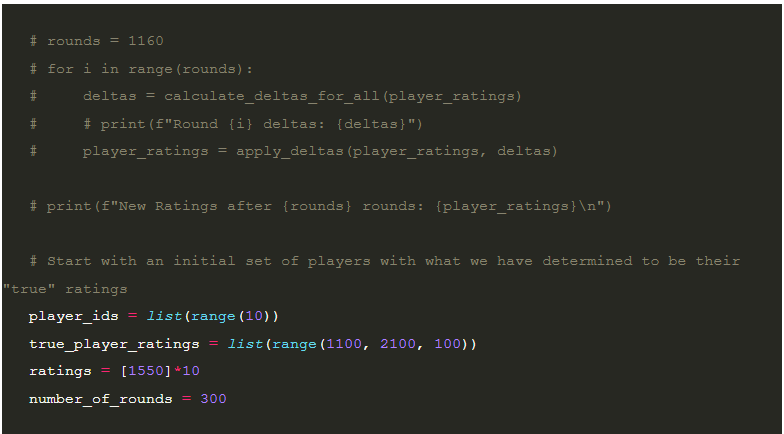
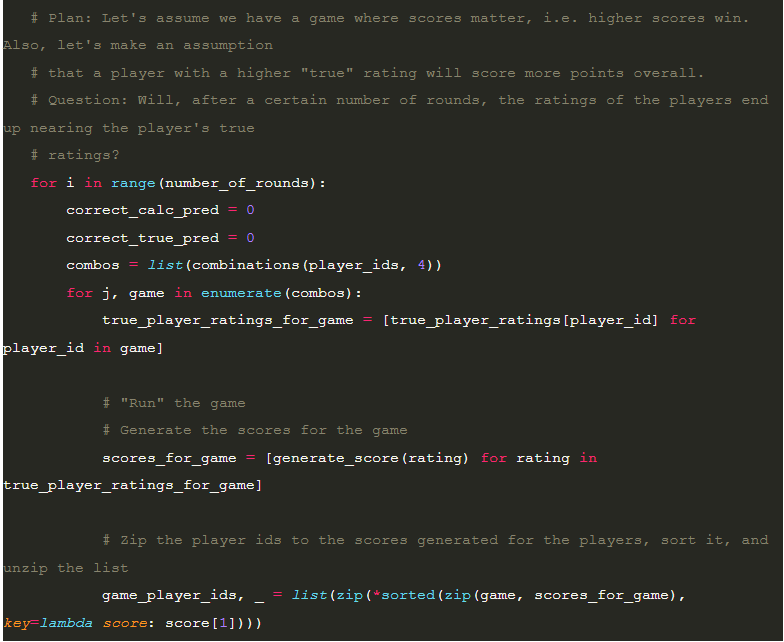
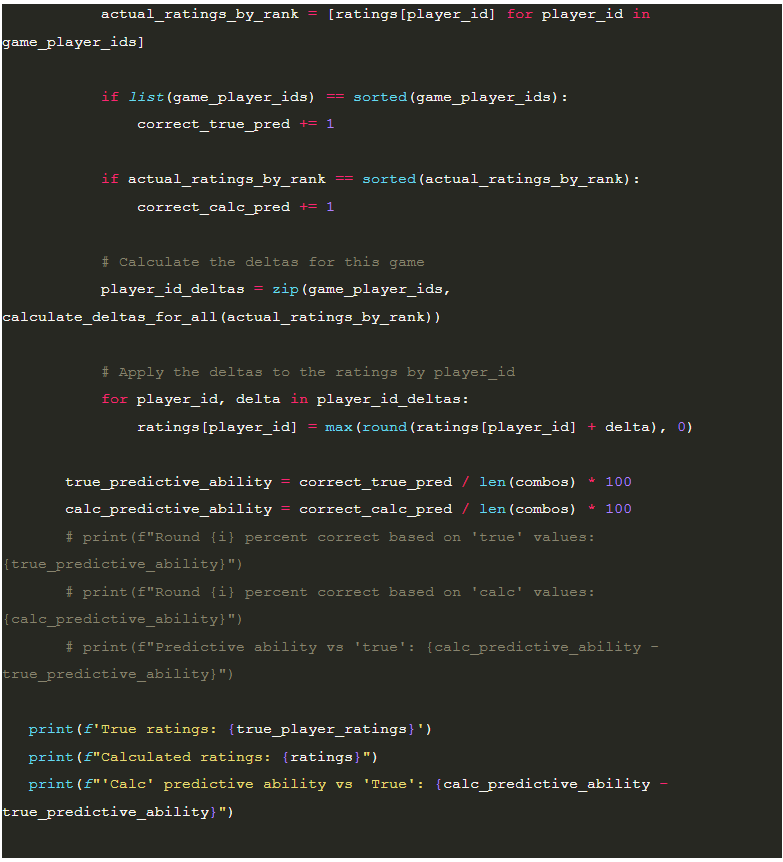
What’s interesting here is that if I run the code with a simulation size of 1 we end up with something around a 1% to 5% deficit in the ability to predict the outcome of any particular game.

However, when running the simulation 10 times we see that the deficit in predictive ability is all but reclaimed with the results being < .5% and often 0.

Now you may be asking yourself, but wait! Why are the calculated ratings for the lower players so much lower than their “true” ratings. The reason for that is mostly because the “true” ratings are merely just used to seed the scores being generated per game simulation. In this particular run, the “1100” ranked player actually had a string of rough luck and based on the way we’re generating the scores ends up doing more poorly in general. That said, the only thing we really care about, however, is whether or not a player who is generally “worse” is ranked lower than a player who is generally “better” and as you can see, this algorithm achieves that.
Last thing to note, if the deviation of the scores is greater, e.g. +-300 rather than +-200, we can observe that the scores are generally closer to where we’d expect them to be but the predictive ability is less accurate compared to the “true” ratings because the results of each individual match are more varied for the 2nd and 3rd spots.
I appreciate you making it this far and hope that you learned something. Please feel free to leave your comments and feedback!
In the next installment, we’ll be talking about how you can use Beamable to implement this in your own games!
Additional resources
Games
Scoring Algorithms

5 Great Tutorial Channels to Up Your Unity Game Making
There is a ton of content on YouTube to increase your game making skills when it comes to Unity3d. The team at Beamable has put together this short list of five (5) great channels you can investigate to learn all sorts of things about game development. These aren’t ranked in any specific order so give them all a look!
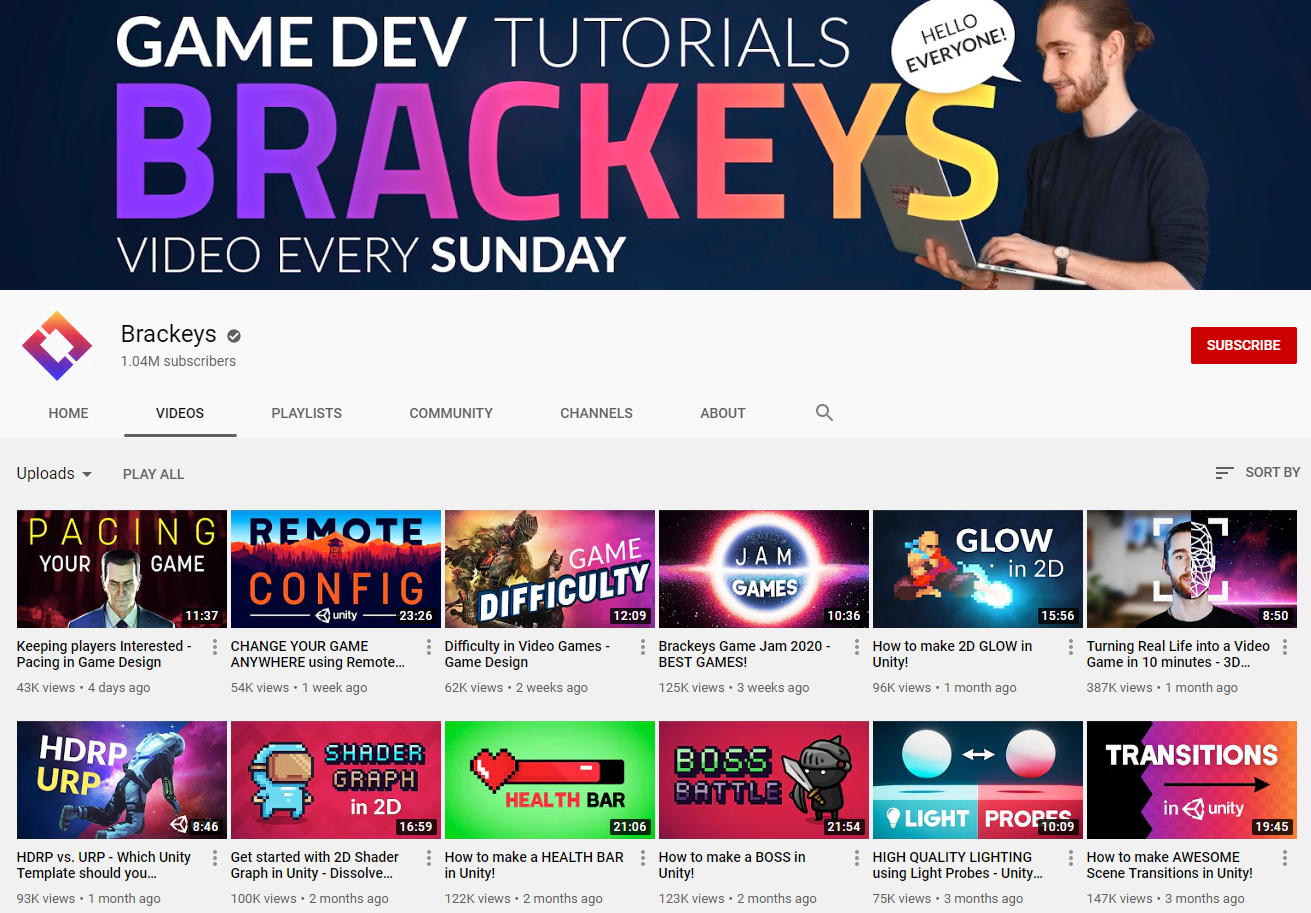
The whole purpose of the channel is to learn how to make video games! A tutorial is uploaded every Sunday. Check it out
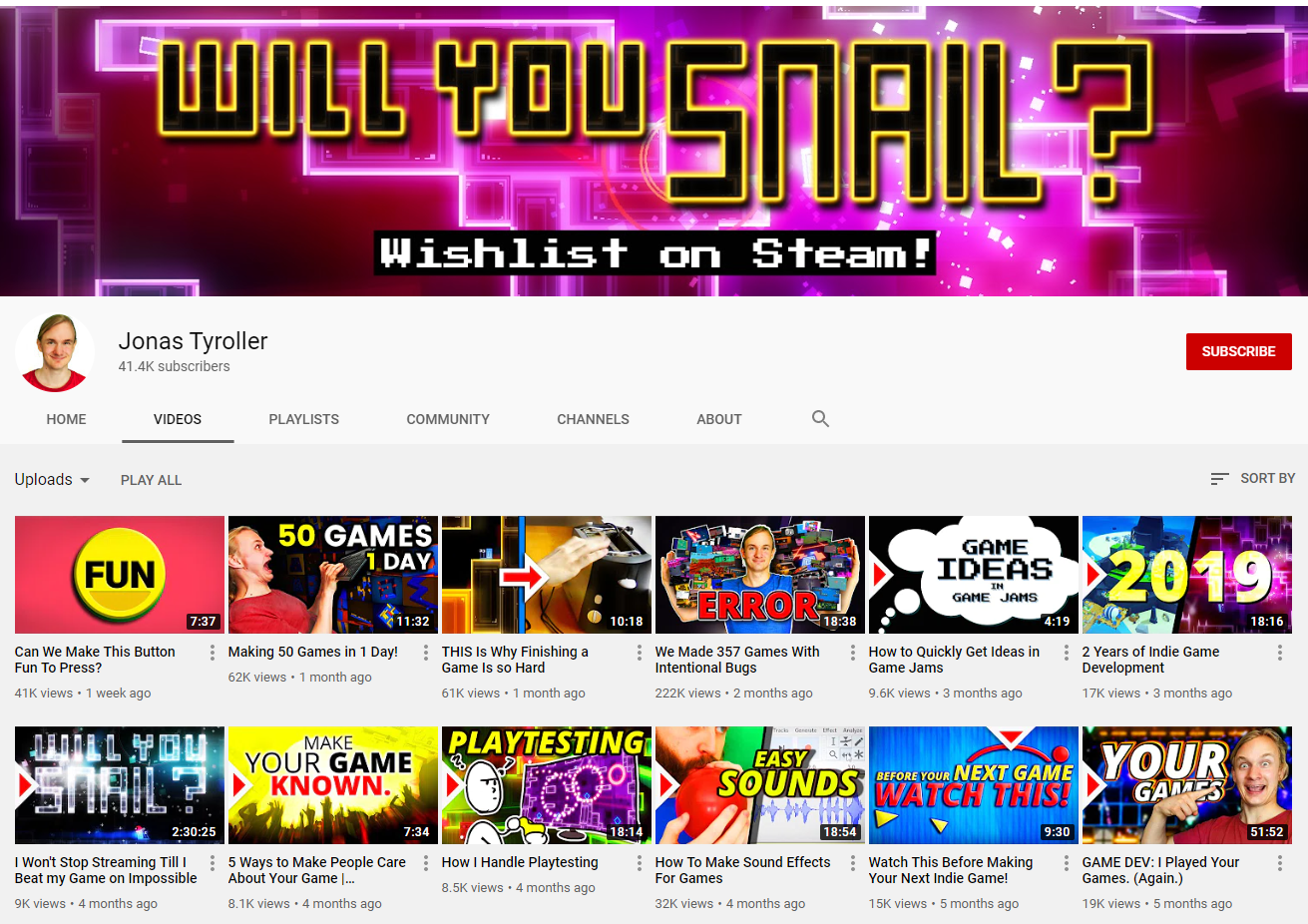
A collection of powerfully simple videos to get you started! Check it out

This channel provides a tour of some of the best Unity Asset store packs you can get to jump start your game dev process. Check it out
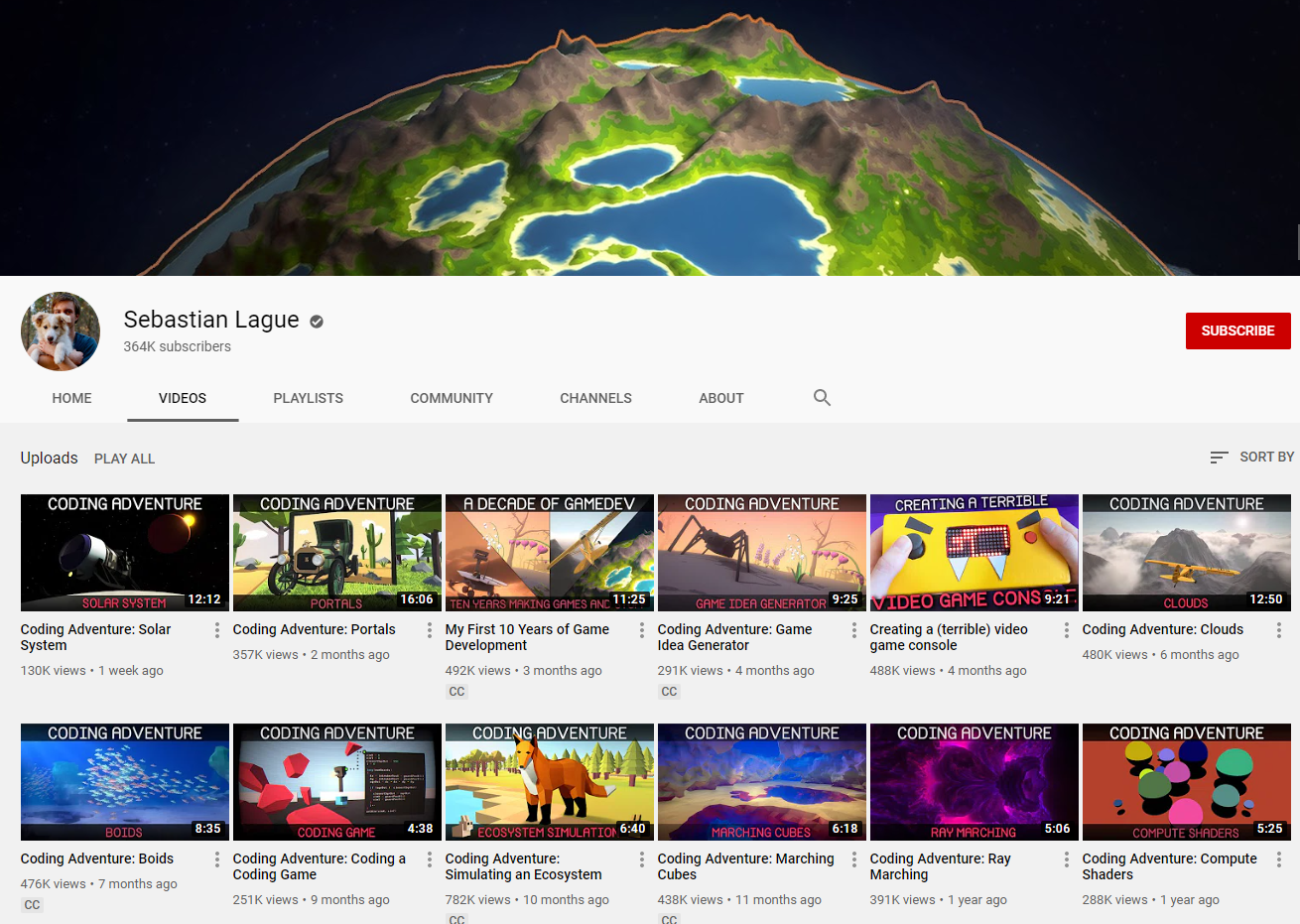
Records a variety of programming challenges and tutorials to help you broaden your game dev horizons. Check it out
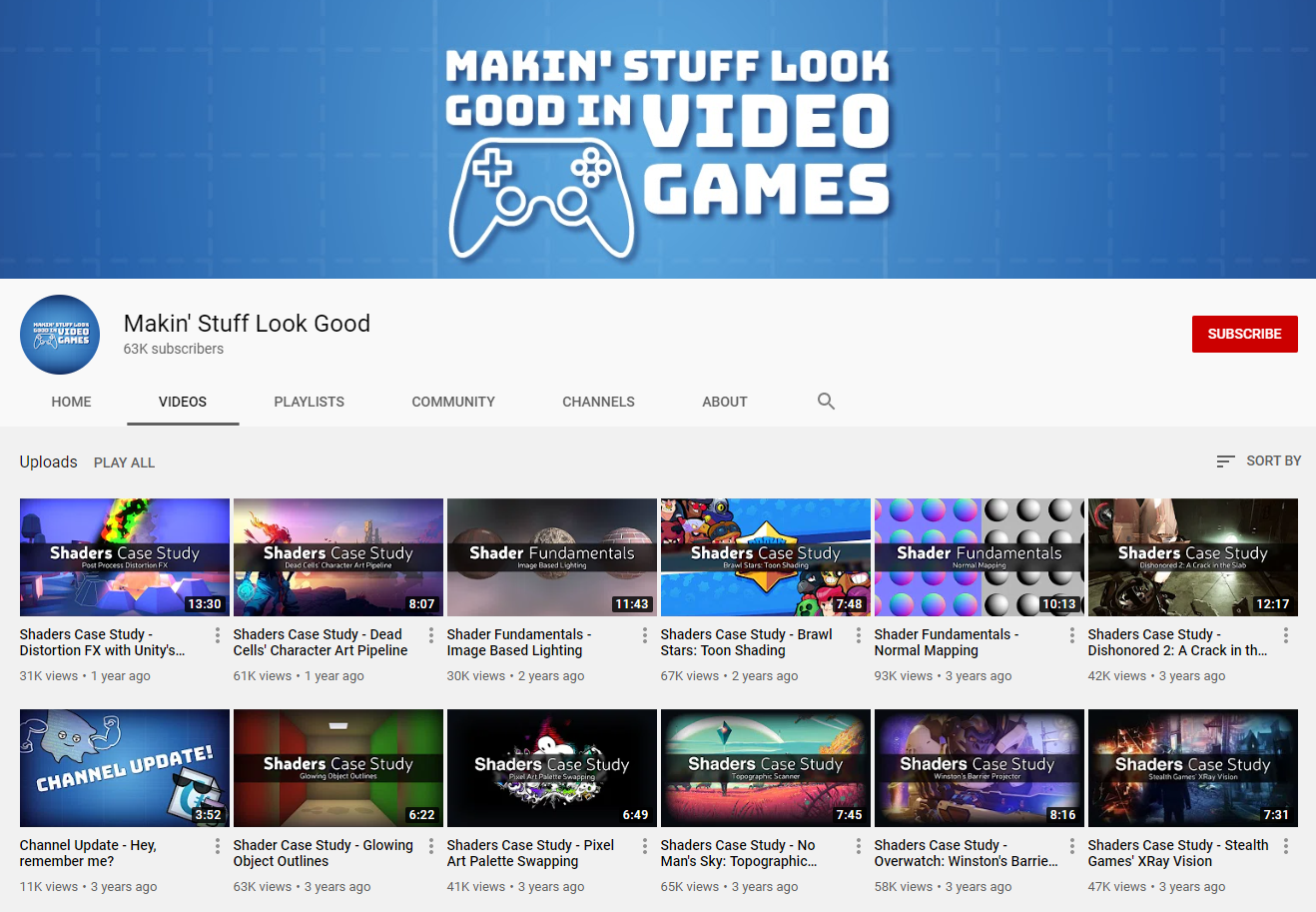
A more advanced look at shaders and how to get the most out of your game. Check it out
BONUS: The GDC Channel
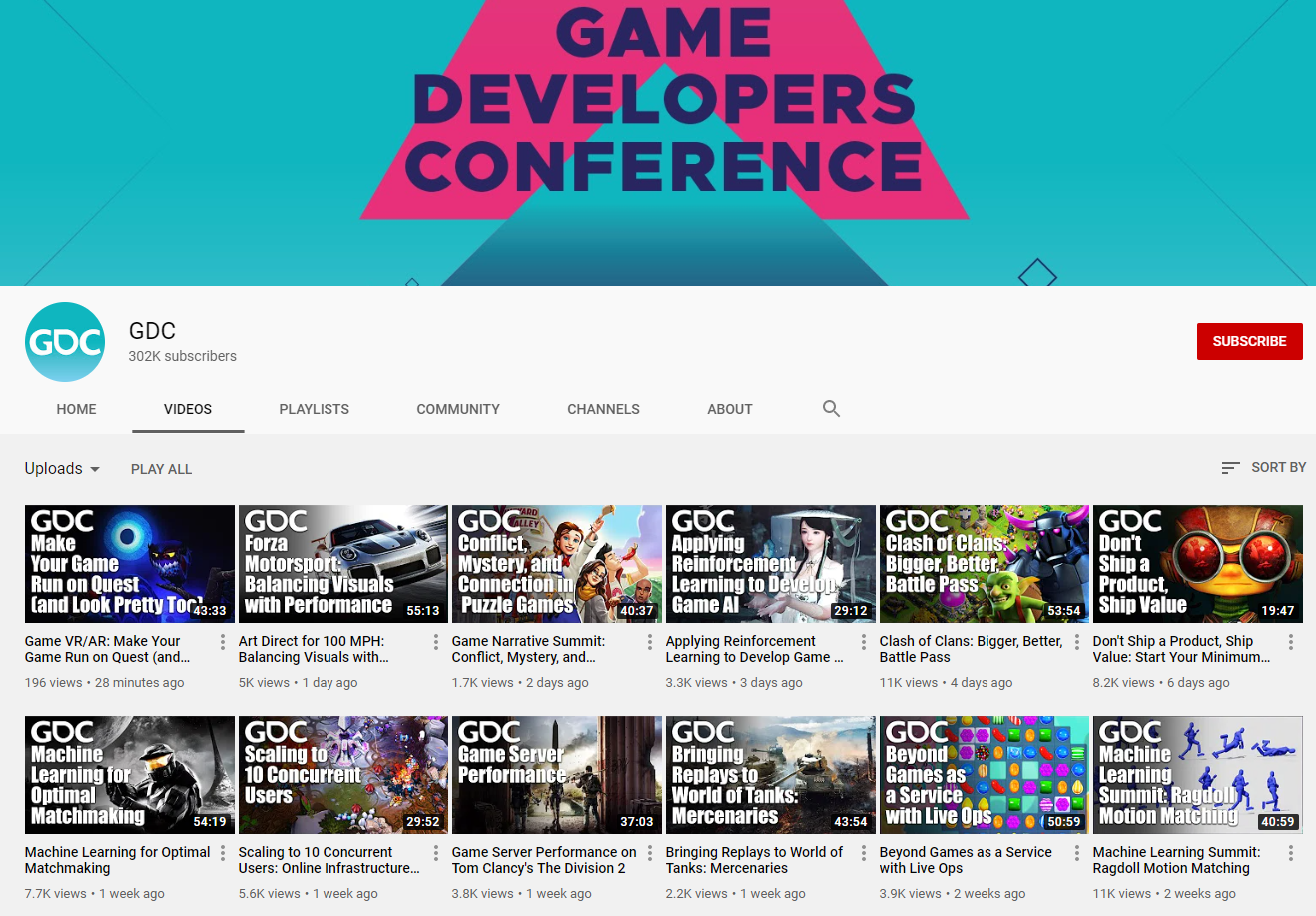
You should be following the Game Developers Conference channel by default because there is such a large collection of amazing talks. Check it out
There you have it! If you have suggestions for other channels, let us know!
Social media photo by Leon Bublitz on Unsplash

Monetize, Socialize, and Scale your Games with a Business Solution Built for Unity 3D
Beamable is a new business built upon Disruptor Beam technology that will ease the enabling of sophisticated commerce and social features for millions of game-makers around the world.
FRAMINGHAM, MA – April 21, 2020 – One of the greatest challenges faced by game-makers is balancing precious resources: it is the tension between creating what they and their players love, and the need to include complex business functionality. Launching today, Beamable is a new enterprise that enables game-makers to turn their products into scalable, sustainable businesses by incorporating best-of-class commerce and social functionality.
“Our team has a background creating games for millions of people that are known for their deep social ties and strong unit economics,” said Jon Radoff, CEO of Beamable. “Our passion is helping the game-making community benefit from what we’ve learned and built.”
Beamable consists of two main components:
- A cloud-based service architecture (SaaS) that enables in-game storefronts, merchandising, content management, and rich social interactions for players—built to scale to as large a population of players as needed.
- A front-end technology that bridges the gap between the backend services, the Unity 3D editor environment, and the live game experience—to make it easier to create, maintain and deliver sustainable games.
“Other products we’ve investigated are just middleware,” said Markus Weichselbaum, CEO of Tap Slots. “Beamable is fully-integrated with Unity, including user interfaces that work in both the Unity 3D editor and game clients. This saves us massive amounts of time we’d otherwise spend in the guts of the technology and rediscovering best practices, instead of doing what we need to do: designing great games.”
According to market research firm Newzoo, the game industry will approach $200 billion in revenue by 2022. Although games continue to thrive amidst the global crisis of 2020, game studios frequently struggle to meet the demands of their players while also investing in business systems that can support their growth. “Investors are currently looking for bright spots in a troubled economy,” said Tim Wright, general partner at GrandBanks Capital. “Games are going to do well no matter what the conditions, but the process of developing them has always suffered from costly reinvention. We see parallels between what Beamable has set out to accomplish in gaming, and what Shopify has done to transform e-commerce.”
Beamable is currently available via an “Early Access” program, and open to games that are live, or plan to launch in the next 12 months. Sign up at beamable.com.

Disruptor Beam is now Beamable

Disruptor Beam had a long history turning the world’s greatest entertainment brands into hugely successful games loved by highly connected customers. Since 2011, we have published three critically acclaimed titles — GAME OF THRONES ASCENT, STAR TREK TIMELINES, and THE WALKING DEAD: MARCH TO WAR. During that journey, we learned what works and doesn’t work in game development.
We realized we could have a larger impact helping game makers than making our own games if we brought this tech out into the world. To that end, we are building Beamable to help game makers ship faster, and earn a living with their games.
If you are a game maker working in Unity, learn how the Beamable SDK can accelerate your game development and commercial success!

Beamable runs on PubNub
We are excited to announce another important technology partnership at Beamble: PubNub!
We’ve been working with them for a long time and know the technology inside and out after launching, Star Trek Timelines and The Walking Dead: March to War at full scale with PubNub.
Over the years we helped them create the Unity SDK for PubNub and continue to iterate with them closely on critical infrastructure and live operations components that power Beamable’s server-to-client messaging and chat functionality.
It’s been a great relationship with them actively engaged in our success by making regular suggestions on cost-efficiency optimizations. We are excited to continue partnering with them as Beamable grows!
In case you missed it, we also did a joint webinar with them on How Community Features Drive Player Engagement. Check it out!

We welcome Zelgor to the Disruptor Engine Family!
Zelgor Announces Development of New Game: Noobs in Space; Partnership With Disruptor Beam
BOSTON, MA, Feb. 19, 2020 (GLOBE NEWSWIRE) — via NEWMEDIAWIRE — Zelgor Inc announced today the expansion of the Noobs Universe with their newest game in development: Noobs in Space. A hyper-casual game, Noobs in Space will be the world’s first introduction to the Noobs, a race of fun-loving, ambitious, and rambunctious aliens exploring the Universe in search of a new place to live. Players receive orders directly from their genius leader, Major Noob, as they fly around space exploring new planets and collecting new Noobs for their squad. In order to bring Noobs in Space to life, Zelgor Inc is partnering with Disruptor Beam. Based in Framingham, MA, Disruptor Beam is best known for working with major media franchises such as Game of Thrones and Star Trek, in order to make highly successful games. The Noobs will utilize the company’s Disruptor Engine, a platform consisting of UI tools, services, and best practices that will enable the Noobs to compete in an increasingly demanding and evolving Universe. Disruptor Engine will enable the Noobs to speed up production in a quality fashion that scales efficiently.
“We are thrilled to be working with Disruptor Beam, which has built an abundance of institutional knowledge around the development and live operations of free-to-play games,” said John Fanning, CEO of Zelgor Inc. “This is a major step forward for us, and access to Disruptor Engine will enable the Noobs to expand their operations across the Universe.”
“Zelgor is building an exciting portfolio of games, and we are delighted to be working with them on the launch of their latest mobile offering, Noobs in Space,” said Trapper Markelz Chief Product Officer of Disruptor Beam. “Together we will propel Zelgor to the next level.”
About Zelgor Zelgor is building mobile games that enable Noobs to control the Universe! Whether it’s utilizing cutting edge location technology, or building simple and sleek hyper-casual games, Zelgor aims to build an entire galaxy of interconnected games and content. To learn more about Zelgor, visit www.zelgor.com
